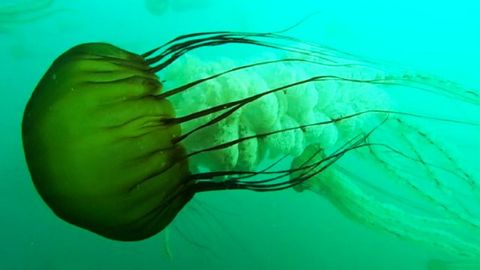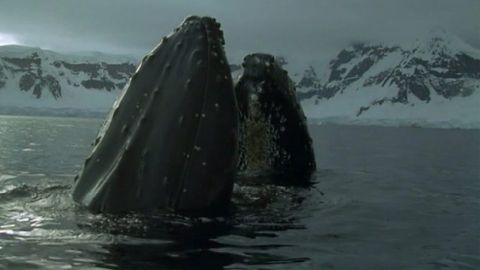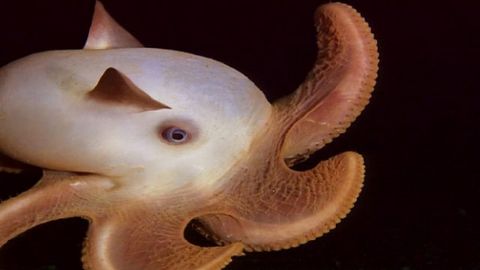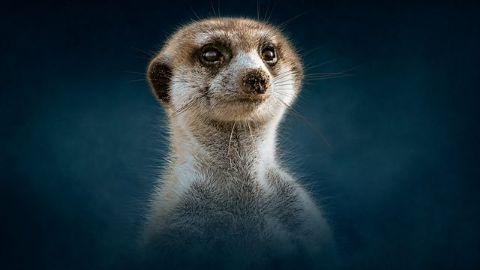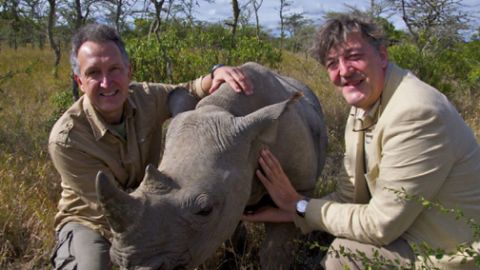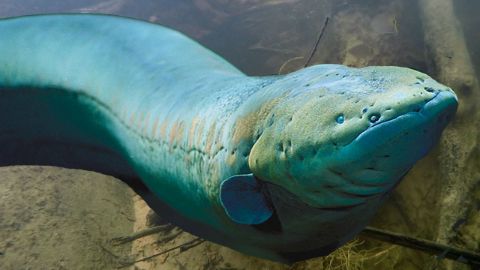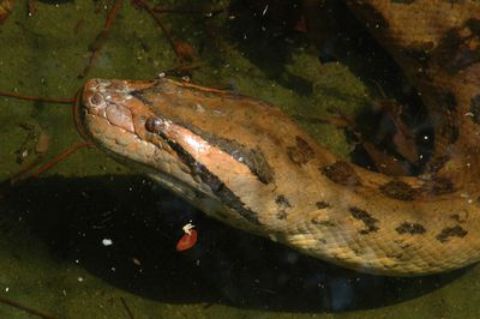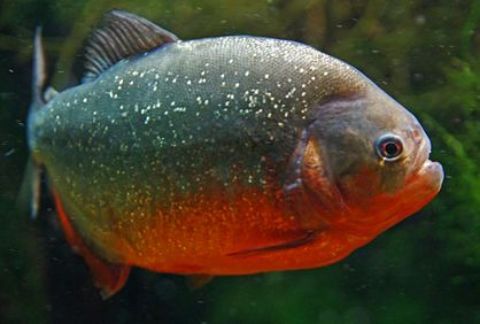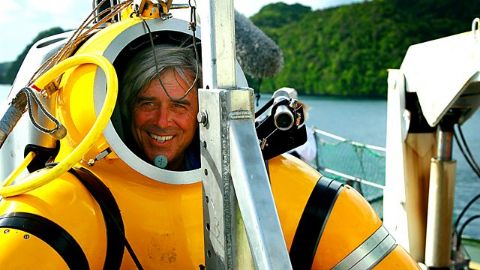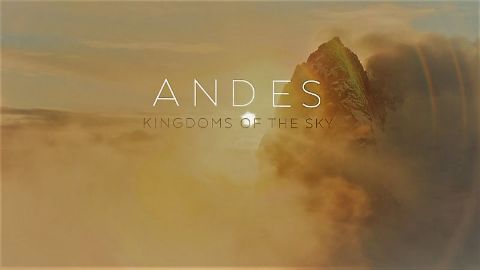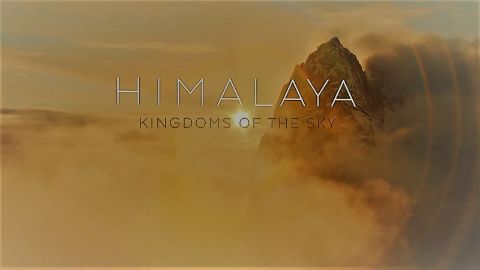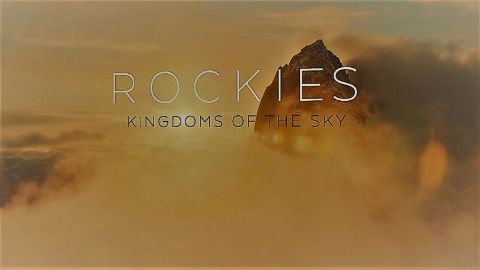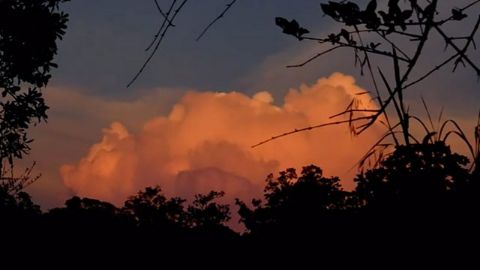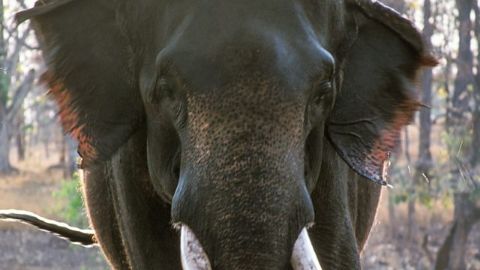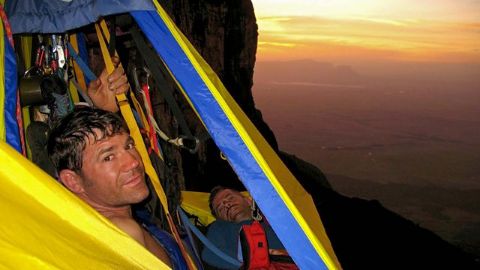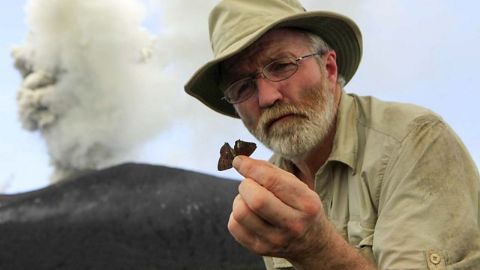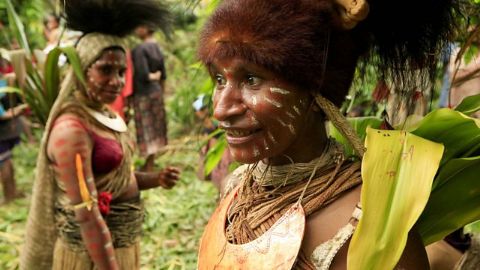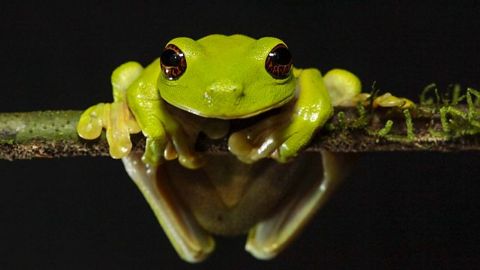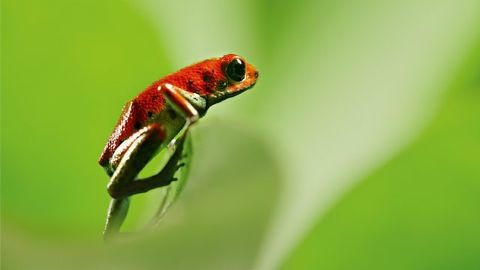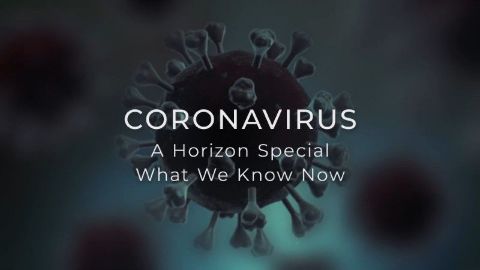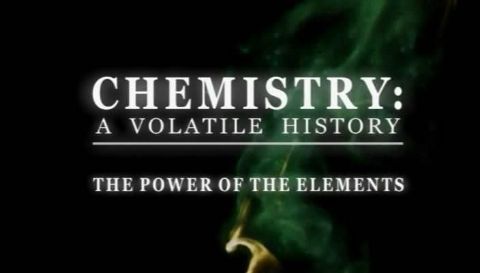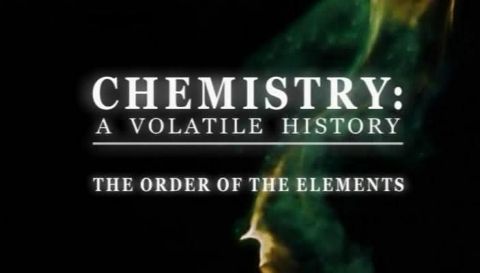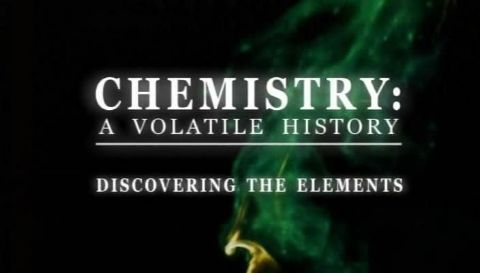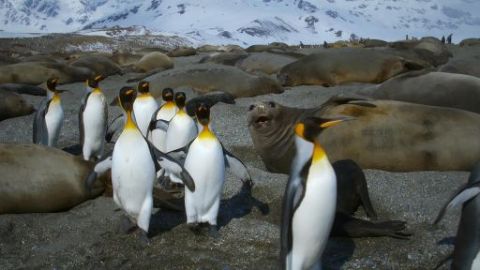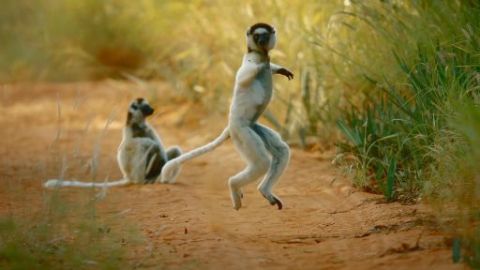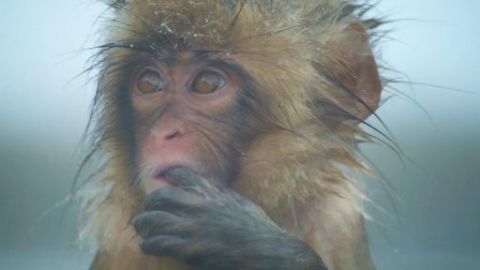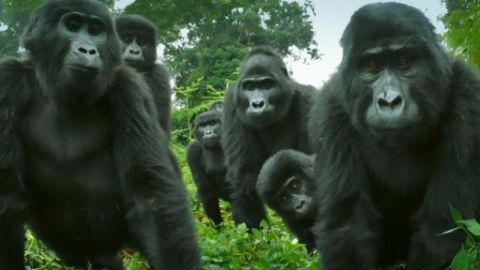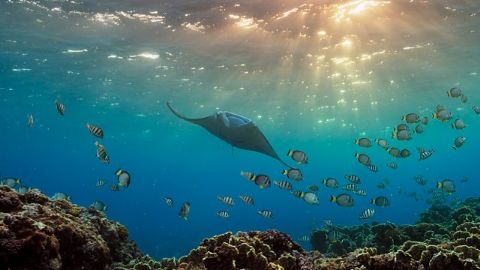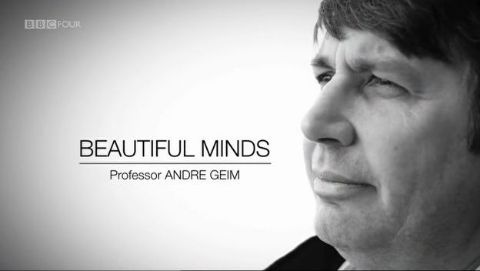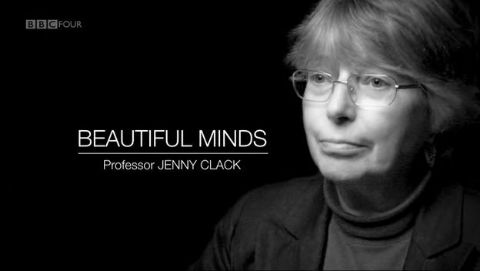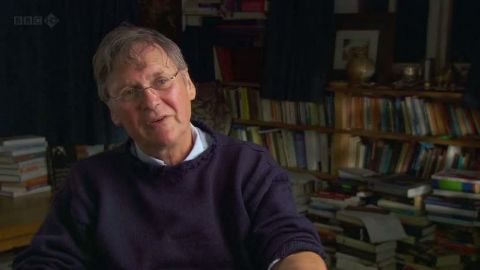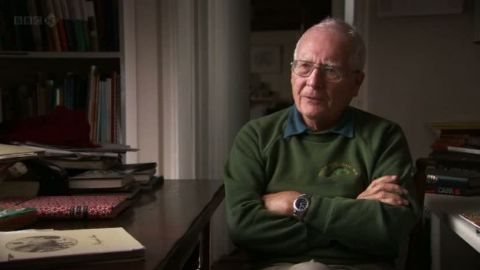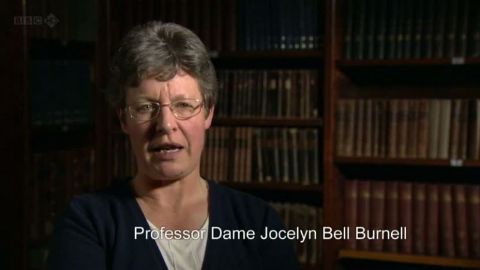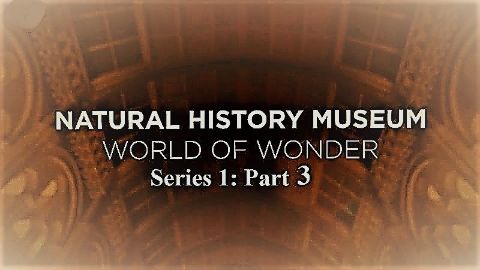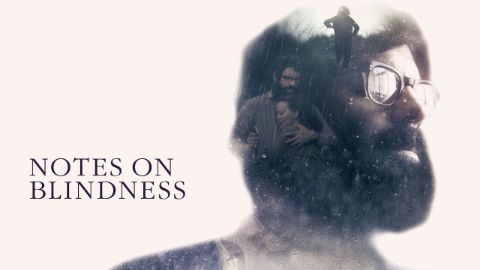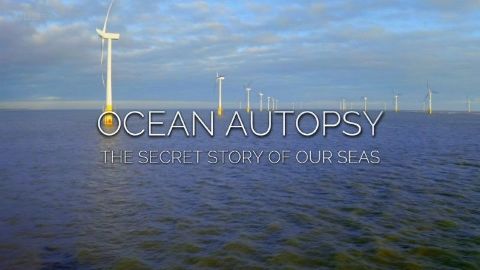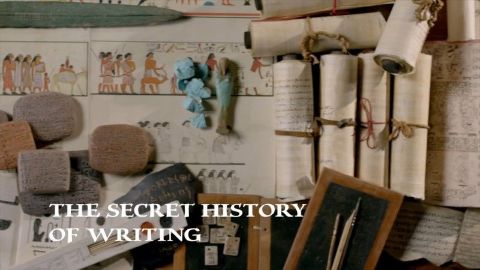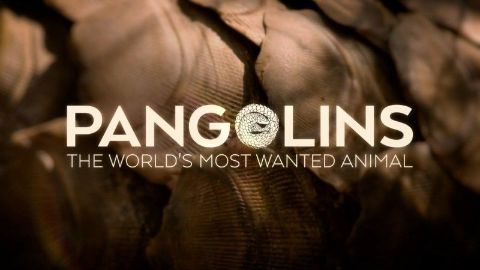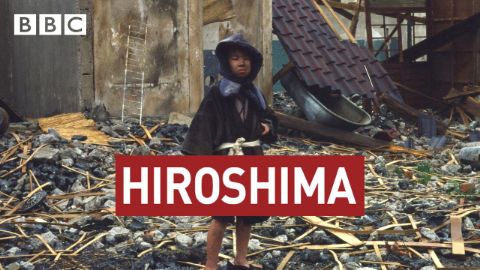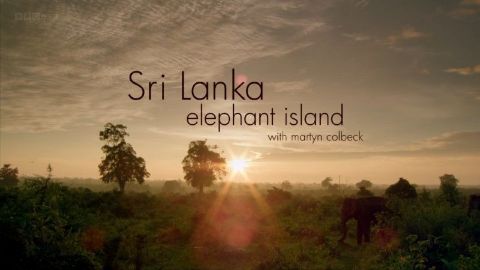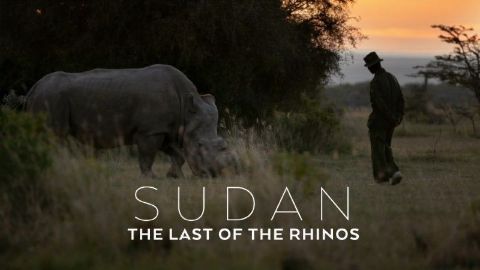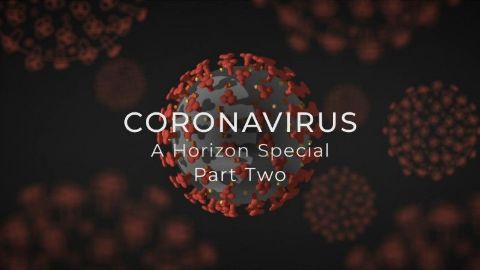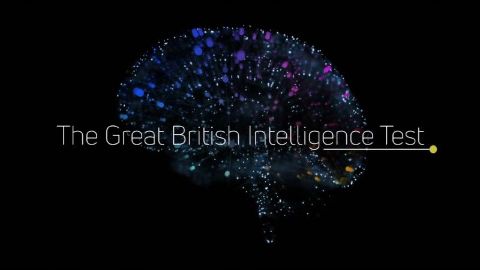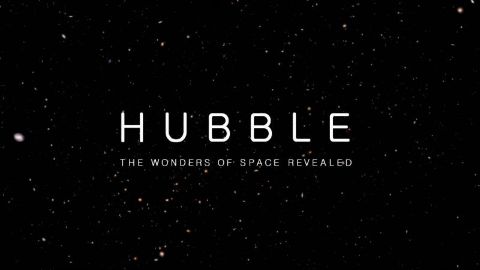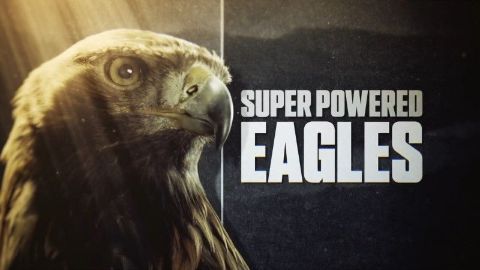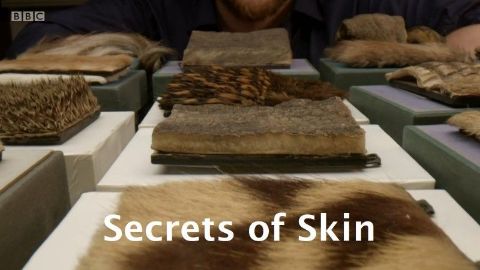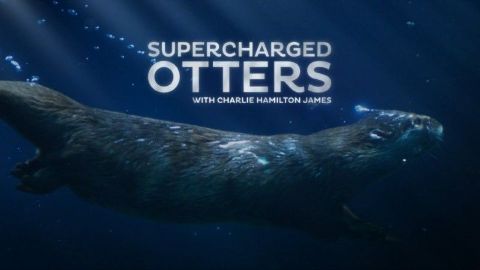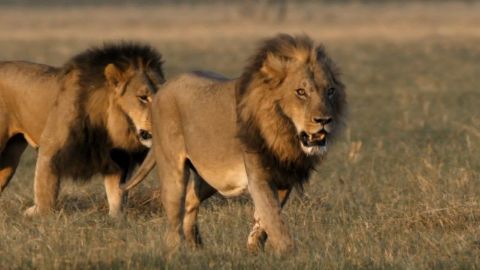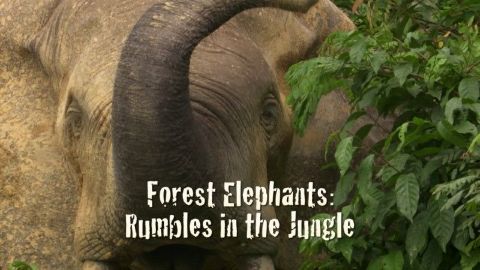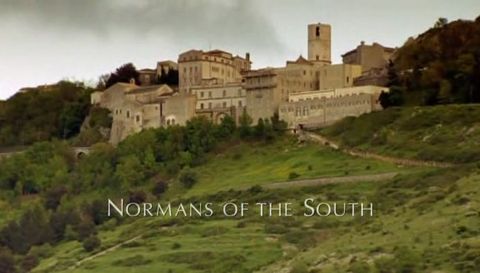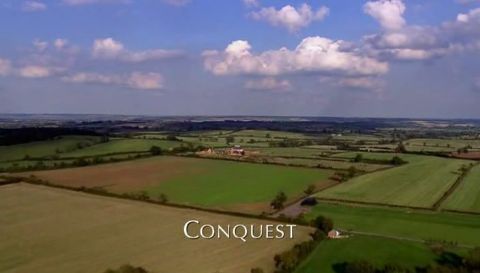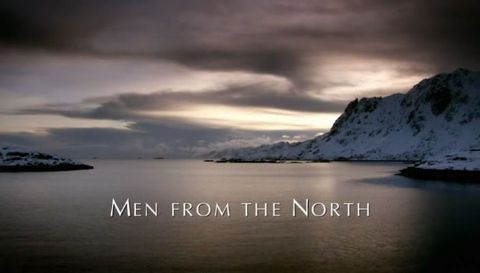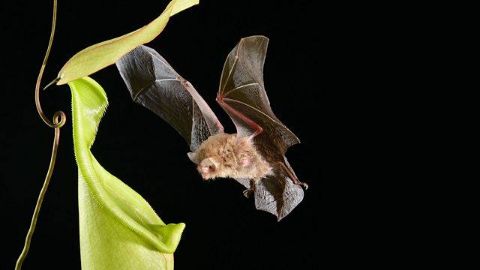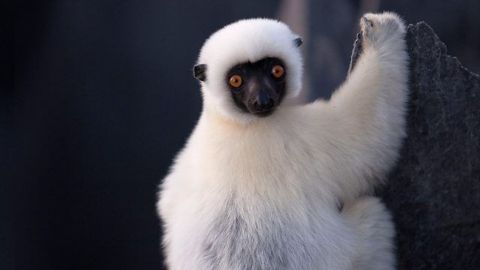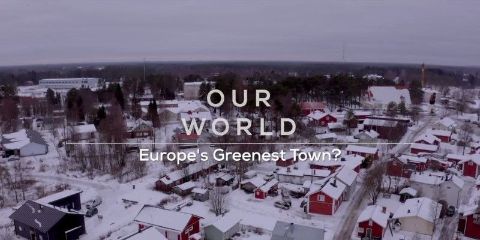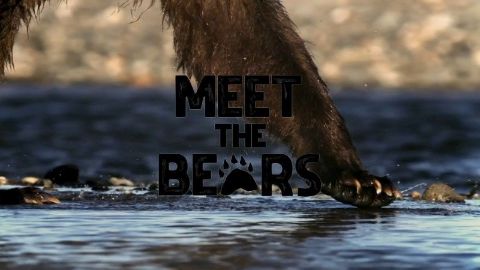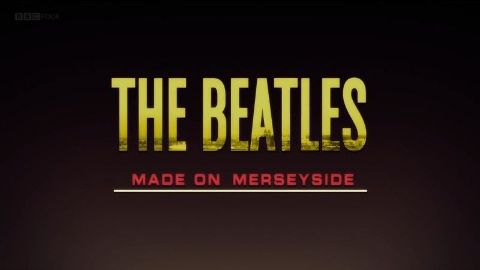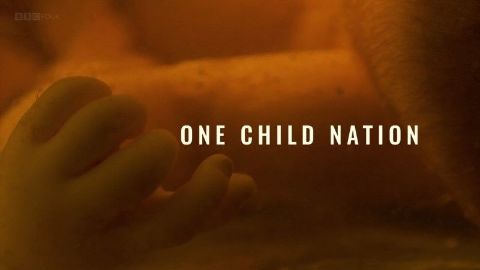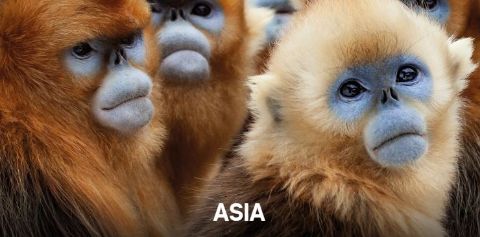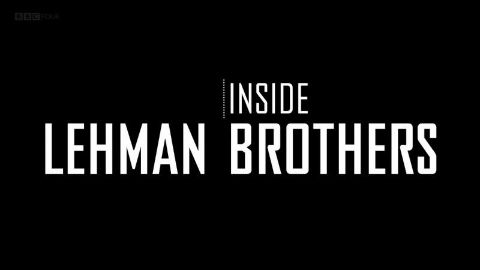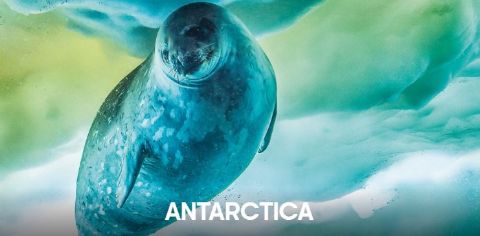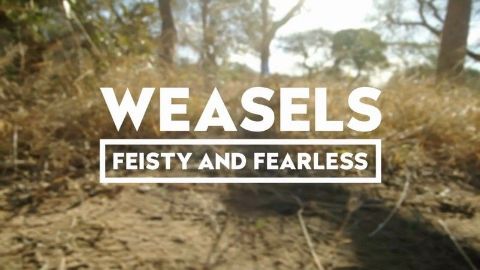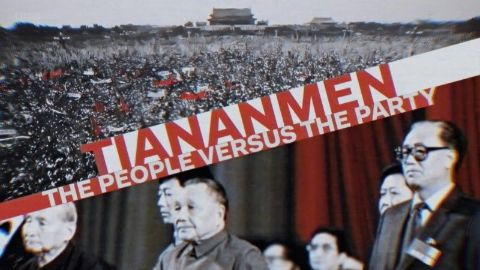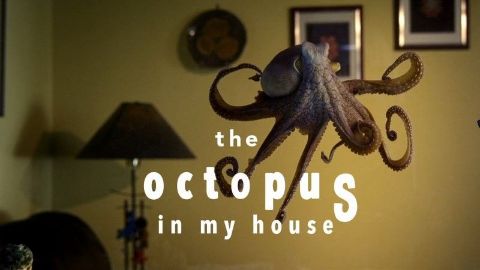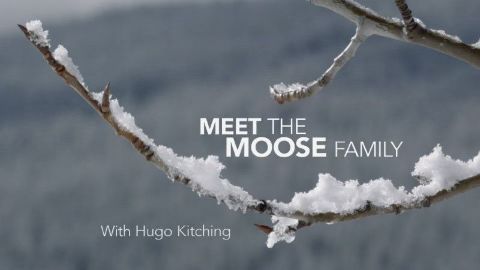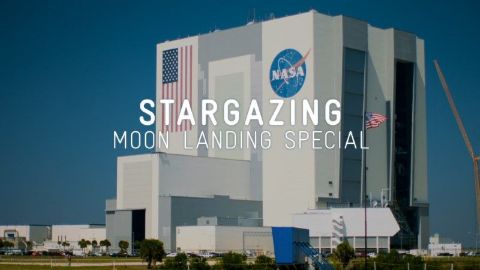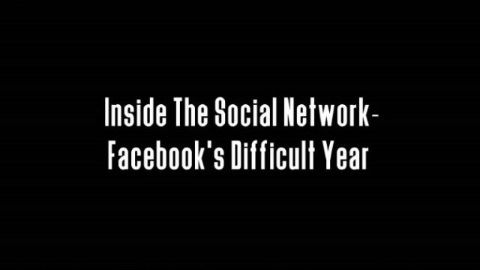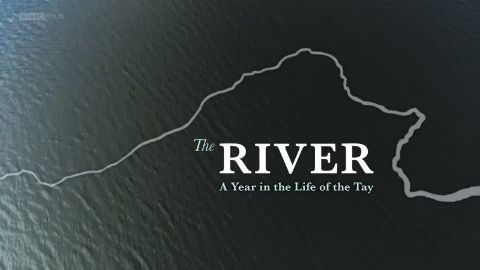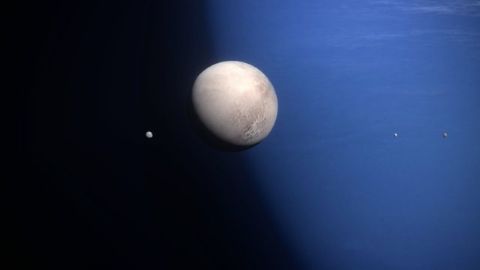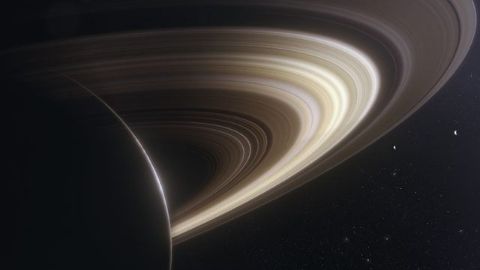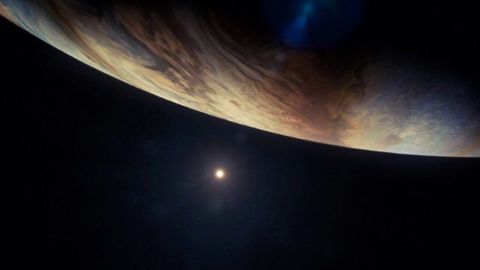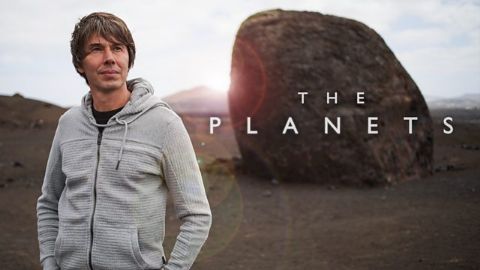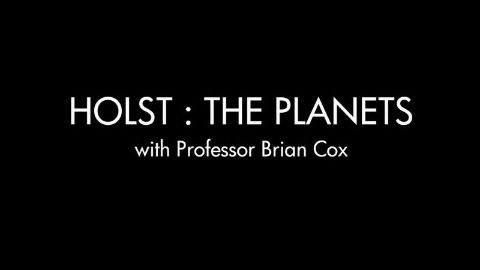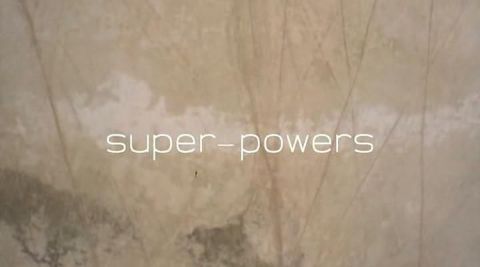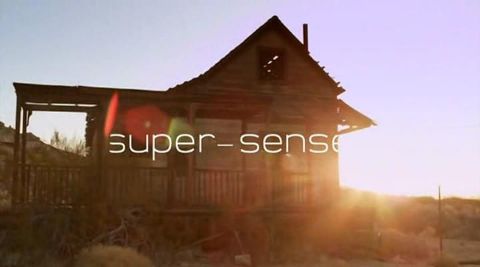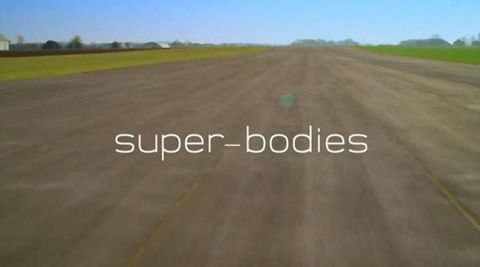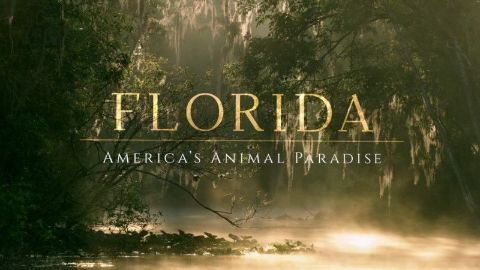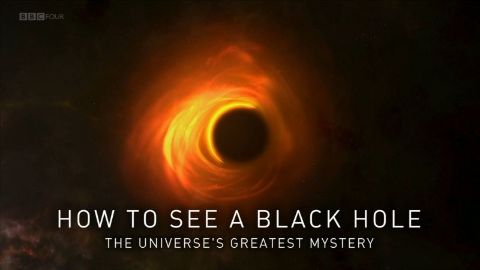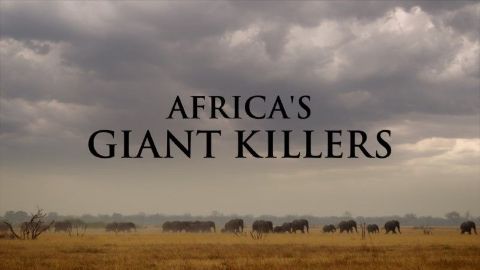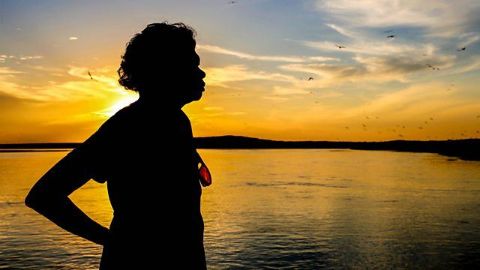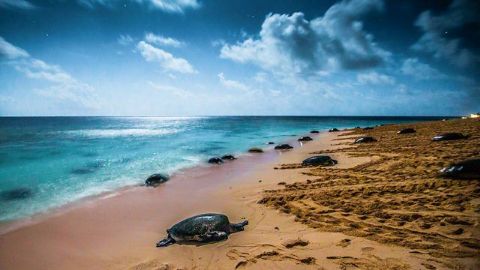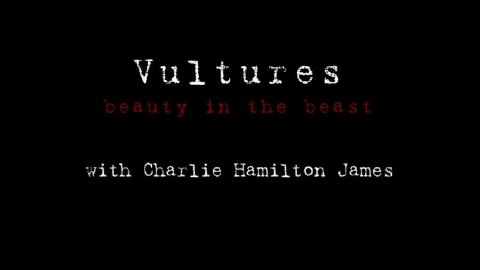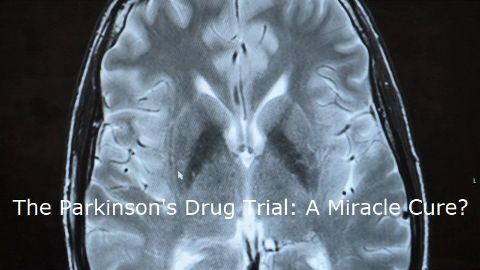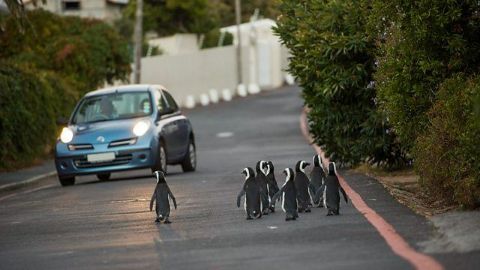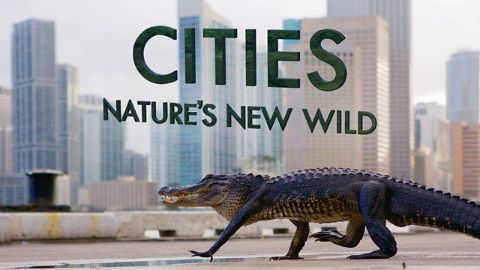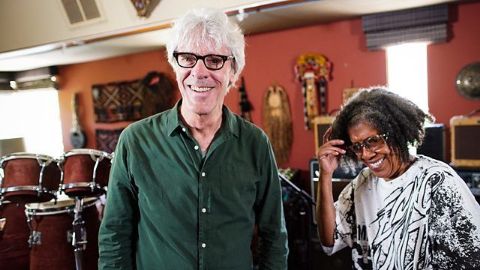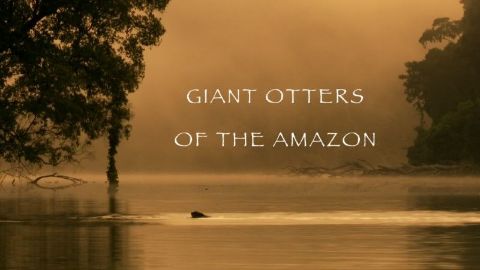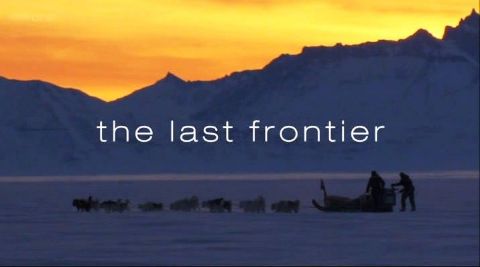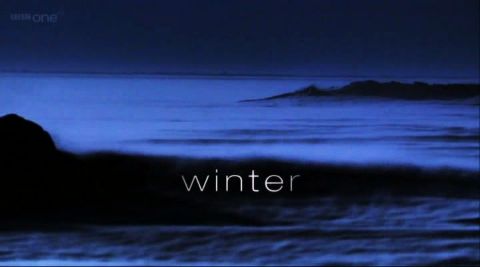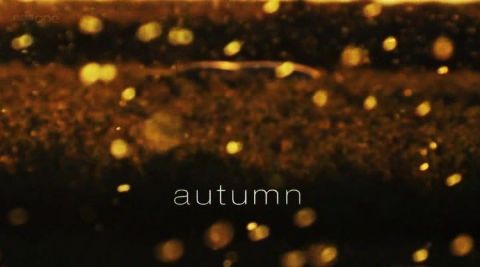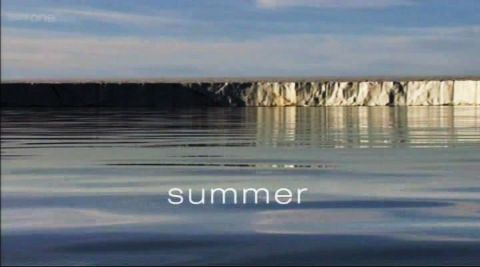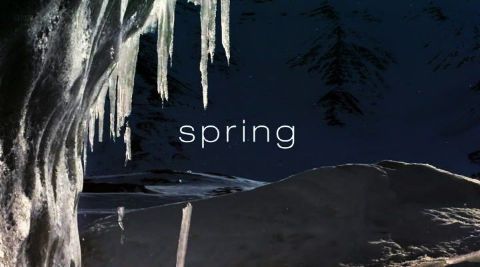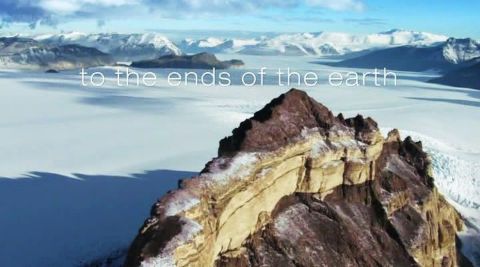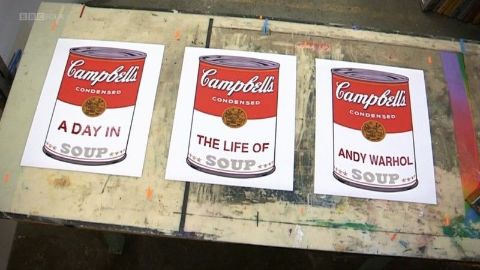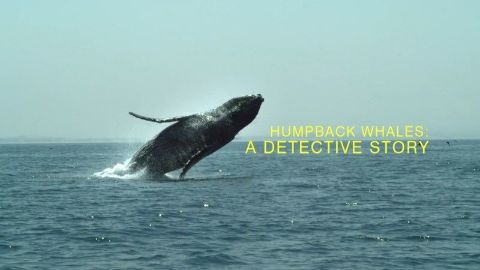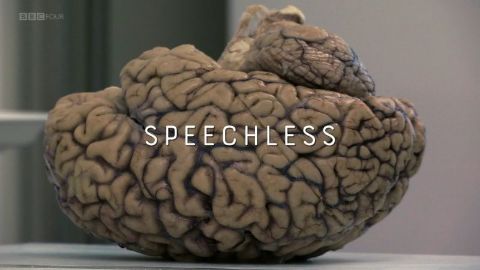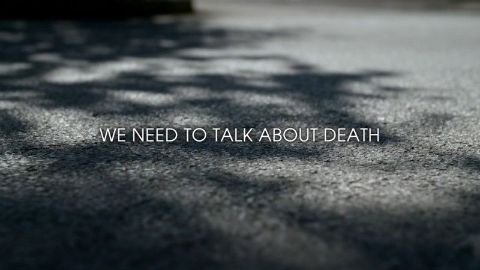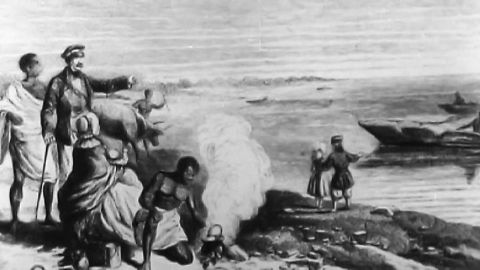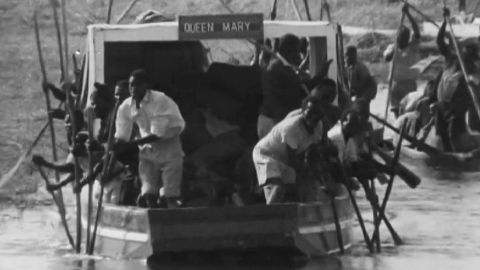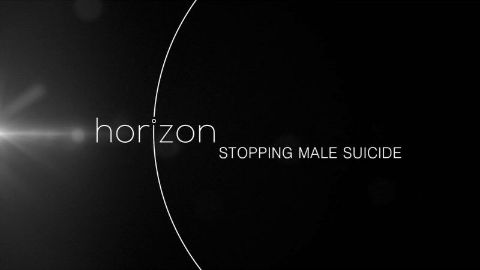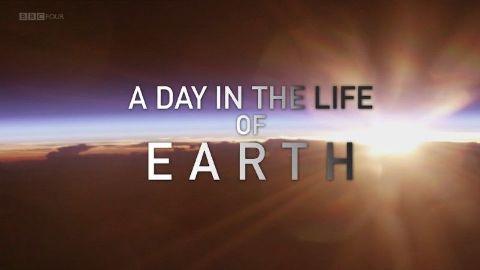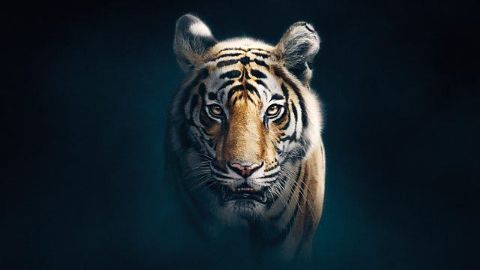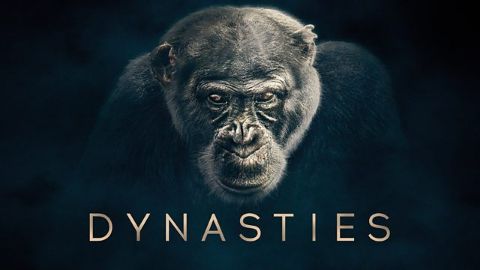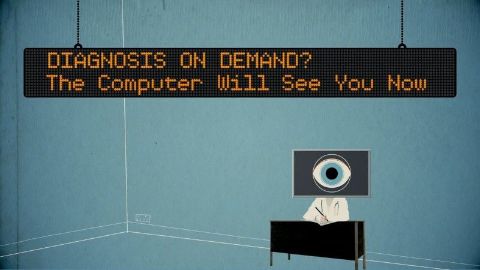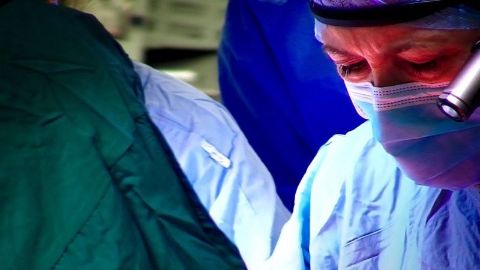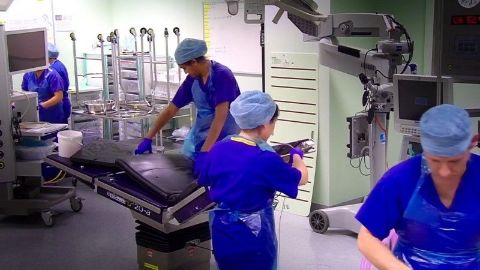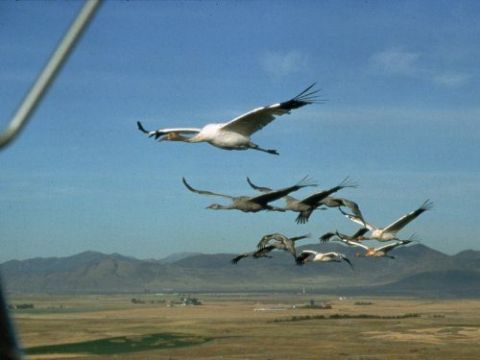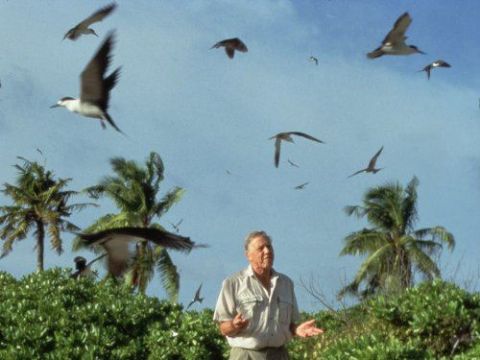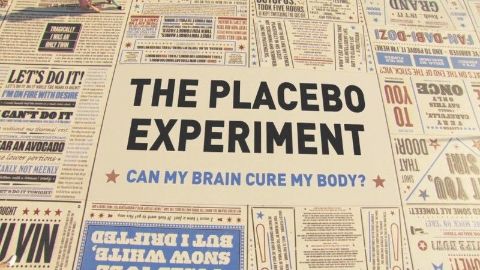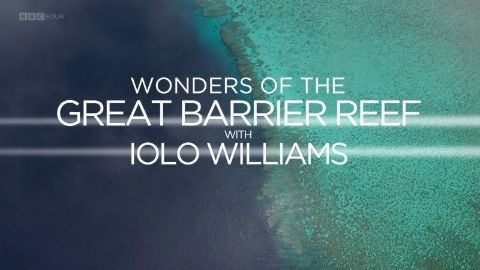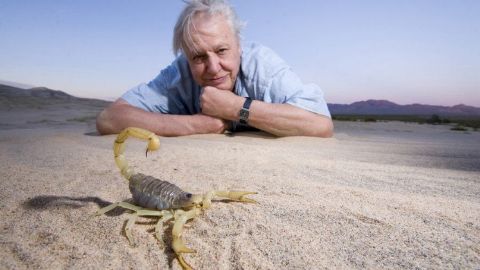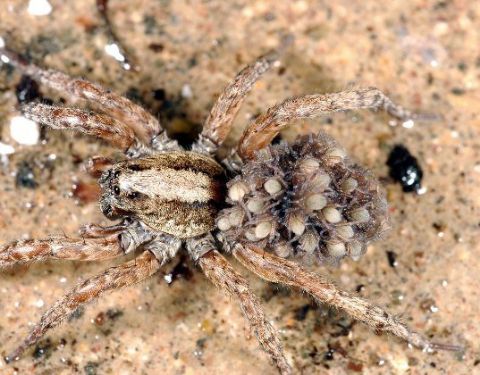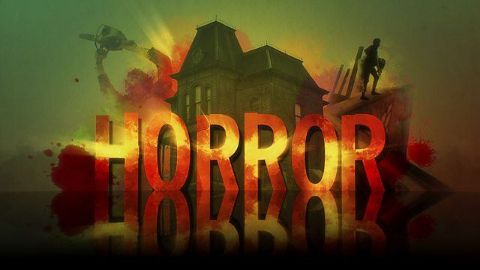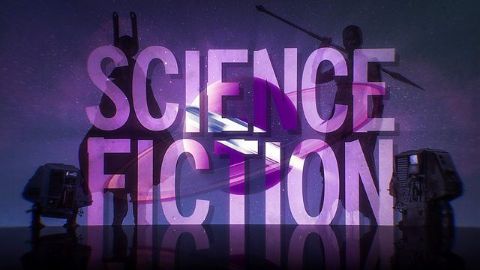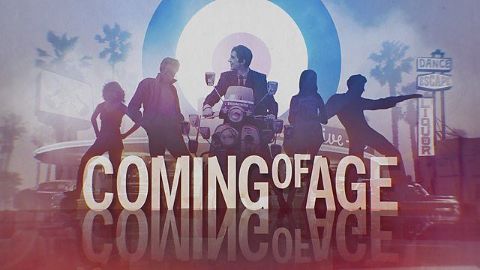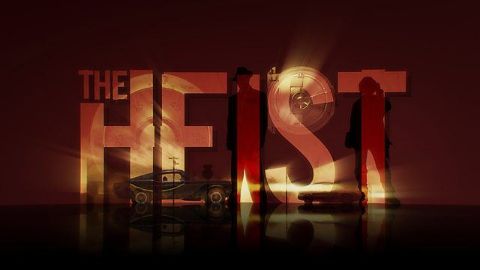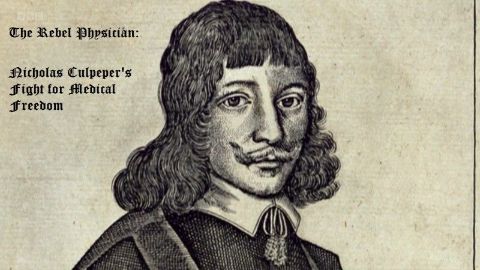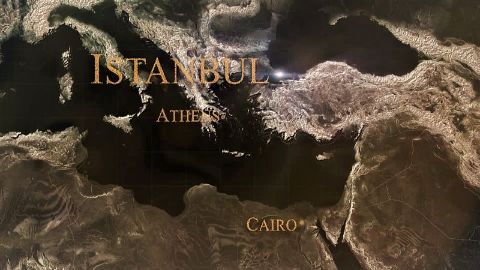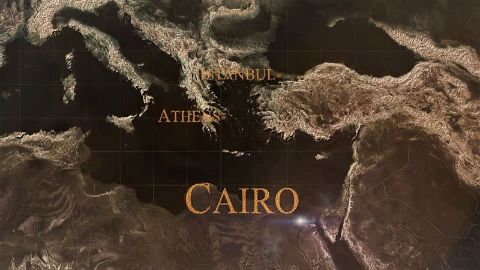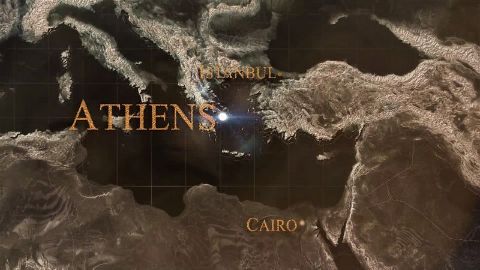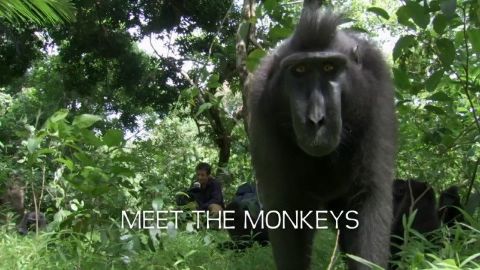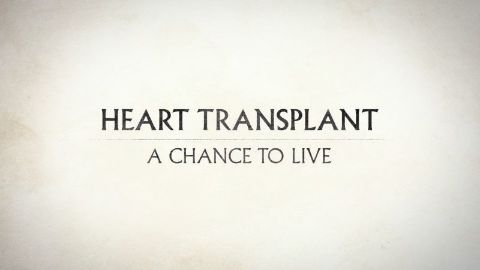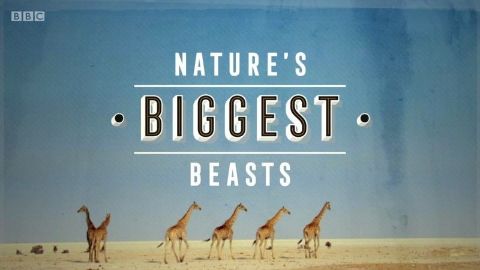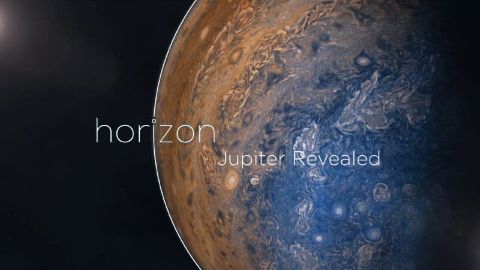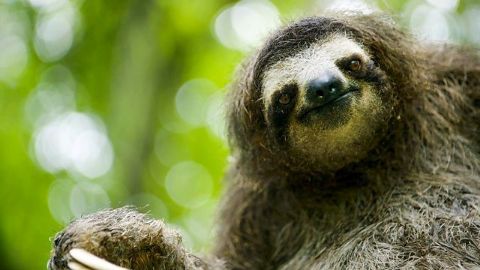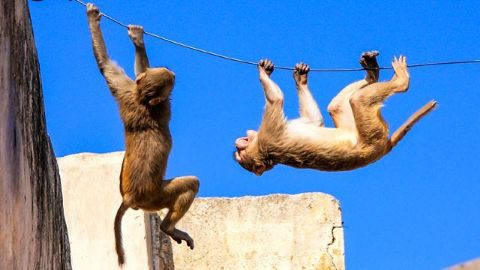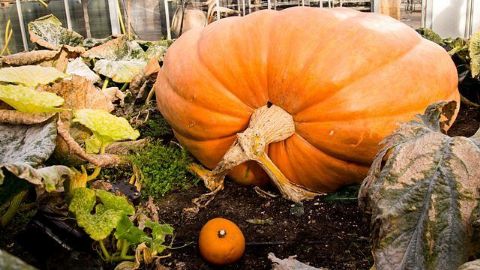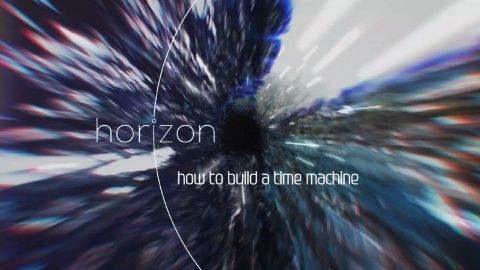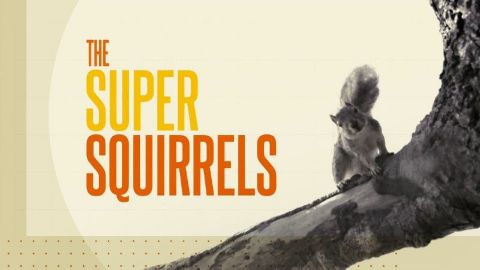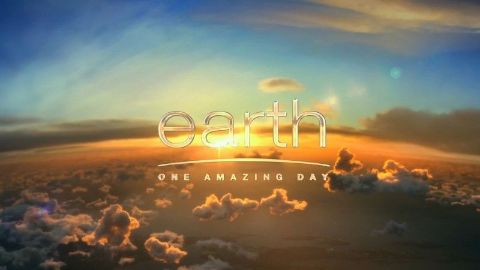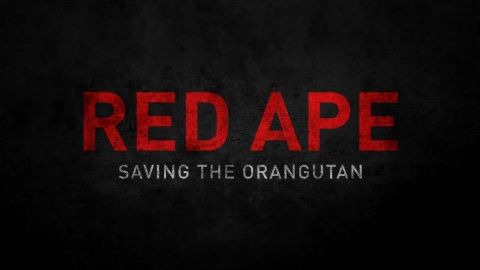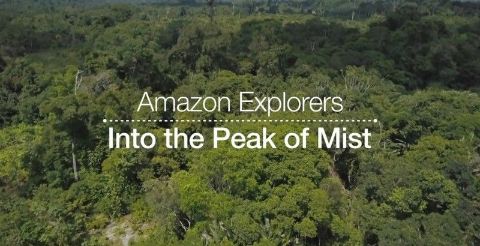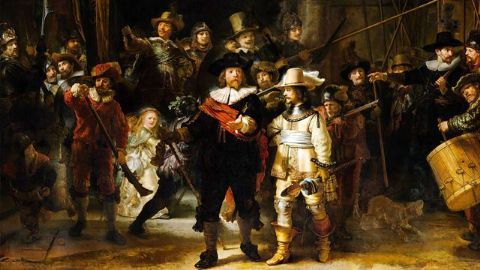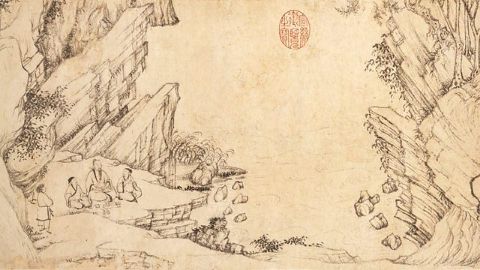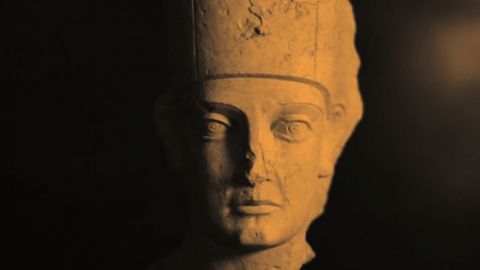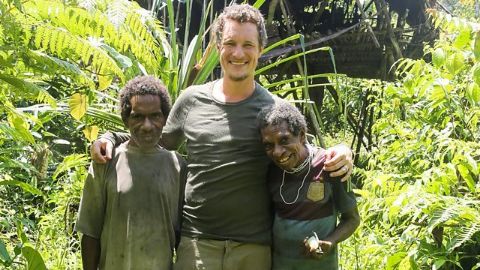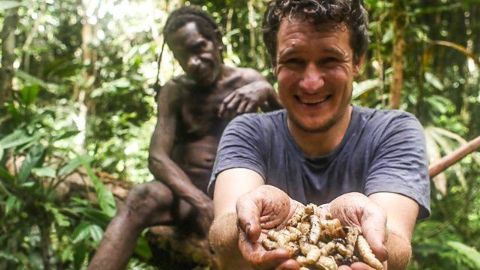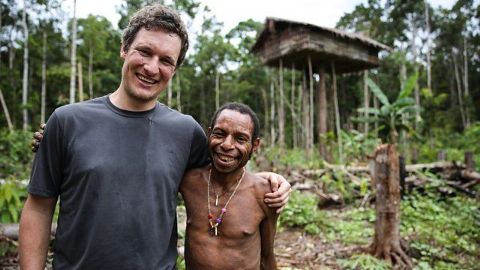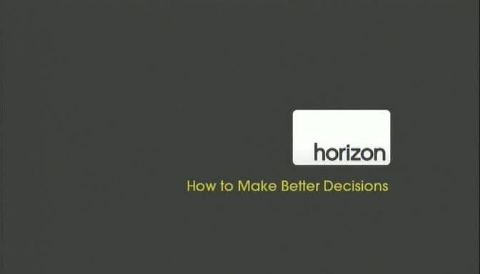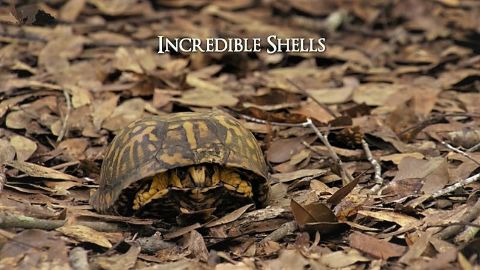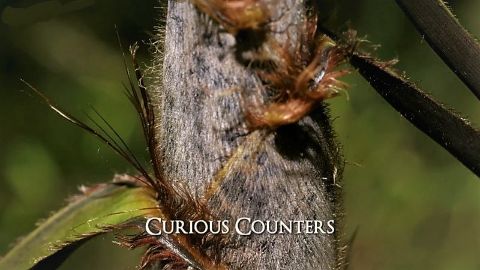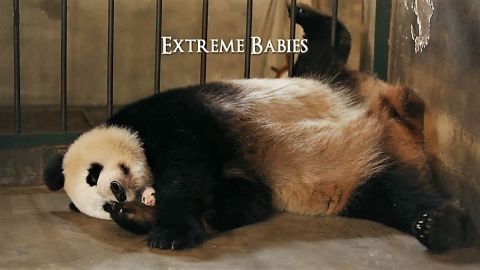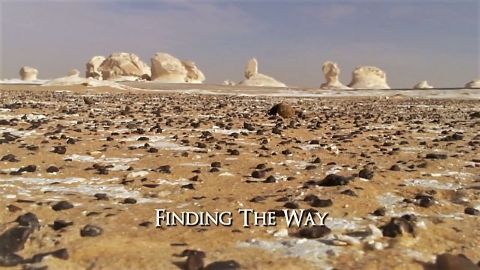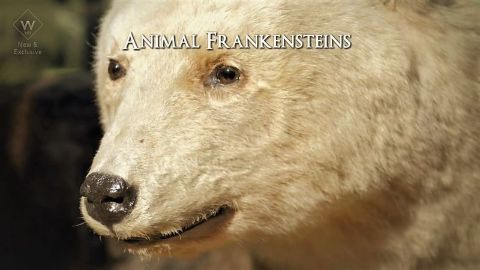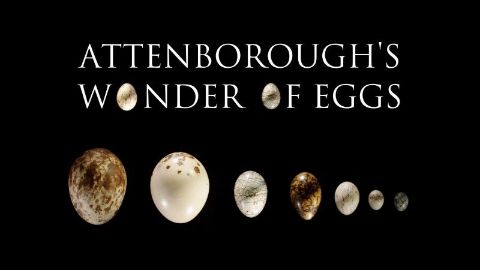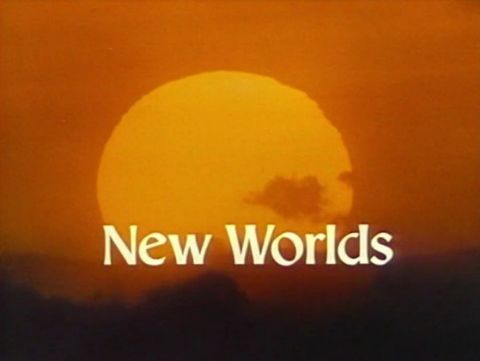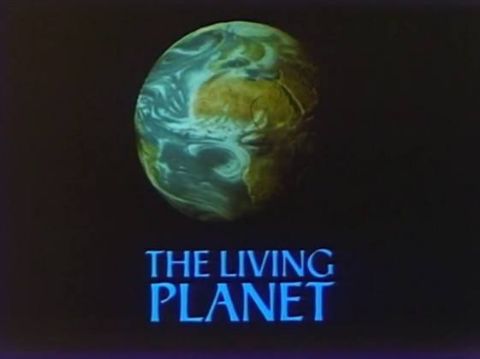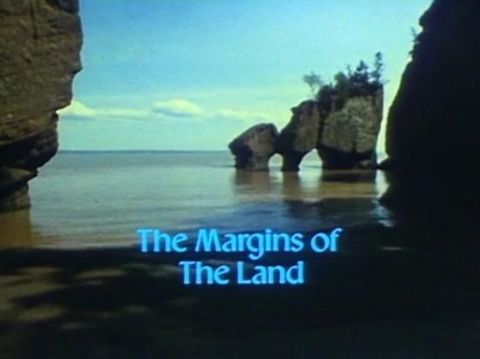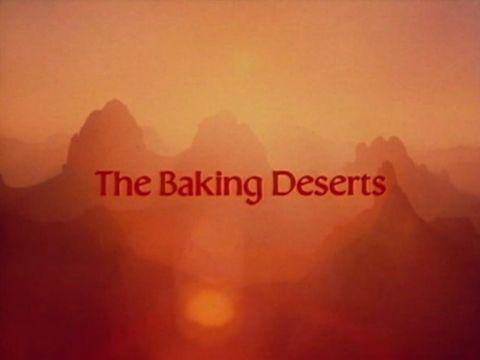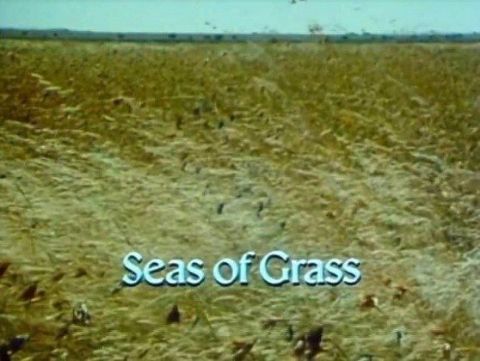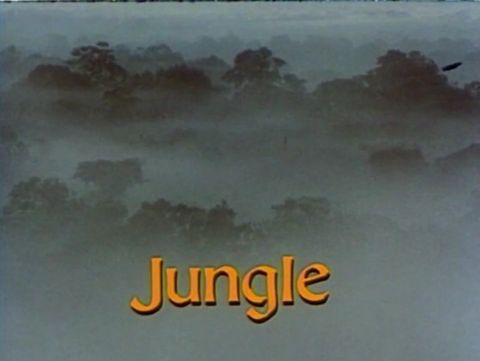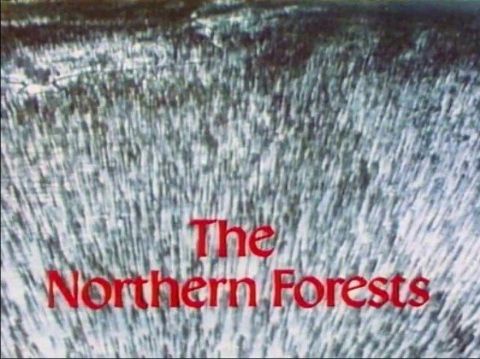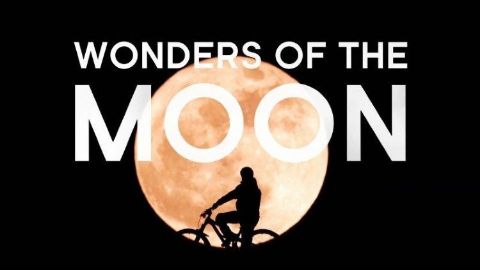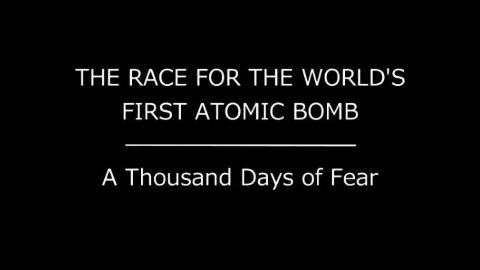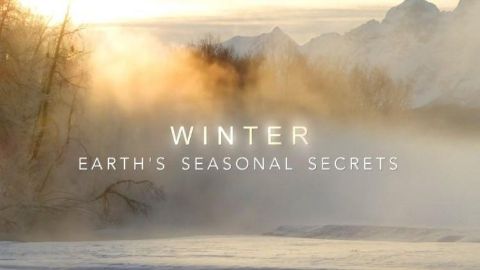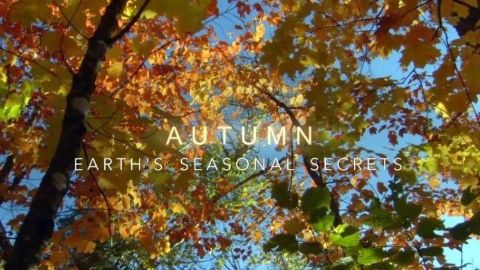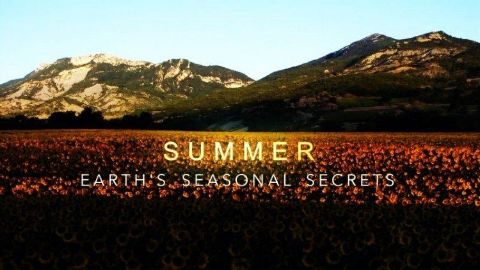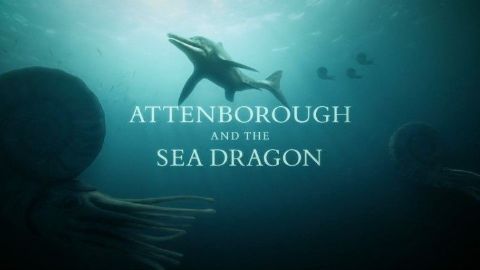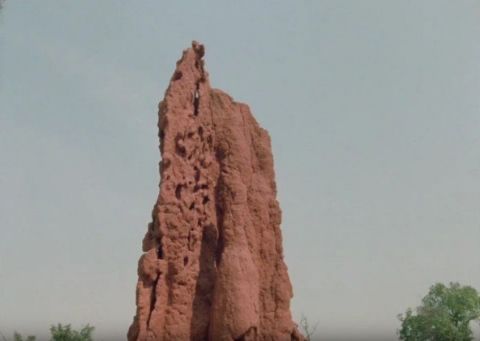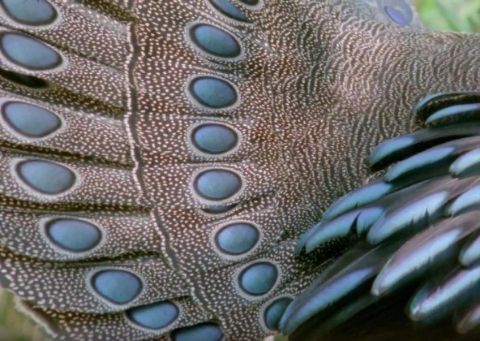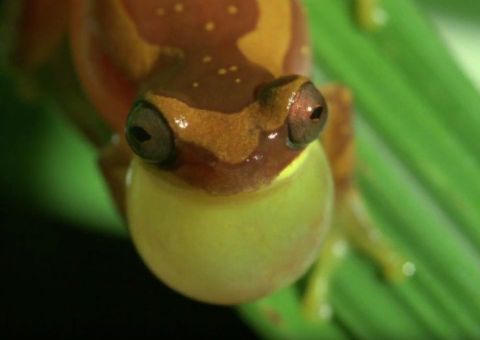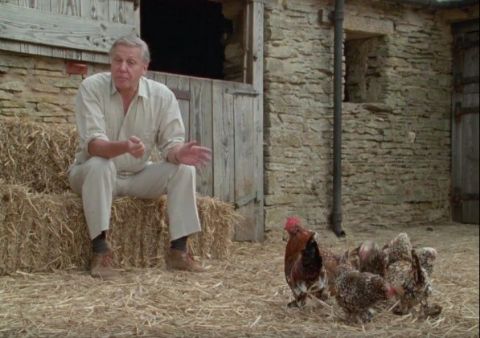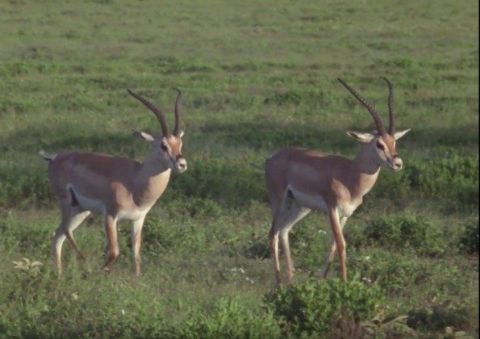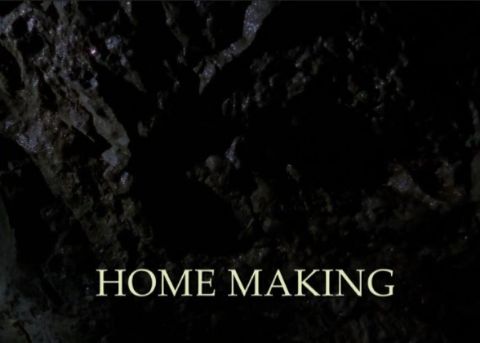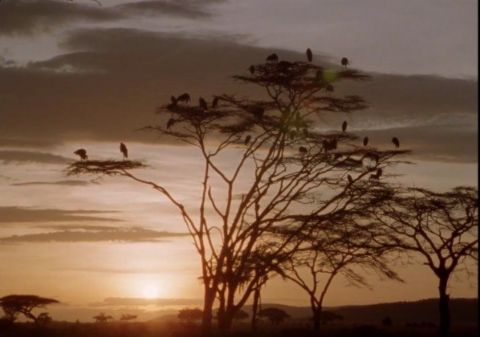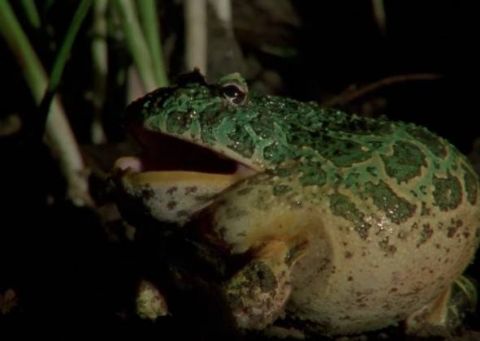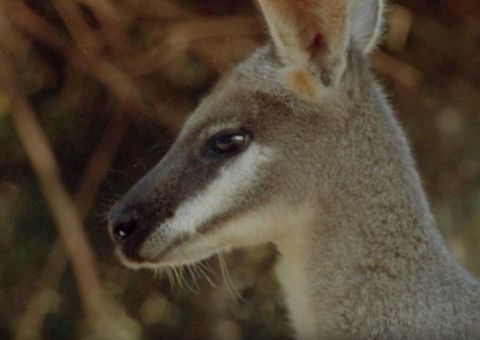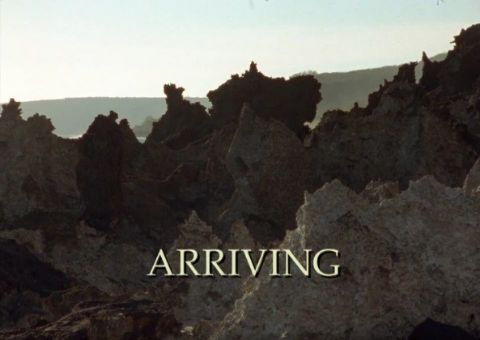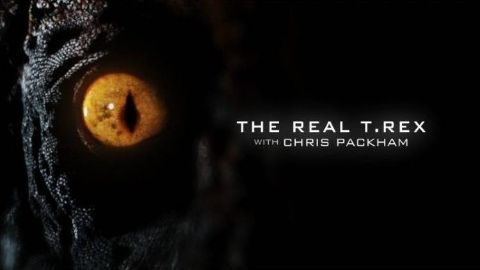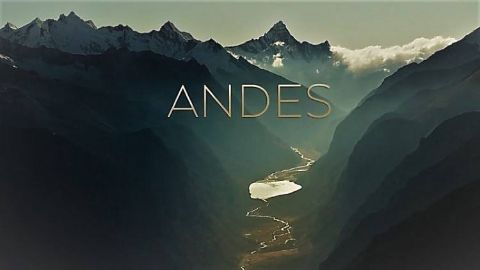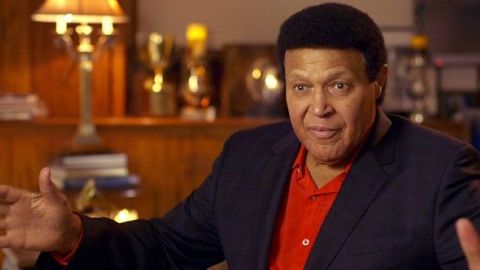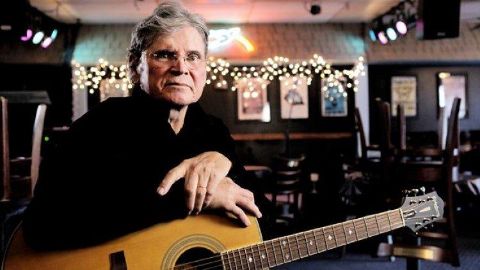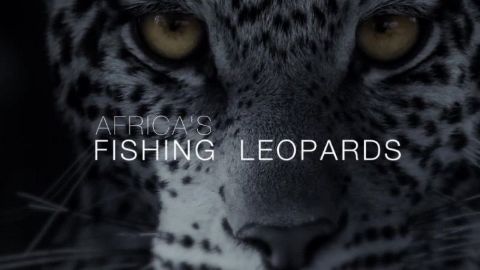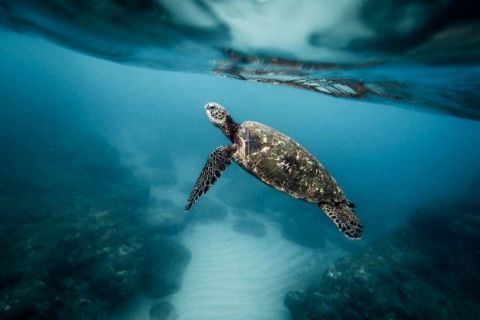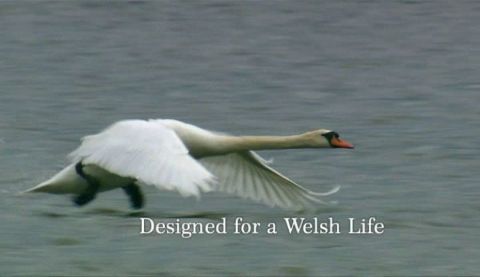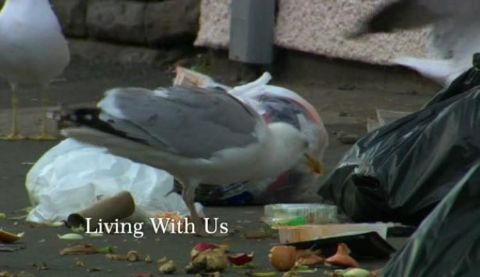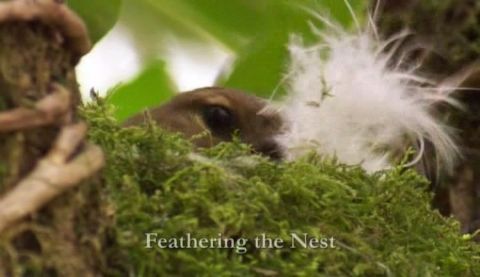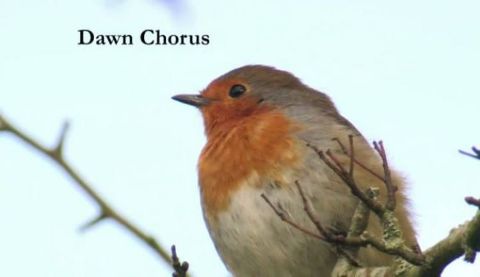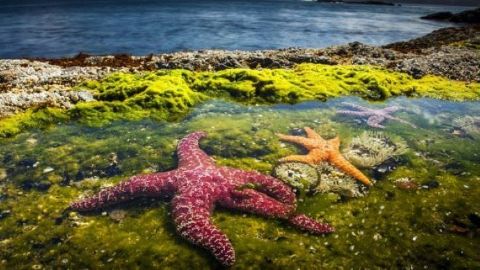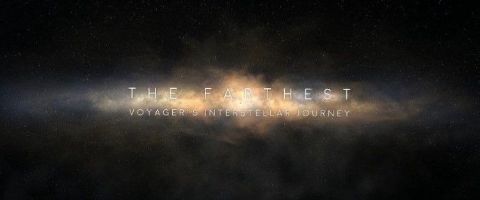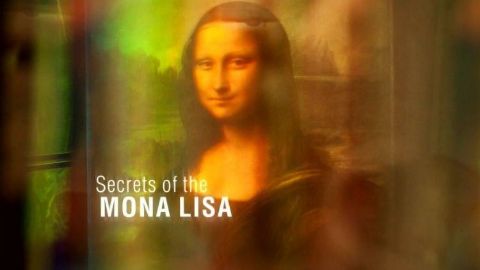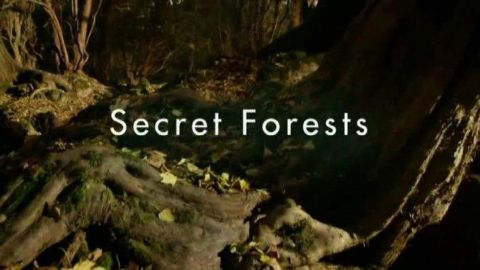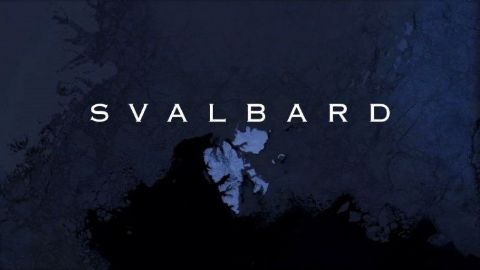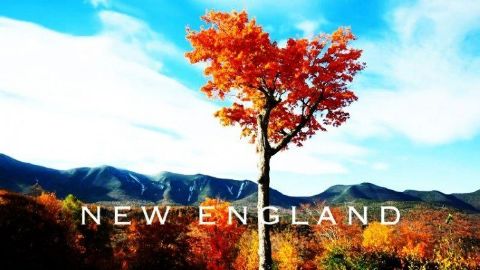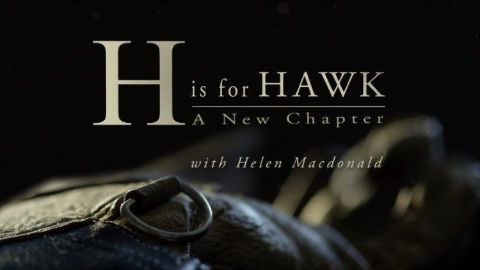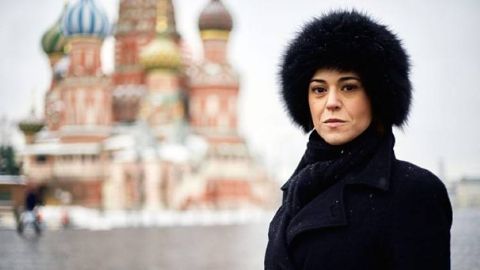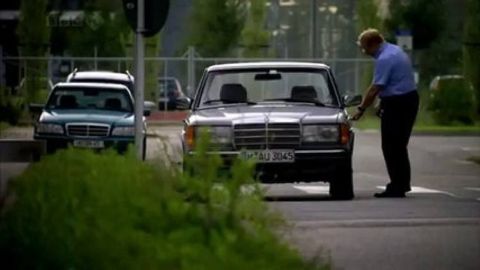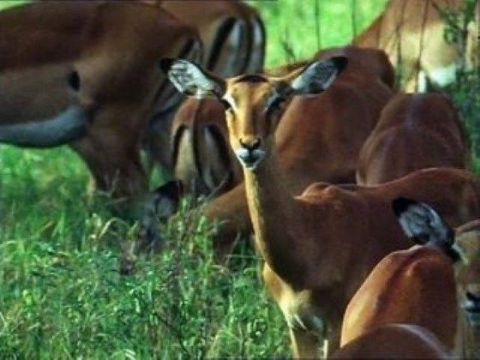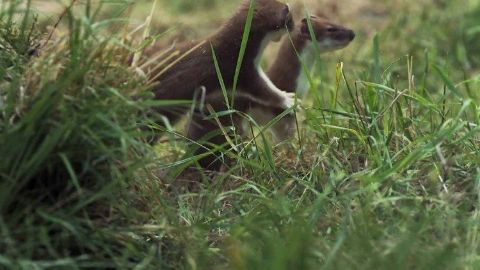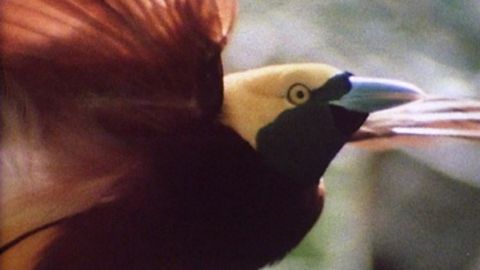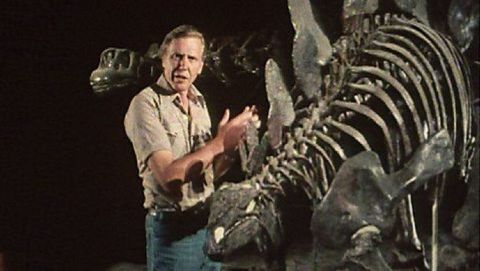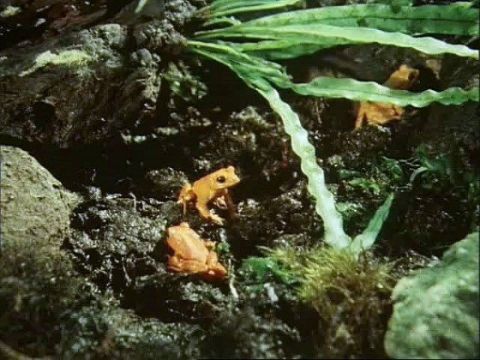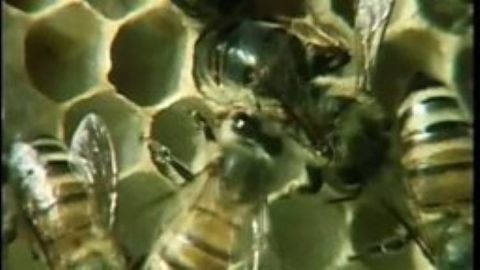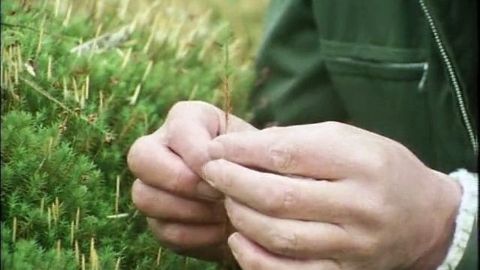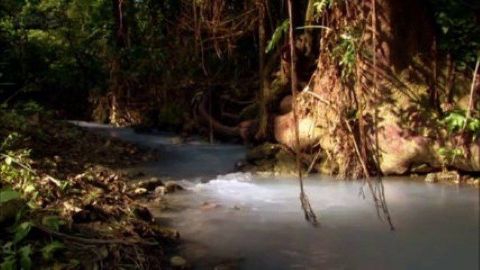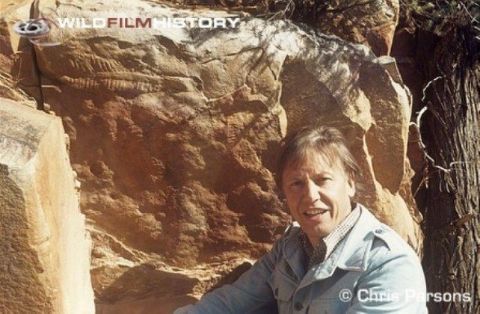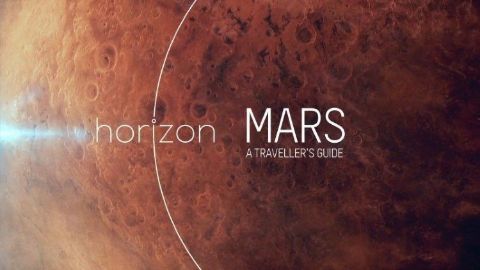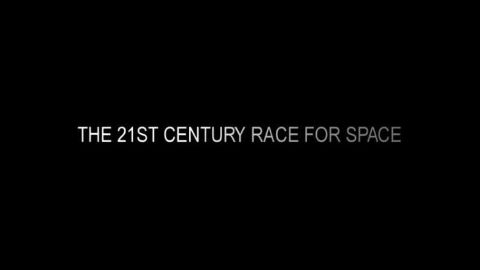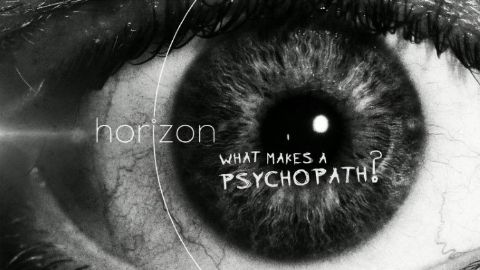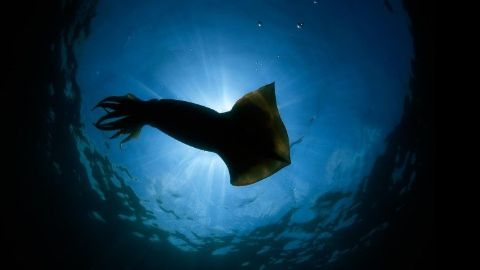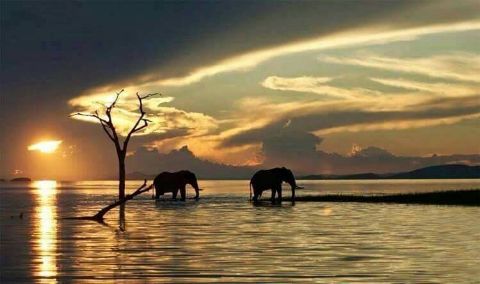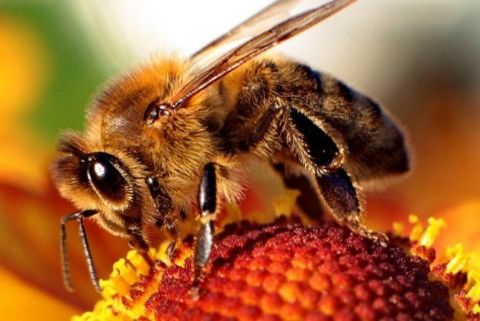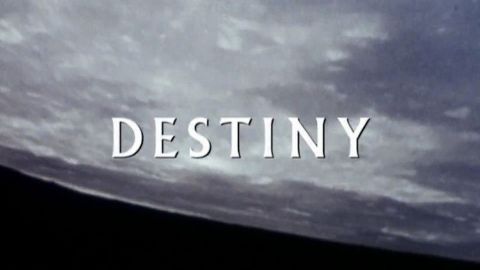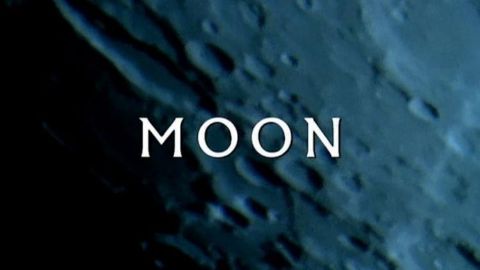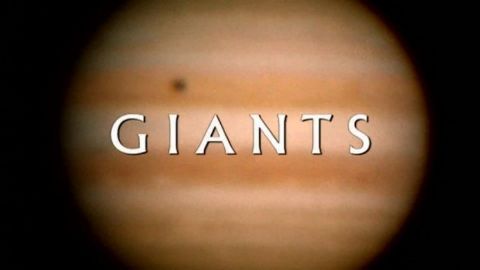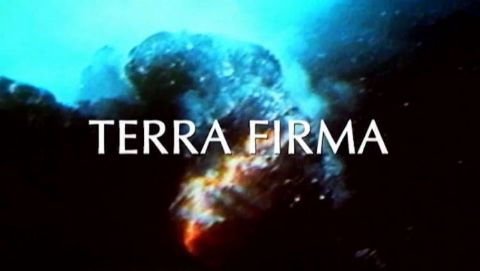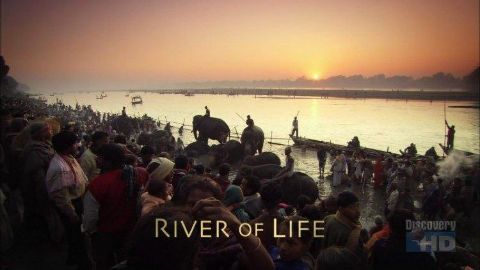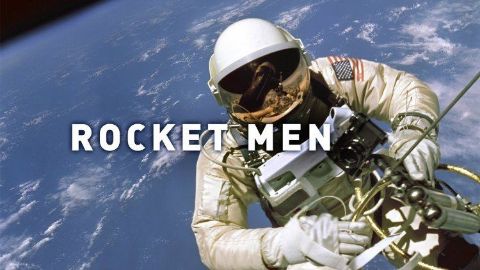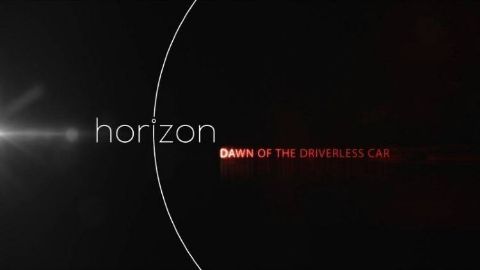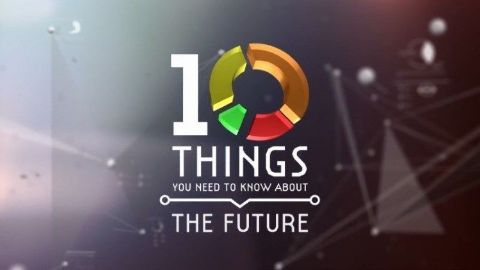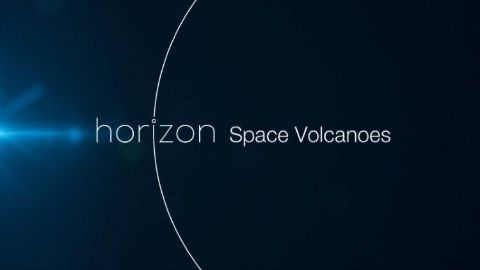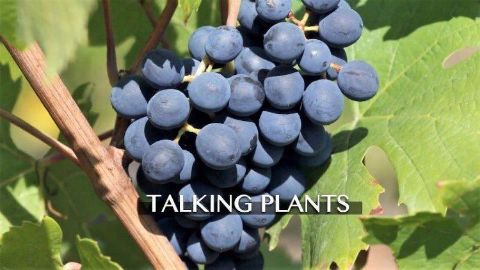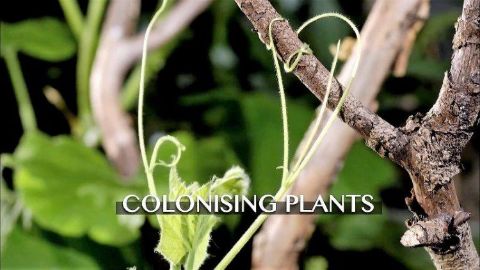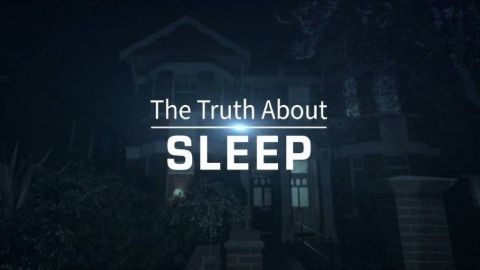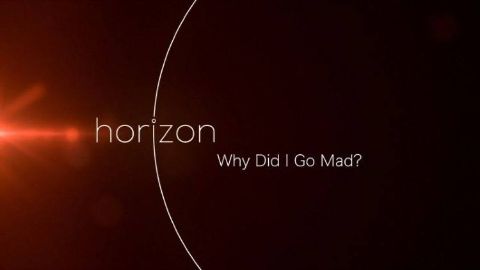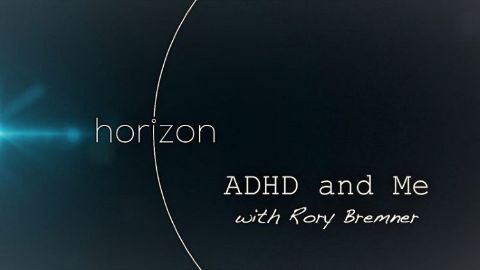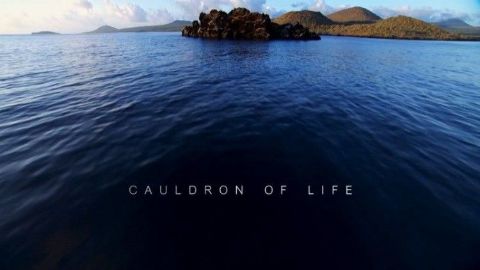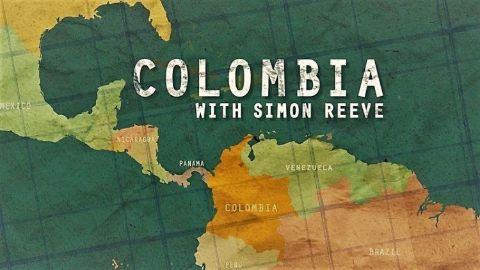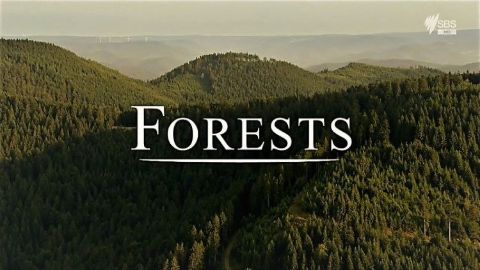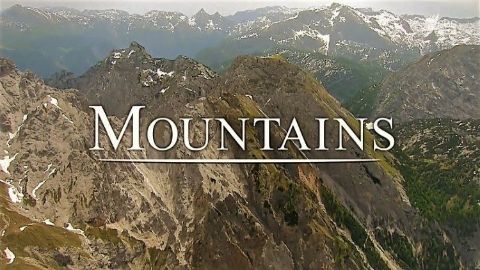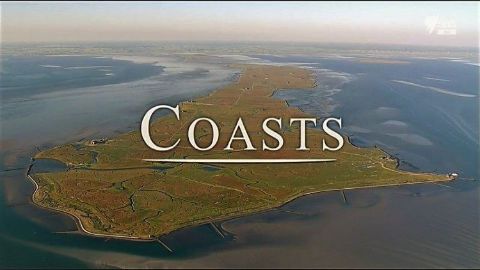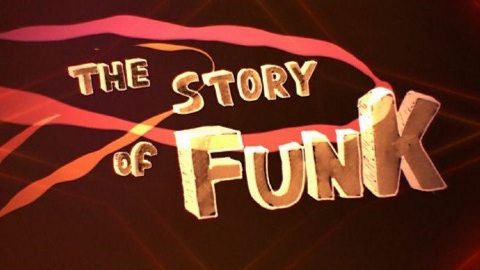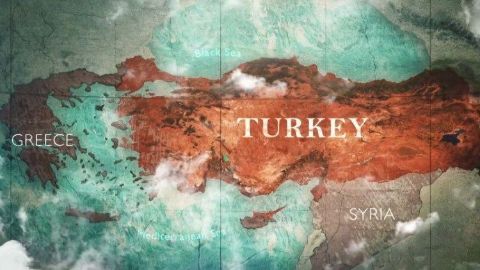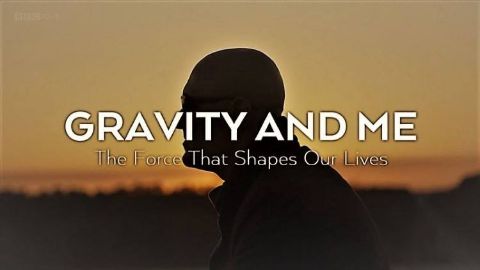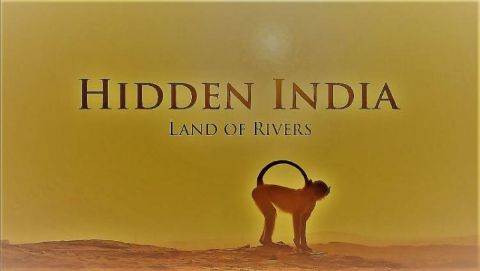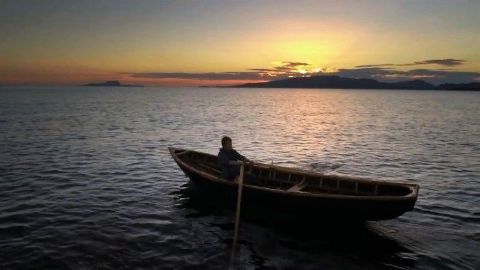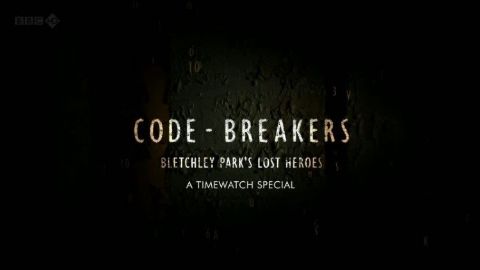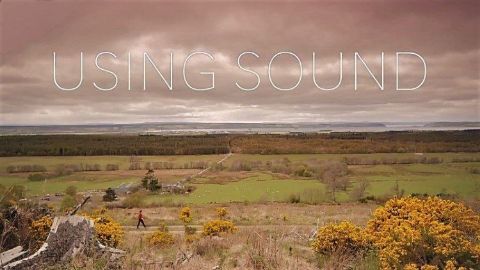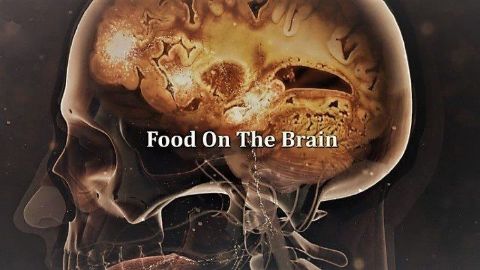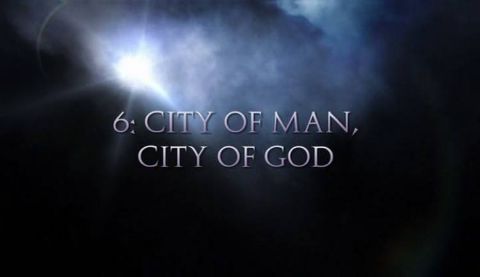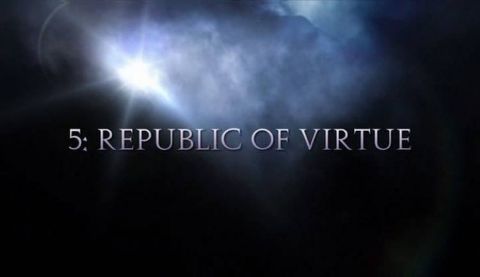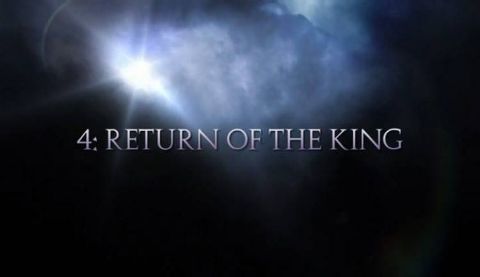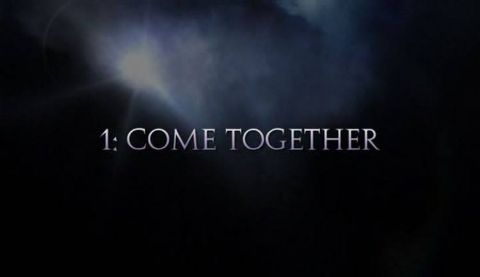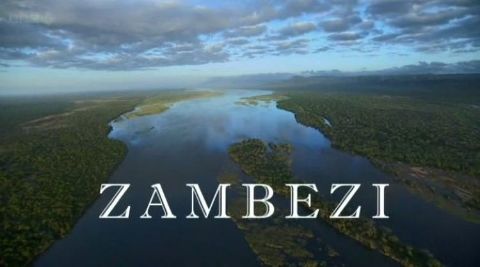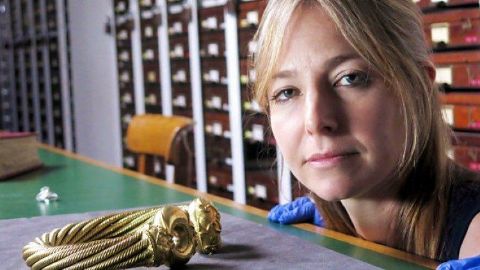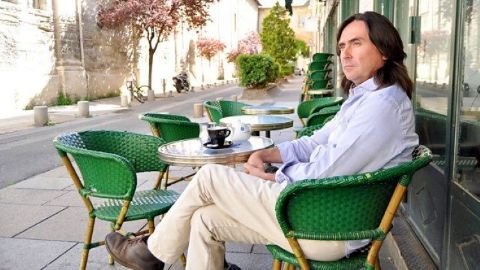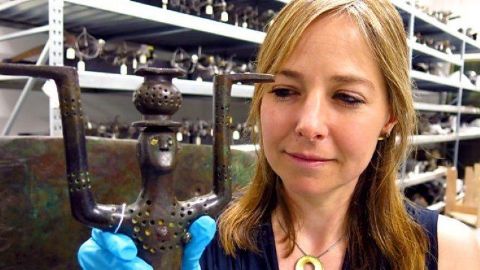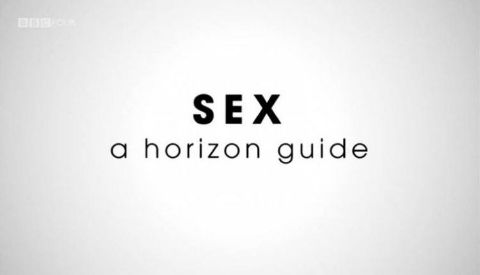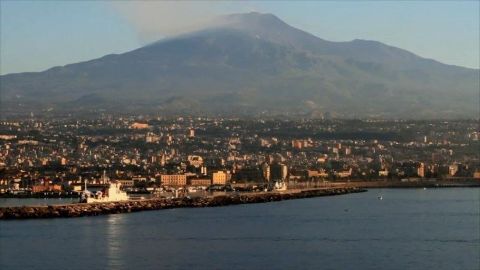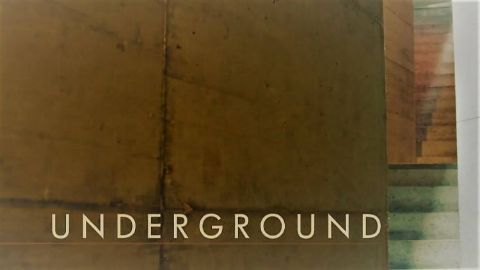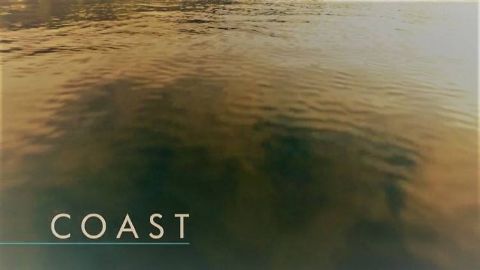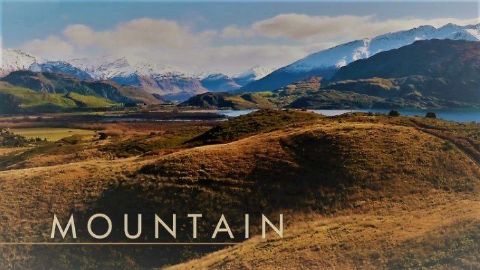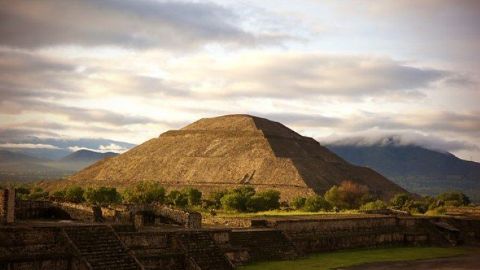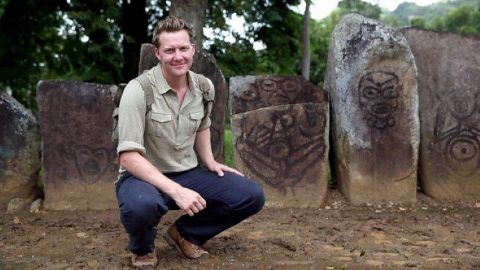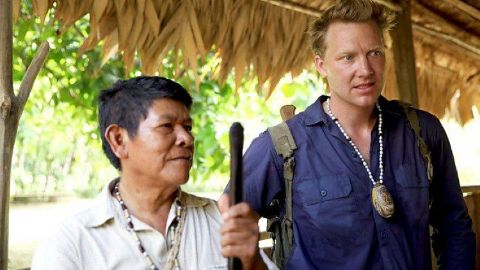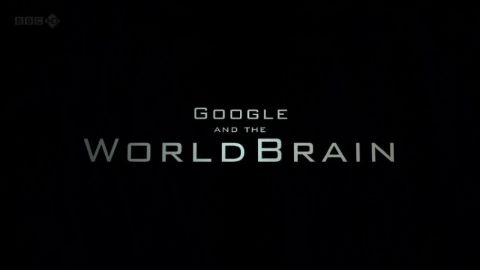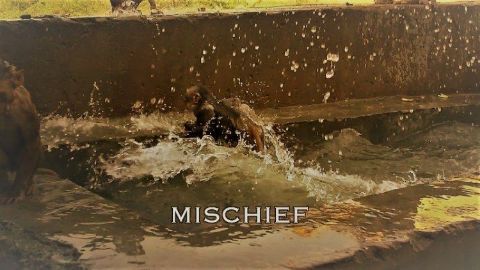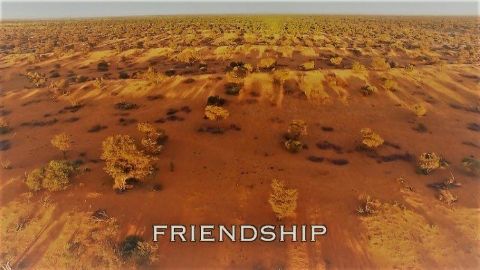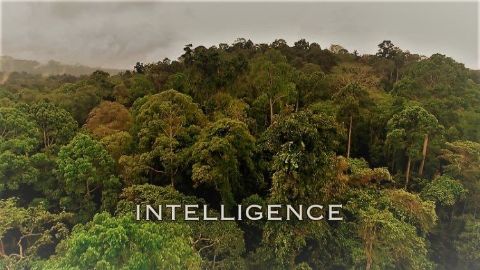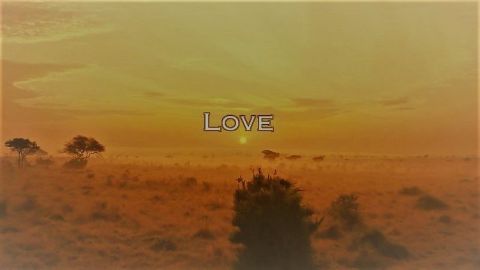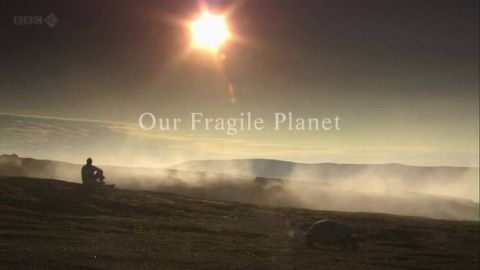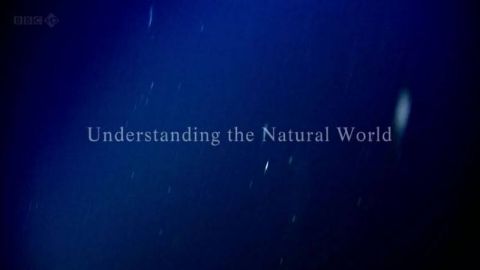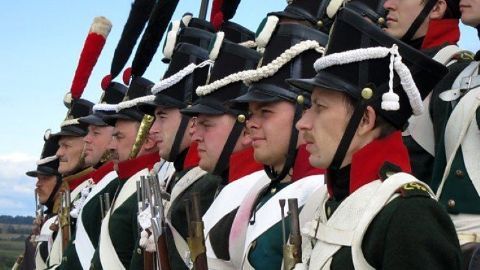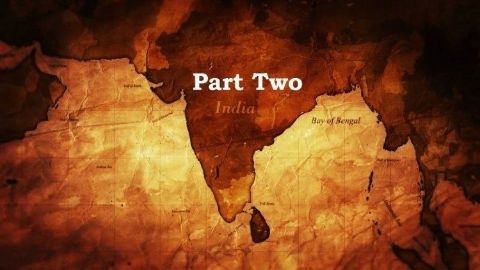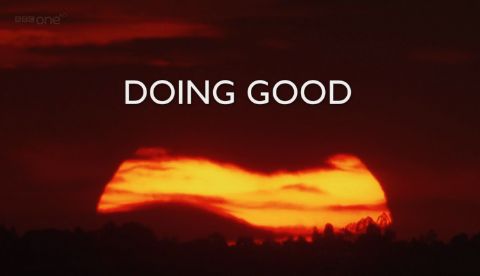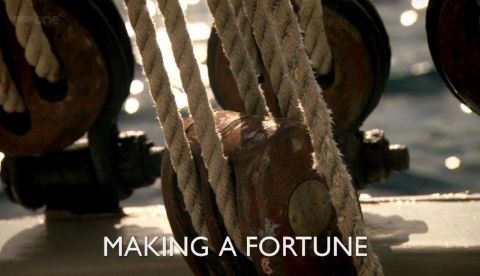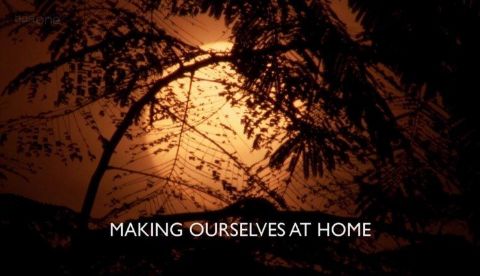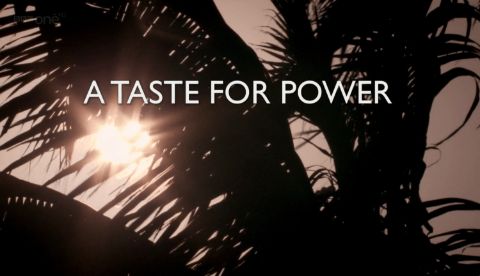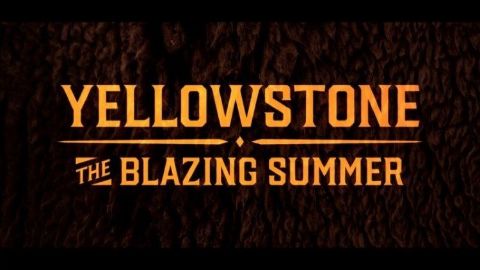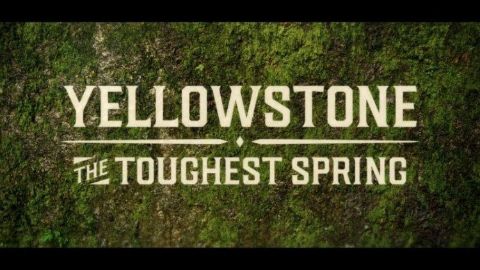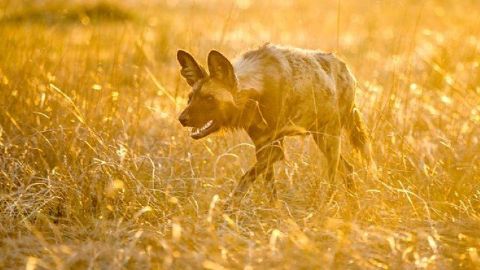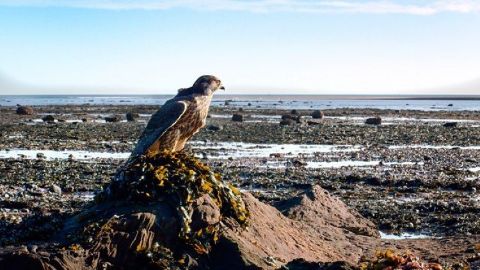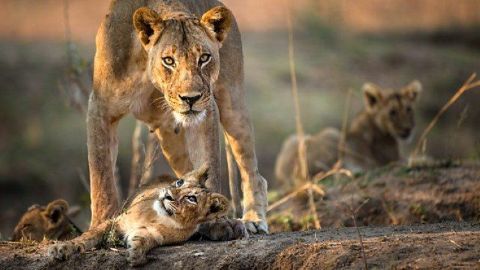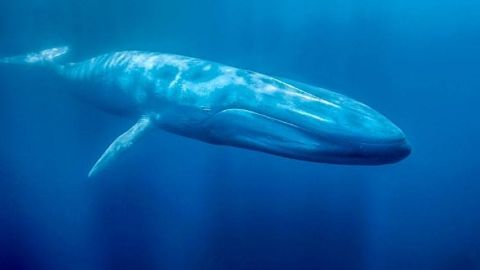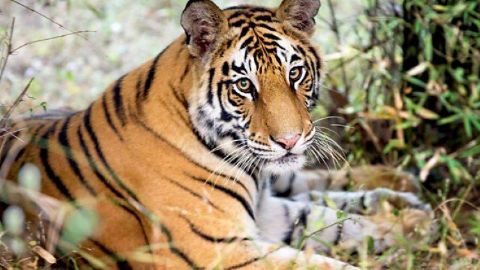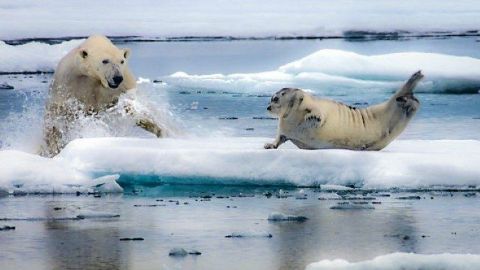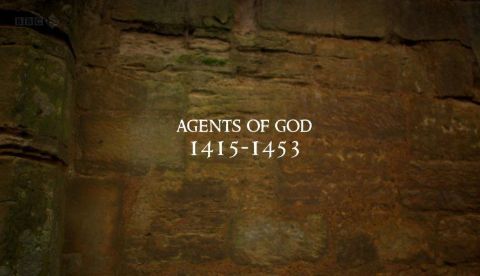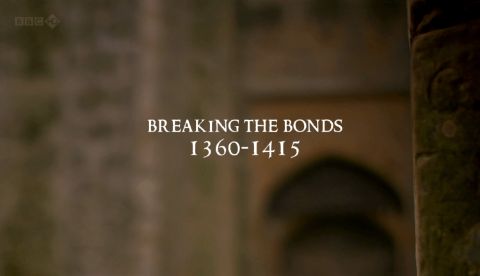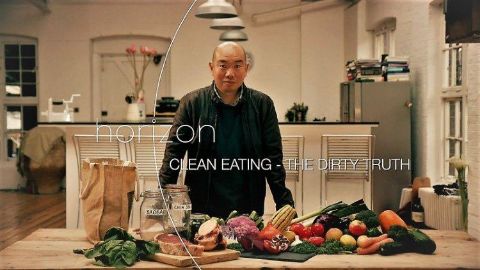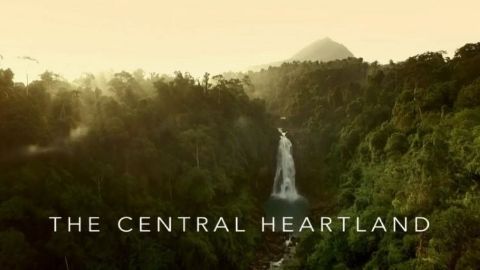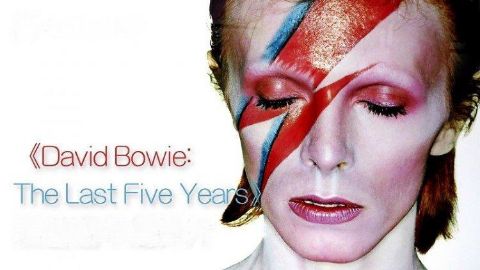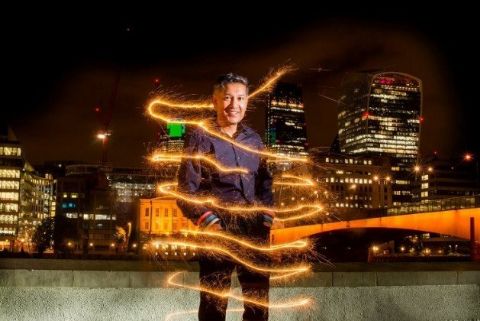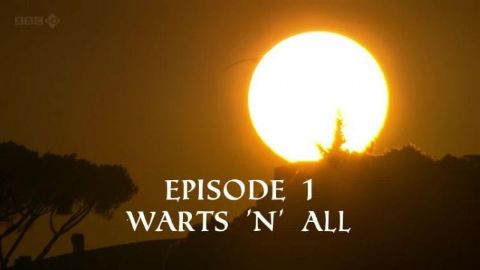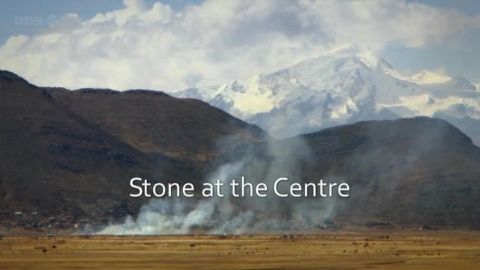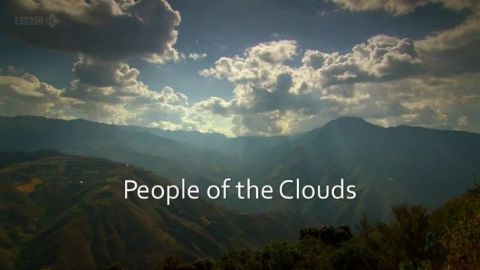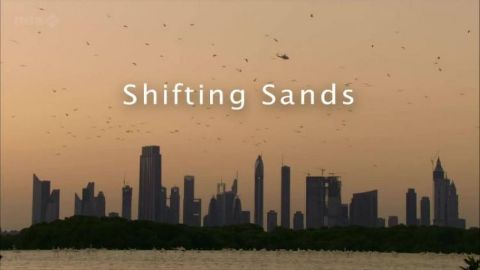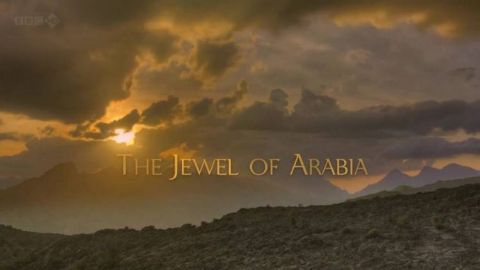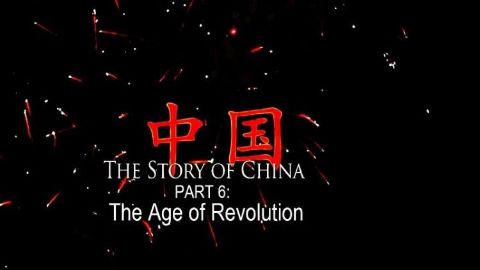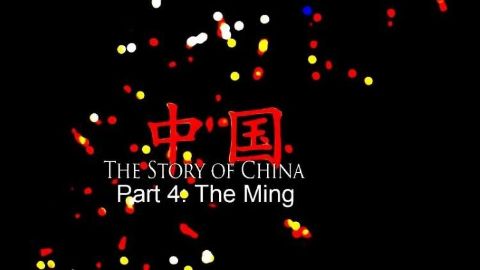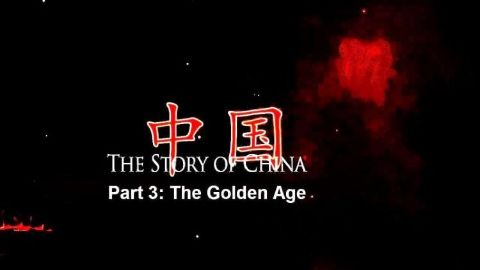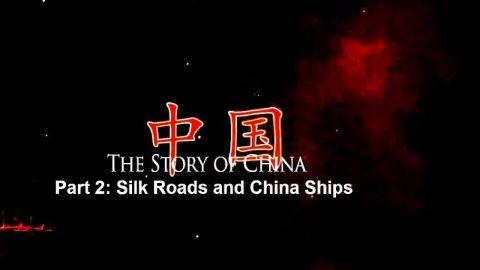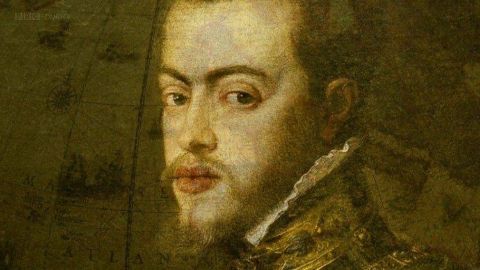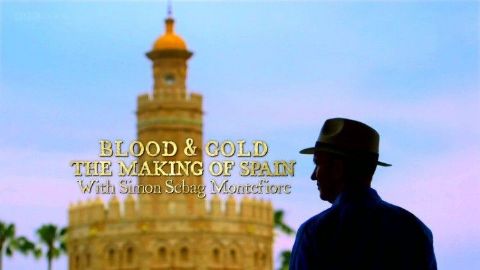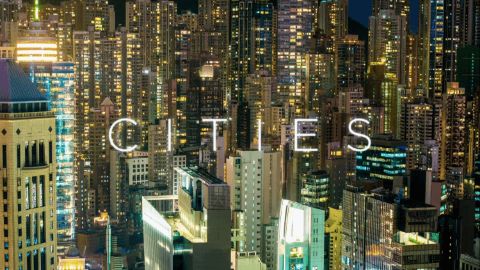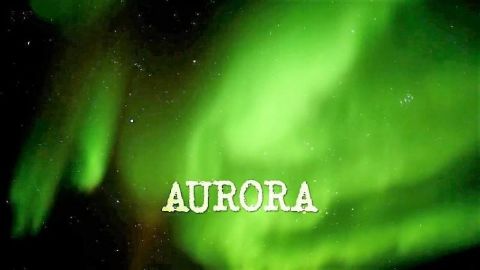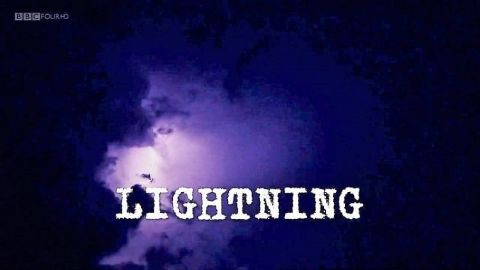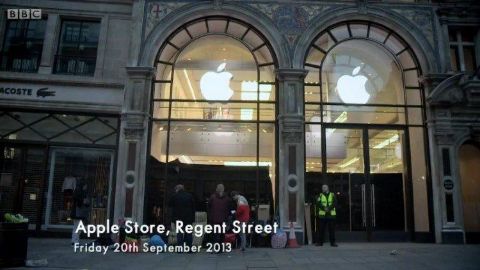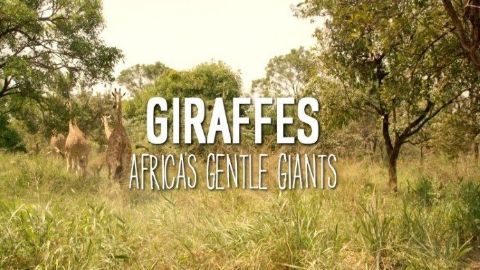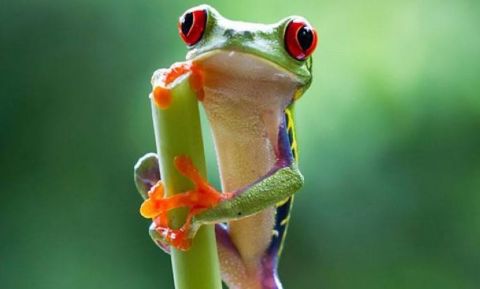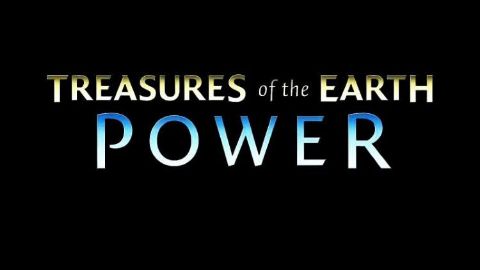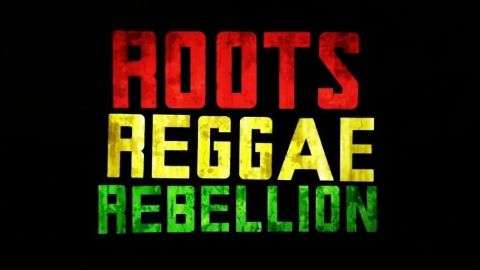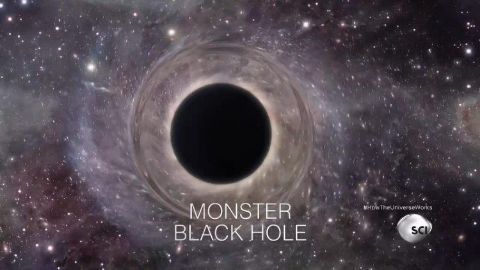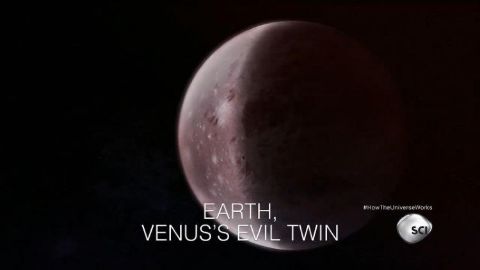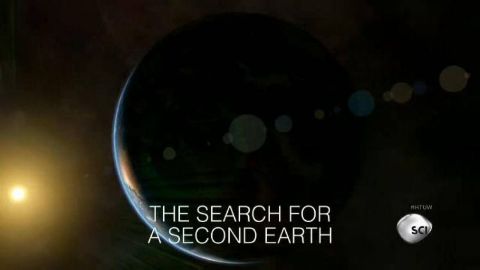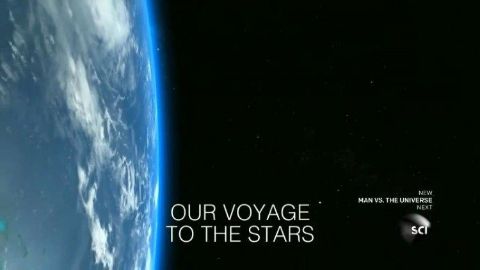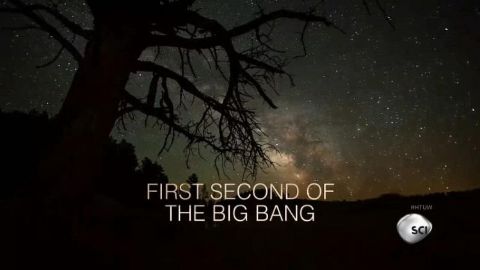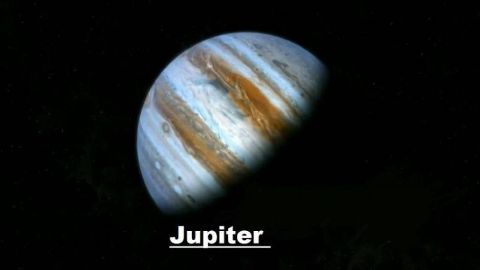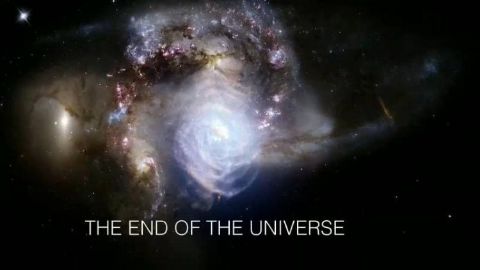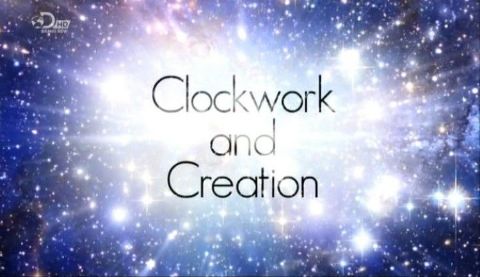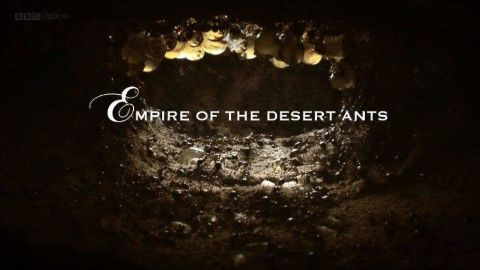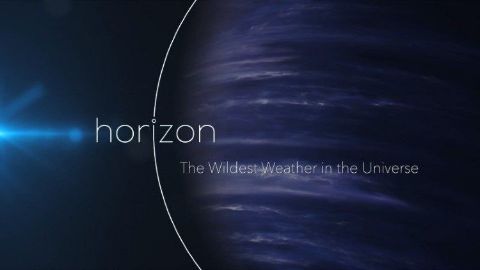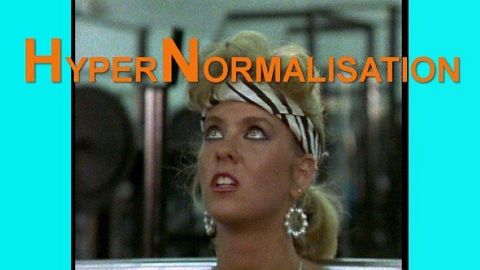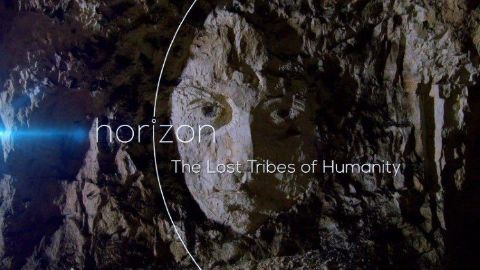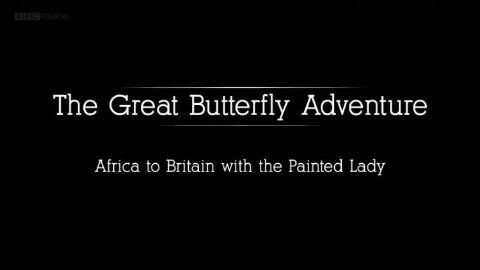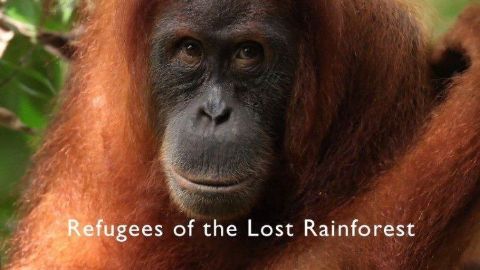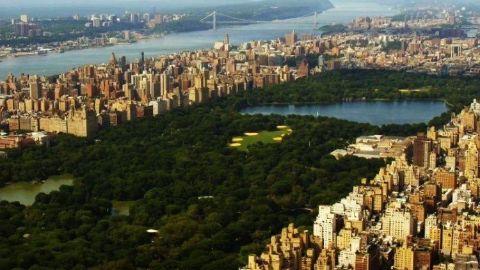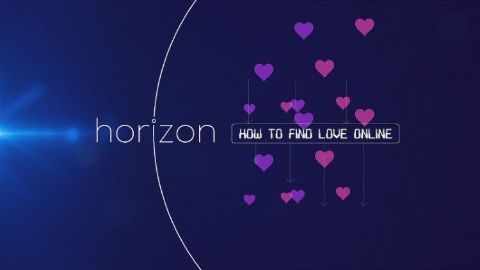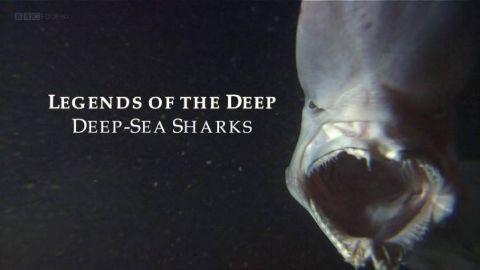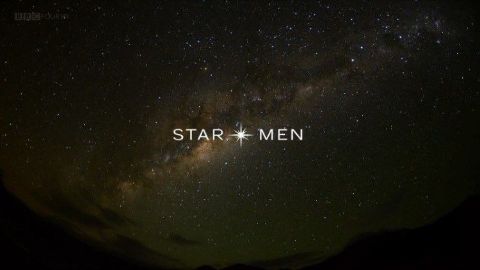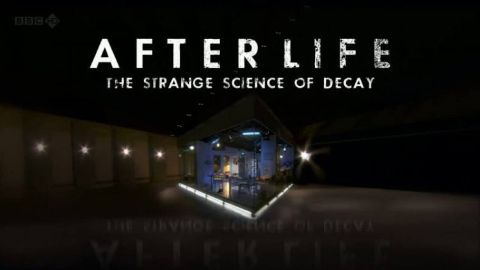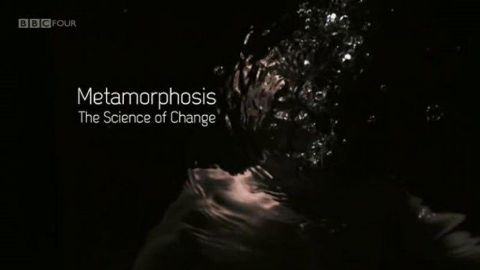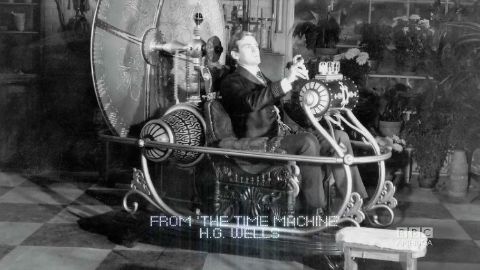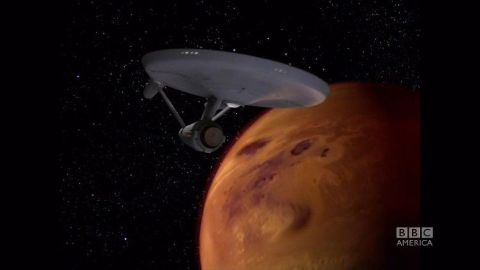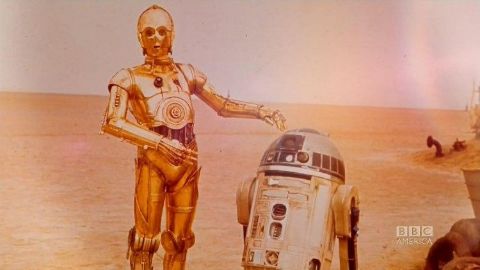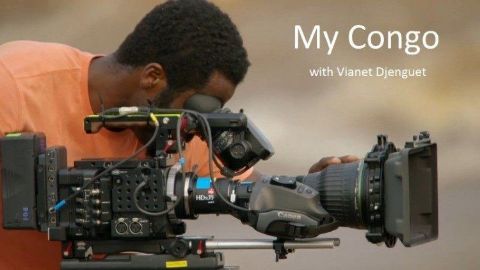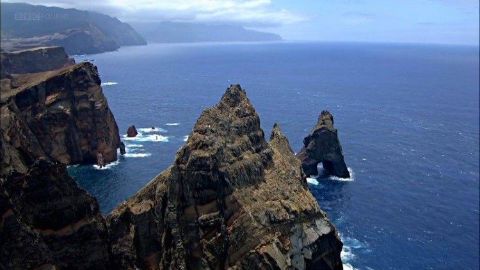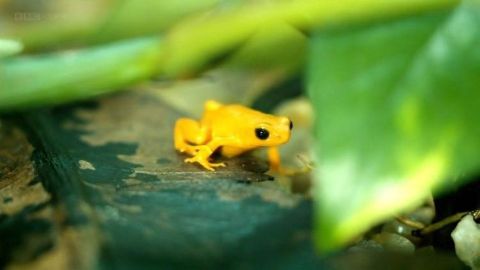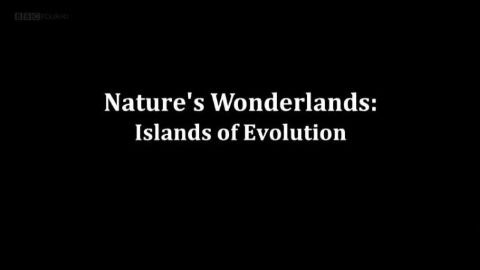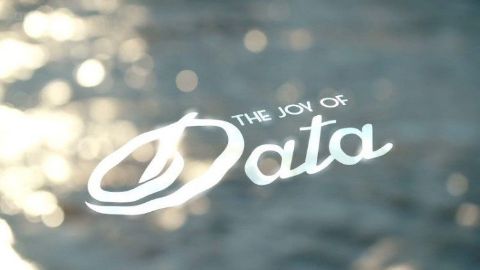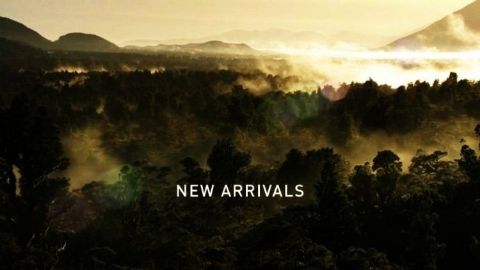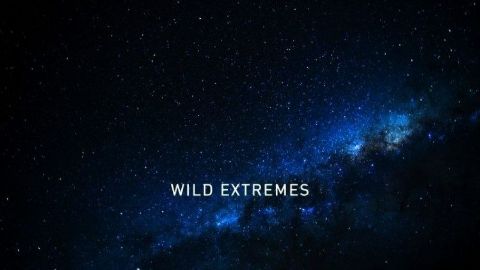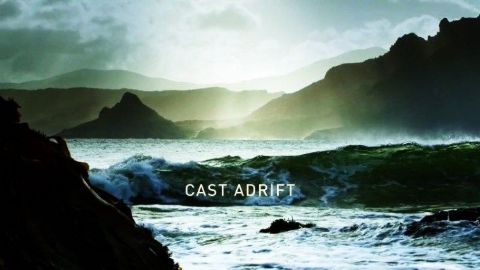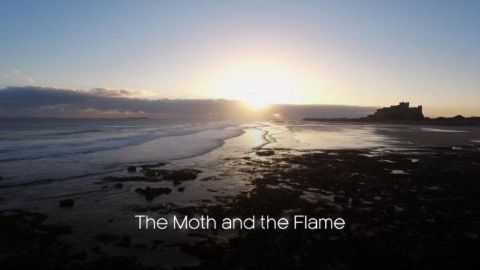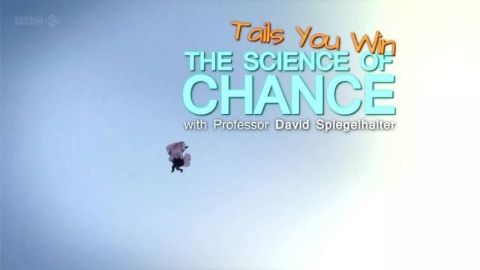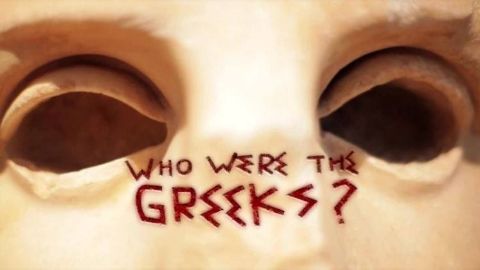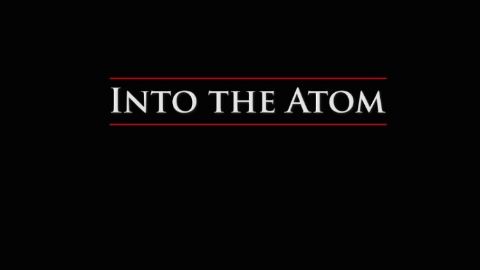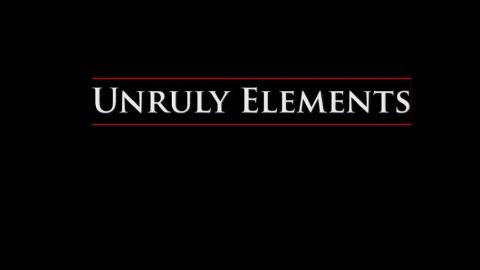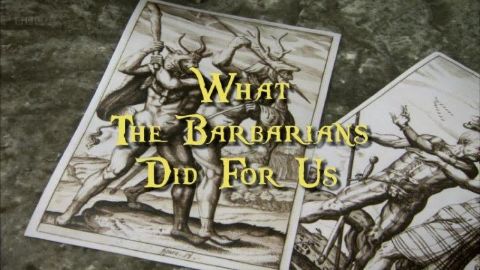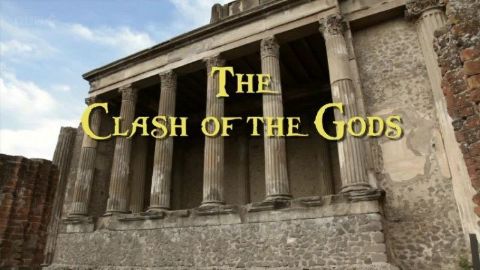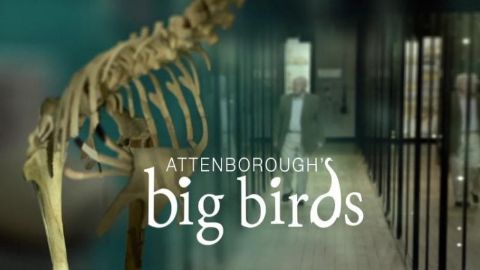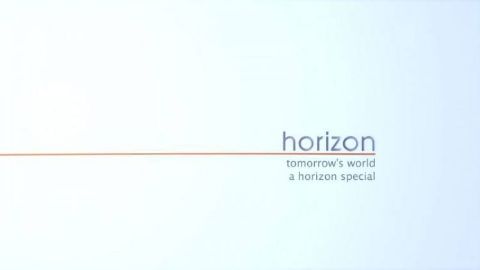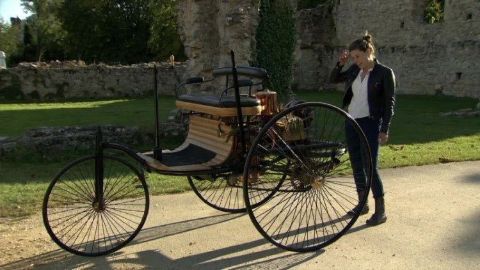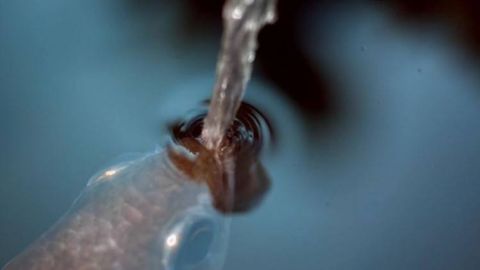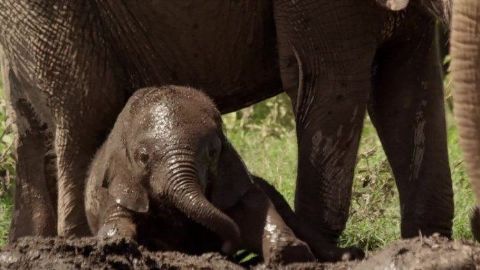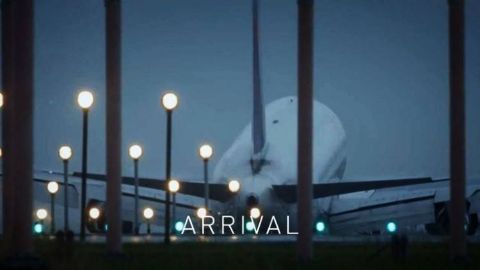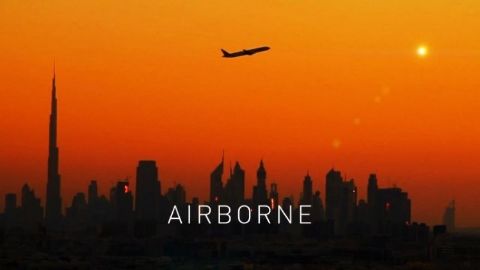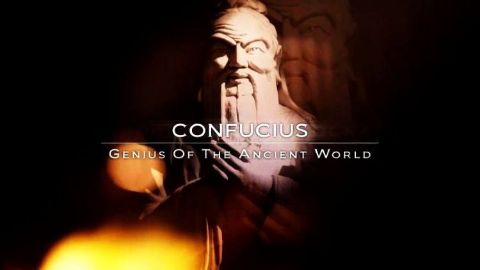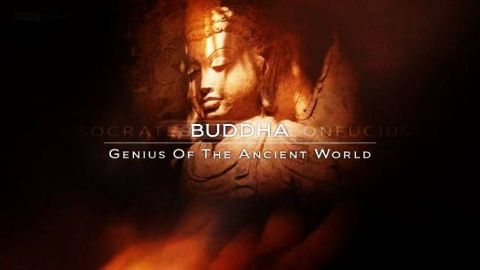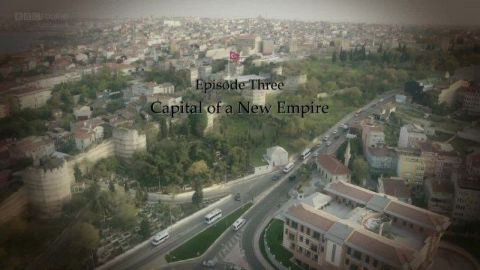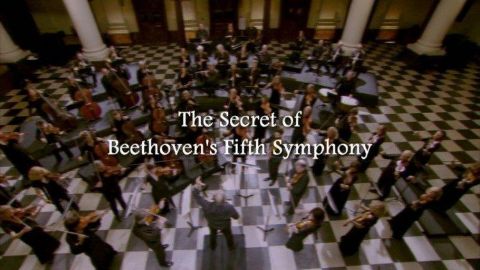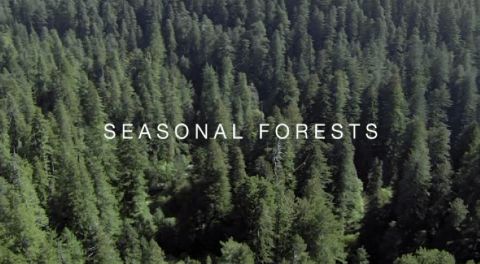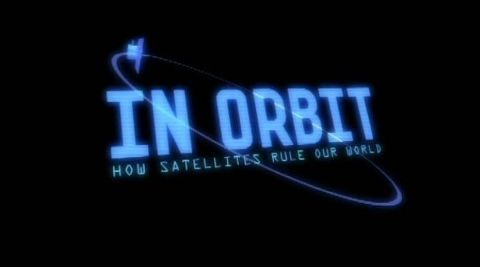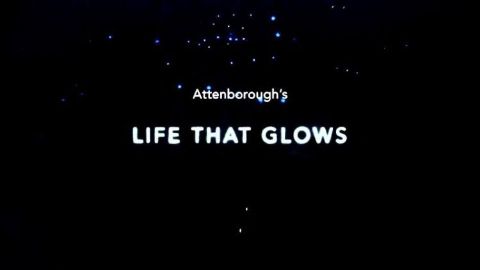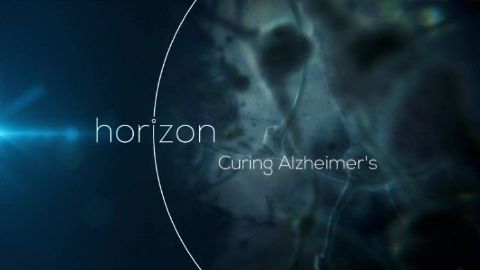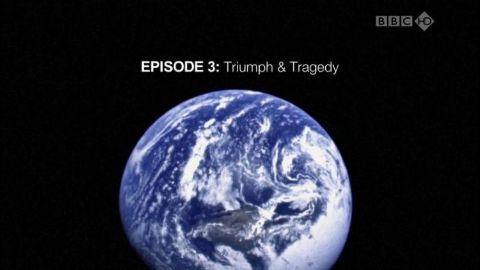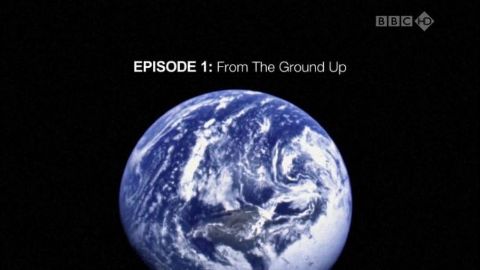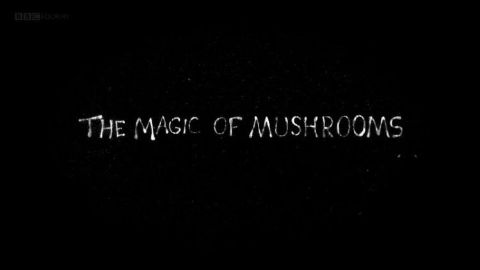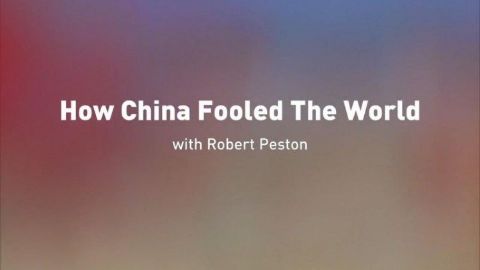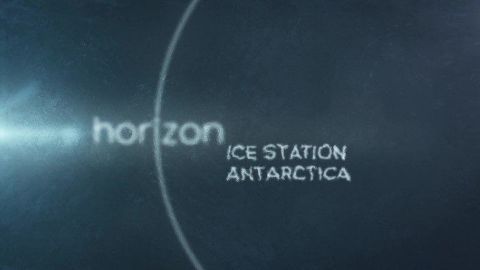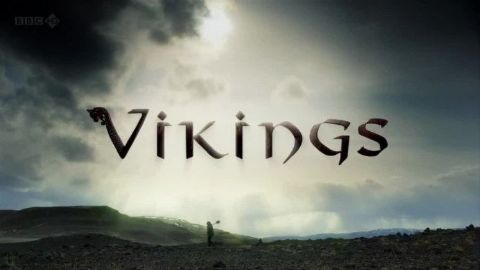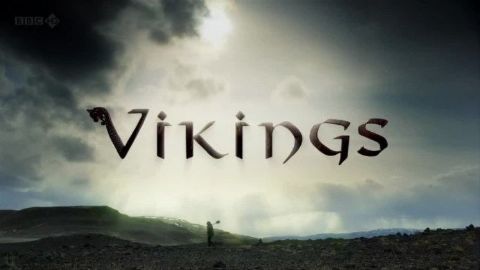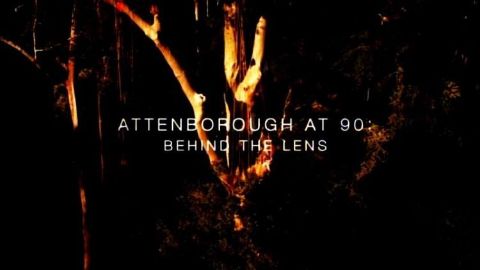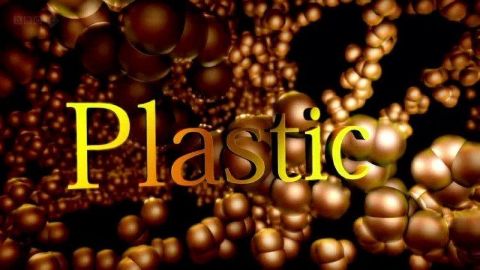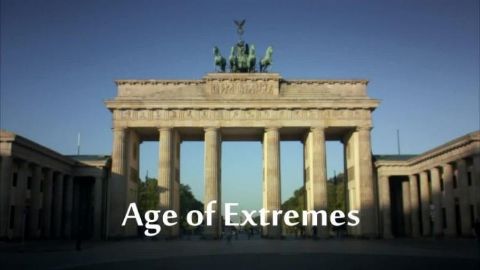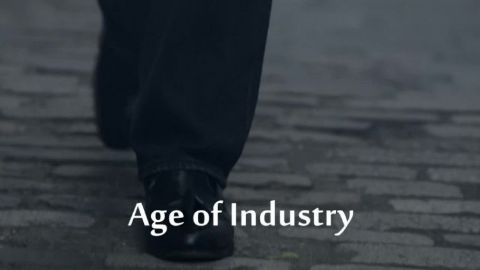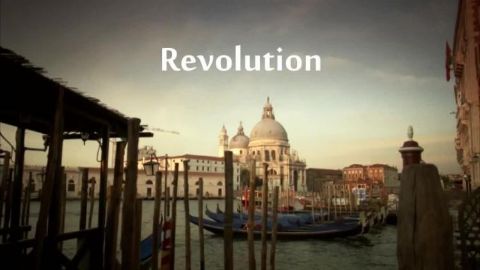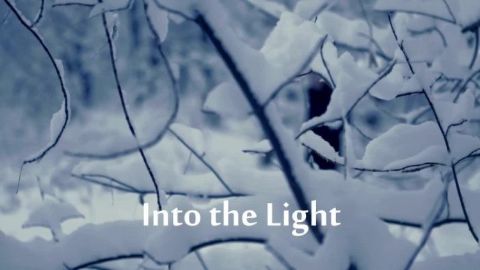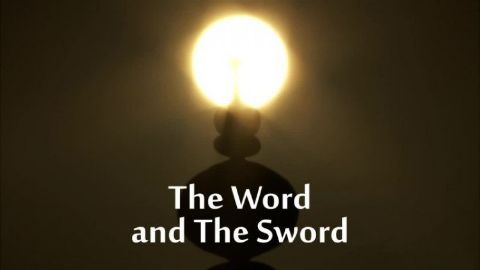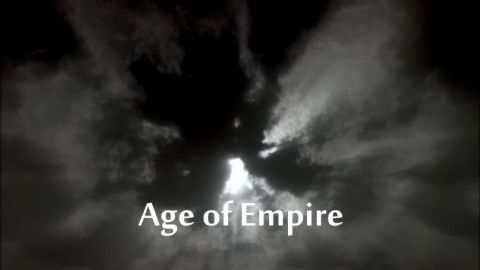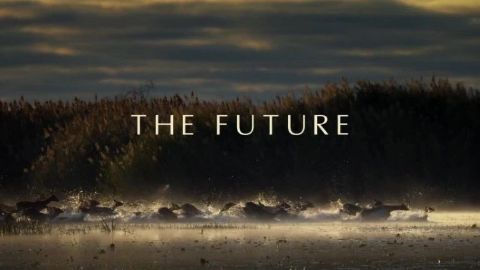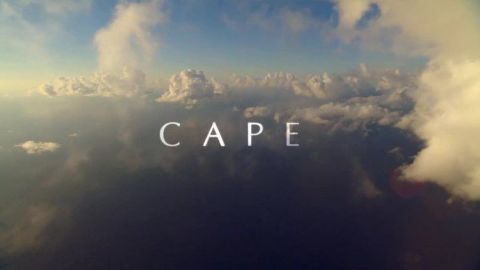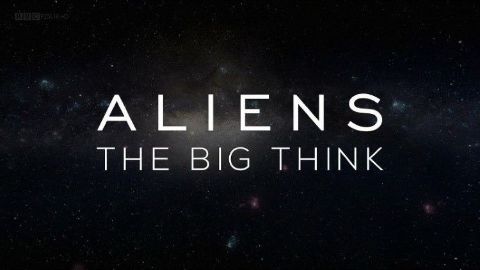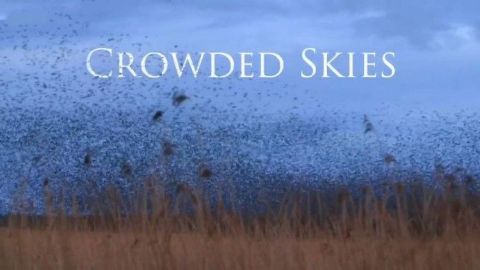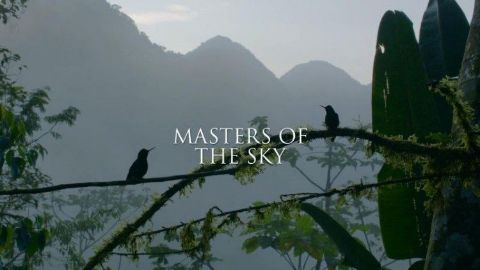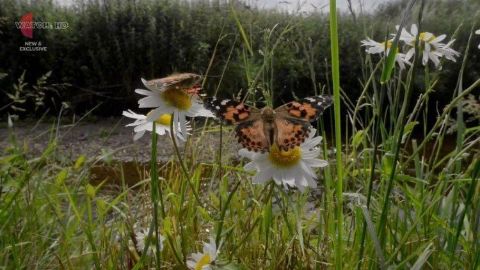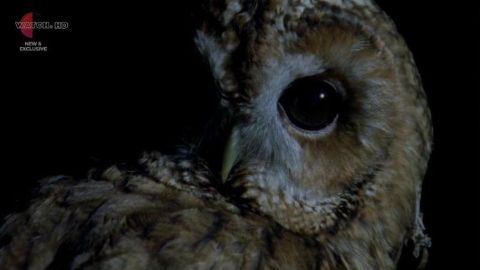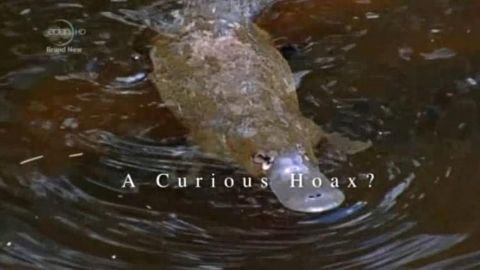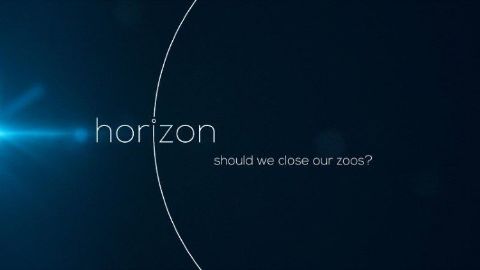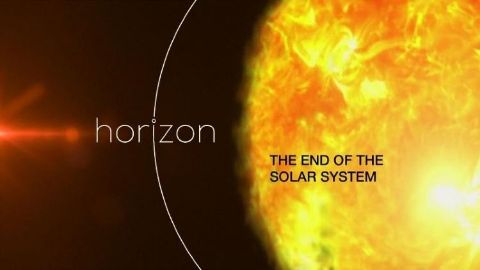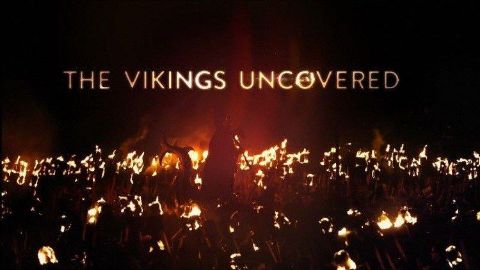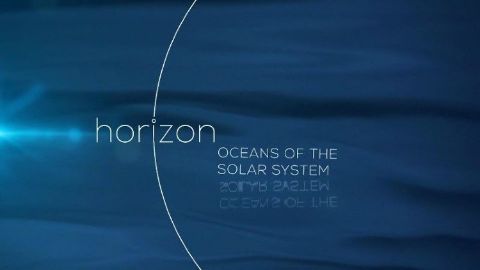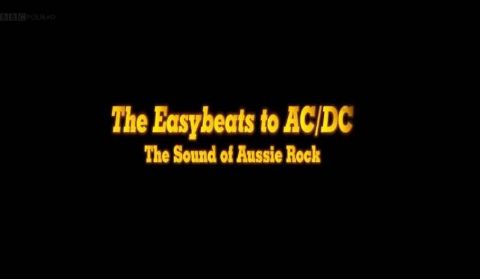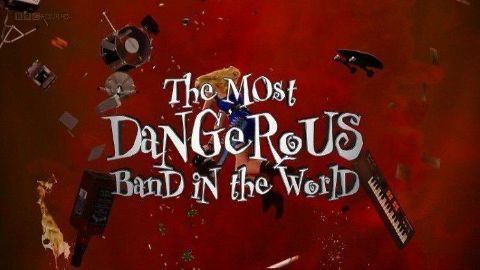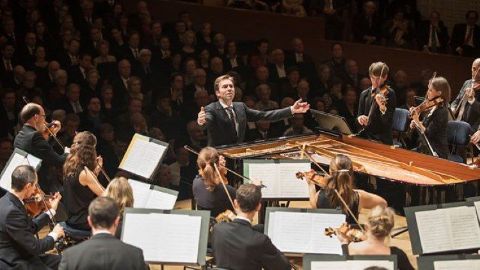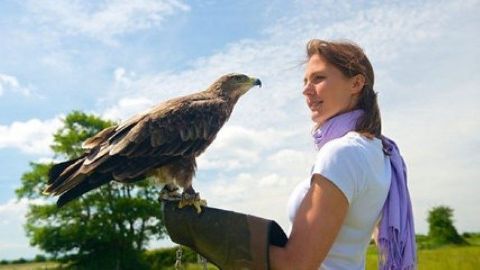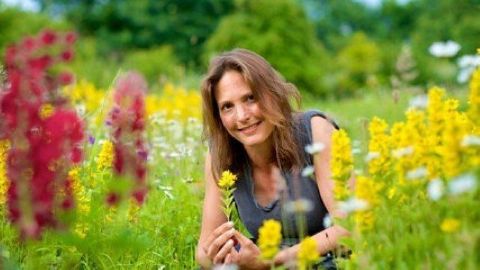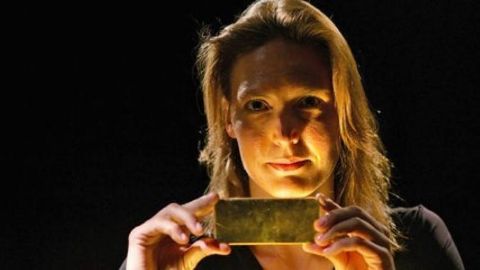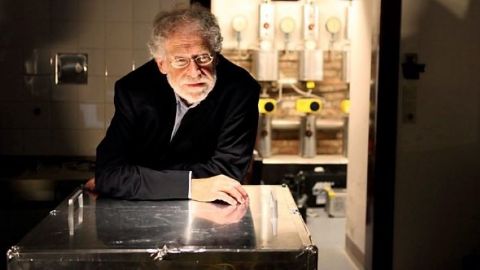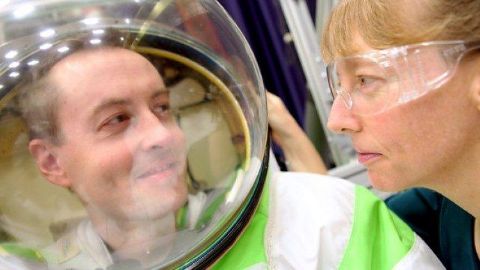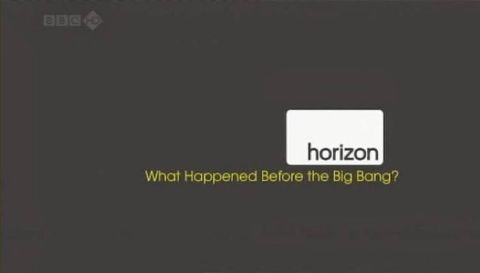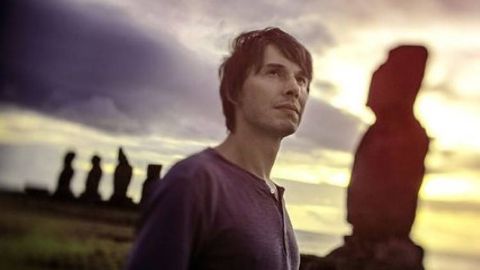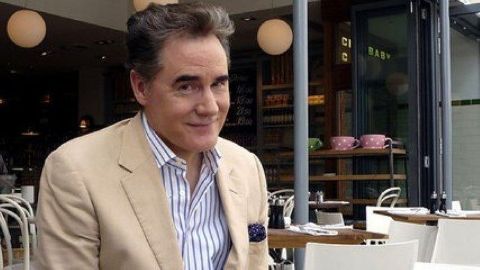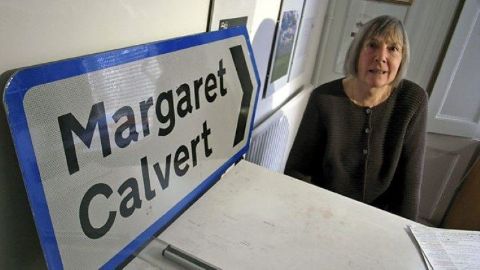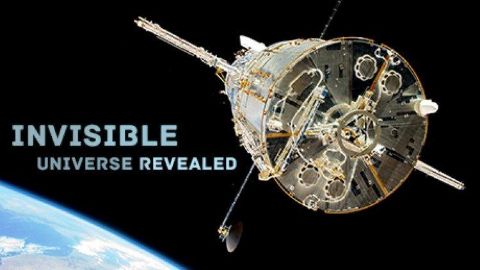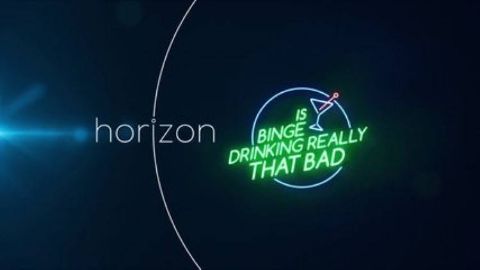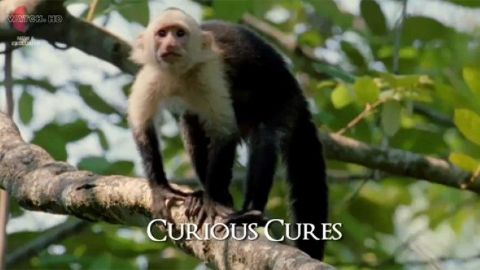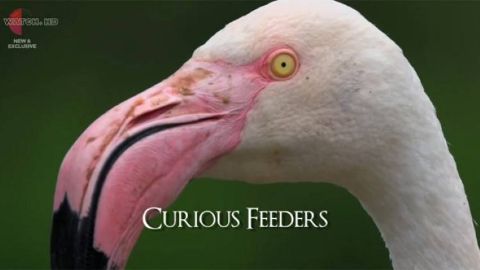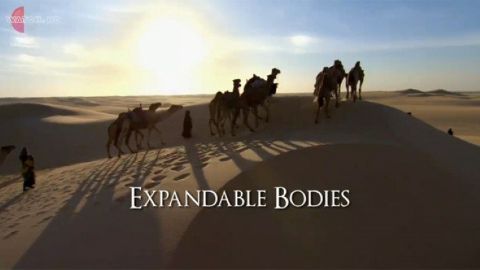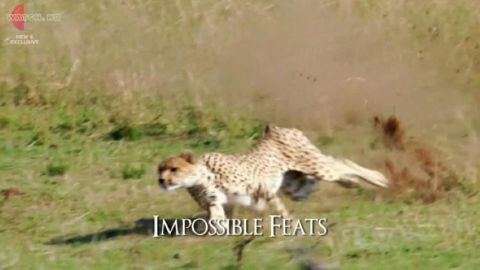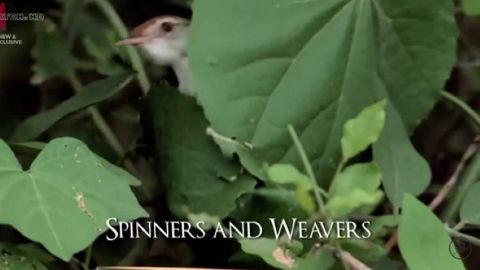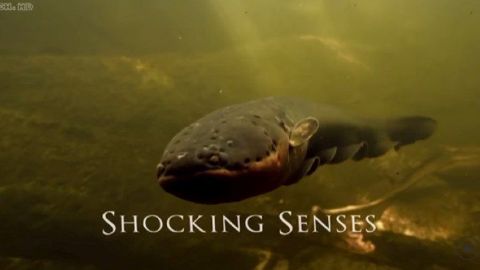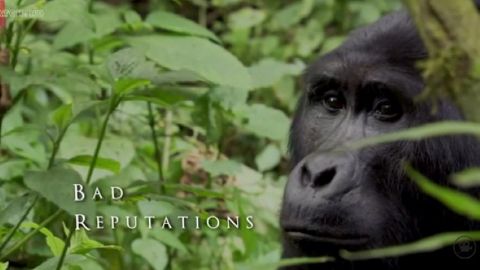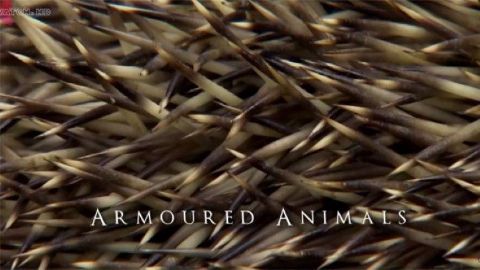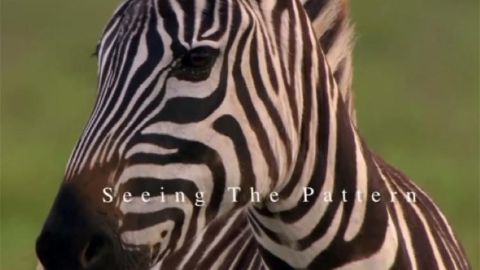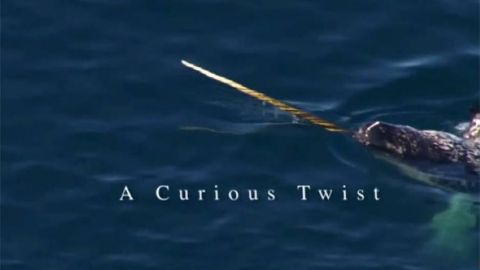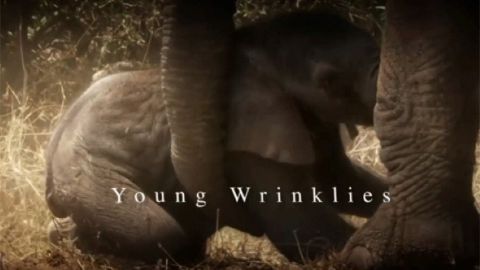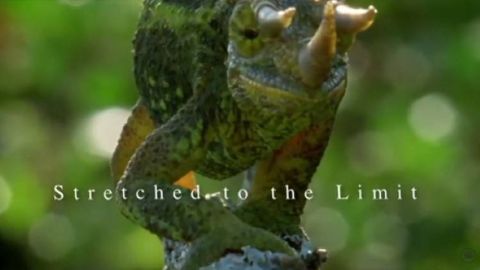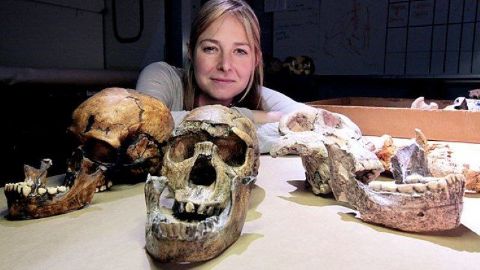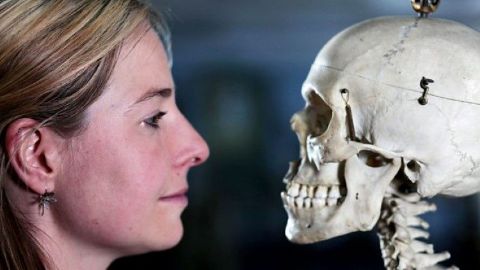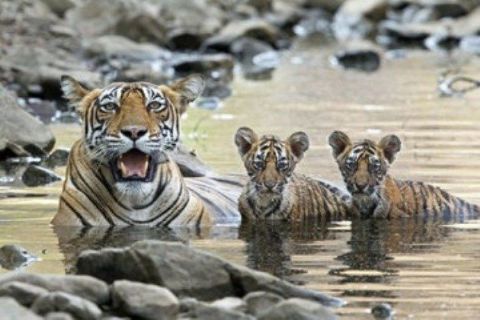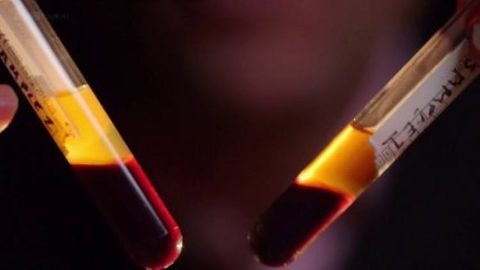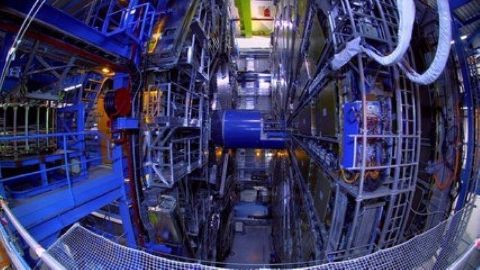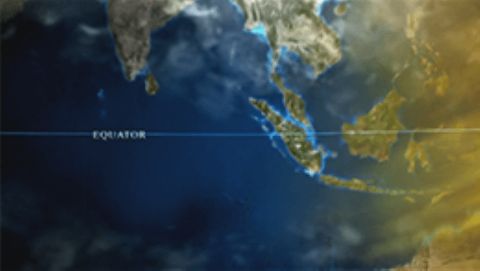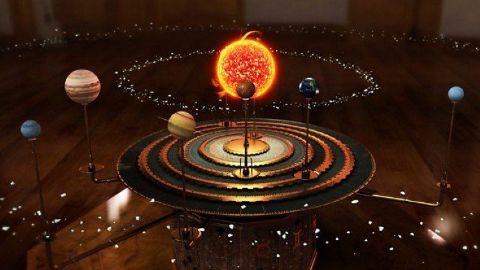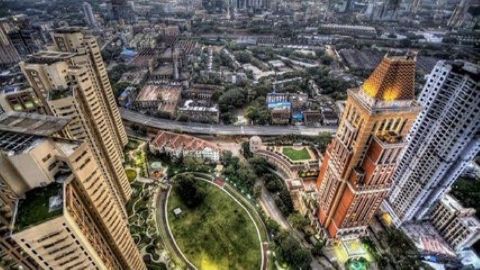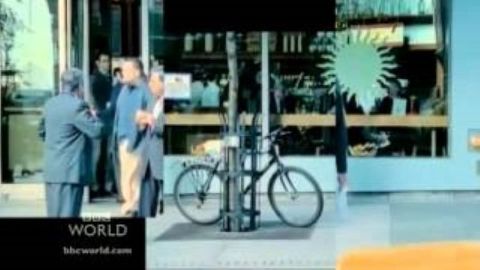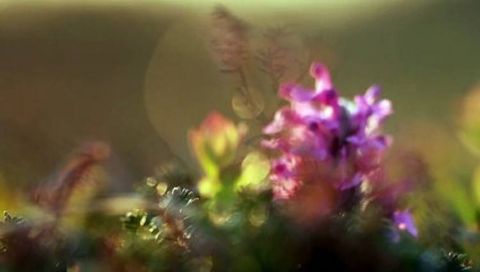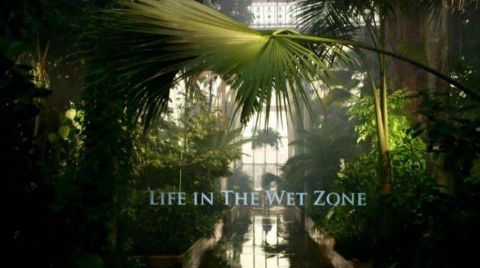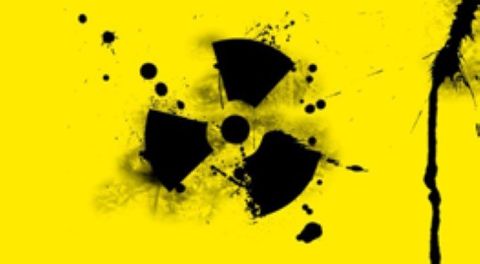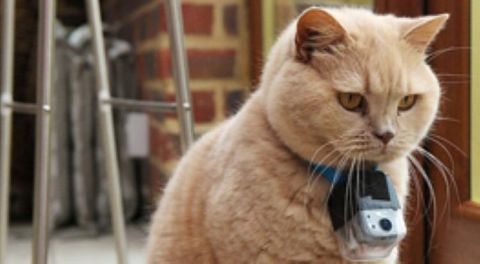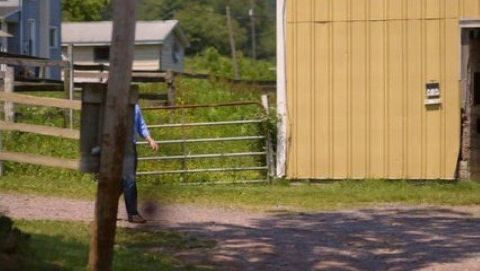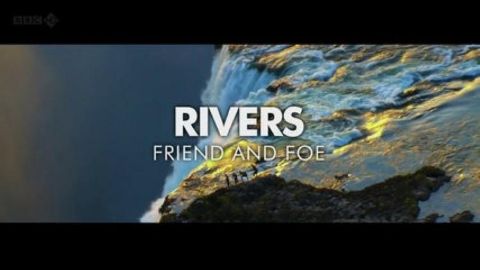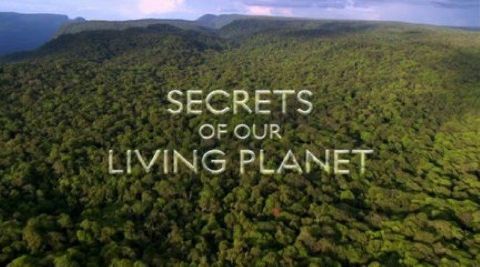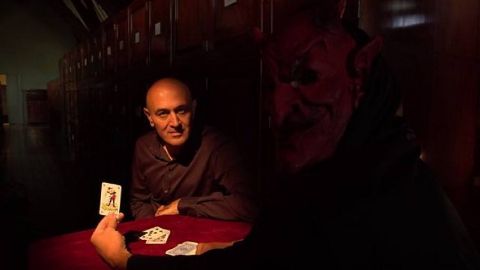BBC (747 videos) • 747 videos
BBC Scotland's political editor Glenn Campbell fell off his bike in June 2023. Alone on a country road with broken bones, he feared for his life and felt he'd had a lucky escape when help came his way. But six weeks after his accident, just as he was getting ready to go back to work, he had a seizure. He was diagnosed with incurable brain cancer, turning his world as he knew it upside down. In this film, Glenn shares his experience of living with a brain tumour and explores why treatments for the condition have barely changed in many years. Early in his cancer journey, Glenn realised there was nothing he could do to change his health outcomes, but the one thing he could do was tell his story. Glenn says, 'It's a golden rule as a journalist not to become the story, but in this case, I just felt that it was worth sharing my personal experience as a way of putting a bit of a spotlight on this most difficult of cancers.' Supported by family, friends and colleagues, Glenn has documented his story during what has been a very difficult year of gruelling treatment and endless uncertainty. Following surgery, which saw his malignant tumour removed successfully, he embarked on radiotherapy and chemotherapy. He also lives with the constant threat of seizures and has made the decision to share some very personal footage filmed while in the midst of one such episode. Brain cancer is the biggest cancer killer of people under 40. Every day, 33 people in the UK are diagnosed with a brain tumour. Motivated by his own shortened lifespan and the stories of friends made in the cancer community, Glenn has spent a huge amount of time and energy in the past year raising awareness of this often-misunderstood cancer. In this intimate film, we see the committed newsman in a different light as he faces down his mortality and considers what matters most in life. Sitting on the beach at Machir Bay on Islay – the island he hails from – he reflects: 'You realise what really matters, and maybe what doesn't quite so much. What really matters is family and friends and good times and making memories, and what maybe doesn't matter is the hubbub of everyday life, work and chores. I think being told you've got a life-limiting condition really puts that into perspective.'
2024 • Health
Artificial intelligence now permeates every aspect of our lives, but only a handful of people have any control over its influence on our world. With unique access to some of the most powerful pioneers of the AI revolution, iHuman asks whether we know the limits of what artificial intelligence is capable of and its true impact.
2023 • Technology
The launch of the BBC's ambitious seven-year natural history project, in which six presenters visit six of the planet's most threatened ecosystems to meet the people fighting to restore the Earth's delicate balance. Chapter 1: Steve Backshall travels to the Maldives, an area facing significant challenges because of climate change. Warming seas and the acidification of the oceans have led to coral bleaching on a massive scale, destroying the surrounding ecosystem. The biodiversity of the reefs provides food security, income and other benefits to the people of the Maldives, and Steve finds that they are working hard to try to stem the tide of destruction. He also goes diving off the reefs to check on a group of manta rays, whose presence offers a clear indication of the health of the reef. In Iceland, Chris Packham learns more about the effects of global warming. Temperatures in the Arctic are rising at more than twice the annual global average. Snow and ice are melting at an increasing rate, which contributes to rising sea levels and is likely to provoke extreme temperature events beyond the Arctic. As one of the eight Arctic States, Iceland is being dramatically affected by rising temperatures, with the lives and livelihoods of many islanders being threatened. Chris also discovers that melting sea ice is opening the Arctic to navigation. These seas are home to many species of whales, so Chris joins a team of young scientists monitoring the impact of increased commercial shipping on humpback whales. On the other side of the world, Ella Al-Shamahi visits Cambodia in Southeast Asia, an area experiencing increasing economic growth. However, growth is putting massive pressure on natural resources, with ever-expanding cities and devastating overexploitation of the natural world. The Mekong river is the lifeblood of this region, but whole sections of it are under pressure. Ella meets a fishing community living on the Tonle Sap lake. The lake used to offer rich fishing grounds for local communities, but the construction of many dams along the wider Mekong is now threatening to destroy the biodiversity of this once abundant lake. The building of new roads has given poachers easier access to forests, and the illegal wildlife trade is big international business. Ella visits a project in Cambodia that rescues and rehabilitates illegally trafficked wildlife, including pangolins, the most trafficked mammal on Earth. Chapter 2: Liz Bonnin travels to California to learn about the increasingly invasive wildfires hitting the headlines. Scientists can see clear links between the fires, climate change, raised temperatures and an extended drought season. There is one crucial element that is key to a sustainable future in California: biodiversity. Loss of keystone species and large carnivores is a threat to the state's ecosystems, and conservationists and scientists are mobilising to save wildlife from wildfires and to treat their burns. Liz also visits the Pacific coast of California, where warming seas have brought with them a new resident, great white sharks. With each shark consuming up to 18 kilos of prey at a time, the impact they could have on the marine ecosystem is being studied intently. Ade Adepitan travels to Kenya to look at the effects rising temperatures are having on the land. Hundreds of millions of Africans depend on rainfall to grow their food and keep livestock, and the capacity for adaptation is low. Ade also visits a project in Kenya that is going to extraordinary lengths to safeguard the future of its most charismatic creature, the African elephant. Over in Brazil, Gordon Buchanan discovers a pioneering project that is trying to save one of the Amazon's iconic predators, the jaguar. Brazil is the most biodiverse country in the world, and as well as the Amazon rainforest, it is home to one of the world's most important wetlands, the Pantanal. This area is home to high numbers of jaguars, but in 2020, wildfires destroyed 30 per cent of the Pantanal, killing an estimated 17 million animals. More than a quarter of the resident jaguars were directly impacted by these fires, through habitat loss, food shortages, injury and death.
2022 • Environment
How did a poor boy from a tiny flat in St Petersburg become one of the world's most powerful leaders? Admired by Trump and feared by his rivals, on the eve of his almost certain re-election as president of Russia, this film reveals the story of Vladimir Putin's extraordinary rise to power - from a lowly KGB colonel to Boris Yeltsin's right-hand man and ultimately his successor. There are revelations from Putin's inner circle at the Kremlin, including former confidante Sergei Pugachev, who helped Putin to power before falling from favour. Chess master Gary Kasparov recounts his failed attempt to stand against him and oligarch Mikhail Khordokovsky, who was jailed and stripped of his wealth, speaks of the consequences of experiencing the wrath of Putin. The programme also hears from former home secretary Jack Straw, who recalls Putin's first encounter with Tony Blair - the leader Putin apparently attempted to model himself on. Straw wryly observes that the two are 'very similar'. Former foreign secretary William Hague entertained Putin during the London 2012 Olympic Games and bonded over a shared love of judo - but later found himself unable to influence the decision made to invade Crimea.
2018 • People
Ch1. Oceans In Cape Verde, Gordon starts the adventure with a look at one of the world's largest populations of nesting loggerhead turtles. He then heads to the Bahamas with Caribbean reef sharks, California to see young elephant seals and the British Isles to attach featherweight cameras to a squadron of gannets. Ch2. Australia In New South Wales, Gordon encounters a marsupial facing a complex set of challenges when he meets a population of kangaroos that are being pushed to the very brink by a coastal development boom. How are they surviving on the edge of this urban expansion? Gordon meets the scientists driven to find out more about what the roos are feeding on as they are pushed onto the coastal fringes. As we become immersed in their world, we get a better understanding of kangaroos' social lives and the impact of human encroachment on their diet. In southern Australia, we head to Adelaide, where one of the team's toughest challenges yet is to create the lightest of cameras to find out what the lure of the big city is to a colony of newly arrived fruit bats. Their appearance is a bit of a puzzle. Are they a threat to the local commercial fruit crops or have they found other ways to adapt to city life? For the first time ever, the fruit bats take our cameras up above the cityscape, showing us a unique view of their nocturnal worlds while providing information crucial to their future. In Queensland, we help scientists find out if koalas really deserve their dozy daytime reputation when we join researchers at a reserve to discover some incredible revelations surrounding their night-time manoeuvres. The team's tech allows us to shadow them after sundown, unveiling their remarkable agility and surprising navigational skills. Specially designed with tree-hugging in mind, koalacams offer an insight which could help koalas as we find out what they need to survive - not just here, but elsewhere in the country.
Animals with Cameras • 2021 • Nature
In the heart of the Atlantic, Gordon Buchanan joins a team looking to discover why huge numbers of devil rays, fish with 'wings' nearly four metres across, and gather every summer near the Azores archipelago. In northeast Turkey the on-board cameras are carried by brown bears as part of a study trying to understand why so many bears survive in a small patch of forest. In southern France on-board cameras help scientists trying to prove that guard dogs can help protect sheep flocks from wolf attacks. The night-vision cameras show how the dogs work together as a team to fend off the wolves.
Animals with Cameras • 2018 • Nature
In Namibia, Gordon joins a cheetah conservationist who wants to see if three orphaned cheetahs, which she has raised from a day old, can learn to hunt effectively in the thick vegetation. The on-board cameras, the first to ever be worn by cheetahs hunting in Africa, In Australia, the team puts cameras on fur seals to try to see how they hunt their prey and avoid attacks by great white sharks. In South Africa, we deploy the first ever cameras on wild baboons in an effort to understand why these clever monkeys sometimes raid farmers' crops.
Animals with Cameras • 2018 • Nature
In the first episode, the team uncover the hidden lives of three iconic animals. In the Kalahari Desert the team put cameras on wild meerkats for the first time, allowing scientists to finally understand what these miniature mammals get up to underground. Heading to Cameroon, Gordon works with scientist Mimi Swift, who is desperate to understand whether Kimbang, a four-year-old orphan chimp, has the skills she needs to be able to join a chimp family living wild in the forest. Leaving Africa for Argentina, the team have penguins carry tiny cameras far out to sea on an epic journey of up to 300 kilometres (200 miles). For the first time, scientists are able to see the tactics these charismatic characters use to catch their prey.
Animals with Cameras • 2018 • Nature
Liz Bonnin introduces a cast of charismatic animals to reveal the remarkable strategies they use to survive, and even thrive, in winter. For animals this is the toughest time of year, and preparations start early. In autumn, Siberian chipmunks collect food in their cheek pouches to stockpile in their burrows, while caribou make an epic journey to new feeding areas away from the worst weather. With the arrival of winter, the American bobcat has to find its prey beneath deep snow, while an Arctic fox must sniff out its very own frozen ready meal. A sea otter mum keeps her cub warm by blowing air into its coat, while some animals turn white to blend in with the snowy world around them. As winter begins to loosen its grip, an Arctic ground squirrel stirs from an eight-month hibernation and has to woo its mate in just twelve hours, and baby animals emerge to play in the snow before spring's imminent arrival. Along the way, Liz meets some of our most iconic winter animals to uncover the secrets behind their seasonal success stories.
2019 • Nature
In episode three, Fortey looks at the Ice Age. 2.8 million years ago - triggered by slight changes in the Earth's orbit around the sun and shifts in its ocean currents - the world began to cool. Within a few thousand years much of the planet was shrouded in a dense cloak of ice that would come and go until only 10,000 years ago. We call this age of ice - the Pleistocene Age - and it transformed the hierarchy of nature. This is the story of how a few specialist species that evolved to live in the biting cold survived into the present day.
Survivors: Nature's Indestructible Creatures • 2012 • Nature
Professor Fortey travels across the globe to find the survivors of the most dramatic of these obstacles - the mass extinction events. In episode two, Fortey focuses on the 'KT boundary'. 65 million years ago, a 10 km diameter asteroid collided with the Earth and saw the end of the long reign of the dinosaurs. He investigates the lucky breaks and evolutionary adaptations that allowed some species to survive the disastrous end of the Cretaceous Age when these giants did not
Survivors: Nature's Indestructible Creatures • 2012 • Nature
It is estimated that 99 per cent of species have become extinct and there have been times when life's hold on Earth has been so precarious it seems it hangs on by a thread. This series focuses on the survivors - the old-timers - whose biographies stretch back millions of years and who show how it is possible to survive a mass extinction event which wipes out nearly all of its neighbours. The Natural History Museum's Professor Richard Fortey discovers what allows the very few to carry on going - perhaps not for ever, but certainly far beyond the life expectancy of normal species. What makes a survivor when all around drop like flies? In this episode Professor Fortey focuses on a series of cataclysms over a million year period, 250 million years ago
Survivors: Nature's Indestructible Creatures • 2012 • Nature
Tells the story of the first mammal to be cloned and the impact this monumental scientific achievement in 1996 had on the world. Featuring previously unseen footage, the film reveals how a handful of the world's best genetic scientists worked in secret on a small Scottish farm to crack the holy grail of replicating life.
Account of the ill-fated Canadian Arctic Expedition of 1913 when a group of scientists were sent to the Arctic to look for a new continent on the eve of WWI, an astonishing story of disaster and perseverance. On board were 10 scientists, 13 crewmembers, four Inuit hunters, one seamstress, her two children, and one passenger. Of these, 11 never returned and most were not heard from again until September 1914.
2007 • Environment
With 2021 set to be the hottest year on record, millions of people around the world will have their health, livelihoods, and lives endangered by high temperatures. This documentary explores the devastating impact extreme heat has across the globe, and tells the human stories behind climate change, from water shortages in impoverished areas, to people being forced from their homes to escape life-threatening temperatures.
This World • 2021 • Environment
It’s the ultimate question: why are we here? Cutting-edge space missions take us back 13.8 billion years to the very beginning – the origin of the Universe.
Universe BBC • 2021 • Astronomy
Professor Brian Cox journeys into a supermassive black hole - a monster that can destroy worlds and stop time, and which is forcing us to reassess our understanding of reality.
Universe BBC • 2021 • Astronomy
A space mission discovers the dramatic history of the Milky Way. Professor Brian Cox reveals how our galaxy endured multiple collisions as rival galaxies fought for survival.
Universe BBC • 2021 • Astronomy
Professor Brian Cox questions whether we are alone in the universe. There might be more planets than stars in our galaxy - but will we find a second Earth?
Universe BBC • 2021 • Astronomy
Since the first star lit up the universe, they have been engines of creation. Professor Brian Cox reveals how, ultimately, stars brought life and meaning to the universe.
Universe BBC • 2021 • Astronomy
Freshwater is often the stage on which millions of animals gather to find a mate. And the cycle of freshwater is the trigger for spectacular mating rituals and fierce competition.
The Mating Game • 2021 • Nature
Jungles are home to 80% of all species but they cover just 2% of the planet. When animals in these crowded forests want to mate, the challenge is how to stand out from the crowd.
The Mating Game • 2021 • Nature
The Ocean is where life first experimented with the Mating Game, and over time this has led to some of the most ingenious mating strategies of all!
The Mating Game • 2021 • Nature
The grasslands of our planet are some of the most challenging habitats for playing the Mating Game. They are an open stage where potential partners and jealous rivals can witness your every move… and every failure.
The Mating Game • 2021 • Nature
This is an astonishing tale of perseverance and ingenuity that reveals how scientists have battled against the odds for almost a century to detect and decode the neutrino, the smallest and strangest particle of matter in the universe. Inside the world-renowned physics laboratory Fermilab, a team of scientists are constructing an audacious experiment to hunt for a mysterious new 'ghost' neutrino. If they find it, this could transform our understanding of the nature and fabric of our universe. The problem is, these tiny particles are almost impossible to detect. Elsewhere, physicists conduct experiments in some of the most extreme environments on the planet: from deep mine shafts in South Dakota to vast ice fields at the South Pole. In these unlikely places supersized neutrino detectors hope to unlock the universe's deepest secrets. Could neutrinos overturn the most precise theory of particle physics that humans have ever written down? Could they even be a link to a hidden realm of new particles that permeate the cosmos - so called dark matter? Scientists at Fermilab are edging towards the truth.
2021 • Physics
[3 parts] Steve Backshall explores the world of insects and their close relatives, the arachnids and crustaceans, in order to find out more about their habits and secrets. Ch1. Them and Us Steve Backshall explores the connections and relationships humans have with insects and their close relatives, the arachnids and crustaceans. He begins by revealing how huge armies of driver ants give houses a five-star clean-up in Kenya, while in China, silkworm caterpillars are credited with shaping culture and distribution. He also explains that, despite people's perceptions of these creepy-crawlies, mankind could not live without them. Ch2. Making Worlds Steve Backshall explores the influence that insects and their close relatives, the arachnids and crustaceans, have on the planet's many ecosystems. He reveals how the landscape of South America's grasslands has been created almost solely by one team of bugs - grass-cutter ants - while in east Africa, the savannah would quickly become swamped in dung were it not for the activities of a particular beetle. He also contemplates the idea that without one tiny creature, the blue whale could not exist. Ch3. The Secrets to Their Success Steve Backshall explores why an estimated 10 million species of insects are so abundant, and examines the secrets of their success. In Yellowstone National Park, he reveals how teamwork enables a colony of bees to scare off a hungry bear, and he travels to the Swiss Alps to highlight the relationship between ants, wasps and butterflies.
2013 • Nature
Brian believes we are at the start of a new age of space travel, where space flight is on the verge of becoming routine. In this episode, he explores the latest science and takes a new look at his old films and asks: how far can we go in our exploration of the cosmos?
David Attenborough concludes his documentary series with a programme about our closest animal relatives, the intelligent great apes, and finds out how their large brains enabled one of their kind, an upright ape, to go on to dominate the planet. David travels to the forests of Borneo to meet a remarkable orangutan with a passion for DIY and a talent for rowing boats. He shifts continent to Africa and takes part in a special nut-cracking lesson with a group of chimps learning survival skills. He discovers how food - and the ways apes find it - has been key to the evolution of our large brains.
The Life of Mammals • 2008 • Nature
In the penultimate episode, David Attenborough looks at monkeys. This group started its life in the tree-tops and this is where we join the capuchin, whose acute vision and lively intelligence helps them find clams in the mangrove swamps of Costa Rica and crack them open on tree-anvils. The swamps are also full of biting insects, but the monkeys rub themselves with a special plant that repels them.
The Life of Mammals • 2008 • Nature
David Attenborough meets the omnivores - the opportunists. When it comes to food, this diverse range of animals, which includes grizzly bears at one end and rats on the other, are so adaptable that they can always make the most of whatever happens to be around at the time. They are nature's generalists but each is equipped with some very specialised skills.
The Life of Mammals • 2008 • Nature
Rodents like rats, mice and squirrels are the most numerous mammals on the planet. This programme reveals how, with their constantly growing, chisel-sharp front teeth, they are specialists in breaking into seeds. It also shows how they have adapted this talent to help them make their homes and even live underground, as well as revealing their ability to store food - and their ability to breed prolifically.
The Life of Mammals • 2008 • Nature
Some of the biggest predators to walk the earth face a constant battle - their prey is heavily armoured, indigestible and sometimes even poisonous. What makes this struggle more remarkable is that these predators do not prey on animals - but on plants.
The Life of Mammals • 2008 • Nature
Mammals have adapted to live almost anywhere - from freezing polar regions, to the hottest deserts and from steaming jungles, to the world's vast oceans. They survive on a great variety of different foods and it's what they eat that so often determines their behaviour - and that of course, includes our own.
The Life of Mammals • 2008 • Astronomy
This episode discusses the human exploration of Antarctica, in particular the mission led by Captain Robert Falcon Scott, whose team died on the way back from the South Pole. It shows the scientific work in the modern human bases in Antarctica, especially Mawson Base and its observation of Adelie Penguins (partially through tracking devices).
Life in the Freezer • 2003 • Nature
As almost all animal inhabitants of Antarctica are forced to migrate north, the sea underneath the frozen ice still provides a home to many specially adapted fish whose cells are protected from freezing through an "antifreeze" liquid. Many of them feed on the faeces of other animals. The most notable larger animal that does not migrate north is perhaps the Weddell Seal, which can be found as close as 1300 kilometres to the pole. Groups of seals tear holes into the ice to dive for food and come up to breathe. The females come back to the ice to give birth.
Life in the Freezer • 2003 • Nature
This episode describes the migration of most animals northwards (some from the Antarctic continent, others from the few islands surrounding it) as the continent and surrounding sea freeze over at the end of summer. It shows how young penguins often fall prey to Leopard Seals as they try to make their way across the already partially frozen water and how their stripped remains become food for isopods and meter-long nemerteans (ribbon worms). Before going to the sea, however, the adult penguins must shed their coats (molting).
Life in the Freezer • 2003 • Nature
Almost all life in the region breeds in summer. A growing colony of fur seals on a beach in South Georgia resembles that of elephant seals shown in the previous episode. The pups grow fast on the rich, fatty milk provided by their mothers and double their weight in just sixty days. As the females become sexually available, the mating season begins and males try to claim territory and mate with females. Like elephant seals, fur seals fiercely attack all competitors.
Life in the Freezer • 2003 • Nature
Elephant seals are the first animals to return to the beaches of the subantarctic islands in spring, forming large breeding colonies, where the males fight fierce battles to gain and retain permanent access to a large number of females. They mate with the females as soon as they are receptive again. Millions of Macaroni Penguins form huge colonies on the islands to breed.
Life in the Freezer • 2003 • Nature
The first episode introduces the viewers to the continent of Antarctica and the surrounding sea and islands, its glaciers and the icebergs that form from it. It describes how the continent changes throughout the seasons, as it effectively doubles in size in winter when the surrounding sea freezes over, "the greatest seasonal change that takes place on this planet".
Life in the Freezer • 2003 • Nature
In this final installment to the series, David Attenborough travels to four unique locations about the globe where an abundance of fossilized plant and animal remains have given us a detailed picture of what life could have been like in prehistoric times. Each of the sites experienced its own set of circumstances which enabled it to preserve many perfect specimens for extraction and analysis. Piecing together the collected evidence, paleontologists have been able to determine early animal hierarchies, their diets and their evolutionary paths.
Lost Worlds, Vanished Lives • 1989 • Nature
Attenborough visits several museums of natural history. With the aid of dinosaur skeletons, he demonstrates how they existed in real life, and speculates about the reasons for their sudden demise.
Lost Worlds, Vanished Lives • 1989 • Nature
2nd prog in series about fossils. David Attenborough investigates some fossil mysteries - could pterodactyls fly? And why did trilobites have such good eyes?
Lost Worlds, Vanished Lives • 1989 • Nature
First prog in series about fossils. David Attenborough travels in UK, Dominican Republic, West Germany & USA in search of fossils, & the palaeontological techniques to find and reveal them.
Lost Worlds, Vanished Lives • 1989 • Nature
David Attenborough reveals the bizarre adaptations which have helped amphibians break their ties with water as he meets marsupial frogs, show-off newts and giant salamanders.
Life in Cold Blood • 2008 • Nature
Dr Martha Holmes looks at man's influence on the oceans. Is there a solution so that we can save our seas or is it too late to get us out of Deep Trouble?
Blue Planet I • 2001 • Nature
Revealing the titanic efforts behind Blue Planet, this diary reveals the skills and dedication of the film makers.
Blue Planet I • 2001 • Nature
David Attenborough narrates a natural history of the oceans, examining how animals from in and around the sea use the constantly changing coastal areas.
Blue Planet I • 2001 • Nature
As snails surf the waves in pursuit of a meal, how do the tides create opportunities for marine life?
Blue Planet I • 2001 • Nature
Developed over centuries, coral reefs house fragile ecosystems, but they too have to fight to survive.
Blue Planet I • 2001 • Nature
David Attenborough narrates a natural history of the oceans, exploring the richest waters on Earth, where the annual cycle of the sun drives an explosion of life.
Blue Planet I • 2001 • Nature
A look at the survival techniques of creatures that endure the harsh conditions of the Arctic and Antarctic.
Blue Planet I • 2001 • Nature
David Attenborough narrates a natural history of the oceans. The deadly game of hide-and-seek played by the sea's charismatic hunters - whales, shark and billfish.
Blue Planet I • 2001 • Nature
David Attenborough narrates a natural history of the oceans to uncover the strange, otherworldly creatures living in the depths of the ocean.
Blue Planet I • 2001 • Nature
The ocean's influence dominates the world's weather systems and supports an enormous range of life. This first episode demonstrates the sheer scale, power and complexity of the "Blue Planet".
Blue Planet I • 2001 • Nature
A film following a young meerkat queen living in the harsh beauty of the Makgadikgadi salt pans. If her new pups are to survive, she must unite her family in the face of rivals, predators and immense dust storms.
Stephen Fry and the zoologist Mark Carwardine follow attempts to move the world's rarest rhinos from a snowy zoo in the Czech Republic, to the expanses of Kenya in the hope that they will breed in the wild. With only eight of these creatures left on earth, the mission becomes a race against time to save the Northern White Rhino from extinction.
Last Chance to See • 2010 • Nature
In the climax of the expedition, the team prepares to explore a 100-meter chasm at the very bottom of the river. Underwater robots take cameras down the abyss and find the deep water flesh-feeding candiru.
Amazon Abyss • 2005 • Nature
The team has come to the very deepest part of the jungle, where streams contain the richest life, as well as danger, from four-metre caiman and the electric eel - a fish with a 600 volt shock.
Amazon Abyss • 2005 • Nature
Mike and his team confront an armour-plated catfish, discover a 45-metre hole in the riverbed and come face to face with an anaconda.
Amazon Abyss • 2005 • Nature
The team are on a quest to find a fish that talks and the candiru - a parasitic catfish notorious for invading the human body. Kate heads deep into the jungle to film a rare freshwater dolphin and track down the elusive giant otter.
Amazon Abyss • 2005 • Nature
Hunting for it in the piranha-infested waters looks like no fun at all, but some of the images we see of astonished fish along the way are brilliant.
Amazon Abyss • 2005 • Nature
As the expedition team near the end of their journey across Micronesia, it's a race against time for the extreme deep divers as they continue their search for new species. As Kate Humble explores the Rock Islands of Palau, Mike DeGruy embarks on a unique training programme. The Newtsuit is an incredible feat of submarine engineering - a bright yellow one-man submersible that Mike has to master before he can venture even deeper into the Pacific abyss.
Pacific Abyss • 2008 • Nature
Off the coast of Micronesia, Kate Humble and her scuba team continue to discover spectacular examples of underwater life. Meanwhile, the deep-sea divers search for previously unseen fish in depths that test the limits of human endurance, but their explorations are hindered by an unexpected equipment failure.
Pacific Abyss • 2008 • Nature
Kate dives to some of the most intact shipwrecks left by World War II, while it is one drama after another for the deep dive team in their quest to find new species.
Pacific Abyss • 2008 • Nature
See the extraordinary wildlife and people of the Andes. Pumas hunt guanaco, shape-shifting frogs hide in remote cloud forests and the descendants of Inca build bridges of grass. The world’s driest desert, huge salt lakes and spectacular peaks are all found in the world’s longest mountain range.
Kingdoms of the Sky • 2021 • Nature
Tour the extraordinary wildlife and people of the Himalaya – the highest mountain range on earth. Bizarre snub-nosed monkeys live in frozen forests. Tibetan monks perform ancient rituals high in the mountains whilst snow leopards prowl the mountain sides.
Kingdoms of the Sky • 2021 • Nature
The Rockies stretch 3,000 miles up the length of North America, and are one of the great mountain ranges of the world. These mountains are home not just to cougars, wolverines, wolves, and grizzly bears, but also daredevil wingsuit flyers, which jump from high peaks, and Native Americans, competing in breakneck horse races.
Kingdoms of the Sky • 2021 • Nature
Dr George McGavin and Dr Zoe Laughlin set up base camp at one of the UK's biggest sewage works to investigate the revolutionary science finding vital renewable resources and undiscovered life in human waste. Teaming up with world-class scientists, they search for biological entities in sewage with potentially lifesaving medical properties, find out how pee can generate electricity, how gas from poo can fuel a car and how nutrients in waste can help solve the soil crisis. They follow each stage of the sewage treatment process, revealing what the stuff we flush can tell us about how we live today, and the mindboggling biotechnology being harnessed to clean it, making the wastewater safe enough to return to the environment.
Horizon • 2021 • Environment
For the last leg of their journey, the team search for the most iconic animal of them all, the tiger. To find it, they must split up. Wildlife camerawoman Justine Evans and the science team head to the tangled jungles of northern Burma, one of the largest swathes of unbroken forest in Southeast Asia. Wildlife cameraman Gordon Buchanan heads to the only other place in Burma where tigers may still exist, the far south. The forests of Karen State were once home to a thriving population of tigers, but this region has been isolated by war for over 60 years and little is known about the fate of the animals. The team must overcome intense physical hardship and tough field conditions to find the evidence they need to help preserve this unique and largely untouched wilderness. What they discover could change the future of Burma's forests forever.
Wild Burma: Nature's Lost Kingdom • 2013 • Nature
On the second leg of their journey, wildlife filmmakers Gordon Buchanan and Justine Evans, along with a team of scientists, head deep into the mountains of western Burma. This is where they hope to find the shy sun bear and two of the world's rarest and most beautiful cats: the Asian golden cat and the clouded leopard. Meanwhile, zoologist Ross Piper and the science team are on a mission to create a wildlife survey to present to the government of Burma to persuade them that these forests are so unique they must be protected. High on the forest ridges, Gordon finds evidence to suggest that Burma's wildlife might be in danger. Undercover filming in a border town known as the 'Las Vegas of the jungle' leads to a shocking discovery.
Wild Burma: Nature's Lost Kingdom • 2013 • Nature
On the first leg of their journey, wildlife filmmakers Gordon Buchanan and Justine Evans set out to discover whether the mountains of western Burma are home to a population of Asian elephants that could prove critical to the survival of the species. Finding elephants in a dense bamboo forest is a challenge. Notoriously grumpy, Asian elephants are likely to charge if caught unaware. It is a race against time as the world eyes up Burma's natural riches - what the team finds could change the future of Burma's wilds forever.
Wild Burma: Nature's Lost Kingdom • 2013 • Nature
Following extraordinary rumours of tigers living in the mountains of Bhutan, the expedition shifts to high altitude. Cameraman Gordon Buchanan captures remarkable footage of a snow leopard cub from over 5,000 metres in the air. Along the Tibetan border, explorer Steve Backshall treks to the mystical Tiger Mountain, where he has a very close encounter with the world's most elusive predator.
Lost Land of the Jaguar • 2009 • Nature
The team pushes further into the jungle wilderness, searching for unusual and endangered animals that live there. Base camp is invaded by scorpions and poisonous centipedes, while Gordon Buchanan discovers an animal thief helping itself to base camp supplies.
Lost Land of the Jaguar • 2009 • Nature
Cameras follow the team every sweaty step of the way as they explore the beautiful wilderness of Guyana, from abseiling down one of the most powerful waterfalls in the world to climbing to the very top of the rainforest trees. Known as the land of giants, Guyana is home to the huge anaconda, the world's largest tarantula and giant otters.
Lost Land of the Jaguar • 2009 • Nature
Wildlife series. Steve Backshall descends into the crater of a giant extinct volcano in New Guinea which biologists have long believed could be home to spectacular new creatures.
Lost Land of the Volcano • 2009 • Nature
Wildlife series. The team push deeper into the rainforest, enlisting the help of a tribe to find and film the birds of paradise as they perform their courtship displays.
Lost Land of the Volcano • 2009 • Nature
A team of scientists and film-makers explores the jungle wilderness of New Guinea. Wildlife cameraman Gordon Buchanan discovers the nest of the world's smallest parrot.
Lost Land of the Volcano • 2009 • Nature
Using the latest camera technology, David Attenborough reveals the extraordinary ways in which animals use colour: to win a mate, to fight off rivals and to warn enemies.
Attenborough's Life in Colour • 2021 • Nature
In this third Horizon special, Dr Chris Van Tulleken is joined by his brother Xand and Dr Guddi Singh to take us through the latest developments and answer current concerns. Though the effect of the coronavirus pandemic has been devastating to many, the team reveal the breakthroughs in genetics, medicine and modelling that have provided a way out of this situation and given hope and confidence that, in the event of a future pandemic, we can take it on and win.
In the final part, Professor Al-Khalili uncovers tales of success and heartache in the story of chemists' battle to control and combine the elements, and build our modern world. He reveals the dramatic breakthroughs which harnessed their might to release almost unimaginable power, and he journeys to the centre of modern day alchemy, where scientists are attempting to command the extreme forces of nature and create brand new elements.
Chemistry: A Volatile History • 2010 • Science
In part two, Professor Al-Khalili looks at the 19th century chemists who struggled to impose an order on the apparently random world of the elements. From working out how many there were to discovering their unique relationships with each other, the early scientists' bid to decode the hidden order of the elements was driven by false starts and bitter disputes. But ultimately the quest would lead to one of chemistry's most beautiful intellectual creations - the periodic table.
Chemistry: A Volatile History • 2010 • Science
Just 92 elements made up the world, but the belief that were only four - earth, fire, air and water - persisted until the 19th Century. Professor Al-Khalili retraces the footsteps of the alchemists who first began to question the notion of the elements in their search for the secret of everlasting life. He reveals the red herrings and rivalries which dogged scientific progress, and explores how new approaches to splitting matter brought us both remarkable elements and the new science of chemistry.
Chemistry: A Volatile History • 2010 • Science
Cameras travel to the Arctic and Antarctic circles, following chicks in a king penguin colony on the island of South Georgia in the Southern Ocean. On the other side of the world, Spy Walrus discovers a walrus family hauled out on an ice floe, before Spy Gyrfalcon follows the family as they head towards dry land. Elsewhere on Norway's Hornoya island, Spy Puffin follows thousands of male puffins as they gather in the snow and search for their life-long partners.
Spy in the Wild • 2020 • Nature
On Christmas Island, the Spy Crab camera walks among red crabs as they march into the sea, and in Madagascar, cameras follow many of the species of chameleon that live there. Meanwhile on Seal island off the tip of South Africa, Spy Seal Pup finds itself in the midst of the 60,000 cape fur seals that have come ashore to raise their young.
Spy in the Wild • 2020 • Nature
Cameras follow Japanese macaques in the snow-covered mountains of Japan, as they gather at steaming hot thermal pools to bathe and socialise. Elsewhere in the cool mountains of Mexico, cameras capture a spectacular gathering of billions of monarch butterflies, and in Bavaria, Germany, Spy Beaver gains unique access to the secretive world of the beaver.
Spy in the Wild • 2020 • Nature
Cameras follow a family of gorillas, with Spy Grub and Spy Fruit testing their intelligence. Elsewhere in Brazil, Spy Jaguar Cub explores a beautiful gathering of water birds, capybara and caiman, and joins Spy Caiman to film a feeding frenzy.
Spy in the Wild • 2020 • Nature
How Earth's five oceans connect to form the largest ecosystem on the planet, and how its network of currents supports the health of the seas and marine wildlife.
A Perfect Planet • 2021 • Nature
Dawkins discusses his book, the Selfish Gene, which divided the scientific community and made him the most influential evolutionary biologist of his time. Professor Richard Dawkins is one of the most well-known and controversial scientists in Britain. A passionate atheist he believes science rather than religion offers us the best way to appreciate the wonders of the Universe we live in. In the last 10 years he has become notorious for his outspoken views on religion, but at the heart of his success is his explosive first book -- The Selfish Gene -- which put forward a radical rewriting of evolutionary theory and divided the scientific community. Much of the controversy comes from its provocative title.
Beautiful Minds • 2012 • People
Professor Andre Geim is a condensed matter physicist at the University of Manchester. His life's work has been to gain a better understanding of the materials that make up the world around us. While just one subject can be a scientist's life's work, Andre has made switching fields a feature of his career. But while straying from the conventional path can be risky for a scientist, Andre has repeatedly turned it to his advantage. His "let's try it and see" approach means he's the only individual winner of the both the Nobel and the more light hearted Ig Nobel Prizes. He won the Nobel Prize for Physics in 2010 for uncovering the extraordinary properties of a material called graphene, but Geim can also lay claim to seeding two other new areas of physics research--levitation and gecko tape.
Beautiful Minds • 2012 • People
Jenny Clack recounts how she overcame setbacks before she found and described a fossil which offered new evidence of how fish made the transition onto land. For paleontologist Professor Jenny Clack, who solved one of the greatest mysteries in the history of life on Earth, success was far from inevitable. A chance discovery in 1986 in the earth sciences department of Cambridge University, of long-forgotten fossils collected from the Devonian rocks of East Greenland in 1970, was to shape the rest of her career. She recounts how she had to overcome a series of setbacks before she found and described the fossil Acanthostega, a 365 million-year-old creature that offered dramatic new evidence of how fish made the transition onto land. She authored or co-authored more than 120 research papers as well as numerous popular articles and book reviews. A measure of the significance of her work is that 15 of her research papers were published in the journal Nature. Her one book, "Gaining Ground, The Origin and Evolution of Tetrapods" (2002), summarises the results of research on early tetrapods over the previous 25 years.
Beautiful Minds • 2012 • People
Sir Tim Hunt, awarded the Nobel Prize for his discovery of the mechanism of how cells divide, recalls moments in his life that provided inspiration for his career as a scientist, from his father's intent scholarship which shaped his early methods to his mother's battle with cancer and the influence of this on his position at Cancer Research UK. Hunt recounts the events that informed his discovery and reveals his own opinions on the thought processes, both logical and emotional, that led to it.
Beautiful Minds • 2010 • People
In a series about scientists with brilliant minds, James Lovelock explains how his maverick way of thinking led him not only to technical breakthroughs in atmospheric detection systems on Earth and Mars, but also to Gaia - a new way of thinking about the Earth as a holistic, self-regulating system. He tells of his struggle against the scientific consensus of the day, the ridicule of his peers and his belief that the mainstream scientific establishment stifles intellectual creativity.
Beautiful Minds • 2010 • People
Professor Dame Jocelyn Bell Burnell describes how she discovered pulsars, the by-products of supernova explosions which make life in the universe possible. She describes the moments of despair and jubilation as the discovery unfolded and her excitement as pulsars took the scientific world by storm. Reflecting on the nature of scientific discovery, she talks about the connections between religion and science and how she sees science as a search for understanding rather than as a quest for truth.
Beautiful Minds • 2010 • Physics
World-leading dinosaur expert Susie Maidment is in the museum basement trying to piece together the skeleton of the first Tyrannosaurus rex ever discovered. It's a priceless specimen but somehow the bones have got muddled up with another dinosaur and it's up to Susie to work out if any of the bits are missing. The experts inspect Guy the gorilla, who was a London Zoo favourite for decades and now sits fully preserved in his own glass case, and the museum launches an ambitious project to capture a sample of every living bug in the UK today.
MasterChef judge Gregg Wallace and mathematician Dr Hannah Fry take over a restaurant and invite five special guests to enjoy a dinner party with a difference, where they will be scored on the carbon footprint of every dish they choose. Food accounts for a third of all greenhouse gas emissions, so making informed choices about what we eat is more important than ever. Diners Sara Pascoe, Amol Rajan, Nikki Fox, Desiree Burch and Matthew Fort choose from a menu of tantalising treats, each of which tells its own environmental story. But will they be able to sort the eco-goodies from the eco-nasties hidden in each course? Gregg is with the kitchen team preparing delicious dishes and uncovering tips and tricks we can all use to cook more sustainably. Hannah is working with environmental scientists to reveal the carbon footprint of every single item on the menu and uncovering the latest research that can help us enjoy the food we love that doesn't cost the Earth.
Horizon • 2021 • Environment
A moving and inspiring account of loss, rebirth and renewal - and the discovery of 'a world beyond sight'. In 1983, after decades of steady deterioration, John Hull, a professor at the University of Birmingham, became totally blind. To help him make sense of the upheaval in his life, he began documenting his experiences on audio cassette. Over three years he recorded over sixteen hours of material. This beautifully crafted documentary takes John's original recordings as the template for the film, incorporating lip-syncing by actors in evocative reconstructions. The technique allows the viewer to immerse themselves in John's world as he comes to terms with his deteriorating sight, and learns to experience the world in different ways. As John explains about his redemptive journey: 'I knew that if I didn't understand blindness, it would destroy me.'
2017 • People
Two-thirds of our planet is covered in water, split into five distinct oceans, but in reality, Earth's seas are part of one huge global water system - a system that has been instrumental in shaping our destiny for millions of years. Now, however, in the 21st century, it is mankind that is shaping the destiny of our oceans. In unprecedented ways, humans are changing our seas and the life within. The ocean bed, the currents, marine life, even the water itself is transformed by what we are putting into our oceans.
2020 • Environment
[3 episodes] How the invention of writing gave humanity a history. From hieroglyphs to emojis, an exploration of the way in which the technology of writing has shaped the world we live in.
2020 • History
While the pandemic restricts our movements, wildlife remains free. In this time of crisis, the natural world can be a source of solace and escape. In the most extreme of environments, from the hottest deserts to the freezing poles, from the highest mountains to underwater kingdoms, animals overcome adversity to survive and thrive, offering a message of hope to humanity. To raise our spirits, join Sir David Attenborough on a round-the-world trip to the wildest places on earth to see some of the most spectacular wildlife. The BBC Natural History Unit has brought together the most astounding stories from the Bafta-winning Planet Earth II and Blue Planet II to create the ultimate escape. The journey is accompanied by a thrilling new musical score, created by renowned composers Hans Zimmer and Jacob Shea, performed by the BBC Concert Orchestra and featuring Mercury Prize winner Dave on the piano.
2020 • Nature
The endearing pangolin is a little-known scaly mammal. Found in Africa and Asia, these shy creatures have an unfortunate tagline - they are the most poached and illegally trafficked animals in the world. Based in Namibia, conservationist Maria Diekmann rescues and rehabilitates her local pangolins. In a bid to better understand the global issues they are facing, we follow Maria to Vietnam, Thailand and China into the very heart of the crisis, where demand for pangolin products is greatest. In what turns out to be an emotional journey, Maria joins forces with a Chinese megastar to build a campaign to bring awareness to the plight of an animal most people have never even heard of.
Natural World • 2018 • Nature
A fully dramatised reconstruction of the story of the first atomic bomb deployed in an act of war. Interviews with both the aircrew who dropped the bomb and the survivors, special visual effects and archive all bring to life the fateful mission of the Enola Gay and the devastating impact of the bomb on the people of Hiroshima.
2005 • History
Sri Lanka, the tropical island lying off the southern coast of India, is home to its own special elephants. A subspecies of the Asian elephant, they have their own unique characteristics. In this programme, award-winning wildlife cameraman Martyn Colbeck of Echo of the Elephants fame travels to Sri Lanka to try and get to know them. Martyn has planned his arrival to coincide with the start of the monsoon, hoping it will be the best time to find and follow a newborn calf. By drawing on local knowledge, Martyn begins to unravel the complex social world of Sri Lanka's elephants - he witnesses a fight over a calf, a battle between two bulls in musk and, at an elephant sanctuary, befriends an orphaned elephant who sadly lost a leg to a snare and is facing an uncertain future.
Natural World • 2013 • Nature
The remarkable story of 43-year-old Sudan, the very last male northern white rhino on the planet. Aged just three, Sudan was snatched from his mother's side in Central Africa. He became a prized exhibit in a zoo behind the Iron Curtain, while the rest of his kind was poached to extinction in the wild. Today, Sudan has become an unwitting celebrity and the focus of a desperate eleventh hour battle to save his sub-species. This astonishing modern-day fable is told through the international cast of characters who have been involved in Sudan's life, for better and for worse.
Natural World • 2017 • Nature
Dr Chris van Tulleken, Dr Hannah Fry and Michael Mosley examine the latest research and explore some of the big questions about Covid-19 and the pandemic it has created. Michael visits the UK government's high-security laboratory Porton Down, where vaccines are being tested. He also uncovers what the experience of the 2002 SARs epidemic reveals about this one. Both were caused by coronaviruses, but certain key changes to today's virus have allowed it to infect the world, where SARs was contained.
Is your smart phone making you stupid? Can you make yourself cleverer? The Great British Intelligence Test measures the brainpower of the nation in one of the largest intelligence experiments of its kind. Devised with leading scientists at Imperial College, London, over 250,000 people around the nation have taken part so far - revealing important new science about the nation’s changing intelligence. Dr Hannah Fry and Michael Mosley put the public to the test, pitting young and old, males and females and tech lovers and readers against each other in a battle of wits. The audience can also play along online at www.bbc.co.uk/intelligencetest The results reveal new science about how our intelligence changes through our life. Which mental abilities peak in our 80s? And when can adults be outsmarted by ten-year-olds? It explores how our gender can affect our intelligence and uncovers groundbreaking new science on how our lifestyle and love of technology is changing our brain. Which of our digital habits are improving our mental abilities and which are harming us?
To celebrate the 30th anniversary of its launch, this film tells the remarkable story of how Hubble revealed the awe and wonder of our universe and how a team of daring astronauts risked their lives to keep it working.
The government rates the global outbreak of a deadly flu virus as a major threat to the UK. It could happen at any time. To predict the impact of the next pandemic more accurately than ever before, new data is needed - and lots of it. Dr Hannah Fry is on the case. She sets out to recruit the nation to download the BBC Pandemic app in a ground-breaking experiment to help plan for when the next deadly virus comes to the UK. How quickly will it spread? How many could it kill? What can we do about it? The BBC Four Pandemic experiment will find out. Hannah masterminds the experiment and adopts the role of Patient Zero by walking the streets of Haslemere in Surrey to launch the outbreak. Meanwhile, emergency physician Dr Javid Abdelmoneim finds out why flu is still such a danger to society a century after Spanish flu killed up to 100 million people worldwide. He meets researchers trying to discover what makes some people more contagious than others and visits a factory that will produce vaccine when the next pandemic flu virus emerges. Armed with the information he gathers and the results of the BBC Four Pandemic experiment, Hannah and Javid make a shocking revelation.
2018 • Health
Eagles are the most powerful birds in the sky, capable of tackling enormous prey, spotting food at vast distances and soaring for miles on the wing. Armed with cutting-edge filming technology, this documentary examines the science behind such extraordinary abilities. Featuring dramatic stories and some remarkable experiments, the film follows the story of a family of bald eagles in Iowa as two chicks face the challenges of life in the wild. Plus, bird specialist Lloyd Buck puts his trained golden eagle Tilly's skills to the test.
Natural World • 2020 • Nature
The opioid epidemic has devastated America. But what is the situation here? A new report from Public Health England raises serious concerns about Britain's own relationship with painkillers. Dr Michael Mosley embarks on an immersive journey to Britain’s opioid frontline and meets patients struggling with addiction and GPs fighting a constant battle to help those suffering from chronic pain. He also uncovers worrying evidence of people abusing over-the-counter opioids and discovers how easy it is to buy strong opioids online.
[6 parts merged into one] Featuring groundbreaking new science, experiments and leading scientists from a variety of disciplines, the series unravels the natural history of the body's largest organ. Skin is an incredible, multi-function organ that science is still learning so much about. It has adapted to allow animals to conquer virtually every habitat on the planet.
2019 • Nature
Otters are playful, adaptable and champion swimmers - they've captivated cameraman Charlie Hamilton James for the last 25 years. He's filmed them more than anyone else and now, through the eyes of three orphaned river otters, a set of groundbreaking experiments and some incredible wild encounters, Charlie wants to reveal their survival secrets and exactly why he believes they're so special.
Natural World • 2017 • Nature
In southern Africa, a pride of lions has rewritten the rules - by learning to take down elephants. In this follow up to Africa's Giant Killers, we join the pride at the start of the rainy season. As the elephants depart, a catalogue of dramatic events unfolds. The pride males turn against each other, an inexperienced mum puts her new born cubs in mortal danger, a rival group of lions challenge the pride for its territory and, when lightning strikes, fires burn day and night. When the dust eventually settles, the pride is left with only one choice - to face their old foe the elephants or risk starvation. The final showdown awaits.
Natural World • 2015 • Nature
Deep in the rainforest of Central Africa lies an elephant oasis - a remarkable place that holds the key to the future for forest elephants. Over the last 20 years, Andrea Turkalo has been studying these enigmatic giants, getting to know over 4,000 intimately. She has begun to unravel the secrets of their complex social lives and the meanings of their unique vocalisations. New acoustic research is shedding light on the many mysteries that still surround forest elephant society. Will these endangered elephants finally speak out and tell Andrea what it is they need to survive?
Natural World • 2010 • Nature
Professor Robert Bartlett explores the impact of the Normans on southern Europe and the Middle East. The Normans spread south in the 11th century, winning control of southern Italy and the island of Sicily. There they created their most prosperous kingdom, where Christianity and Islam co-existed in relative harmony and mutual tolerance. It became a great centre of medieval culture and learning. But events in the Middle East provoked the more aggressive side of the Norman character. In 1095, the Normans enthusiastically answered the Pope's call for holy war against Islam and joined the first crusade. They lay siege to Jerusalem and eventually helped win back the holy city from the muslims. This bloody conquest left a deep rift between Christianity and Islam which is still being felt to this day.
The Normans • 2010 • History
In the second of this three-part series, Professor Robert Bartlett explores the impact of the Norman conquest of Britain and Ireland. Bartlett shows how William the Conqueror imposed a new aristocracy, savagely cut down opposition and built scores of castles and cathedrals to intimidate and control. He also commissioned the Domesday Book, the greatest national survey of England that had ever been attempted. England adapted to its new masters and both the language and culture were transformed as the Normans and the English intermarried. Bartlett shows how the political and cultural landscape of Scotland, Wales and Ireland were also forged by the Normans and argues that the Normans created the blueprint for colonialism in the modern world.
The Normans • 2010 • History
In the first episode of an exciting three-part series, Professor Robert Bartlett explores how the Normans developed from a band of marauding Vikings into the formidable warriors who conquered England in 1066. He tells how the Normans established their new province of Normandy -'land of the northmen' - in northern France. They went on to build some of the finest churches in Europe and turned into an unstoppable force of Christian knights and warriors, whose legacy is all around us to this day. Under the leadership of Duke William, the Normans expanded into the neighbouring provinces of northern France. But William's greatest achievement was the conquest of England in 1066. The Battle of Hastings marked the end of the Anglo-Saxon aristocracy and monarchy. The culture and politics of England would now be transformed by the Normans.
The Normans • 2010 • History
A look across Hawaii's varied islands, discovering how they were made, and how its wildlife thrives. The most remote island chain on Earth, its tropical shores are hard to reach. However, for the hardy creatures that have made it there, such as the waterfall-climbing fish, carnivorous caterpillar and Laysan albatross, a land of opportunity awaits. From newly formed lava fields, to lush jungles, and vibrant coral reefs, these diverse and beautiful islands have it all. As this documentary reveals, its people are looking to the future and attempting to protect and foster its flora and fauna.
Earth's Tropical Islands • 2020 • Nature
In the heart of south-east Asia lies the tropical island of Borneo. Twice the size of the British Isles, it is the third largest island on earth and home to possibly the greatest diversity of life of any island. Its huge variety of habitats, from bustling coral reefs and ancient jungles to towering mountains, have given rise to more than 60,000 species of plants and animals - many found nowhere else on Earth. This documentary covers Borneo's rich abundance of wildlife, from frogs to orang-utans.
Earth's Tropical Islands • 2020 • Nature
David Harewood narrates a documentary exploring three of the most exotic and remote islands on the planet, beginning with the unique and extraordinary wildlife of Madagascar. As the oldest island on Earth, life has had time to evolve and there are now more unique plants and animals on Madagascar than any other, with footage of ring-tailed lemurs, labord's chameleons and Decken's sifakas.
Earth's Tropical Islands • 2019 • Nature
How has a small place in northern Finland managed to become Europe's most eco-friendly town? Ii has slashed its CO2 emissions by 80% and is producing 10 times more renewable energy than it consumes. This community project could be an inspiration for us all - but such rapid change is not without opposition.
Our World • 2019 • Environment
From the mighty grizzly bear to the endearing real life Paddington, the spectacled bear, and Rudyard Kipling’s Jungle Book's Baloo, the sloth bear, this remarkable animal family has long captured our imagination. As some of the largest animals on earth, they need more than just the 'bare necessities' to survive - especially in today’s ever-changing world. This film explores how bears across the world have overcome the challenges of life - from finding food and raising the cubs to confronting rivals and habitat loss - all thanks to brains, brawn and a remarkable ability to adapt.
Natural World • 2019 • Nature
They defined music and popular culture like no other band ever will. But how did The Beatles make the journey from Merseyside teenagers to international pop stars in the 1960s? The Beatles: Made on Merseyside recounts how American rock ‘n’ roll and rhythm and blues dragged post-war Liverpool into one of the most vibrant music cities ever with the Mersey Sound. Featuring unique archive and revealing interviews from those involved in the early years of The Beatles in Liverpool and Hamburg, we discover the story of The Beatles’ previous band formations and why it took so long for them to achieve success. From school bands to colleges, Hamburg to The Cavern Club, The Beatles moved from skiffle to rock ‘n’ roll before creating their unique sound.
2019 • Music
Thirty-five years of relentless propaganda and harsh brutal punishments left the Chinese people living in fear of their country's one-child policy. That rule, which was abandoned in 2015, has left the country with an ageing population and tens of millions more men than women. The documentary's directors, Nanfu Wang and Jialing Zhang, unmask the tightly held, hidden secrets of how the Chinese government enforced its one-child policy and explores its devastating effect. Wang, a new mother now living in the US, travels back to the rural village she was born in and speaks to midwives, village leaders and journalists, revealing chilling stories of forced abortions, sterilisation, abandoned babies and state-sponsored kidnappings. Her own family share the grim choices they were forced to make in order to avoid harsh punishments from the state. With new information on tens of thousands of abandoned and kidnapped children (nearly all of them infant girls), One Child Nation breaks open decades of silence on a vast, unprecedented social experiment that shaped - and destroyed - countless lives.
Storyville • 2019 • Economics
It's said that journalists write the first draft of history. To mark the 30th anniversary of the fall of the Berlin Wall on 9 November 1989, John Simpson, the BBC's world affairs editor and longest-serving correspondent, goes back to his reports on what he believes is the most important story he ever covered – the collapse of the Berlin Wall.
2019 • History
Asia - the most varied and extreme continent - stretching from the Arctic Circle to the equator. Walrus gather in huge numbers in the frozen north and brown bears roam remote Russian volcanoes. This is a world of the rarely seen, from yeti-like monkeys in the mountain forests of China to the most bizarre predator in the baking deserts of Iran. Asia is the largest of all continents but it seems there’s not enough space for wildlife. The deep jungles provide sanctuary for the last few Sumatran rhino.
Seven Worlds, One Planet • 2019 • Nature
In the autumn of 2007, Matthew Lee, a worried accounting executive at Lehman Brothers, began to notice serious financial irregularities in the company's practices. When he refused to approve tens of billions of dollars' worth of suspicious transactions, he was fired. Six months later, Lehman Brothers sank with 631 billion dollars of debt. Lee, who has since emerged as a crucial figure in Lehman's downfall, and other whistleblowers recount their personal stories of fraud and deception that went right to the top of the bank. Ultimately, they paid the price for trying to expose the 2008 subprime mortgage crisis.
Storyville • 2019 • Economics
Antarctica - the coldest, windiest, most hostile continent. Only the toughest can survive here. From Weddell seals that grind back the ice with their teeth, to colourful starfish carpeting the seabed beneath the ice. Huge colonies of king penguins crowd any ice-free land, and four tonne elephant seals fight for territory on the beach. Life comes here because the ocean that surrounds the continent is incredibly rich. Thousands of penguins, seals, albatross, and over a hundred great whales feast on krill baitballs. However, the ocean here is warming and with that comes an uncertain future. (Number of days filming: 236)
Seven Worlds, One Planet • 2019 • Nature
Members of the weasel family are often portrayed as the villains of the natural world, but do they deserve this reputation? By following the adventures of a tiny orphaned weasel named Twiz, this film reveals the true nature of these pocket-sized predators, which relative to their size have a bite more powerful than a tiger’s. In Yorkshire, a unique garden rigged with over 50 cameras gives a rare insight into the dramatic life of a mother stoat as she tries to raise her first family. And new science uncovers the problem-solving abilities of the honey badger, the secrets behind the ferret’s legendary flexibility, and the remarkable sense of smell of the wolverine. Together, using their extraordinary skills, this feisty and fearless family have conquered the planet.
Natural World • 2019 • Nature
On June 4th, 1989 the world’s biggest, longest, and most famous pro-democracy demonstration was brought to a tragic end. The images from those final bloody days remain potent and the death toll is still disputed. In Tiananmen: The People V the Party, eyewitness accounts and leaked secret documents provide a deeper understanding of how the events of those seven weeks unfolded in the Square and behind the scenes, changing the course of Chinese history.
2019 • History
Tells the remarkable story of a charlatan art dealer who swindled over $50 million from the art establishment before going on the run. Michel Cohen, a popular and charming New York art dealer was originally from France. A high school drop-out from a poor background, Cohen was a self-invented man who went on to become a rich and successful art dealer, with homes in Malibu and New York. Throughout the 1990s, he sold paintings by artists such as Picasso, Monet and Chagall to America’s wealthiest elite. Cohen was living the high life until he began trading recklessly in the stock market and ran up considerable debts. In an attempt to recoup his losses, he swindled private collectors, auction houses and other art dealers out of more than $50 million. When his swindles were discovered, he fled the USA with his wife and two small children and went on the run. In 2003, he was found by Interpol in Brazil and was imprisoned in Rio de Janeiro, but seven months later, whilst awaiting extradition to the USA, he escaped from prison and vanished off the face of the earth. Sixteen years later, filmmaker Vanessa Engle has managed to track him down and persuade him to tell his extraordinary story - a highly entertaining crime caper that is also a rich exploration of greed, motive and morality.
2019 • People
In April 1944, two Jewish prisoners miraculously escaped from Auschwitz. When they recounted what they had left behind, their harrowing testimony revealed the true horror of the Holocaust to the outside world for the first time. They described in forensic detail the gas chambers and the full extent of the extermination programme. The news they brought presented the Allies with one of the greatest moral questions of the 20th century: Should we bomb Auschwitz? While the Allies deliberated in London and Washington, the killing machine ground on in southern Poland. One month after the men’s escape, almost 800,000 Hungarian Jews had been rounded up awaiting transport to Auschwitz. By early July 1944, the majority had been transported. Most of them were murdered on arrival. As the killing at Auschwitz reached its frenzied climax, the outcome of the Second World War hung in the balance. Millions of troops were fighting on both fronts and battling for supremacy in the air. Should the Allies use their resources to push on and win the war or to stop the industrial slaughter at Auschwitz? The request to bomb the camp, with 30,000 captive prisoners, was remarkable and came from a place of utter desperation. But it was a direct response to the destruction of an entire people. There were operational challenges - was it possible to reach the camp to bomb it? How many heavy bombers would it take? What would the Nazi propaganda machine say about such an attack? - as well as complex moral ones. How many prisoners would likely die in such a raid? Can you kill friendly civilians in order to save the lives of those being transported towards the death camp? These were the hard questions faced by Churchill, Allied Air Command and the Jewish Agency.
2019 • History
At an extraordinary moment in the history of one of the world’s oldest and most controversial drugs, Horizon investigates the very latest medical and scientific research into the effects of cannabis on the brain and the body. Medicinal cannabis became legal in the UK on 1 November 2018, but it is still shrouded in controversy. A&E doctor Javid Abdelmoneim wants to find out whether it will help or harm patients. Javid meets the young epilepsy patient responsible for changing the law around medicinal cannabis in the UK and sees the remarkable effects it has on his condition. He visits a medicinal cannabis farm in Denmark to learn how a company known for growing the recreational drug are now producing medicinal cannabis to be exported all over Europe. He travels to Israel, to find out why they have been using cannabis as a medicine for over 20 years and meets the scientists studying the safety and effectiveness of cannabis in treating pain. And he meets the so-called godfather of cannabis, who at 88 years old is still an active research scientist and considered the world’s leading cannabis expert. In the UK Javid encounters the first British patient to be prescribed intoxicating herbal cannabis to treat her chronic condition. He meets psychiatrists at King’s College London who reveal their new study linking cannabis more strongly than ever to alarming mental health problems. And he takes part in a groundbreaking trial looking at the effects of the different chemicals in cannabis on the brain.
Professor David Scheel takes an octopus into his home to learn about its intelligence and the extraordinary relationship he and his daughter develop with the creature. Named Heidi, the octopus is seen unravelling puzzles, recognising individual humans and even watching TV with the family. The film also looks at the remarkable behaviour of other octopuses around the world, from those that can change their colour and texture in a split second to the octopus that carries around its own coconut shell to hide in.
Natural World • 2019 • Nature
In the wilds of the Canadian Rocky Mountains, a mother moose tends to her newborn calf. Spring is in full swing, but this far north, winter is never far away and, with hungry bears and wolves for neighbours, many challenges lie ahead. Local cameraman Hugo Kitching knows this only too well, but he is determined to follow the mother and calf through the four seasons. What unfolds is a very intimate story, and when Hugo finds a second moose calf born late in the year, things take an unexpected and dramatic turn.
Natural World • 2016 • Nature
To celebrate the Apollo moon landing's 50th anniversary, Professor Brian Cox and Dara O Briain travel to where the historic Apollo 11 mission began – Cape Canaveral in Florida. They hear first hand from astronaut general Charlie Duke what it was like to guide Neil Armstrong and Buzz Aldrin to the surface of the Moon in the Lunar Lander and how he followed in their footsteps three years later. They also look at the most exciting new developments and, with privileged access, they broadcast from the top of launch tower that is being prepared for crewed missions and from the assembly line of a spacecraft factory. They are joined by astrophysicist and medic Dr Kevin Fong and mathematician Dr Hannah Fry, who explore the latest developments in human space flight - from cutting-edge spacewalk technology to a future Mars buggy.
2019 • Astronomy
Facebook is a company that has grown from nothing to be worth half a trillion dollars in just 15 years. Today nearly a third of all humans are using it, and yet we rarely get to see the people actually in charge of the biggest social network in the world. The company has suffered a series of deepening scandals and intense media scrutiny. In 2018, their mission - to connect everyone on the planet - seemed to be going dramatically wrong. Data leaks, fake news and hacks on user security were threatening to destroy everything Mark Zuckerberg had built. Yet throughout this difficult time, the company allowed the BBC’s flagship science strand Horizon to follow key members of the team trying to fix the problems and secure the platform. This film goes behind the scenes and follows the teams inside Facebook. It tackles difficult questions, like how our data is used and what content should and shouldn’t be on the site, but also shows how Facebook works, what the teams are doing to secure it, and reveals a hidden technological playground, where some of the smartest engineers in the world are being hired to build systems and technology no one has built before.
Follows two patients through groundbreaking 'first in-human' trials for CAR T-cell therapy, a treatment described as the beginning of the end of cancer. Not allowed to meet and separated by two floors of a hospital, 53-year-old Graham and 18-year old-Mahmoud are nevertheless bound together by their commitment to the treatment and their faith in the science. Terminally ill, the trial represents their only option. How do their ages and life experiences affect their physical and emotional response? For Martin Pule, the scientist who has developed the treatment, the responsibility of curing patients is both exciting and daunting. He knows he stands on the cusp of a breakthrough that could radically change the way we treat cancer. At the heart of this film is the complex relationship between the patients and the clinical team. How much hope can the patients be given when they are effectively going into these trials as human guinea pigs? The patients and clinical team must weigh up hope with realism and their response is a profound and revealing reflection of the human condition.
2019 • Health
Helen Macdonald traces the dramatic journey of Britain's greatest river, the Tay, over an entire year. Mixing natural history, cutting-edge science and historical biography with a spectacular travelogue, the film is a celebration of our largest river as it transforms from melting Highland snow to a vast torrent flowing into the cold North Sea.
2019 • Nature
In the final episode, Professor Brian Cox journeys to the remotest part of the solar system, a place that the most mysterious planets call home.
The Planets 2019 • 2019 • Astronomy
Professor Brian Cox reveals the history of Saturn. Saturn began life as a strange planet of rock and ice and in time transformed into a gas giant, ring-less and similar looking to its rival, Jupiter.
The Planets 2019 • 2019 • Astronomy
Brian Cox continues his exploration of the solar system with a visit to a planet that dwarfs all the others: Jupiter. Its size gives it a great power that it has used to manipulate the other planets.
The Planets 2019 • 2019 • Astronomy
Professor Brian Cox continues his tour of the solar system revealing that it was once home to not one, but two blue planets.
The Planets 2019 • 2019 • Astronomy
The rocky planets Mercury, Venus, Earth, and Mars were born at the same time from the same material - yet have lived radically different lives. What immense forces are at play?
The Planets 2019 • 2019 • Astronomy
Hugh Fearnley-Whittingstall and Anita Rani explore where this gigantic problem is coming from, and what we can all do to try and solve it. Hugh goes on the trail of the plastic that does get recycled Malaysia has become one of the biggest importers of British waste plastics. He travels to Malaysia to try and find out what is happening to it all, and what he sees shocks him to the core. Great piles of unsorted British plastics have been left to rot on illegal dumpsites with much of it sat near split UK council recycling bags.
A chance to see the BBC Symphony Orchestra perform British composer Gustav Holst's The Planets at the London Barbican, in a concert from last September timed to celebrate the centenary of the premiere. But there's a special scientific twist to this concert, as before each movement, Professor Brian Cox discusses what modern science reveals about each of the planets.
2019 • Music
Richard Hammond concludes his look at miracles in the natural world by discovering some incredible animal super-powers. Creatures that can create slime as strong as steel, survive massive extremes of temperature or even turn invisible. Animal super-powers that have inspired scientists and engineers to create brand new human inventions that could change the way we live. He discovers how the husky's paw can help American footballers; how a strange eel-like creature with a skull but no skeleton might be the next best thing to a spider; how the kingfisher could revolutionise air-sea rescue; and how the cuttlefish has enabled a military tank to pretend it's a small family saloon.
Richard Hammond continues his exploration of weird and wonderful animal abilities by focusing on super-senses, and discovers how those same animal senses have inspired some unlikely human inventions. Richard gets buried in a Californian gold mine, attempts to talk to a rattlesnake by telephone, and is taken for a ride by a monster truck that drives itself. Along the way, he encounters elephants who can talk to each other through solid rock; seals who use their whiskers to sense the shape, size, speed and direction of an object that passed over thirty seconds earlier; and a blind cyclist who relies on fruit bats to get him safely down a twisting mountain bike trail.
In this first episode, he discovers how the Cape vulture has inspired a flying submarine; how a giraffe's neck can stop a jet pilot losing consciousness; how a woodpecker's skull can safely protect a light bulb dropped from space; and how a South American butterfly holds the secret to making any mobile phone waterproof.
Pete Postlethwaite as a man living alone in the devastated world of 2055, watching archive footage from 2008 and asking why climate change wasn't stopped before it was too late.
Storyville • 2009 • Environment
Florida is famous for its beaches, blue water and year round sun – but it also has a surprising wild side. It's home to pine forests, coral reefs and the famous Everglades wetland, the largest sub-tropical wilderness in the US. Here, manatees swim in crystal clear rivers, baby alligators practice their hunting skills and miniature deer roam free. Every year, this state faces the full forces of nature - from wildfires to flooding and powerful hurricanes. And today, a growing human population and a cast of animal invaders are threatening this wild paradise. With the help of pioneering scientists, will Florida’s wildlife continue to weather the storm?
Natural World • 2019 • Nature
For two years BBC cameras have followed, Dr Sheperd Doeleman of the Smithsonian Astrophysical Observatory and the work of the Event Horizon Telescope project team, a collective of the top scientific minds from around the world. The project combines radio observatories and telescope facilities from around the world to make up a virtual telescope with a diameter spanning the entire planet. This mega-telescope’s ultimate mission is to capture the first image ever of a black hole. Although the concept of black holes has been long assumed to be fact, the Event Horizon Telescope’s success would definitively prove the existence of this scientific phenomena for the first time – and provide clear visual evidence. The programme brings viewers into the laboratories, behind the computer screens and beside the telescopes of what may prove to be one of the great astrophysical achievements in human history.
2019 • Astronomy
Africa's largest herd of elephants and a fearless pride of young lions come face to face in an epic fight for survival. Rarely do their worlds collide, until now. This is no chance conflict; nature has played its part. Drought has weakened the elephants, and the lions are desperately hungry. The dawn of the giant killers has arrived.
Natural World • 2014 • Nature
Dallas Campbell delves into the Horizon archive to discover how our understanding of intelligence has transformed over the last century. From early caveman thinkers to computers doing the thinking for us, he discovers the best ways of testing how clever we are - and enhancing it.
2011 • Brain
An exploration of Australia’s mesmerising wildlife and how they have adapted to survive in the human environment, including a dancing peacock spider in a suburban garden.
Australia: Earth's Magical Kingdom • 2019 • Nature
A natural history exploration of Australia’s magical coasts and islands, where three oceans create the perfect environment for whales, giant cuttlefish and sharks.
Australia: Earth's Magical Kingdom • 2019 • Nature
A look at one of the most magical lands on the planet. Its unique wildlife includes tree-dwelling kangaroos, spiders that survives under water and a bird that spreads fire.
Australia: Earth's Magical Kingdom • 2019 • Nature
Vultures are the birds that many people love to hate, but cameraman and naturalist Charlie Hamilton James sees them as beautiful and intelligent creatures that deserve respect. He believes that to appreciate them, people just need to spend time with them and he headed to East Africa to do exactly that. His journey exposes not only a softer, more caring side to these maligned birds but also a much bigger story, one that leaves vultures needing many more admirers.
Natural World • 2014 • Nature
Filmed over six years following a group of volunteers with Parkinson's disease as they take part in a ground-breaking medical trial to test a new drug that could be the first to halt progression or even reverse their condition.
2019 • Health
In the last 30 years the world's urban areas have almost tripled in size, changing at a rate wildlife has never experienced before. As cities are built, animals are pushed out of their natural homes. Their stories are the most surprising and captivating of all. Today, these 'wild outcasts' find themselves fighting for their place in a land that once belonged to them. In this episode we feature elephants in Sri Lanka and see that competition between them and humans for land and resources is resulting in deadly territorial conflicts, which demand solutions. And on the Pacific coast of Costa Rica we meet a troop of capuchin monkeys and learn how our behaviour is affecting them, and raising big questions about their future. But we also discover where we learn to live with wildlife as neighbours, and give it the space and resources it needs, it can thrive. The resulting relationships between human and animals can be mutually beneficial. We meet an Amsterdam heron called Kiri who has been visiting the same house twice a day for the last 17 years, befriending its owner, and the Florida manatees whose population has recovered to such an extent under the guardianship of local human residents that, in recent years, they have been taken off the endangered species list, and contributed to a massive boom in the local tourism industry. We meet the swiftlets who have evolved to live only in people's houses and specially built swiftlet hotels in Indonesia. And the surprising story of a population of tiny foxes on a Californian island whose presence benefits the hardened military personnel of a US naval base. This hopeful but realistic episode culminates with the return of charismatic ocean giants to the world's most iconic city, as humpback whales breach against the New York skyline.
Cities: Nature's New Wild • 2018 • Nature
More than a billion people around the world commute into cities each day, and they are not alone. The world's wildlife is commuting too. A steady flow of animals journey in and out of cities to find food and shelter or to start a family. Leaving the wilderness they must overcome the unique challenges that the urban world throws at them to benefit from the opportunities on offer. This episode explores whether the secret to an animal's success in this fast-changing world is to keep one foot in the wild and one in the city, becoming a wild commuter. It seems that all over the world animals are finding that the city can offer opportunities that are harder to come by in the natural world. Some, like African penguins, whose population has plummeted by 80 per cent in the last 50 years, find shelter in the city. By nesting in Cape Town they are safer from predators, and with relatively easy access to their fishing grounds they have the best of both worlds. Many other animals commute into cities because they are filled with food. In St Lucia, South Africa, that includes hippos. Able to eat up to fifty kilograms of grass in a single sitting, they have developed a taste for the short, manicured lawns and come to town every night to dine out. St Lucia's human residents have learnt to give the hippos the space they need during their night-time raids. Black bears need to eat more than 20,000 calories a day to survive their six-month hibernation through winter, and using their acute sense of smell they can easily track down leftovers. In North America they come into towns and cities in search of food. Many animals displaced from their natural habitat are now using their wild skill set in the city to help fulfill their needs. Could this be the beginning of a new and very modern migration?
Cities: Nature's New Wild • 2018 • Nature
The world's cities are growing at a faster rate than any other habitat on the planet. And while most of us imagine them to be concrete jungles devoid of nature, for animals of all shapes and sizes they are just a new habitat filled with new and surprising opportunity. With similar needs to humans, these wild animals face similar challenges, and like us, if they play their cards right, they can find everything they need in the city. With the natural world shrinking, and our urban centres continuing to grow, adapting to life in the city has never been more important. This first episode examines what it takes for these wild residents to thrive in the newest and fastest changing habitat on the planet. From smooth-coated otters at home in Singapore and huge colonies of megabats in Adelaide to reticulated pythons living on the streets of Bangkok, experience our cities through fresh eyes - the eyes of the animals that live in them, and discover a wilder side to a world we think we know.
Cities: Nature's New Wild • 2018 • Nature
Lenny Kaye, Patti Smith’s guitarist, explains how the quest for new guitar sounds has driven the history of popular music, from Les Paul’s first guitar to Bo Diddley’s tremolo, Duane Eddy’s whammy bar, Keith Richards’s fuzz pedal, The Who’s feedback, The Byrds’ 12-string, Hendrix’s wah-wah pedal, Uli Roth and Van Halen’s shredding, The Edge’s digital delay, Ry Cooder’s slide, and KT Tunstall and Ed Sheeran’s looper pedals. With Duane Eddy, Roger McGuinn, The Edge, Bonnie Raitt, Seasick Steve, KT Tunstall, Joe Bonamassa, Uli Roth, Vernon Reid, Heart’s Nancy Wilson, The Runaways’ Lita Ford and producer Shel Talmy.
Guitar, Drum and Bass • 2019 • Music
Tina Weymouth of Talking Heads and Tom Tom Club celebrates the extraordinary contribution of bass to popular music, tracing its progress from street-corner doo-wop and the overlooked ‘guy at the back’ in rock ‘n’ roll, via Paul McCartney, the anonymous James Jamerson and Carol Kaye - whose genius bass lines underpinned The Beatles, Motown and LA sound respectively - British jazzer Herbie Flowers’s immortal line in Walk on the Wild Side, the emergence of 70s funky bass stars Bootsy Collins and Chic’s Bernard Edwards, the driving lead bass of postpunk maverick Peter Hook in both Joy Division and New Order, through to the growth of bass culture in reggae, whose sound systems sparked whole new genres in drum and bass, grime and beyond. With Bootsy Collins, Dizzee Rascal, Ray Parker Jr, Nile Rodgers, Peter Hook, Carol Kaye, Herbie Flowers, Valerie Simpson, The Marcels’ Fred Jonson, DJ Aphrodite and Gail Ann Dorsey.
Guitar, Drum and Bass • 2019 • Music
Stewart Copeland explores the drums as the founding instrument of popular modern music. Beats that travelled from Africa via New Orleans and across the world are the consistent force behind musical evolution. Stewart plays with some of the most inspiring drummers of the last 50 years, including John Densmore of The Doors, Chad Smith of The Red Hot Chilli Peppers, Prince’s musical director Sheila E, New Order’s Stephen Morris and Foo Fighters’ Taylor Hawkins. He goes dancing in New Orleans, builds his own bass drum pedal and checks out hot new bands on Santa Monica beach.
Guitar, Drum and Bass • 2019 • Music
Diablo the giant otter lives in a lake in the jungles of Peru, with his unruly family of six cubs. Even at the tender age of six months, they need to learn how to survive in this dangerous paradise. Their dad teaches them to swim and eventually to catch piranha for themselves, but they must also learn to stay away from the neighbours from hell - the giant caiman. These large members of the crocodile family are a real threat to the giant otter family and Diablo must go to extraordinary lengths to try to protect his cubs. Charlie Hamilton-James returns to the place he first filmed Diablo. Following the family over several months, sometimes in very difficult conditions, he discovers how perilous a home this is for the cubs and watches them develop under the careful guidance of their father. He also films remarkable scenes of the giant otters fighting caimans.
Natural World • 2013 • Nature
Bill Bailey introduces a delightfully eccentric cast of creatures that have chosen to do things differently. Odd, unconventional and unusual - these are animals that don't normally grab the limelight. They include the parrot that has forgotten how to fly, the bear that has turned vegetarian, a chameleon that is barely bigger than an ant, and a penguin that lives in a forest. Nature's Misfits reveals the extraordinary and rarely seen lives of these evolutionary oddballs along with their strange habitats, unusual forms and the incredible hurdles they overcome.
Natural World • 2014 • Nature
David Attenborough journeys to both Polar Regions to investigate what rising temperatures will mean for the people and wildlife that live there and for the rest of the planet. David starts out at the North Pole, standing on sea ice several metres thick, but which scientists predict could be Open Ocean within the next few decades. The Arctic has been warming at twice the global average, so David heads out with a Norwegian team to see what this means for polar bears. He comes face-to-face with a tranquilised female, and discovers that mothers and cubs are going hungry as the sea ice on which they hunt disappears. In Canada, Inuit hunters have seen with their own eyes what scientists have seen from space; the Arctic Ocean has lost 30% of its summer ice cover over the last 30 years. For some, the melting sea ice will allow access to trillions of dollars worth of oil, gas and minerals. For the rest of us, it means the planet will get warmer, as sea ice is important to reflect back the sun's energy. Next David travels to see what's happening to the ice on land: in Greenland, we follow intrepid ice scientists as they study giant waterfalls of meltwater, which are accelerating iceberg calving events, and ultimately leading to a rise in global sea level. Temperatures have also risen in the Antarctic - David returns to glaciers photographed by the Shackleton expedition and reveals a dramatic retreat over the past century. It's not just the ice that is changing - ice-loving adelie penguins are disappearing, and more temperate gentoo penguins are moving in. Finally, we see the first ever images of the largest recent natural event on our planet - the break up of the Wilkins Ice Shelf, an ice sheet the size of Jamaica, which shattered into hundreds of icebergs in 2009.
Frozen Planet • 2011 • Nature
The documentary series reveals the extraordinary riches and wonders of the Polar Regions that have kept people visiting them for thousands of years. Today, their survival relies on a combination of ancient wisdom and cutting-edge science. Most Arctic people live in Siberia, either in cities like Norilsk - the coldest city on earth - or out on the tundra, where tribes like the Dogan survive by herding reindeer, using them to drag their homes behind them. On the coast, traditional people still hunt walrus from open boats - it is dangerous work, but one big walrus will feed a family for weeks. Settlers are drawn to the Arctic by its abundant minerals; the Danish Armed Forces maintain their claim to Greenland's mineral wealth with an epic dog sled patrol, covering 2,000 miles through the winter. Above, the spectacular northern lights can disrupt power supplies so scientists monitor it constantly, firing rockets into it to release a cloud of glowing smoke 100 kilometres high. In contrast, Antarctica is so remote and cold that it was only a century ago that the first people explored the continent. Captain Scott's hut still stands as a memorial to these men. Science is now the only significant human activity allowed; robot submarines are sent deep beneath the ice in search of new life-forms, which may also be found in a labyrinth of ice caves high up on an active volcano. Above, colossal balloons are launched into the purest air on earth to detect cosmic rays. At the South Pole there is a research base designed to withstand the world's most extreme winters. Cut off from the outside world for six months, the base is totally self-sufficient, even boasting a greenhouse.
Frozen Planet • 2011 • Nature
There is no greater test for life than winter, as temperatures plummet to 70 below and winds reach 200kph. Darkness and ice extend across the polar regions and only a few remarkable survivors gamble on remaining. We join a female polar bear trekking into the Arctic mountains to give birth as the first blizzards arrive. Out on the frozen ocean, the entire world's population of spectacled eider ducks brave the winter in a giant ice hole kept open by ferocious currents. Arctic forests transform into a wonderland of frost and snow - the scene of a desperate and bloody battle between wolf and bison, but also where a remarkable alliance between raven and wolverine is made. Beneath the snow lies a magical world of winter survivors. Here tiny voles dodge the clutches of the great grey owl, but cannot escape the ultimate under-show predator - the least weasel. Midwinter and a male polar bear wanders alone across the dark, empty icescape. Below the snow, polar bear cubs begin life in an icy den while fantastical auroras light the night skies above. In Antarctica, we join male emperor penguins in their darkest hour, battling to protect precious eggs from fierce polar storms. Weddell seals escape to a hidden world of jewel-coloured corals and alien-looking creatures but frozen devastation follows as sinister ice stalactites reach down with deadly effect.
Frozen Planet • 2011 • Nature
For the animals in the polar regions, autumn means dramatic battles and epic journeys. Time is running out - the Arctic Ocean is freezing over and the sea ice is advancing at 2.5 miles per day around Antarctica. Polar bears gather in large numbers on the Arctic coast as they wait for the return of the ice. Soon, tempers fray and violent sparring contests break out. Meanwhile 2,000 beluga whales head for one special estuary, a gigantic 'whale spa' where they will thrash their snow-white bodies against the gravel and exfoliate. Inland, the tundra undergoes a dramatic transformation from green to fiery red. Here, musk ox males slam head-first into each other with the force of a 30mph car crash as they struggle to defend their harems. Frisky young caribou males play a game of 'grandma's footsteps' as they try to steal the boss's female. Down in Antarctica, Adelie penguin chicks huddle together in creches. When a parent returns from fishing, it leads its twins on a comical steeplechase - sadly there's only enough for one, so the winner gets the meal. Two months later and the chicks are fully feathered apart from downy Mohican hairdos - they're ready to take their first swim - reluctantly though, as it seems penguins are not born with a love of water! And with good reason - a leopard seal explodes from the sea and pulls one from an ice floe, a hunting manoeuvre that has never been filmed before. As winter approaches and everyone has left, the giant emperor penguin arrives and makes an epic trek inland to breed. The mothers soon return to the sea leaving the fathers to hold the eggs and endure the coldest winter on earth.
Frozen Planet • 2011 • Nature
It is high summer in the Polar Regions, and the sun never sets. Vast hordes of summer visitors cram a lifetime of drama into one long, magical day; they must feed, fight and rear their young in this brief window of plenty. Summer is a tough time for the polar bear family, as their ice world melts away and the cubs take their first swimming lesson. Some bears save energy by dozing on icy sun beds, while others go egg-collecting in an Arctic tern colony, braving bombardment by sharp beaks. There are even bigger battles on the tundra; a herd of musk oxen gallop to the rescue as a calf is caught in a life and death struggle with a pair of Arctic wolves. But summer also brings surprises, as a huge colony of 400,000 king penguins cope with an unlikely problem - heat. The adults go surfing, while the woolly-coated chicks take a cooling mud bath. Nearby, a bull fur seal is prepared to fight to the death with a rival. Fur flies as the little pups struggle desperately to keep out of the way of the duelling giants. Further south, a minke whale is hunted amongst the ice floes by a family of killer whales. The dramatic chase lasts over 2 hours and has never been filmed before. The killers harry the minke whale, taking it in turns to wear it down. Eventually it succumbs to the relentless battering. Finally, comical adelie penguins waddle back to their half a million strong colony like clockwork toys. The fluffy chicks need constant feeding and protection as piratical skuas patrol the skies. When an unguarded chick is snatched, a dramatic "dogfight" ensues.
Frozen Planet • 2011 • Nature
Spring arrives in the polar regions, and the sun appears after an absence of five months; warmth and life return to these magical ice worlds - the greatest seasonal transformation on our planet is underway. Male Adelie penguins arrive in Antarctica to build their nests - it takes a good property to attract the best mates and the males will stop at nothing to better their rivals! But these early birds face the fiercest storms on the planet. In the Arctic, a polar bear mother is hunting with her cubs. Inland, the frozen rivers start to break up and billions of tons of ice are swept downstream in the greatest of polar spectacles. This melt-water fertilizes the Arctic Ocean, feeding vast shoals of Arctic cod and narwhal. The influx of freshwater accelerates the breakup of the sea-ice - an area of ice the size of Australia will soon vanish from the Arctic. On land, a woolly bear caterpillar emerges from the snow having spent the winter frozen solid. Caterpillars normally become moths within months of hatching, but life is so harsh here that the woolly bear takes 14 years to reach adulthood. Once mature it has only days to find a mate before it dies! Alongside the caterpillars white Arctic wolves race to raise their adorable cubs before the cold returns.
Frozen Planet • 2011 • Nature
Our journey begins with David at the North Pole, as the sun returns after six months of darkness. We follow a pair of courting polar bears, which reveal a surprisingly tender side. Next stop is the giant Greenland ice cap, where waterfalls plunge into the heart of the ice and a colossal iceberg carves into the sea. Humpback whales join the largest gathering of seabirds on earth to feast in rich Alaskan waters. Further south, the tree line marks the start of the Taiga forest, containing one third of all trees on earth. Here, 25 of the world's largest wolves take on formidable bison prey. At the other end of our planet, the Antarctic begins in the Southern Ocean where surfing penguins struggle to escape a hungry sea-lion and teams of orcas create giant waves to wash seals from ice floes -a filming first. Diving below the ice, we discover prehistoric giants, including terrifying sea spiders and woodlice the size of dinner plates. Above ground, crystal caverns ring the summit of Erebus, the most southerly volcano on earth. From here we retrace the routes of early explorers across the formidable Antarctic ice-cap - the largest expanse of ice on our planet. Finally, we rejoin David at the South Pole, exactly one hundred years after Amundsen then Scott were the first humans to stand there
Frozen Planet • 2011 • Nature
Andy Warhol created some of the most instantly recognisable art of the 20th century. But perhaps his greatest work of art was himself - the cool, enigmatic pop art superstar. Stephen Smith sets out to discover the real Andy Warhol - in the hour-by-hour detail of his daily life.
2015 • People
On 12th September 2015, a 30-ton humpback whale breached and landed on Tom Mustill and his friend Charlotte Kinloch as they paddled a sea kayak in Monterey Bay, California. Incredibly, both survived the incident, but the near-death experience haunted documentary maker Tom and left him wondering if the whale was deliberately trying to hurt them. To find the answer, Tom returned to California in 2018 to investigate. Tom meets those who have survived similar hair-raising encounters and the experts who know the whales best. What he discovers raises far bigger questions, not just about what happened that day but also about our relationship with whales and their future alongside us.
Natural World • 2019 • Nature
Imagine a world in which you can think but cannot speak. For many stroke survivors, like former football star Junior and landlord Barry, this nightmare is a reality. Inspired by the experience of his brother-in-law, filmmaker Richard Alwyn has made an intensely moving, personal film about language and its loss. Alwyn's brother-in-law, journalist Dennis Barker, had a stroke in 2011 which left him speaking a bizarre, fluent gibberish – just one manifestation of the condition ‘aphasia' in which people lose or have a severely impaired ability to use language. Speechless tells the powerful stories of two men who can no longer take language for granted. Much of the film is made on the Neuro Rehab Unit of the National Hospital for Neurology and Neurosurgery in London's Queen Square. There, Alwyn meets 55 year old Barry who has been in hospital for 4 months since a stroke left him barely able to speak. Courageous and determined, Barry's personality constantly triumphs where his language fails. And two years after his stroke when just 35 years-old, former Premier League and international footballer Junior Agogo is still visiting the Unit as he battles to find his way in the world with depleted language. “I had thoughts but I'm saying, where was my voice? I was baffled, man.” Speechless raises questions that straddle philosophy and science. Can we understand the world if we don't have language to name and describe it? Can we think without language? How much is our identity wrapped up in language? These questions are at the heart of conversations that Alwyn has with clinicians and therapists working to get Barry and Junior back into the world. Speechless is fascinating and moving, upsetting and uplifting in its depiction of the isolating and estranging condition, aphasia.
2017 • Brain
Dr Kevin Fong makes a personal journey through the moral questions about death that face not just the medical profession, but each and every one of us. The question of how we die is a question that all of us must face, and yet we avoid talking about it. Modern medicine is focused on saving lives. Amazing technical advances have increased doctors' ability to treat a wide range of life-threatening diseases, meaning many more people live longer lives. Life expectancy has surged, and we regard death as something to be battled. It is common for the medical system to throw everything into treating patients right to the very end. But in our attempts to defeat death, the question is this - are we over-medicalising death and the final years of life at the expense of providing better palliative care that would result in a better quality of life? Is it time to reset the system, and learn how to die a better death? Kevin meets medical professionals who are at the heart of these dilemmas, as well as people who are right now facing up to the question of how to die a better death.
First transmitted in 1965, David Attenborough retraces the steps of the famous Scottish explorer Dr David Livingstone in the final part of his African adventure.David Attenborough starts his journey in Sesheke, on the northern bank of the Zambezi river in the Western Province of Zambia. Retracing Livingstone’s Zambezi expedition takes him from Sesheke to Victoria Falls, named by Livingstone in honour of Queen Victoria, through to Zumbo and Tete in Mozambique.Using extracts from Dr Livingstone’s journal David Attenborough revisits African traditions and ceremonies that shocked Livingstone at the time, such as a masked dance featuring the Makishi devil.
First transmitted in 1965. David Attenborough continues his journey along the Zambezi River. This episode begins at Victoria Falls, the largest waterfall in the world. At the foot of the falls, with its moist climate, a wealth of plants and animals can be found, such as hyraxes. To coax the hyraxes out of hiding, David Attenborough illustrates why taking a dog whistle with you while on an African adventure is a very good idea indeed. Other highlights encountered on the way include an estivating lungfish and a herd of elephants washing and dust bathing at a water hole.Further along his journey David Attenborough explores a Portuguese fortress at Tete, believed to have been built over 400 years ago, and assesses the impact of the then newly constructed Kariba Dam, one of the largest dams in the world, on the displaced Tonga people and surrounding countryside.
At the start of his journey, Attenborough meets some of the people and animals that have made their home along the river in Zambia. He is invited to witness the Kuomboka festival, featuring the Litunga, chief of the Lozi people of western Zambia, and his people. In the festival they migrate from Lealui to Limalunga, before Lealui is flooded by the Zambezi. The spectacular ceremony consists of a fleet of barges, many containing the Lotunga’s possessions, making the journey up the river accompanied by heavy drumming of the royal Maoma drums. Other highlights include David Attenborough joining the Litunga as he opens the court and presides over the inauguration ceremony.
Suicide is the biggest killer of men under 50 in the UK - causing more deaths in this group than car accidents, and even more than cancer. This means that the most likely thing to kill Dr Xand Van Tulleken is himself. And he wants to know why. Xand finds out what we know about why people develop suicidal thoughts, and whether there is anything that we can do about it.
If you think the Earth takes millions of years to change, it’s time to think again! Presented by Hannah Fry, this TV special reveals how much our planet can change in just 24 hours. A new era of science allows us to watch as the Earth moves, breathes, shrinks and grows right under our noses. The story is driven by scientists and explorers, and harnesses cutting-edge data, newly launched satellites and blue chip CGI to show us the true personality of the Earth… more dynamic than it’s ever been seen before.
2018 • Astronomy
Ice is one of the strangest, most beguiling and mesmerising substances in the world. Full of contradictions, it is transparent, yet it can glow with colour, it is powerful enough to shatter rock, but it can melt in the blink of an eye. It takes many shapes, from the fleeting beauty of a snowflake to the multimillion-tonne vastness of a glacier and the eeriness of the ice fountains of far-flung moons. Science writer Dr Gabrielle Walker has been obsessed with ice ever since she first set foot on Arctic sea ice. In this programme, she searches out some of the secrets hidden deep within the ice crystal to try to discover how something so ephemeral has the power to sculpt landscapes, to preserve our past and inform our future.
2011 • Physics
Explores more than a century of animation in Britain, including the creative and technical inventiveness of the UK's greatest animation pioneers. The defining characteristic of British animation has always been ingenuity. Unable to compete with the big American studios, animators in Britain were forced to experiment, developing their own signature styles. The documentary uncovers the trade secrets of animation legends like Bob Godfrey, John Halas and Joy Batchelor, Len Lye and Bristol's world-renowned Aardman Animations. Tracing the development of British animation from the end of the Victorian era to contemporary blockbusters, Secrets of British Animation shows the perseverance and determination that are part of the animator's mind-set. Focusing on the handmade tradition of animation in the UK, the programme includes newly-remastered early films from the archive of the British Film Institute.
2018 • Design
A showcase of top animation from the UK's finest new talents. British animator Osbert Parker presents the TV premiere of exciting short films. All were recipients of grants under BBC Four and the British Film Institute's Animation 2018 initiative, which called out for new and emerging talent from around the country. The films take a variety of approaches, using styles and techniques ranging from hand-drawn images to live-action puppetry, stop motion, CG, 2D and 3D, covering a diversity of genres from science-fiction to documentary. Though richly varied in tone and content, they have been curated into four groups on the themes of animals, other worlds, obsession and love. Morris dancing badgers, a noir fairy tale, a heartening tale of love beyond the grave and an alien coming-of-age story are just some of the treats in store from some of the nation's most-imaginative and talented new animators.
2018 • Design
Documentary following endangered species fighting for their survival. David, a chimpanzee in Senegal, tries to overcome threats to his leadership and ensure an heir.
Nearly 80 years after her death, Marie Curie remains by far the best known female scientist. In her lifetime, she became that rare thing: a celebrity scientist, attracting the attention of the news cameras and tabloid gossip. They were fascinated because she was the first woman to win the Nobel Prize and is still the only person to have won two Nobels in two different sciences. But while the bare bones of her scientific life, the obstacles she had to overcome, the years of painstaking research, and the penalty she ultimately paid for her discovery of radium have become one of the iconic stories of scientific heroism, there is another side to Marie Curie: her human story. This multi-layered film reveals the real Marie Curie, an extraordinary woman who fell in love three times, had to survive the pain of loss, and the public humiliation of a doomed love affair. It is a riveting portrait of a tenacious mother and scientist, who opened the door on a whole new realm of physics, which she discovered and named: radioactivity. Full title - The Genius of Marie Curie: The Woman Who Lit Up the World
2013 • People
Could a machine replace your doctor? Dr Hannah Fry explores the incredible ways AI is revolutionising healthcare - and what this means for all of us. This film chronicles the inside story of the AI health revolution, as one company, Babylon Health, prepare for a man vs machine showdown. Can Babylon succeed in their quest to prove their AI can outperform human doctors at safe triage and accurate diagnosis?
Many clinical trials target the nation's most acute health issues. With deaths from liver disease soaring by 40 per cent in a decade, more and more patients are waiting for vital liver transplants. There is a shortage of organ donors and many donated organs are rejected as only those in excellent condition are considered suitable for a transplant procedure. Surgeons Richard Laing and Thamara Perera are part of a team at QEHB trialling a revolutionary way to tackle this crisis, by maximising the number of donor organs that can be safely re-used. The film follows the trial every step of the way, as Richard receives a donor liver that would usually be rejected and tries to prove it is viable for transplant by rejuvenating and testing it on a perfusion machine. This machine sustains the liver by mimicking the supply of blood, oxygen and nutrients an organ receives inside a live, healthy human body. Once the donor liver has proved itself fit for transplant, the surgical team start to remove grandmother Connie O'Driscoll's severely diseased liver. Once the donor liver has been disconnected from the perfusion machine, they have just 20 minutes to place it in Connie's body and plumb it into the complex and delicate network of hepatic blood vessels.
Surgeons: At the Edge of Life • 2018 • Health
Two procedures so formidable, they would not have been attempted even a few years ago. Surgical teams at the Queen Elizabeth are constantly pushing the limits of what is possible. But despite state-of-the-art diagnostic scanning, sometimes cancer surgeons don't know exactly what they are up against until they open the patient up on the operating table. Even with the most meticulous planning, sometimes they must resort to taking critical decisions live in the theatre. 74-year-old Jasmine Harkness has been referred to the specialist sarcoma unit with a vast tumour in her abdomen, weighing more than three stone - a third of her total body weight. It is consuming her, displacing organs including her stomach and liver. Unless it can be removed, she has just four weeks to live. Sarcoma specialists Sam Ford and Professor David Gourevitch can't be sure whether they will be able to save Jasmine until they open her up and inspect her anatomy. Such is the risk of this surgery - five years ago they would not have embarked on this intervention. Sue Sinclair, lead anaesthetist and matriarch of theatre, keeps the others in check - working alongside them as they battle to detach the tumour from Jasmine's organs and blood vessels, and remove it intact. Whenever it presses heavily on vital blood vessels, Jasmine's blood pressure plummets, placing her life in grave danger. It will take unwavering focus to keep her alive. The tumour has grown so invasively that it has crushed and displaced Jasmine's internal organs. Sam and David have a puzzle on their hands to identify what and where everything is. At times, dark humour is the only way to release the tension as they grapple with blood, guts and mind-boggling complexity.
Surgeons: At the Edge of Life • 2018 • Health
Specialist maxillofacial surgeons Tim Martin and Sat Parmar prepare for a marathon operation on 53-year-old Teresa. Four weeks ago, Teresa was diagnosed with a fast-growing cancerous tumour in her face and she will die within weeks unless it is removed. The procedure involves radical surgery to the entire right-hand side of her face, and means she will lose both her upper jaw and right eye. It is an enormous undertaking for Teresa, and for Tim and Sat, too. Using 3D imaging, the team plan how to remove the tumour and, most importantly, how they will rebuild Teresa's face. Tim and Sat are all too aware that whilst removing the tumour will save her life, it will be devastating if she is left disfigured and unable to face the world. To give her the best possible outcome, they intend to fill the cavity left in Teresa's face with a section of bone and muscle removed from her hip, using a 3D-printed plastic guide that helps them cut out the correct shape bone.
Surgeons: At the Edge of Life • 2018 • Health
Left to their own devices, birds have reached almost all ends of the Earth - still, humans can do many things to help their feathered friends.
The Life of Birds • 1998 • Nature
Raising children is no easier in the air as it is on the ground, as bird parents care for, defend, and even kill their young.
The Life of Birds • 1998 • Nature
Laying eggs and keeping nests are two things that keep birds grounded.
The Life of Birds • 1998 • Nature
Male birds show off in the exotic ritual of mating.
The Life of Birds • 1998 • Nature
Could the power of fake pills be used to treat some of our most common medical complaints? To find out, Dr Michael Mosley embarks on Britain's largest ever trial to investigate the placebo effect. He is heading to Blackpool to gather 117 people suffering from backache - one of the leading types of chronic pain - before trying to treat them with nothing but fake pills and the power of the mind. Working with experts from the University of Oxford, Michael discovers that the placebo effect is more than just a medical curiosity. The brain is actually capable of producing its own drugs, and these can be more powerful than prescription painkillers. Michael's volunteers come from all walks of life, but they have all suffered with bad backs for years and feel their conventional medication isn't up to the job. They include Stacey, who is struggling to keep up with her two energetic daughters, wheelchair user Jim, who longs to be able to get back on a boat, and poker player Moyra, who is looking for a painkiller which doesn't affect her performance. They think they are taking part in the trial of a powerful new painkiller, but their blue and white capsules actually contain nothing but ground-up rice. Can this fake treatment make a real difference? And how will the volunteers react when Michael reveals the truth? Michael also finds out about some remarkable placebo experiments from around the world, including a woman in Oxfordshire who experienced a near-miraculous recovery after undergoing fake surgery to fix her chronic shoulder pain. Plus a team in Lancashire who want to see if the placebo effect can cure a broken heart. And Michael discovers a team in Germany working on a placebo that works even if you know you are taking it, which might improve the lives of transplant patients. Michael also tests this out on himself - attempting to train his own body to respond to a fake treatment - a foul-tasting green drink - as if he were taking actual drugs.
On the other side of the world under the crystal clear blue waters of the Pacific Ocean lies one of the most enchanting places on the planet. Over ten thousand miles away on the north eastern coast of Australia lies the Great Barrier Reef, one of the natural wonders of our world. It provides shelter to some hidden wildlife sanctuaries that contain some magical marine creatures. Iolo Williams dives deep beneath the surface of the coral sea to discover what state this natural wonder is in. He travels from the extreme swells of the northern part of the reef right down to the cooler pristine corals of the south. He discovers how healthy the Great Barrier Reef really is in some of its key locations to see and find out if there are real signs of hope the reef can survive the threat of global warming.
2018 • Nature
Documentary using groundbreaking computer graphics and close-up photography to reveal the inner alchemy that gives four extraordinary hunters the edge, from the moment they detect their prey through to the vital kill. Soaring above the people of London is the fastest animal on the planet, the peregrine falcon, on a mission to kill for her chicks. Off the coast of South Africa the world's largest predatory fish, the great white shark, has just completed a 7,000-mile journey and is hungry for seal blubber. On the plains of Africa the fastest land animal, the cheetah, struggles to provide for her cubs as her enemies move in. And having survived a drought by entering into a state of suspended animation, the prehistoric Nile crocodile is poised to ambush his dinner.
2010 • Nature
Life in the Undergrowth is a BBC nature documentary series written and presented by David Attenborough
Life in the Undergrowth • 2005 • Nature
Making Of (Special Fly On The Wall inserts at the end of each programme will explore, in greater detail, how the BBC's Natural History Unit was able to capture such stunning footage for the first time.)
Life in the Undergrowth • 2005 • Nature
The final programme looks at the superorganisms formed by bees, ants and termites. Attenborough reveals that their colonies, whose individuals were once considered purely servile, are "full of conflict, power struggles and mutinies." They evolved when such creatures moved away from a solitary existence and started building nests side-by-side, which led to a collective approach to caring for their young.
Life in the Undergrowth • 2005 • Nature
The penultimate episode focuses on the relationships between invertebrates and plants or other animals. It begins with ants and aphids: the former 'herd' the latter and protect them in return for secreted honeydew.
Life in the Undergrowth • 2005 • Nature
The third instalment examines the spiders and others that produce silk. Attenborough visits New Zealand's Waitomo Caves, which are inhabited by fungus gnats whose illuminated larvae sit atop glistening, beaded filaments to lure their prey.
Life in the Undergrowth • 2005 • Nature
The next programme deals with flying insects. It begins in Central Europe, where the Körös River plays host to millions of giant mayflies as they rise from their larval skins to mate. — the climax of their lives. Mayflies and dragonflies were among the first to take to the air about 320 million years ago, and fossils reveal that some were similar in size to a seagull. Damselflies are also looked at in detail.
Life in the Undergrowth • 2005 • Nature
The first episode tells how invertebrates became the first creatures of any kind to colonise dry land. Their forerunners were shelled and segmented sea creatures that existed 400 million years ago. Some of them ventured out of the water to lay their eggs in safety, and Attenborough compares those first steps with today's mass spawning of horseshoe crabs off the Atlantic coast of North America.
Life in the Undergrowth • 2005 • Nature
Mark turns to horror and shows how film-makers have devilishly deployed a range of cinematic tricks to exploit our deepest, darkest and most elemental fears. He explores the recurring elements of horror, including the journey, the jump scare, the scary place, the monster and the chase. He reveals how they have been refined and reinvented in films as diverse as the silent classic The Phantom of the Opera, low-budget cult shockers The Texas Chain Saw Massacre and The Evil Dead, and Oscar-winners The Silence of the Lambs and Get Out. Mark analyses the importance of archetypal figures such as the clown, the savant and the 'final girl'. And of course, he celebrates his beloved Exorcist films by examining two unforgettable but very different shock moments in The Exorcist and The Exorcist III. Ultimately, Mark argues, horror is the most cinematic of genres, because no other kind of film deploys images and sound to such powerful and primal effect.
This time Mark explores the most visionary of all genres - science fiction, and shows how film-makers have risen to the challenge of making the unbelievable believable. Always at the forefront of cinema technology, science fiction films have used cutting-edge visual effects to transport us to other worlds or into the far future. But as Mark shows, it's not just about the effects. Films as diverse as 2001, the Back to the Future trilogy and Blade Runner have used product placement and commercial brand references to make their future worlds seem more credible. The recent hit Arrival proved that the art of film editing can play with our sense of past and future as well as any time machine. Meanwhile, films such as Silent Running and WALL-E have drawn on silent era acting techniques to help robot characters convey emotion. And District 9 reached back to Orson Welles by using news reporting techniques to render an alien visitation credible. Mark argues that for all their spectacle, science fiction films ultimately derive their power from being about us. They take us to other worlds and eras, and introduce us to alien and artificial beings, in order to help us better understand our own humanity.
This time Mark explores the genre that captures the joy and pain of growing up - the coming-of-age movie. It is the most universal of all genres, the one we can all relate to from our own experience, yet it can also be the most autobiographical and personal. Film-makers across the world repeatedly return to core themes such as first love, breaking away from small-town life and grown-ups who don't understand. And wherever and whenever they are set, these stories are vividly brought to life using techniques such as casting non-professional actors, camerawork that captures a child's-eye view and nostalgic pop soundtracks. From Rebel without a Cause to Lady Bird by way of Kes, Boyz n the Hood and This Is England, Mark shows how recurring sequences like the makeover and the group singalong, and characters like the gang and mentor figure, have helped create some of the most moving and resonant films in cinema.
This time it is the turn of the heist movie, with its unique combination of suspense and action. Whether it is the big bank job or netting a fortune in diamonds, why, asks Mark, do otherwise law-abiding audiences find themselves rooting for robbers and even killers? More than any other genre, the heist movie plays with our sympathies, encouraging us to identify with characters we would run a mile from in real life. From The Asphalt Jungle to Ocean's Eleven by way of The Italian Job and even The Wrong Trousers, Mark shows how recurring character types, such as the mastermind, and sequences like the planning scene and the getaway, draw us into the big score. And he demonstrates how recent hits like Inception, The Wolf of Wall Street and Baby Driver have pushed the conventions of the heist in thrilling new directions. At the box office, at least, crime really does pay.
Mark begins with one of the most popular genres of all. They are sometimes sneered at by critics, but from the 1930s to the present day, many of our most beloved movies have been romantic comedies. From Bringing Up Baby and The Lady Eve by way of Annie Hall, When Harry Met Sally and Pretty Woman to Love, Actually (a particular Kermode favourite) - as well as recent hits such as The Big Sick and La La Land - Mark examines the cinematic tricks and techniques involved in creating a classic romcom. Mark celebrates old favourites, reveals hidden treasures and springs plenty of surprises. Examining films from Hollywood to Bollywood via other gems of world cinema, he reminds us how, much like love itself, the art of the romantic comedy is international.
Benjamin Woolley presents the gripping story of Nicholas Culpeper, the 17th century radical pharmacist who took on the establishment in order to bring medicine to the masses. Culpeper lived during one of the most tumultuous periods in British history. When the country was ravaged by famine and civil war, he took part in the revolution that culminated in the execution of King Charles I. But it is Culpeper's achievements in health care that made him famous. By practicing (often illegally) as a herbalist and publishing the first English-language texts explaining how to treat common ailments, he helped to break the monopoly of a medical establishment that had abandoned the poor and needy. His book The English Physician became the most successful non-religious English book of all time, remaining in print continuously for more than 350 years.
2007 • Health
Istanbul: At the crossroads of Europe and Asia, many of its secrets are concealed or underground. The latest 3D imaging technology reveals the city as no human eye ever could to show how the city has had to reinvent itself over and over through its turbulent past.
Ancient Invisible Cities • 2018 • History
Discover the historical secrets of Cairo and Ancient Egypt from the Great Pyramid of Giza to the first pyramid ever built. Explore a hidden Roman fortress and uncover a well deep in the rock below the Arabic citadel of Saladin.
Ancient Invisible Cities • 2018 • History
Professor Darius Arya uses scanning technology to reveal the hidden secrets of ancient Athens. From the buildings on the Acropolis to the silver mines and quarries beyond the city, he investigates the story of the city that gave the world democracy.
Ancient Invisible Cities • 2018 • History
Deception is an integral part of human nature and it is estimated we all lie up to nine times a day. But what if we created a world in which we couldn't lie? In a radical experiment, pioneering scientists from across Europe have come together to make this happen. Brand new technology is allowing them to rig three British people to make it impossible for them to lie undetected. Then they will be challenged to live for a whole week without telling a single lie. It is a bold social experiment to discover the role of deception in our lives - to investigate the impact lying has on our mental state and the consequences of it for our relationships, and to ask whether the world would be a better or worse place if we couldn't lie.
Peanut, Hero and Tarzan are three cheeky monkeys. They live on the paradise Indonesian island of Sulawesi with the rest of their gang of crested black macaques. These very special primates are found nowhere else in the world. Twenty-five years ago, wildlife cameraman Colin Stafford-Johnson visited Sulawesi for the first time and now he's returned. Fascinated by the monkeys, Colin hopes to reveal their sometimes violent, often playful and, just like our own, highly political world. What he discovers leads him on a much bigger journey than he was ever expecting.
Natural World • 2013 • Nature
This brings viewers the most complete picture of the process of organ donation and transplantation ever put on screen. Based at The Freeman Hospital in Newcastle, one of Europe's leading multi-organ transplant centres, the film follows a group of seven patients ranging in age from eight months to 56 years old, all in desperate need of a new heart.
2018 • Health
The world's biggest beasts have always captured the imagination. But whilst being big can have its advantages, it also comes with sizeable challenges. Take the world's largest lizard, the Komodo dragon, whose huge appetite means it must take on prey ten times its weight, or the tallest animal of them all - the giraffe - who, with such a long neck, must control immense blood pressure. Nature's biggest beasts must go to extraordinary lengths to thrive. These are their epic survival stories!
Natural World • 2018 • Nature
'To send a spacecraft there is a little bit insane,' says Scott Bolton when talking about Jupiter, the largest planet in the solar system. But that is exactly what he has done, because Scott is head of Juno, the Nasa mission designed to peer through Jupiter's swirling clouds and reveal the wonders within. But this is no ordinary world. This documentary, narrated by Toby Jones, journeys with the scientists into the heart of a giant. Professor Kaitlin Kratter shows us how extreme Jupiter is. She has come to a quarry to measure out each planet's mass with rocks, starting with the smallest. Mercury is a single kilogram, and the Earth is 17. But Jupiter is on another scale entirely. It is seven tonnes - that is two and a half times the mass of all the other planets combined. On Kaitlin's scale it is not a pile of rocks, it is the truck delivering them. With extreme size comes extreme radiation. Juno is in the most extreme environment Nasa has visited. By projecting a 70-foot-wide, life-size Juno on a Houston rooftop, Scott shows us how its fragile electronics are encased in 200kg of titanium. As Scott puts it, 'we had to build an armoured tank to go there.' The team's efforts have been worthwhile. Professor Andrew Ingersoll, Juno's space weatherman, reveals they have seen lightning inside Jupiter, perhaps a thousand times more powerful than Earth's lightning. This might be evidence for huge quantities of water inside Jupiter. Prof Ingersoll also tells us that the Great Red Spot, a vast hurricane-like storm that could swallow the Earth whole, goes down as far as they can see - 'it could go down 1,000s of kilometres'. Deeper into the planet and things get stranger still. At the National Ignition facility in northern California, Dr Marius Millot is using powerful lasers normally used for nuclear fusion for an astonishing experiment. He uses '500 times the power that is used for the entire United States at a given moment' to crush hydrogen to the pressures inside Jupiter. Under these extreme conditions, hydrogen becomes a liquid metal. Juno is finding out how much liquid metallic hydrogen is inside Jupiter, and scientists hope to better understand how this flowing metal produces the most powerful aurora in the Solar System. But what is at Jupiter's heart? In Nice, Prof Tristan Guillot explains how Juno uses gravity to map the planet's centre. This can take scientists back to the earliest days of the solar system, because Jupiter is the oldest planet and it should contain clues to its own creation. By chalking out an outline of the Jupiter, Tristan reveals there is a huge rocky core - perhaps ten times the mass of Earth. It is now thought Jupiter started as a small rocky world. But there is a surprise, because Juno's findings suggest this core might be 'fuzzy'. Tristan thinks the planet was bombarded with something akin to shooting stars. As he puts it, 'Jupiter is quite unlike we thought'.
Liz meets the animal rebels who will stop at nothing to survive. From cockatoos vandalising houses in Sydney, to crabs who hold nemones hostage to protect themselves, it seems there are no lengths these animals won't go to. Liz sets out to see these animals in action, revealing the science behind their extreme behaviours. She meets the sloth whose disgusting hygiene habits may help hide it from predators, the stone martens who cause millions of pounds' worth of damage to cars to protect their territories and the chimpanzees who use bullying tactics to get to the top. As Liz discovers, when life in the wild gets tough, this outrageous behaviour could just be the key to survival.
Animals Behaving Badly • 2018 • Nature
Liz meets the animal rogues doing whatever it takes to find food. From kleptomaniac crabs on a stealing spree, tigers deceiving their prey and chimpanzees waging war on their neighbours, the need for a square meal can drive many animals to some seemingly extreme behaviour. Liz sets out to discover the science behind these tactics, joining experts making new discoveries around the world. She sees macaques using psychology to pull off a theft, a spider conning its prey with a chemical disguise and the wedge-billed hummingbird stealing nectar from under the beaks of its rivals. When it comes to finding food, this outrageous behaviour is actually an ingenious way to get ahead.
Animals Behaving Badly • 2018 • Nature
Liz Bonnin meets the animals using outlandish means to find a mate and raise a family. From feisty mongooses who start wars to pick the perfect partner, to swaggering peacocks faking a mating call and thieving macaques who kidnap babies to get ahead, the natural world appears to be rife with animal rogues.
Animals Behaving Badly • 2018 • Nature
Hannah is going the other way by asking whether everything could, in fact, be smaller. But going smaller turns out not to be much safer... First, we shrink the Earth to half its size - it starts well with lower gravity enabling us to do incredible acrobatics, but things gradually turn nasty as everyone gets altitude sickness - even at sea level. Then we visit Professor Daniel Lathrop's incredible laboratory, where he has built a model Earth that allows us to investigate the other effects of shrinking the planet to half size. The results aren't good - with a weaker magnetic field we would lose our atmosphere and eventually become a barren, lifeless rock like Mars. In our next thought experiment, we shrink people to find out what life is like if you are just 5mm tall. We find out why small creatures have superpowers that seem to defy the laws of physics, meet Jyoti Amge, the world's smallest woman, and with the help of Dr Diana Van Heemst and thousands of baseball players reveal why short people have longer lives. Lastly, the Sun gets as small as a sun can be. We visit the fusion reactor at the Joint European Torus to find out why stars have to be a minimum size or fusion won't happen. And if our Sun were that small? Plants would turn from green to black, and Earth would probably resemble a giant, frozen eyeball. Which all goes to show that size really does matter.
Size Matters with Hannah Fry • 2018 • Physics
Hannah starts her journey by asking whether everything could be bigger, finding out what life would be like on a bigger planet. As the Earth grows to outlandish proportions, gravity is the biggest challenge, and lying down becomes the new standing up. Flying in a Typhoon fighter jet with RAF flight lieutenant Mark Long, the programme discovers how higher G-force affects the human body, and how people could adapt to a high G-force world. But by the time Earth gets to the size of Jupiter, it's all over, as the moon would impact the planet and end life as we know it. Next, Hannah tries to make living things bigger. The programme examines the gigantopithecus, the biggest ape to ever exist, creates a dog the size of a dinosaur and meets Sultan Kosen, the world's tallest man. Humans are then super-sized with the help of Professor Dean Falk to see what a human body would look like if we were 15m tall. The sun gets expanded, and Professor Volker Bromm looks back in time to find the largest stars that ever existed, before the sun explodes in perhaps the biggest explosion since the big bang.
Size Matters with Hannah Fry • 2018 • Physics
Time travel is not forbidden by the laws of nature, but to build a time machine, we would need to understand more about those laws and how to subvert them than we do now. And every day, science does learn more. In this film Horizon meets the scientists working on the cutting edge of discovery - men and women who may discover how to build wormholes, manipulate entangled photons or build fully functioning time crystals. In short, these scientists may enable an engineer of the future to do what we have so far been only able to imagine - to build a machine that allows us travel back and forward in time at the touch of a button. It could be you! Science fiction?
The squirrel family is one of the most widespread on earth, so what is the secret to their success? There are squirrels that can glide through the air, outwit rattlesnakes and survive the coldest temperatures of any mammal. We uncover the extraordinary abilities of these cheeky characters, putting their problem solving to the test on a specially designed assault course. We team up with some of the world's top squirrel scientists who are making groundbreaking discoveries - from the fox squirrel who can remember the location of 9,000 nuts to the grey squirrel whose tree-top leaps are the basis of new designs in robotics. We also see the world through the eyes of an orphan red squirrel called Billy, as he grows up and develops all the skills he will need to be released back to the wild. It is time to meet the animal family we should never underestimate - the super squirrels.
Natural World • 2018 • Nature
Tells the story of life on earth in the course of one single day, narrated by Robert Redford and made by BBC Earth Films. This film features stunning visuals and scored a 100 per cent positive rating on the critical aggregator website Rotten Tomatoes. The family feature took three years to make, was filmed over 142 filming days in 22 countries and features 38 different species. It takes viewers up close and personal with a cast of unforgettable characters - a baby zebra desperate to cross a swollen river, a penguin who heroically undertakes a death-defying daily commute to feed his family, a family of sperm whales who like to snooze vertically, and a sloth on the hunt for love. 'As a storyteller and film-maker I often look to nature for sources of inspiration', said Robert Redford, narrator. 'In Earth: One Amazing Day, BBC Earth Films captured the natural world and its inhabitants using the perfect combination of storytelling and cutting-edge technology. The scenes and images are as inspirational as they are beautiful, and I was honoured to be a part of the film'. Told with humour, intimacy, emotion and a jaw-dropping sense of cinematic splendour, this film is a colourful, ultra-vivid family friendly adventure that spectacularly highlights how every day the natural world is filled with more unseen dramas and wonders than can possibly be imagined - until now.
2018 • Nature
Dr Helen Castor explores the life - and death - of Joan of Arc. Joan was an extraordinary figure - a female warrior in an age that believed women couldn't fight, let alone lead an army. But Joan was driven by faith, and today more than ever we are acutely aware of the power of faith to drive actions for good or ill. Since her death, Joan has become an icon for almost everyone - the left and the right, Catholics and Protestants, traditionalists and feminists. But where in all of this is the real Joan - the experiences of a teenage peasant girl who achieved the seemingly impossible? Through an astonishing manuscript, we can hear Joan's own words at her trial, and as Helen unpicks Joan's story and places her back in the world that she inhabited, the real human Joan emerges.
2015 • History
For the last decade, a team of frontline medics has been fighting to save Borneo's critically endangered orangutans. Armed with cameras, International Animal Rescue has documented their struggle: pulling apes from devastated jungle, giving emergency medical care, rehabilitating and releasing the healthiest orangutans back into the wild. This is both the story of their life-saving work and of how one of our closest wild relatives has been pushed to the brink of extinction. Combining genuine rescue footage with contributions from experts throughout, this documentary looks toward the future and asks what hope remains to save the orangutan.
2018 • Nature
A pioneering team of zoologists and botanists, in search of new creatures and plants, gets rare access to Brazil's highest and most isolated mountain, the Pico da Neblina.
2018 • Nature
Simon Schama starts his meditation on colour and civilisation with the great Gothic cathedrals of Amiens and Chartres. He then moves to 16th-century Venice...
Civilisations • 2018 • History
Think Renaissance and you think of Italy. But in the 15th and 16th centuries, the great Islamic empires experienced their own extraordinary cultural flowering.
Civilisations • 2018 • History
Professor Mary Beard broaches the controversial, sometimes dangerous, topic of religion and art. For millennia, art has inspired religion as much as religion has inspired art.
Civilisations • 2018 • History
Simon Schama explores one of our deepest artistic urges - the depiction of nature. Simon discovers that landscape painting is seldom a straightforward description of observed nature - rather it is a projection of dreams and idylls, as well as of escapes and refuges from human turmoil, the elusive paradise on earth.
Civilisations • 2018 • History
A look at the formative role art and imagination have played in the forging of humanity.
Civilisations • 2018 • History
Will returns for his final two trips to Korowai territory, to try and find August and his family. He is keen to spend time with them too, to better understand how most Korowai live today.
My Year With the Tribe • 2018 • People
Will Millard returns to Korowai to spend more time with two old men in the forest.
My Year With the Tribe • 2018 • People
Writer Will Millard visits the treehouse-dwelling Korowai tribe in Papua, Indonesia
My Year With the Tribe • 2018 • People
We are bad at making decisions. According to science, our decisions are based on oversimplification, laziness and prejudice. And that's assuming that we haven't already been hijacked by our surroundings or led astray by our subconscious! Featuring exclusive footage of experiments that show how our choices can be confounded by temperature, warped by post-rationalisation and even manipulated by the future, Horizon presents a guide to better decision making, and introduces you to Mathematician Garth Sundem, who is convinced that conclusions can best be reached using simple maths and a pencil!
The Siamese fighting fish is so aggressive it will fight its own reflection until it is exhausted. Recent research shows that the fighting behaviour varies and depends on the personality of the fish! Male kangaroos were once pitted against humans in the boxing ring, with the most impressive male kangaroos being solid blocks of muscle with a kick that can kill. Why do they fight and what skills must a winner have?
Natural Curiosities • 2018 • Nature
David Attenborough investigates two shells that have proved to be winners in evolution: the tortoise's shell and the shells of birds' eggs. The ostrich egg is so strong it is possible for a person to stand on it without it breaking, but how does the chick break out of this fortress? The evolution of the tortoise shell was for a long time a mystery and this bony box offers a lot more than just protection.
Natural Curiosities • 2018 • Nature
Can animals count? This is a question that has intrigued and fooled investigators for a long time. Just over 100 years ago, a German horse called Hans was declared a mathematical genius but all was not as it seemed. And strangely, some bamboos around the world flower exactly at the same no matter where they are. Are they counting down the years?
Natural Curiosities • 2018 • Nature
The giant panda gives birth to the smallest baby of any mammal and has to care for and protect it for many months. Why don't they give birth to more developed, robust young? The kiwi lays one of the largest eggs in the bird world, which produces a very well-developed chick. Why do kiwis produce a single egg that is a quarter of its body mass and almost too big to lay?
Natural Curiosities • 2018 • Nature
Some animals have an extraordinary ability to find their way. The dung beetle, an insect revered by ancient Egyptians, uses the sun, the moon and even the Milky Way to move its prized ball of dung in the right direction. Pigeons are often considered feeble birdbrains, but they have incredible memories that can recall several complex travel routes with amazing accuracy and they even use man-made roads and hedgerows to find the quickest way home.
Natural Curiosities • 2018 • Nature
Hybrids can be bizarre and they can be deadly. We look at two hybrid animals that owe their existence to human interference - the pizzly bear (a cross between a polar bear and grizzly), which has come into being because of global warming, and the killer bee, brought into existence because of the transfer of African bees to South America.
Natural Curiosities • 2018 • Nature
David Attenborough has a passion for birds' eggs. These remarkable structures nurture new life, protecting it from the outside world at the same time as allowing it to breathe. They are strong enough to withstand the full weight of an incubating parent and weak enough to allow a chick to break free. But how is an egg made? Why are they the shape they are? And perhaps most importantly, why lay an egg at all? Piece by piece, from creation to hatching, David reveals the wonder behind these miracles of nature.
Natural World • 2018 • Nature
Totalling an estimated 10 million species, the insects and their close relatives are the most abundant and diverse group of animals in the world, so what is the secret of their success? Their hard external skeleton provides strength and protection and their small size allows them to exploit many microhabitats. In Yellowstone, Steve Backshall reveals how teamwork allows a colony of bees to scare off a hungry bear, and in Australia this same teamwork allows a colony of ants to beat the rising tide. But to unlock the real secret of their success Steve visits the Swiss Alps, where an incredible relationship exists between the ant, the wasp and the butterfly.
Insect Worlds • 2013 • Nature
Surveys those environments that have been created by and for humans.
The Living Planet • 1984 • Nature
Attenborough goes underwater to observe the ocean's life forms and comment on them at first hand.
The Living Planet • 1984 • Nature
Investigates remote islands and their inhabitants. Some islands are tips of volcanoes; others are coral atolls. Those that colonise them transform into new species with comparative speed.
The Living Planet • 1984 • Nature
Details coastal environments and the effect of tides, of which the highest can be found in the Bay of Fundy in North America. In places, erosion is causing the land to retreat, while in others — such as the tropics — the expansion of mangroves causes it to advance.
The Living Planet • 1984 • Nature
Attenborough describes the course the Amazon, starting high up in the Andes of Peru, whose streams flow into the great river. Young rivers are by nature vigorous and dangerous: they flow fast and form rapids, thick with mud and sediment.
The Living Planet • 1984 • Nature
Starts in NASA's gravity research aircraft to illustrate the effect of weightlessness. There are surprisingly many plants whose seeds are, in effect, lighter than air.
The Living Planet • 1984 • Nature
Starts in the Sahara, where the highest land temperatures have been recorded. Rock paintings depict creatures such as giraffes and antelopes, suggesting that at one point there was enough vegetation to support them.
The Living Planet • 1984 • Nature
Explores the grasses which are present all over the world. Grass sustains huge numbers of creatures the world over, particularly in the African grasslands, where huge numbers of savannah animals have made their homes.
The Living Planet • 1984 • Nature
Ascends a kapok in the South American tropical rainforest to observe "the greatest proliferation of life that you can find anywhere on the surface of the Earth. There are two main causes for this: warmth and wetness. As this climate is constant, there are no seasons, so trees vary greatly in their flowering cycles.
The Living Planet • 1984 • Nature
Begins in northern Norway, 500 kilometres north of the Arctic Circle. Here, there is only just enough light for the pine trees to survive, but it is extremely cold during the winter. Pine cone seeds provide one of the few foods available at this time of year, and large herbivores such as the moose must also rely on their fat reserves.
The Living Planet • 1984 • Nature
Describes the inhospitable habitats of snow and ice. Mount Rainier in America is an example of such a place: there is no vegetation, therefore no herbivores and thus no carnivores. However, beneath its frosty surface, algae grow and some insects, such as ladybirds visit the slopes. Africa’s mountains are permanently snow-covered, and beneath peaks such as Kilimanjaro and Mount Kenya, there are communities of plants and animals.
The Living Planet • 1984 • Nature
Uses the latest, most detailed imagery to reveal the monthly life cycle of the moon. From Wales to Wyoming, Hong Kong to Croydon, the programme finds out how the moon shapes life on Earth, as well as exploring its mysterious dark side and discovering how the moon's journey around Earth delivers one of nature's most awe-inspiring events - a total solar eclipse. And at the end of a remarkable year of lunar activity, we find out why so many supermoons have been lighting up the night sky.
2018 • Astronomy
The personalities behind the creation of the world's first atomic bomb were as extraordinary, and often as explosive, as the science they were working in. This is the inside-the-barbed-wire story of the men and women who worked on the Manhattan Project at Los Alamos. Through first-hand accounts and never-before-seen interviews, this documentary looks inside the atomic insiders' hearts and minds, their triumphs and failures, their bravery in the face of paralyzing fear and, ultimately, their war-winning and world-changing accomplishments.
2015 • History
This special, narrated by Andrew Scott, celebrates spring on planet Earth, and the extraordinary tricks that animals and plants find to rise to the new challenges it brings. This magical season brings a burst of new life - but as soon as the air starts to warm, it's a race to wake up and get ahead of everyone else. For many, it's the perfect time to find a mate and raise babies - but for everything, from adventurous grizzly bear cubs and amorous dancing grebes, to flowers in the desert and swifts that fly marathons, spring is about rushing to make the most of the opportunities this busy season brings.
Earth's Seasonal Secrets • 2016 • Nature
Andrew Scott narrates a special programme which celebrates winter and explores how animals and plants rise to the challenges it brings. With their world encased in snow and ice, animals must find the most inventive ways to survive and even benefit from the cold. Caribou become ice road travellers as it gets slippery underfoot, stoats make their own fur bedding, and snow monkeys find a warm bath. Emperor penguins are built for the cold weather, but even they must find their own tricks to endure the world's most savage winter.
Earth's Seasonal Secrets • 2016 • Nature
This special, narrated by Andrew Scott, celebrates the drama of Autumn and how animals and plants deal with the new challenges it brings. This is the time of year that brings the world's most spectacular transformations. With winter fast approaching, life has to get ready and that means feeding up while you can, fighting for the last chance to breed and rushing to grow up before the cold returns. While chipmunks and beavers dash to stash their winter supplies, many animals from musk oxen to beetles have to battle for mates and young gannets must face life's first dangerous challenges.
Earth's Seasonal Secrets • 2016 • Nature
This programme, narrated by Andrew Scott, celebrates the glorious nature of summer on Earth and the extraordinary ways animals and plants rise to the challenges it brings. With the sun shining and the flowers blooming, this is the season of splendid abundance, and the long hours of daylight make life burst out in a riot of activity. But you have to find clever ways to get your share of the good times while they last, and as temperatures soar, everything has to deal with sweltering heat. For a whole range of animals, from sneaky ring-tailed lemurs to battling ibex, and from overheated penguins to astonishing colour-changing lizards, summer is a time when the living is not always easy.
Earth's Seasonal Secrets • 2016 • Nature
David Attenborough attempts to animate the life of the ichthyosaur whose 200-million-year-old fossil remains were found on Britain's Jurassic coast. Using state-of-the-art imaging technology and CGI, the team reconstruct the skeleton and create the most detailed animation of an ichthyosaur ever made. Along the way, they stumble into a 200-million-year-old murder mystery - and only painstaking forensic investigation can unravel the story of this extraordinary creature's fate.
2018 • Nature
The inside of a termite mound proved especially challenging for Attenborough: it was so cramped that he could only face in one direction. He therefore had to slowly crawl backwards out of shot when performing re-takes.
Trials of Life • 1990 • Nature
A look at the many and varied ways in which animals procreate in order to ensure that their genes are passed on to the next generation.
Trials of Life • 1990 • Nature
This edition looks at the various methods employed by species to attract a mate, including whales that sing "songs", hamsters that emit an odour, and manakins that do acrobatic dances.
Trials of Life • 1990 • Nature
From the love songs of fish to the flashes of millions of tiny beetles, Sir David Attenborough examines methods of communication used by animals.
Trials of Life • 1990 • Nature
From vampire bats to baboons, Sir David Attenborough investigates the importance of recognising friends and respecting the power of rivals throughout the animal kingdom.
Trials of Life • 1990 • Nature
How many animals - including zebras, moose and stalk-eyes flies - assess their opponents' fighting prowess before making an attack that risks injury or death.
Trials of Life • 1990 • Nature
Examining some of the weird relationships that develop between species, from birds that relieve clients of hangers-on to hermit crabs that enlist stinging anemones to repel octopuses.
Trials of Life • 1990 • Nature
How all animal architects aim to keep both the elements and intruders at bay through features that include defensive moats.
Trials of Life • 1990 • Nature
How animals ranging from albatrosses to ants can navigate themselves over long distances.
Trials of Life • 1990 • Nature
Life-and-death duels are fought daily in the wild: an orchid turns out to be a predator, killer whales ambush sea lions and chimps pursue colobus monkeys.
Trials of Life • 1990 • Nature
The search for food in the animal world. With leaves defended by poisons and seeds clad in thorns, animals fight back in very innovative ways.
Trials of Life • 1990 • Nature
For animals, there is no greater challenge than surviving the vulnerable first years of life. This episode demonstrates that nature's solutions are as varied as those in human society.
Trials of Life • 1990 • Nature
An examination of the diverse techniques employed by animals to disperse and protect offspring.
Trials of Life • 1990 • Nature
Chris Packham explores a childhood fantasy - discovering the true animal behind centuries of Hollywood misrepresentation. Using knowledge from groundbreaking paleontological discoveries and utilising the latest CGI wizardry, Chris creates the most authentic T-Rex ever.
2018 • Nature
The Andes is the longest mountain range in the world and home to astonishing hidden worlds, extraordinary animals and remarkable people. A female puma and her three cubs hunt in the mountains of the frozen south. Spectacled bears search for water on scorched mountain forests and the descendants of the Inca gather in an ancient ceremony to build a bridge made from woven grass. High in the cloud forest, a newly discovered shape-shifting frog baffles scientists with its superpowers and in the Atacama desert - the driest place in the world - strange reptiles battle for access to precious water. This is the mountain range of surprise and wonder.
Mountain Life at the Extreme • 2017 • Nature
The series concludes with Be My Baby, which reflects on the evolution of rock 'n' roll music and its impact in America, including Buddy Holly's tragic death in a plane crash in 1959 at the age of 22, the game-changing arrival of The Beatles in America in 1964, and everything in between. Philadelphia produced 'teen idols' like Fabian who were beamed around the country by the daily TV show Bandstand. Rock 'n' roll even fuelled the Motown sound in Detroit and soundtracked the sunshiny west coast dream from guitar instrumental groups like The Ventures to LA's emerging Beach Boys. In the early 60s, rock 'n' roll was birthing increasingly polished pop sounds across the States, but American teens seemed to have settled back into sensible young adulthood. Enter the long-haired boys from Liverpool, Newcastle and London.
Rock and Roll America • 2015 • Music
In episode two, Whole Lotta Shakin', the rock 'n' roll story continues with the boom in the sound across America and its move into mainstream culture thanks to seminal TV appearances from Elvis, who made his small-screen debut with a rendition of Heartbreak Hotel before his notoriously sexualised performance of Hound Dog that caused shockwaves across conservative America. The programme explores the media's failed attempts to suppress the genre before wholesome Buddy Holly calmed the waters, converting geeky looks into chart success, before scandal again in 1958 with Elvis's conscription to the army and Jerry Lee Lewis's career suicide when he married his 13-year-old cousin.
Rock and Roll America • 2015 • Music
Part one, Sweet Little Sixteen, focuses on the origins of the sound in 1950s America - a rhythm-driven mix of blues, boogie woogie and vocal harmony championed by young music pioneers such as Fats Domino and Little Richard, which was nurtured by small independent record labels and, pre-Civil Rights Act, drew young white and black kids together. This episode also discusses the start of Elvis Presley's career as a local singer in Memphis and examines the impact the film industry had on the movement. In particular, bad boy heartthrob Marlon Brando's iconic performance in 1953's The Wild One as the biker that ignited a rebellious spirit and style in teens across America, and 1955's Blackboard Jungle, which featured Bill Haley & His Comets' Rock Around The Clock, which went on to become the first rock 'n' roll number one and an anthem for the country's disaffected youth.
Rock and Roll America • 2015 • Music
David Attenborough narrates the intimate story of a leopard mother and her two cubs. This very special family must survive in the wilds of Botswana alongside some less-than-friendly neighbours: lions, wild dogs and hyenas. The competition for food is tough, and if they are going to make it they must learn a new skill - they must learn to fish. This is an epic family drama. With them every step of the way is local cameraman Brad Bestelink. Brad's 18-month journey following the lives of these secretive big cats offers a rare glimpse into an otherwise hidden world.
Natural World • 2015 • Nature
Blue Planet II explores parts of the ocean that nobody has ever visited, encountered extraordinary animals, and discovered new insights into life beneath the waves. In Our Blue Planet, Sir David Attenborough examines the impact of human life on life in the ocean. In this final episode, we uncover the impact that our modern lives are having on our best-loved characters from across the series, including devoted albatross parents unwittingly feeding their chicks discarded plastic and mother dolphins potentially exposing their newborn calves to pollutants through their contaminated milk. Scientists have even discovered that increasing noise levels may stop baby clownfish finding their way home.
Blue Planet II • 2017 • Nature
In this final episode, Iolo explores bird design - from their ability to fly to the way that their beak design, colour and camouflage enable them to live in the many habitats Wales has to offer. Using ultra-slow motion photography, Iolo looks at how garden birds have such control over take off and landing, and explains why fulmars are one of our most supreme fliers.
Secret Life of Birds • 2012 • Nature
In this fourth episode, Iolo Williams explores how birds in Wales have adapted to living alongside us, making use of our buildings, parks and gardens and even the waste we throw away. One of the most notorious urban birds is the gull and Iolo explains why these very adaptable and intelligent birds are doing so well in Cardiff
Secret Life of Birds • 2012 • Nature
Today, Iolo discovers the difficulties birds face in order to stay alive, and the programme includes a dramatic scene in which a sparrow hawk seizes the moment to attack a woodpigeon nest.
Secret Life of Birds • 2012 • Nature
In this episode, Iolo investigates the courtship and nesting behaviour of birds, including the amazing courtship display of great crested grebes at a reservoir near Pontypool, the impressive sky dance of hen harriers in the dramatic Cambrian Mountains, how nuthatch use mud like cement to prepare their nest in a woodland near Harlech, and why long-tailed tits near Newtown are exceptional nest builders. On the Lleyn Peninsula near Trefor, he looks at why one colony of shags nest earlier than any others in Wales, and in Pembrokeshire he finds out where house martins nested before they used our buildings. Iolo also looks at the variety of places birds like to nest, from little ringed plovers on shingle banks along the River Tywi to puffins underground on Skomer.
Secret Life of Birds • 2012 • Nature
In this first episode, he investigates how and why birds communicate, looking at the reasons snipe use their tail feathers to make a very distinctive noise and what's happening when thousands of starlings participate in stunning aerial displays in Aberystwyth.
Secret Life of Birds • 2012 • Nature
At the coast, two worlds collide. Coasts is the story of how our Blue Planet’s wildlife survives in this ever changing world. It’s a roller-coaster ride of heart stopping action and epic drama, with characters from beautiful to bizarre. This episode is a rollercoaster ride of heart-stopping action and epic drama, peopled with characters from the beautiful to the bizarre. We meet fish that live on dry land and puffins that must travel 60 miles or more for a single meal, and witness a life-and-death struggle in a technicolour rock pool.
Blue Planet II • 2017 • Nature
Twelve billion miles away a tiny spaceship is leaving our solar system and entering the void of deep space. It is the first human-made object ever to do so. Slowly dying within its heart is a plutonium generator that will beat for perhaps another decade before the lights on Voyager finally go out. But this little craft will travel on for millions of years, carrying a Golden Record bearing recordings and images of life on Earth. The story of Voyager is an epic of human achievement, personal drama and almost miraculous success. Launched 16 days apart in 1977, the twin Voyager space probes have defied all the odds, survived countless near misses and almost 40 years later continue to beam revolutionary information across unimaginable distances. With less computing power than a modern hearing aid, they have unlocked the stunning secrets of our solar system. This film tells the story of these magnificent machines, the men and women who built them and the vision that propelled them farther than anyone could ever have hoped.
Storyville • 2017 • Astronomy
The surprising story of the hidden powerhouse behind the globalised world - the diesel engine, a 19th-century invention that has become indispensable to the 21st century. It's a turtle versus hare tale in which the diesel engine races the petrol engine in a competition to replace ageing steam technology - a race eventually won hands down by diesel. Splendidly, car enthusiast presenter Mark Evans gets excitedly hands on with some of the many applications of Mr Diesel's - yes, there was one - original creation, from vintage submarines and tractors to locomotive trains and container ships. You'll never feel the same about that humble old diesel family car again.
Time Shift • 2015 • Technology
The Mona Lisa: bewitching, seductive, world famous. In the minds of millions, she is the ultimate work of art. Yet behind the enigmatic smile, she remains a mystery, fuelling endless speculation and theories. But is that all about to change? Is the world's most famous painting finally giving up its secrets? Presented by Andrew Graham-Dixon, this landmark film uses new evidence to investigate the truth behind her identity and where she lived. It decodes centuries-old documents and uses state-of-the-art technology that could unlock the long-hidden truths of history's most iconic work of art.
2015 • Design
This is the story of two tiny animals coming of age. In the wild woods of North America, a young chipmunk is gathering a vital store of nuts ahead of his first winter - in his way are ruthless rivals and giant predators. In the steaming rainforest, a young tree-shrew is forced deep into the jungle to find food. She must draw on all her intelligence and agility if she is to escape the ultimate jungle predator - a reticulated python!
Hidden Kingdoms • 2014 • Nature
The Okavango Delta is one of the world's largest inland deltas - and supports a variety of life as rich as any you will see in Africa. Yet this lush wetland of islands and lagoons lies in the middle of the vast, featureless Kalahari Desert. This is the story of how it happens. Following groups of wildlife, including hippos, baboons, catfish, kingfishers, leopards, warthogs and elephants, the film reveals how the yearly flood transforms the landscape and impacts their lives. But more surprisingly, it reveals how, with the help of termites and hippos, the flood actually creates this extraordinary delta in the first place.
Earth's Greatest Spectacles • 2016 • Nature
Svalbard in the Arctic spends many months of the year in complete darkness, an unrelenting frozen winter with temperatures down to -40 Celsius. But when the sun finally reappears, the landscape magically transforms from an ice world into a rich tundra, full of exotic plants, birds, arctic foxes, polar bears, walrus and reindeer. This film captures the changes in all their glory and reveals how this transformation is only possible thanks to some bizarre micro-organisms that feed on ice and the stunning abilities of migrating birds.
Earth's Greatest Spectacles • 2016 • Nature
New England is the stage for the most incredible colour change on earth, when the vivid greens of summer give way to the gold’s and reds of autumn. This film reveals how this vibrant fiesta is created by the battles between the trees and the forests' inhabitants. Moose, chipmunks, rattlesnakes and a bizarre mixture of caterpillars all play a crucial role, but surprisingly the forest itself was made so colourful thanks to a combination of hard work by beavers, ants and humans.
Earth's Greatest Spectacles • 2016 • Nature
Following the success of Helen Macdonald's bestselling novel of the same name, H is for Hawk: A New Chapter is an intimate and personal journey. After the loss of her father, Helen trained the hardest bird in falconry, a goshawk. The cathartic experience helped her to grieve and now she is ready to do it again, but this time she hopes it will be her wings to somewhere new. In this beautiful and moving film, Helen trains a new bird and follows a wild goshawk family at the nest, getting closer than ever before to these fiery eyed birds of prey.
Natural World • 2017 • Nature
Suzy Klein takes us back to the volatile years following the Russian Revolution and World War I, when music was seen as a tool to change society. Suzy explores the gender-bending cabarets of 1920s Berlin and smashes a piano in the spirit of the Bolshevik revolution. She also reveals why one orchestra decided to work without a conductor, uncovers the dark politics behind Mack the Knife and probes the satirical songs which tried to puncture the rise of the Nazis. Suzy's musical stories are brought to life with the help of the BBC National Orchestra of Wales and its Chorus, as well as solo performers. This was a golden age for music, and its jazz, popular songs, experimental symphonies and classics like Rachmaninoff all provoke debate - what kind of culture do we want? Is music for the elite or for the people? Was this a new age of liberal freedom to be relished - or were we hurtling towards the apocalypse?
Tunes for Tyrants • 2017 • Music
Dr Alice Roberts asks one of the great questions about our species: are we still evolving? There's no doubt that we're a product of millions of years of evolution. But thanks to modern technology and medicine, did we escape Darwin's law of the survival of the fittest? Alice follows a trail of clues from ancient human bones to studies of remarkable people living in the most inhospitable parts of the planet and the frontiers of genetic research, to discover if we are still evolving - and where we might be heading.
The final episode deals with the evolution of the most widespread and dominant species on Earth: humans. The story begins in Africa, where, some 10 million years ago, apes descended from the trees and ventured out into the open grasslands in search of food. They slowly adapted to the habitat and grew in size. Their acute sense of vision led to them standing erect to spot predators, leaving their hands free to bear weapons. In addition, the primitive apemen also had stones that were chipped into cutting tools. Slowly, they grew taller and more upright, and their stone implements became ever more elaborate.
Life on Earth • 1979 • Nature
The penultimate instalment investigates the primates, whose defining characteristics are forward-facing eyes for judging distance, and gripping hands with which to grasp branches, manipulate food and groom one another. The programme begins in Madagascar, home to the lemurs, of which there are some 20 different types. Two examples are the sifaka, which is a specialised jumper, and the indri, which has a well-developed voice. Away from Madagascar, the only lemur relatives to have survived are nocturnal, such as the bushbaby, the potto and the loris. The others were supplanted by the monkeys and a primitive species that still exists is the smallest, the marmoset. However, Attenborough selects the squirrel monkey as being typical of the group. Howler monkeys demonstrate why they are so named their chorus is said to the loudest of any mammal and their prehensile tails illustrate their agility.
Life on Earth • 1979 • Nature
This programme surveys mammal herbivores and their predators. The herbivores began to populate the forests when the dinosaurs disappeared, and many took to gathering food at night. To prepare for winter, some store it in vast quantities, some hibernate and others make do as best they can. However, the carnivores joined them, and when a drying climate triggered the spread of grass, they followed their prey out on to the plains. Grass is not easily digestible and most animals that eat it have to regurgitate it and chew the cud. Out in the open, the leaf-eaters had to develop means of protection.
Life on Earth • 1979 • Nature
This episode continues the study of mammals, and particularly those whose young gestate inside their bodies. Attenborough asks why these have become so varied and tries to discover the common theme that links them. Examples of primitive mammals that are still alive today include the treeshrew, the desman and the star-nosed mole. Insect eaters vary enormously from the aardvark, giant anteater and pangolin to those to which much of this programme is devoted: the bats, of which there are nearly 1,000 different species. These took to flying at night, and its possible that they evolved from treeshrews that jumped from tree to tree, in much the same way as a flying squirrel.
Life on Earth • 1979 • Nature
This instalment is the first of several to concentrate on mammals. The platypus and the echidna are the only mammals that lay eggs (in much the same manner of reptiles), and it is from such animals that others in the group evolved. Since mammals have warm blood and most have dense fur, they can hunt at night when temperatures drop. It is for this reason that they became more successful than their reptile ancestors, who needed to heat themselves externally. Much of the programme is devoted to marsupials (whose young are partially formed at birth) of which fossils have been found in the Americas dating back 60 million years.
Life on Earth • 1979 • Nature
This programme focuses on birds. The feather is key to everything that is crucial about a bird: it is both its aerofoil and its insulator. The earliest feathers were found on a fossilised Archaeopteryx skeleton in Bavaria. However, it had claws on its wings and there is only one species alive today that does so: the hoatzin, whose chicks possess them for about a week or so. Nevertheless, it serves to illustrate the probable movement of its ancestor. It may have taken to the trees to avoid predators, and over time, its bony, reptilian tail was replaced by feathers and its heavy jaw evolved into a keratin beak.
Life on Earth • 1979 • Nature
This episode is devoted to the evolution of reptiles. They are not as restricted as their amphibian ancestors, since they can survive in the hottest climates. The reason is their scaly, practically watertight skin. The scales protect the body from wear and tear and in the case of some species of lizard, such as the Australian thorny devil, serve to protect from attack. The horned iguana from the West Indies is also one of the most heavily armoured. The skin is rich in pigment cells, which provide effective means of camouflage, and the chameleon is a well-known example. Temperature control is important to reptiles: they cant generate body heat internally or sweat to keep cool.
Life on Earth • 1979 • Nature
The next instalment describes the move from water to land. The fish that did so may have been forced to because of drought, or chose to in search of food. Either way, they eventually evolved into amphibians. Such creatures needed two things: limbs for mobility and lungs to breathe. The coelacanth is shown as a fish with bony fins that could have developed into legs, and the lungfish is able to absorb gaseous oxygen. However, evidence of an animal that possessed both is presented in the 450 million-year-old fossilised remains of a fish called a eusthenopteron. Three groups of amphibians are explored.
Life on Earth • 1979 • Nature
This episode details the relationship between flowers and insects. There are some one million classified species of insect, and two or three times as many that are yet to be labelled. Around 300 million years ago, plants began to enlist insects to help with their reproduction, and they did so with flowers. Although the magnolia, for instance, contains male and female cells, pollination from another plant is preferable as it ensures greater variation and thus evolution. Flowers advertise themselves by either scent or display. Some evolved to produce sweet-smelling nectar and in turn, several insects developed their mouth parts into feeding tubes in order to reach it.
Life on Earth • 1979 • Nature
This instalment examines the earliest land vegetation and insects. The first plants, being devoid of stems, mainly comprised mosses and liverworts. Using both sexual and asexual methods of reproduction, they proliferated. Descended from segmented sea creatures, millipedes were among the first to take advantage of such a habitat and were quickly followed by other species. Without water to carry eggs, bodily contact between the sexes was now necessary. This was problematical for some hunters, such as spiders and scorpions, who developed courtship rituals to ensure that the female didn't eat the male.
Life on Earth • 1979 • Nature
The next programme explores the various sea-living invertebrates. In Morocco, the limestones are 600 million years old, and contain many invertebrate fossils. They fall broadly into three categories: shells, crinoids and segmented shells. The evolution of shelled creatures is demonstrated with the flatworm, which eventually changed its body shape when burrowing became a necessity for either food or safety. It then evolved shielded tentacles and the casings eventually enveloped the entire body: these creatures are the brachiopods. The most successful shelled animals are the molluscs, of which there are some 80,000 different species.
Life on Earth • 1979 • Nature
The episode begins in the South American rainforest whose rich variety of life forms is used to illustrate the sheer number of different species. Since many are dependent on others for food or means of reproduction, David Attenborough argues that they couldn't all have appeared at once. He sets out to discover which came first, and the reasons for such diversity. He starts by explaining the theories of Charles Darwin and the process of natural selection, using the giant tortoises of the Galapagos Islands (where Darwin voyaged on HMS Beagle) as an example. Fossils provide evidence of the earliest life, and Attenborough travels a vertical mile into the Grand Canyon in search of them.
Life on Earth • 1979 • Nature
The dream of sending humans to Mars is closer than ever before. In fact, many scientists think that the first person to set foot on the Red Planet is alive today. But where should the first explorers visit when they get there? Horizon has gathered the world's leading experts on Mars and asked them where would they go if they got the chance - and what would they need to survive? Using incredible real images and data, Horizon brings these Martian landmarks to life - from vast plains to towering volcanoes, from deep valleys to hidden underground caverns. This film also shows where to land, where to live and even where to hunt for traces of extraterrestrial life.
A new age of space exploration, and exploitation, is dawning. But surprisingly, some of the boldest efforts at putting humans into space are now those of private companies started by a handful of maverick billionaire businessmen. Brian Cox gains exclusive access behind the scenes at Virgin Galactic, Blue Origin and Spaceport America, exploring what is really happening in privately financed space flight right now. From space tourism to asteroid mining, and even dreams of colonies on Mars, these new masters of the universe refuse to limit their imaginations. But are private companies led by Jeff Bezos, Sir Richard Branson and Elon Musk really going to be able to pull this off? How will they overcome the technical challenges to achieve it? And is it really a good idea, or just a fool's errand? Cox meets key players in the story - Bezos, founder of Blue Origin as well as Amazon, and Sir Richard Branson, founder of Virgin Galactic. He wants to find out how entrepreneurs - and engineers - really plan to overcome the daunting challenges of human space travel. It certainly hasn't been easy so far. Jeff Bezos has sold a further billion dollars of Amazon stock this year to fund Blue Origin. Branson has been working on Galactic for more than a decade. Lives have been lost. And some companies have already all but given up. But real progress has been made too. The origins of the new space boom, the X-prize in 2004, proved that reusable space craft could be built by private enterprise. Now the challenge is to work out how to run reliable, safe, affordable services that will show a return on the massive financial investments. Sixteen years since Dennis Tito became the first civilian in space, Cox explores the hardware and companies that are aiming to make daily tourist flights to space. Beyond mass space travel, and even space mining and manufacturing, the dream of Elon Musk and others is true space exploration. His company, SpaceX, already delivers supplies to the International Space Station, and their next step is delivering astronauts too. But their true ambition is to ensure the survival of the human race by crossing our solar system and colonizing Mars in the next decade. Could commercial spaceflight companies eventually make us a space-faring civilization?
2017 • Astronomy
Psychopaths have long captured the public imagination. Painted as charismatic, violent predators lacking in all empathy, they provide intrigue and horror in equal measure. But what precisely is a psychopath? What is it that drives them to cause harm, even kill? And can they ever be cured? Presented by psychologist professor Uta Frith, this is an in-depth exploration of the psychopathic mind including one of the most notorious of all, Moors murderer Ian Brady. Through an ongoing correspondence between the Horizon team and Brady, the film features some of the very last letters he wrote. The film also features a series of candid interviews with prison inmates who not only describe their crimes but why they think they committed them. Horizon explores not only how each individual's crimes were shaped by their own life experiences, but also gives an insight into how these people think and behave. Working with the world's experts in the field, the film sheds light on the biological, psychological and environmental influences that shape a psychopath. And it looks to the future, with groundbreaking research that suggests a lifetime of incarceration is not the only option to manage violent and dangerous psychopaths.
David Attenborough narrates this documentary about the giant squid, a creature of legend and myth which even in the 21st century, has rarely been seen in it's natural environment. But now, an international team of scientists think they have finally found their lair, one thousand metres down, off the coast of Japan. This is the culmination of decades of research. The team deploys underwater robots and state of the art submersible vessels for a world first - to find and film the impossible.
Natural World • 2013 • Nature
Just as Africa constantly throws-up mountains which intercept moisture-laden clouds from the oceans, so the changing landscape also creates grooves and basins which channel and gather the precious moisture that falls on the high ground.
Wild Africa • 2001 • Nature
Chris and Martha discover which of our tagged bees have survived over the midsummer week - a frenetic nectar and pollen gathering period - and if they have collected enough food at this critical time to see them through the winter. With the help of Prof Adam Hart they will also explore the queen's remarkably deadly mating ritual and look at how bees can help us medically and how we can help them.
Hive Alive • 2014 • Nature
Using a specially designed hive, with a formidable arsenal of cutting-edge technology to monitor the bees, we enter the bees' miniature world. Chris and Martha also put to the test the very latest scientific findings about bees, to discover why they are one of the most incredible creatures on our planet.
Hive Alive • 2014 • Nature
The Sun created our Solar System and in a fit of cosmic cannibalism will engulf and destroy it. However, our Solar System will see many changes before the light of our star goes out. So, what will be happening with the planets over the next four billion years, before the Sun swallows us and them?
The Planets • 2004 • Astronomy
For millennia humans have seen our star, the Sun, through the Earth’s atmosphere. But the Space Age has given us a new perspective that has revealed the many faces of the Sun in X-rays, ultraviolet/visible light, heat, and radio. We reveal hidden secrets of the Sun, like the power of solar wind.
The Planets • 2004 • Astronomy
Earth has a companion in space so large that it rules our nights, our months, our ocean tides. Why Earth should have such a moon is one of the deepest mysteries of the Solar System. We tell the story of how the Earth’s satellite became the unlikely object of desire of the two Cold War superpowers.
The Planets • 2004 • Astronomy
For centuries the giant planets floated on the fringes of the solar system as distant objects in the eyepieces of astronomers. But in December 1973 mankind had its first close encounter with Jupiter. We chart the story of our discovery of these massive planets, Jupiter, Saturn, Uranus and Neptune.
The Planets • 2004 • Astronomy
This is the story of pioneering missions to neighboring planets and our first glimpses of their awe-inspiring terrains. From the giant lava plains of Venus to the volcanoes on Mars that dwarf Mount Everest, we journey around the rocky planets and then to the icy moons of Jupiter, Saturn and beyond.
The Planets • 2004 • Astronomy
We reveal the planetary enigmas on our doorstep and embark on the New Horizons voyage to photograph Pluto. Will our encounter with this tiny ball of ice and rock and the trillions of icy objects beyond it paint a clearer picture of how the planets came to be?
The Planets • 2004 • Astronomy
Gloria Hunniford and Chris Bavin investigate which of the claims about foods said to help people live longer are true. The effects of booze on the brain are revealed, there are surprises as the team exposes how food affects migraines,
Food: Truth or Scare • 2017 • Health
Once a rich wilderness teeming with lions, tigers and cheetahs, the Gangetic plains of northern India have been transformed into the most densely populated place on Earth. The film explores the impact of this tide of humanity on the wildlife of the plains - from the all-out war between elephants and villagers to worship of the deadly cobra.
A journey to the source of the Ganges in the Himalayas unearths deep gorges, lush forests and flower-filled valleys, and brings encounters with wildlife, elusive snow leopards and black bears, to bone-crunching vultures and the monkeys that may lie behind the legend of the yeti. Plus a look at the journeys made by Hindu pilgrims to worship at the four sacred sources of the river.
An inspirational portrayal of the triumphs and tragedies punctuating the first 50 years of NASA's manned missions. From the pioneering Mercury launches to the daring Gemini project, this program reveals the epic behind the scenes struggle that ultimately carried men to the Moon.
2015 • Astronomy
The car has shrunk the world, increased personal freedom and in so many ways expanded our horizons, but there is a flipside. Fumes from car exhausts have helped to destroy our environment, poisoned the air we breathe and killed us in far more straightforward ways. But all that is going to change. Horizon enters a world where cars can drive themselves, a world where we are simply passengers, ferried about by wholesome green compassionate technology which will never ever go wrong. And it is almost here. Horizon explores the artificial intelligence required to replace human drivers for cars themselves, peers into the future driverless world and discovers that, despite the glossy driverless PR (and assuming that they really can be made to work reliably), the reality is that it might not be all good news. From the ethics of driverless car crashes to the impact on jobs, it might be that cars are about to rise up against us in ways that none of us are expecting.
Horizon • 2017 • Technology
Horizon looks at the issues that will change the way we live our lives in the future. Rather than relying on the minds of science fiction writers, mathematician Hannah Fry delves into the data we have today to provide an evidence-based vision of tomorrow. With the help of the BBC's science experts - and a few surprise guests - Hannah investigates the questions the British public want answered about the future. Hannah tries to discover whether we could ever live forever or if there will ever be a cure for cancer. She finds out how research into the human brain may one day help with mental health, and if it is possible to ever ditch fossil fuels. Hannah and her guests also discover the future of transport - and when, if ever, we really will see flying cars. She discovers whether a robot will take your job or if, as some believe, we will all one day actually become cyborgs. The programme predicts what the weather will be like and discovers if we are on the verge of another mass extinction. Hannah's tenth prediction is something she - and Horizon - are confident will definitely happen, and that is to expect the unexpected!
Horizon • 2017 • Technology
Volcanoes have long helped shape the Earth. But what is less well known is that there are volcanoes on other planets and moons that are even more extraordinary than those on our own home planet. Horizon follows an international team of volcanologists in Iceland as they draw fascinating parallels between the volcanoes on Earth and those elsewhere in the solar system. Through the team's research, we discover that the largest volcano in the solar system - Olympus Mons on Mars - has been formed in a similar way to those of Iceland, how a small moon of Jupiter - Io - has the most violent eruptions anywhere, and that a moon of Saturn called Enceladus erupts icy geysers from a hidden ocean. Computer graphics combined with original NASA material reveal the spectacular sights of these amazing volcanoes. Along the way, we learn that volcanoes are not just a destructive force, but have been essential to the formation of atmospheres and even life. And through these volcanoes of the solar system, scientists have discovered far more about our own planet, Earth - what it was like when Earth first formed, and even what will happen to our planet in the future.
How have some plants managed to live 5000 years? They are masters of photosynthesis and have survived on trips into space. In fact, there are now "plantimals". Perhaps it is time we learned more from plants about our world and how to live in it as partners.
Invisible Nature • 2017 • Nature
Plants are able to communicate with each other in ways we are only now beginning to understand. Some plants can differentiate between roots of their "family" and roots of other kinds of plants when they touch underground. See how plants "talk" to each other and find out what they talk about!
Invisible Nature • 2017 • Nature
Plants survive and thrive by using different skills than humans. Take a look at how they adapt to their environments, co-opt insects to help them out and manage to survive in extreme climates and terrain.
Invisible Nature • 2017 • Nature
For decades some have suspected that there might be others out there, intelligent beings capable of communicating with us, even visiting our world. It might sound like science fiction, but today scientists from across the globe are scouring the universe for signals from extraterrestrials. Scientists have been searching the cosmos for strange signals like the Lorimer Burst for more than 50 years. The film ends with scientists' latest search for extraterrestial intelligence. Horizon obtained exclusive access to film researchers at the Green Bank Telescope searching for radio signals from Tabby's Star, a star so mysterious that some scientists believe it might be surrounded by a Dyson Sphere, a vast energy collector built by advanced aliens.
For 70 years we've waged war against harmful bacteria using antibiotics. But bacteria are fighting back and today more and more bacterial infections are becoming resistant to antibiotics. Drug-resistant superbugs are spreading; not just MRSA - also TB, pneumonia, e-coli. In Britain, hundreds are already dying of these infections - mainly the very young or the frail and elderly. But experts warn that unless we crack the problem, by 2050 we'll be facing a massive health crisis with over 10 million people dying of resistant bacterial infection worldwide every year.
2017 • Health
Insomniac Michael Mosley finds out what happens if we don't get enough sleep and looks at surprising solutions to help us get more.
2017 • Health
For hundreds of years, psychiatry has treated voices and hallucinations as an enemy - regarding them as 'insanity' or 'madness' and seeing them as something to be quashed and even frightened of. But today, new scientific and psychological insights into how the brain works are leading to a radical rethink on what such experiences are - and how they should be treated. Horizon follows three people living with voices, hallucinations and paranoia, to explore what causes this kind of phenomena. Providing a rare first-hand insight into these experiences, they reveal just what it is like to live with them day to day. They examine the impact of social, biological and environmental influences on conditions traditionally associated with insanity, such as schizophrenia and psychosis, and within the film they look at how new ways of understanding the brain are leading to a dramatic change in treatments and approaches, and examine whether targeting the root causes of psychosis can lead to recovery. Above all, they try to uncover why it happened to them - and whether it could happen to you.
Comedian and impressionist Rory Bremner is on a personal mission to uncover the science of ADHD (attention deficit hyperactivity disorder), a condition which he has suspected he has. In this film, Rory learns about the science of ADHD, goes for a diagnosis and tries the drug methylphenidate (also known as Ritalin) for the first time - just before walking on stage. Around three per cent of the adult population suffer from ADHD (and five per cent of children), yet many people remain sceptical of its existence, blaming it on naughty children or bad parenting.
The team set off beneath the waves to explore this spectacular archipelago. It is an exciting opportunity for the team to delve into a world that still largely remains a mystery to science. Venturing down in the Nadir, a specially equipped deep sea submersible, Liz goes in search of an elusive ocean giant, the mola, or sunfish, to understand more about its little-known behaviour in the deep. On the way back to the Alucia, Liz checks in on a playful sea lion population to see how they have been affected by a recent extreme weather event, El Nino. Back on board the Alucia, the team sets sail north for the most remote and inhospitable islands in the Galapagos - Wolf and Darwin. Here, Liz joins the team tagging and tracking hammerhead sharks that school at this location in huge numbers as they try to unlock the secrets of this stunning behaviour. But nothing can prepare the Alucia crew for the power of the ocean in this isolated marine wonderland.
Galapagos with Liz Bonnin • 2017 • Nature
The journey begins on the Galapagos' west side at the youngest and most volcanically active islands in the archipelago, Isabela and Fernandina, which are home to a richly diverse wildlife scene. Here, Liz and the team journey into the clouds above Wolf, the tallest volcano in the Galapagos, where they join a group of biologists hunting for the elusive pink iguana, which teeters on the edge of extinction. But how and why did it come to live on the top of a volcano? Back on the research vessel, Liz boards Alucia's Triton submersible to descend a kilometre into the ocean abyss in search of a new species hiding in the darkness. Liz also travels to one of the most remote locations in the Galapagos, Alcedo Volcano, in search of the largest population of giant tortoises. Plagued by drought in recent months, scientists are keen to find out how this prehistoric species has fared. Finally, Liz helps out with a groundbreaking science experiment to x-ray marine iguanas that have so far stunned the scientific community with a new mutation. As with all life on these remote islands, the key to survival is adaptation.
Galapagos with Liz Bonnin • 2017 • Nature
Adventurer and journalist Simon Reeve heads to one of the most spectacular countries in the world - Colombia. For 50 years, Colombia has been in the grip of a brutal civil war that has killed more than 200,000 people and displaced seven million. But in late 2016, a peace deal was signed promising to end the conflict and finally bring peace to the country. In this hour-long documentary for the award-winning This World strand, Simon explores Colombia at a pivotal point in its history. He travels into the jungle and comes face to face with the guerrilla army FARC, which is now promising to lay down arms. In the Pacific coast city of Buenaventura, Simon finds out more about the fearsome right-wing paramilitary gangs who now dominate the cocaine trade. As the FARC abandon the countryside, there is a fear that these groups will only grow in power. Travelling in the countryside, Simon meets the coca farmers who are demanding government support to stop growing coca and stop the flow of money to criminal gangs. With land ownership, poverty and drugs at the heart of Colombia's problems, it is in the countryside that the country's precarious future will be decided.
This World • 2017 • Environment
This final episode takes the viewer on a journey through the water world of Germany. In winter, the few ice-free surfaces are popular with waterfowl.
Wild Germany • 2012 • Nature
Shrouded in myth and legend, the forests of Germany are world famous, thanks to the fairy tales of the Brothers Grimm. This episode reveals the strange creatures that actually live there.
Wild Germany • 2012 • Nature
This episode shows unique insights into Germany’s mountain world, traveling from Saxonian Switzerland to the Palatinate Forest, from the Harz to the Alps.
Wild Germany • 2012 • Nature
This episode takes a bird’s eye view of Germany’s coasts, the North and Baltic, coastlines and islands in astonishing, brilliant pictures.
Wild Germany • 2012 • Nature
In the 1970s, America was one nation under a groove as an irresistible new style of music took hold of the country - funk. The music burst out of the black community at a time of self-discovery, struggle and social change. Funk reflected all of that. It has produced some of the most famous, eccentric and best-loved acts in the world - James Brown, Sly & the Family Stone, George Clinton's Funkadelic and Parliament, Kool & the Gang and Earth, Wind & Fire. During the 1970s this fun, futuristic and freaky music changed the streets of America with its outrageous fashion, space-age vision and streetwise slang. But more than that, funk was a celebration of being black, providing a platform for a new philosophy, belief system and lifestyle that was able to unite young black Americans into taking pride in who they were. Today, like blues and jazz, it is looked on as one of the great American musical cultures, its rhythms and hooks reverberating throughout popular music. Without it hip-hop wouldn't have happened. Dance music would have no groove. This documentary tells that story, exploring the music and artists who created a positive soundtrack at a negative time for African-Americans. Includes new interviews with George Clinton, Sly & the Family Stone, Earth, Wind & Fire, Kool & the Gang, War, Cameo, Ray Parker Jnr and trombonist Fred Wesley.
2014 • Music
The first leg of his journey begins in Istanbul, from which he travels along the Aegean coast to the hostile border with Syria. He meets refugees trying to start a new life and a billionaire taking advantage of a property boom. He moves on into the Taurus Mountains and the Black Sea Coast, and visits a community trying to keep an ancient language alive.
Turkey with Simon Reeve • 2017 • Travel
Jim Al-Khalili investigates the amazing science of gravity, recreating groundbreaking experiments, including the moment when Galileo first worked out how to measure it. He investigates gravity waves, finds out from astronauts what it's like to live without gravity, sets out to find where in Britain gravity is weakest and so where we weigh the least, and helps design a smartphone app that volunteers use to demonstrate how gravity affects time and makes us age at slightly different rates.
2017 • Physics
In the final episode of "Hidden India, the Ganges is central. This mighty river flows through the heart of the nation, from deep in the Himalayas to the widespread delta mangrove forests and behind the wide blue ocean. She carries valuable nutrients, and irrigates the fertile soil of Asia. Moreover, there is in the wilder parts - far beyond the cities - to discover many hidden nature. Hidden beaches are a haven for tens of thousands of young turtles in mysterious swamps houses playful mudskippers and otter families enjoy themselves in the flowing water.
Hidden India • 2008 • Nature
In the second episode; India is a subcontinent surrounded by mountains. We explore the little-known Western Ghats at the edge India's south. Here are Monsoon hills covered in lush forests and tea gardens which shelter some of the greatest biodiversity in the world. But far to the north lies the mighty Himalayas - so vast they drive the climate by capturing the monsoon winds and protect India from the northern chill. It's a unique world full of life.
Hidden India • 2016 • Nature
India is a vast land of seasonal extremes. Monsoon rains flood the land and make it green but once they are gone, heat and drought builds. It is a challenge for the animals but it also fosters an amazing variety of landscapes filled with diverse life. From semi-aquatic rhinos to desert lions, India's dynamic lands are full of surprises. It also attracts spectacular visitors from afar like the huge flocks of demoiselle cranes.
Hidden India • 2016 • Nature
The odyssey continues as Colin Stafford-Johnson completes his journey along Ireland's Atlantic rim. Exploring the wildlife and mountains around his home inlet of Clew Bay, Colin then heads north for Donegal - golden eagle country - before reaching the island's northern tip and turning east along the coast of Northern Ireland.
Colin Stafford-Johnson begins his Atlantic journey exploring the ancient ruins and wildlife of the Skellig Rocks - stormbound ocean pinnacles off the south western corner of Ireland, where early Christian monks built a monastery on the summit almost 1,500 years ago. His journey ends in Clew Bay, an iconic inlet halfway up Ireland's west coast and the place Colin chose to make his home.
Documentary that reveals the secret story behind one of the greatest intellectual feats of World War II, a feat that gave birth to the digital age. In 1943 a 24-year-old maths student and a GPO engineer combined to hack into Hitler's personal super code machine - not Enigma but an even tougher system, which he called his 'secrets writer'. Their break turned the Battle of Kursk, powered the D-day landings and orchestrated the end of the conflict in Europe. But it was also to be used during the Cold War - which meant both men's achievements were hushed up and never officially recognised.
2011 • Math
Visiting a hidden location buried beneath the hills of Scotland, Helen experiences some of the most extreme acoustics in the world. Here she learns just how much information can be carried by sound. She discovers how sound has driven the evolution of truly incredible biological systems and complex relationships between creatures that exploit sound for hunting - and escaping from predators. Helen demonstrates how sound waves diffract (bend around objects) and in doing so help us sense danger and locate it. Helen explains how we are not limited to passively detecting sound waves; we can also use them to actively probe the world.
At the Palace of Westminster, Helen teams up with scientists from the University of Leicester to carry out state-of-the-art measurements using lasers to reveal how the most famous bell in the world - Big Ben - vibrates to create pressure waves in the air at particular frequencies. This is how Big Ben produces its distinct sound. It's the first time that these laser measurements have been done on Big Ben. At the summit of Stromboli, one of Europe's most active volcanoes, Helen and volcanologist Dr Jeffrey Johnson use a special microphone to record the extraordinary deep tone produced by the volcano as it explodes. Finally, at the University of Cambridge's Institute of Astronomy, Helen meets a scientist who has discovered evidence of sound waves in space, created by a giant black hole. These sounds are one million billion times lower than the limit of human hearing
Michael Mosley and James Wong explore the effect that our food has on our most important and, in terms of energy consumption, our greediest organ. It influences our diet by generating cravings for foods such as fat - the most energy-rich food of them all. James heads off to Peru to reveal the surprising link that fat-rich, indulgent chocolate has with breast milk. Sometimes these cravings almost become an addiction - like coffee for example. So we visit a remarkable lab where a team is studying the effect of caffeine on bees and how that may help explain the hold that caffeinated drinks have over us. Together, Michael and James take on some of the hottest chillies on the planet to show what the burn does to our brains. Using the latest imaging techniques and incredibly detailed specialist photography, this is a whole new way of thinking about our relationship with food and the powerful effect it has on our minds.
The Secrets of Your Food • 2017 • Health
Michael heads to Spain to search for some of the most powerful tastes on the planet, whilst James travels high in the Peruvian Andes to discover how a bitter potato - a cousin of the humble spud - has been tamed to help the inhabitants survive the extreme altitude. Using the latest imaging techniques to take us inside our food, right down to the molecular level, Michael and James offer us a whole new way of thinking about taste: far more than being just delicious, it's actually a matter of survival.
The Secrets of Your Food • 2017 • Health
In the opening episode, they explore how this chemistry fuels and builds our bodies. Michael begins by trying the first meal most of us enjoyed, human breast milk, which contains everything a baby needs - fats, carbs, vitamins and minerals. As we grow, we continue to seek the same chemistry in our diet but from a wide variety of scrumptious fare as Michael and James discover. In San Francisco, they unravel why sourdough bread is so good for us, in the Philippines, they learn how a river weed - rice - has become a comforting staple food, and in Bulgaria, they discover why letting your mushrooms sunbathe may help you get a calcium boost from your dairy food.
The Secrets of Your Food • 2017 • Health
Richard Miles explores the rise and fall of the Roman Empire, which at the height of its power, extended the benefits of its civilisation to a staggering 60 million subjects and citizens, from Hadrian's Wall to the banks of the Euphrates. The archaeologist and historian also learns how the expansion of Christianity filled a gap left by the Roman multi-god belief system, eventually leading to the instalment of Constantine as the first Christian emperor
Ancient Worlds • 2010 • History
How did an insignificant cluster of Latin hill villages on the edge of the civilised world become the greatest empire the world has known? In the fifth programme of the series, archaeologist and historian Richard Miles examines the phenomenon of the Roman Republic, from its fratricidal mythical beginnings, with the legend of Romulus and Remus, to the all too real violence of its end, dragged to destruction by war lords like Pompey the Great and Julius Caesar. Travelling to Sicily and North Africa, Richard tells the story of Rome's century-long struggle for dominance with the other great regional power, Carthage. It was a struggle that would end with the total destruction of this formidable enemy and the transformation of landlubber Rome into a seapower, and the Republic into an Empire. But with no-one left to beat, the only enemy that Rome had left was itself.
Ancient Worlds • 2010 • History
In Richard Miles's epic story of civilization, there have been plenty of examples of the great men of history, but none came close to the legend of Alexander of Macedon, known to us as 'the Great'. Uniting the fractious Greek city-states, he led them on a crusade against the old enemy, Persia, and in little more than a decade created an empire that stretched from Egypt in the west to Afghanistan in the east. But it was Alexander's successors, the Hellenistic Kings, who had to make sense of the legacy of this charismatic adventurer. By knuckling down to the hard graft of politics, taxation and public works, they created something far more enduring than a mere legend - they built a civilization. Richard traces Alexander's battle-scarred route through Turkey, Syria and Lebanon to Egypt and ultimately to the western Punjab, Pakistan, where he discovers fascinating traces of a city where Greek west and Buddhist east were united in an intriguing new way.
Ancient Worlds • 2010 • History
Richard Miles explores the power and the paradox of the 'Greek Thing' - a blossoming in art, philosophy and science that went hand in hand with political discord, social injustice and endless war. He paints a fascinating picture of the internal and external pressures that fuelled this unique political and social experiment, one that would pioneer many of the political systems that we still live with today, from oligarchy to tyranny, from totalitarianism to democracy.
Ancient Worlds • 2010 • History
Archaeologist and historian Richard Miles looks at the winners, losers and survivors of the great Bronze Age collapse, a regional catastrophe that wiped out the hard-won achievements of civilisation in the eastern Mediterranean about 3,000 years ago. In the new age of iron, civilisation would re-emerge, tempered in the flames of conflict, tougher and more resilient than ever before.
Ancient Worlds • 2010 • History
Archaeologist and historian Richard Miles explores the roots of one of the most profound innovations in the human story - civilisation - in the first episode of an epic series that runs from the creation of the first cities in Mesopotamia some 6,000 years ago, to the decline and fall of the Roman Empire. Starting in Uruk, the 'mother of all cities', in southern Iraq, Richard travels to Syria, Egypt, Anatolia and Greece, tracing the birth and development of technology and culture.
Ancient Worlds • 2010 • History
Africa's wildest river is home to the most spectacular wildlife. Hippos fight for territory while herds of elephant, water buffalo and zebra depend on it for life. In the wet season the rains burst the riverbanks and everyone, including people, must move whilst fish swim through the villages. In the dry season the creatures fight over the few pools of water while predators prowl. At its heart it plunges over Victoria Falls and into wild ravines before draining into the Indian Ocean, where storm clouds cycle the water back into the heart of Africa.
Natural World • 2012 • Nature
The Roman army turns its attention to an island of rich resources, powerful tribes and druids, and advanced military equipment - Britain. This episode tells the story of the Celts' last stand against the Roman army - a revolt led by another great leader, the warrior queen Boudicca.
In episode two, we discover the golden age of the La Tene Celtic warrior and reveal how their world extended as far as central Turkey. But by the middle of the first century BC, the Celts were under threat from an expanding Roman Empire, and the Gallic warrior Vercingetorix would challenge Julius Caesar in an epic battle that would shape the future of Europe.
In the first episode, we see the origins of the Celts in the Alps of central Europe and relive the moment of first contact with the Romans in a pitched battle just north of Rome - a battle that the Celts won and that left the imperial city devastated.
Sex is a simple word for a very complex set of desires. It cuts to the core of our passions, our wants, our emotions. But when it goes wrong, it can be the most painful thing of all. Professor Alice Roberts looks through 45 years of Horizon archive to see how science came to understand sex, strived to solve our problems with it, and even help us to do it better. Can science save the day when sex goes wrong?
2013 • People
With the help of a team of experts and the latest in 3D scanning technology, Alexander Armstrong, along with Dr Michael Scott, explores the hidden underground treasures that made Rome the powerhouse of the ancient world. In his favourite city, he uncovers a lost subterranean world that helped build and run the world's first metropolis and its empire. From the secret underground world of the Colosseum to the aqueducts and sewers that supplied and cleansed it, and from the mysterious cults that sustained it spiritually to the final resting places of Rome's dead, Xander discovers the underground networks that serviced the remarkable world above.
2015 • History
Historian Michael Scott begins his journey through Sicily on the slopes of Mount Etna, Europe's largest active volcano. For the ancient Greeks, the island was a land of gods and monsters - a dangerous and unpredictable world. Michael discovers how 3,000 years ago, the Greeks began to settle on Sicily's east coast - planting their olives and vines and building great city states that soon came to rival even Athens itself. He learns how great battles were fought between the Greeks and the Carthaginians for control of the island. How the Romans made it their first foreign colony and stripped Sicily of its forests to plant vast fields of grain.
Part two of two. Explorer Benedict Allen is determined to get disabled journalist Frank Gardner into the wilds of Papua New Guinea, despite having to grapple with Frank's wheelchair. As the terrain gets even tougher to negotiate, the pair know they must make an epic journey into the highlands, crossing through two tribal territories to achieve their objective. However, as Frank gets close to realising his dream of seeing wild birds of paradise up-close, his old injuries return to haunt him and the expedition hangs on a knife edge.
Part one of two. Thirty years ago explorer Benedict Allen lived in Papua New Guinea with the Niowra, a remote people. Broadcast journalist Frank Gardner has always wished to see wild birds of paradise, so Benedict resolves to take him along. The duo set out through some of the most inhospitable terrain on the planet, negotiating swamps, mountains and crocodile-infested waters, heading into the cloud forest. Despite Frank requiring the use of a wheelchair following a shooting incident in 2004, Benedict determines to get him to their destination.
Piers Taylor and Caroline Quentin explore unusual homes built underground. In Greece, they view a house hidden beneath the landscape that still boasts stunning sea views. In the Swiss Alps, they visit a house made so invisible it has to be accessed via a tunnel. Next it's over to New Zealand's South Island to a house built underground to soften its impact on the landscape as well as withstand the threat of earthquakes, before the pair inspects a Dutch house created by deep excavation, which features a huge, light-filled open-plan living space.
Piers Taylor and Caroline Quentin visit an island in Norway, spending two days in a house built on a footprint of just 100 square metres. In Spain, the pair head to a home built into a steep cliff face overlooking the Mediterranean, featuring a cantilevered terrace offering maximum sea views and a swimming pool as well as an unusual tiled roof. After viewing a house in New Zealand crafted from two separate wooden cladded structures, the duo explore a home in Canada inspired by two ships in dry dock, designed to peer over the coast, allowing the sea to pass underneath.
Architect Piers Taylor and actress Caroline Quentin explore unusual homes built in or near areas of forest. After trips to properties near Madrid and the Catskill Mountains in New York State, they arrive in Piha, New Zealand, to a house built within an indigenous forest of pohutukawa trees. Navigating very strict environmental laws, this wooden-cladded and glass-roofed property mimics the branches of the surrounding trees, while its huge sliding glass walls open up to allow the surrounding forest to become an intrinsic part of the house itself.
They begin in California, viewing a property built from the wings and tail fins of a Boeing 747. In Arizona, the pair stay in a modern house with an innovative take on an ancient technique of absorbing the heat during the day and releasing it at night. In New Zealand, Caroline and Piers view a house camouflaged using cedar cladding, while their last stop takes them to a hexagonal alpine chalet with a steel chimney core that anchors it to the mountain.
Jago explores the ancient civilisation of Teotihuacan that exploded into a position of dominance in the ancient Americas almost 2,000 years ago. For hundred of years this great city state was the biggest in the New World. Its rulers built monumental pyramids and temples and then went on to build a vast empire that was maintained through force. Yet the identity of the people who led this civilisation remains a mystery.
Lost Kingdoms of Central America • 2014 • History
Jago explores the forgotten people of ancient Costa Rica, who built a series of spectacular settlements amongst the rivers and volcanoes of central America and whose enigmatic legacy - including hundreds of mysterious, giant stone spheres - is only now being unravelled by archaeologists.
Lost Kingdoms of Central America • 2014 • History
The Taino people of the Caribbean were the first people of the Americas to greet Christopher Columbus. But, as Jago reveals, they had a multicultural society complete with drug-infused rituals, strange skulls and amazing navigation. In deep caverns and turquoise seas, Jago uncovers their hidden history.
Lost Kingdoms of Central America • 2014 • History
Jago begins by journeying through southern Mexico to investigate the rise and fall of America's oldest civilisation, the Olmec, who thrived over 3,000 years ago. He encounters colossal stone heads and the oldest rubber balls in the world and descends deep inside an ancient cave network in search of a were-jaguar.
Lost Kingdoms of Central America • 2014 • History
Documentary which tells the story of the most ambitious project ever conceived on the internet and the people who tried to stop it. In 1937 HG Wells predicted the creation of the 'world brain', a giant global library that contained all human knowledge which would lead to a new form of higher intelligence. 70 years later the realisation of that dream was under way, as Google scanned millions of books for its Google Books website. However, over half those books were still in copyright and authors across the world launched a campaign to stop them, climaxing in a New York courtroom in 2011. A film about the dreams, dilemmas and dangers of the internet, set in spectacular locations in China, USA, Europe and Latin America.
2013 • Technology
A behind-the-scenes view of the extraordinary idea of deploying the Spy Creatures, showing how the concept evolved and became the inspiration for the animatronic animals of the series. This documentary reveals the painstaking work behind building the lifelike models, from first concept until they become `alive' for the first time.
Spy in the Wild • 2017 • Nature
The undercover cameras reveal how animals often get up to mischief among themselves - and some are downright criminal. A colony of adelie penguins hunker down to avoid a storm, unaware one of them is a thief out to steal the stones that make up their nests, and Spy Tropicbird witnesses an aerial attack by aggressive frigate birds who attempt to steal his fish. A boisterous elephant has a temper tantrum in the mud near the waterhole, chimpanzees have extra-marital affairs and lemurs get high by sniffing toxic millipedes.
Spy in the Wild • 2017 • Nature
The undercover cameras reveal how animals rely upon each other for a range of activities. Arctic wolves group together to survive in one of the harshest landscapes on earth, a band of hungry mongoose groom warthogs for tasty morsels - before turning their attention to Spy Warthog - and fish help clean hippos' bodies, as well as providing a unique dental service. Meanwhile, crocodiles and dikkop birds take part in a mutual neighbourhood watch against hungry prowling monitor lizards, and Spy Rattlesnake captures how prairie dogs and burrowing owls use their language skills to tell the rest of their community of approaching danger.
Spy in the Wild • 2017 • Nature
Undercover cameras help to explore the world of animal intelligence, ingenuity and creativity in their hunting, protection and health. Spy Orang-utan meets her real-life counterparts in Borneo to capture how, living close to local people, they have gained unexpected skills in sawing wood and washing with soap, while Spy Termite catches one of the world's cleverest animal tricksters, the drongo, as he tries to outwit a group of meerkats in the battle for food.
Spy in the Wild • 2017 • Nature
Spy Pup is immersed in wild dog life to explore their maternal love, and Spy Penguin records the turbulent action of the mating season, as a male Adelie penguin falls victim to a pebble thief that ruins his chances of love for the season. Spy Tortoise and Spy Bushbaby keep watch on chimpanzees, while in perhaps the most moving scenes; Spy Monkey becomes the focus of attention for a troop of concerned langurs who believe the motionless camera-creature has died.
Spy in the Wild • 2017 • Nature
In the final film, he reflects on the dramatic impact that humankind has had on the natural world within his own lifetime. He tells the surprising and deeply personal story of the changes he has seen, of the pioneering conservationists with who he has worked - and of the global revolution in attitudes towards nature that has taken place within the last six decades. In a journey that takes him from the London Zoo to the jungles of Borneo, Attenborough reveals what inspired him to become a conservationist. He remembers classic encounters with mountain gorillas, blue whales and the giant tortoise, Lonesome George. These are all characters that have helped to change public attitudes to the natural world.
Attenborough: 60 Years in the Wild • 2012 • Nature
David Attenborough reviews the scientific discoveries that have transformed our view of life on earth during his lifetime. How and where did life first begin? How do continents move? How do animals communicate? And why do they behave the way they do? Sir Attenborough shares his memories of the scientists and the breakthroughs that helped shape his own career. He also recalls some of his most memorable attempts to bring new science to a television audience - by standing in the shadow of an erupting volcano as lumps of hot lava crashed around him, by being charged by a group of armed New Guinean tribesmen and the extraordinary sight of chimps hunting monkeys, captured on camera for the first time by Attenborough and his team.
Attenborough: 60 Years in the Wild • 2012 • Nature
Sir David Attenborough gives his unique perspective on over half a century of innovation in wildlife filmmaking. He revisits key places and events in his filming career, reminisces with his old photos and reflects on memorable wildlife footage - including him catching a komodo dragon and swimming with dolphins. Returning to his old haunts in Borneo he recalls the challenges of filming in a bat cave and shows how with modern technology we can now see in the dark.
Attenborough: 60 Years in the Wild • 2012 • Nature
From lowly Corsican Army officer to first consul of France, this episode charts the rise of Napoleon Bonaparte to leader of the French nation in the late 1790s. It tells of Napoleon's military triumphs in Italy, Eqypt and against anti-revolutionaries on the streets of Paris, his marriage to Josephine Beauharnais and leadership of the military coup of 1799 that swept him into power.
By 1800 the East India Company had grown from a tiny band of merchants into a colossal trading empire. But scandal and corruption in the 18th century had led to a curtailment of its powers by the British government. The state now controlled the company's affairs in India and, throughout the 19th century, would chip away at its remaining powers and trading privileges. The company was transformed from a trading enterprise into the rulers of India, and governed vast swathes of the subcontinent on behalf of the British Crown. Its territory expanded enormously and an empire was born. As the company traded opium to a reluctant Chinese Empire, in India a dangerous chasm opened up between the British rulers and the Indian people. Alienated and disaffected, significant numbers of the company's massive army of Indian soldiers finally revolted and the Company's handling of the mutiny was its final undoing. In 1858 British India passed into Queen Victoria's hands and the Raj was born.
The Birth of Empire: The East India Company • 2014 • History
400 years ago British merchants landed on the coast of India and founded a trading post to export goods to London. Over the next 200 years, their tiny business grew into a commercial titan. Using the letters and diaries of the men and women who were there, this documentary tells the story of the East India Company, which revolutionised the British lifestyle, sparked a new age of speculation and profit and by accident created one of the most powerful empires in history. Yet inexorable rise ended in ignominy. Dogged by allegations of greed, corruption and corporate excess, by the 1770s the company's reputation was in tatters. Blamed for turning its back as millions died in the Bengal famine, and thrown into crisis by a credit crunch in Britain, the world's most powerful company had run out of cash, sparking a government intervention.
The Birth of Empire: The East India Company • 2014 • History
In the final part of his personal account of Britain's empire, Jeremy Paxman tells the extraordinary story of how a desire for conquest became a mission to improve the rest of mankind, especially in Africa, and how that mission shaded into an unquestioning belief that Britain could - and should - rule the world. In Central Africa, he travels in the footsteps of David Livingstone who, though a failure as a missionary, became a legendary figure - the patron saint of empire who started a flood of missionaries to the so-called 'Dark Continent'. In South Africa, Paxman tells the story of Cecil Rhodes, a man with a different sort of mission, who believed in the white man's right to rule the world, laying down the foundations for apartheid. The journey ends in Kenya, where conflict between white settlers and the African population brought bloodshed, torture and eventual withdrawal.
Jeremy Paxman continues his personal account of Britain's empire, looking at how the empire began as a pirates' treasure hunt, grew into an informal empire based on trade and developed into a global financial network. He travels from Jamaica, where sugar made plantation owners rich on the backs of African slaves, to Calcutta, where British traders became the new princes of India. Jeremy then heads to Hong Kong, where British-supplied opium threatened to turn the Chinese into a nation of drug addicts - leading to the brutal opium wars, in which Britain triumphed and took the island of Hong Kong as booty. Unfair trading helped spark the independence movement in India, led by Mahatma Gandhi; in a former cotton spinning town in Lancashire, Jeremy meets two women who remember Gandhi's extraordinary visit in 1931.
He continues his personal account of Britain's empire by looking at how traders, conquerors and settlers spread the British way of doing things around the world - in particular how they created a very British idea of home. He begins in India, where early traders wore Indian costume and took Indian wives. Their descendants still cherish their mixed heritage. Victorian values put a stop to that as inter racial mixing became taboo. In Singapore he visits a club where British colonials gathered together, in Canada he finds a town whose inhabitants are still fiercely proud of the traditions of their Scottish ancestors, in Kenya he meets the descendants of the first white settlers - men whose presence came to be bitterly resented as pressure for African independence grew. And he traces the story of an Indian family in Leicester whose migrations have been determined by the changing fortunes of the British empire.
In the first programme, he asks how such a small country got such a big head, and how a tiny island in the North Atlantic came to rule over a quarter of the world's population. He travels to India, where local soldiers and local maharajahs helped a handful of British traders to take over vast areas of land. Spectacular displays of imperial power dazzled subject peoples and developed a cult of Queen Victoria as Empress, mother and virtual God. In Egypt, Jeremy explores the bit of Empire that never was, as Britain's temporary peace-keeping visit turned into a seventy year occupation. He travels to the desert where Lawrence of Arabia brought a touch of romance to the grim struggle of the First World War. As Britain came to believe it could solve the world's problems, he tells the story of the triumphant conquest of Palestine by Imperial troops - and Britain's role in a conflict that haunts the Middle East to this day.
The story of animals surviving one of the harshest seasonal changes on the planet continues. It is summer and the Yellowstone beavers have a new challenge. Will the young survive as the river dries up and the colony is forced to move home? As food becomes scarce, wolves have a surprising strategy to keep their pups fed and grizzly bears are unexpected visitors on a cowboy ranch. By midsummer, the hot dry conditions create a new danger - deadly wildfires burn out of control and threaten to engulf a family of great grey owls. 2016 was the hottest year on earth since records began, and across Yellowstone scientists reveal the effects of rising temperatures on the animals that live here.
Yellowstone: Wildest Winter to Blazing Summer • 2016 • Nature
The story of animals surviving one of the harshest seasonal changes on the planet continues. As winter turns to spring, temperatures rise and Yellowstone bursts into life. Beavers feast on new green shoots, baby bison take their first faltering steps and grizzly bear cubs emerge from dens to explore this new green world. But spring is also a perilous time. Wolves are hungrier than usual after slim winter pickings. And rising temperatures melt the vast mountain snow pack, sending a million tons of water flooding into the rivers. Only the toughest will survive.
Yellowstone: Wildest Winter to Blazing Summer • 2016 • Nature
Patrick follows the grizzly bears that are taking a risk with the weather by leaving their winter dens early. Hungry wolves are struggling to bring down their elk prey in the unusually shallow snow. And for great grey owls, it is the iciness of the snow that is hampering their hunts. Yellowstone's winter is always one of the most brutal on the planet. But 2016 saw weather records broken, and the wildlife was forced to adapt to survive. Kate Humble gets to grips with the science behind this remarkable season, from understanding the importance of the snowpack's structure as the melt begins to uncovering why Yellowstone's unique geology poses problems for some grazer's teeth.
Yellowstone: Wildest Winter to Blazing Summer • 2016 • Nature
Looking at the planet's top predators through the eyes of scientists trying to save them.
Predators hunt on the dynamic border between land and sea, where chances are brief.
A look at predator and prey strategies in the open arenas of desert and grassland.
Revealing the strategies predators use to hunt for prey in the big blue.
Predators and their prey hunt and escape in the dense and complex world of the forest.
How do polar predators face the challenges of hunting in the most seasonal place on Earth?
This opening episode reveals the extraordinary strategies used by both predators and prey.
Henry V has claimed the French crown for his heirs, but to secure it the English must conquer all of France. Potent French resistance comes in the most unlikely form of an illiterate, young peasant girl - Joan of Arc.
Chivalry and Betrayal: The Hundred Years War • 2013 • History
England, wracked by plague and revolt, loses the upper hand until Henry V, determined to prove his right to be king, turns the tide at the battle of Agincourt.
Chivalry and Betrayal: The Hundred Years War • 2013 • History
Edward III rips up the medieval rule book and crushes the flower of French knighthood at the Battle of Crecy with his low-born archers. His son, the Black Prince, conducts a campaign of terror, helping to bring France to her knees.
Chivalry and Betrayal: The Hundred Years War • 2013 • History
Imagine if the food you eat could 'clean' your body and make you feel well. Dr Giles Yeo investigates the latest diet craze and social media sensation - clean eating. In a television first, Giles cooks with Ella Mills, the Instagram entrepreneur behind Deliciously Ella, one of the most popular brands associated with clean eating, and examines how far her plant-based cooking is based on science. She tells him clean has lost its way: "Clean now implies dirty and that's negative. I haven't used it, but as far as I understood it when I first read the term, it meant natural, kind of unprocessed, and now it doesn't mean that at all. It means diet, it means fad". Giles sifts through the claims of the Hemsley sisters, who advocate not just gluten-free but grain-free cooking, and Natasha Corrett, who popularises alkaline eating through her Honestly Healthy brand. In America, Giles reveals the key alternative health figures whose food philosophies are influencing the new gurus of clean. He discovers that when it comes to their promises about food and our health, all is not always what it appears to be. Inside a Californian ranch where cancer patients have been treated with alkaline food, Giles sees for himself what can happen when pseudoscience is taken to a shocking extreme.
Northern Thailand is dominated by mountains and cloaked in forest. It hides ancient creatures and surprising partnerships. To survive here, both the wildlife and people rely on maintaining the natural harmony of the mysterious north.
In central Thailand's forests, fertile plains and even city streets, nature finds a way of living alongside people. Spirituality can be found in human and animal relationships, both likely and unlikely. This bustling region is known as the nation's rice bowl - but even here, there are magical places to be found.
Southern Thailand is the Thailand we think we all know. It is a place of both spectacular natural beauty and of wild parties, but behind this well-known image is also a place of unexpected surprise, where spirituality pervades every bit of life. For the animals that live here, this is natural wonderland.
There was nothing predictable about David Bowie. Everything was designed to intrigue, to challenge, to defy all expectations. But perhaps no period in David Bowie's extraordinary career raised more fascination, more surprise, and more questions than the last five years. This is an intimate portrait of one of the defining artists of the twentieth and early twenty first centuries, told by the people who knew him best - his friends and artistic collaborators. This film takes a detailed look at Bowie's last albums, The Next Day and Blackstar, and his play Lazarus. In his final five years, Bowie not only began producing music again, but returned to the core and defining themes of his career. This film explores how Bowie was a far more consistent artist than many interpretations of his career would have us believe. It traces the core themes from his final works and relates them to his incredible back catalogue. His urge to communicate feelings of spirituality, alienation and fame underpin his greatest works from the 1960s to 2016. This is what lies at the heart of his success and appeal - music that deals with what it means to be human in a way that goes far beyond the normal palette of a rock star. The film is not a comprehensive overview of his entire career, but an in-depth exploration of pivotal moments that show how the themes, the narrative and the approach is consistent - it is simply the palette that changes. The film includes every key member of the Next Day band, the Blackstar band and those who worked with him on the stage play Lazarus. In addition, old friends and colleagues are on hand to explore how the work of the last five years relates to Bowie's back catalogue. And, as in David Bowie: Five Years, there is a wealth of unseen and rare archive footage.
2017 • Music
Meet the animals who live in nature's winter wonderlands,from the polar bear mother who gives her cubs the best possible start in life to the owl that finds food hidden beneath a blanket of snow, plus the plucky penguins that huddle together to keep warm.
2016 • Nature
Saiful explores one of the most important issues facing the modern world - how to store energy. He tackles his toughest challenge yet - trying to work out how to store enough energy to power a mobile phone for a whole year and still fit it in his pocket!
Supercharged: Fuelling the Future • 2016 • Science
Saiful investigates how humans as living pulsing machines actually use energy, asking whether it's possible to 'supercharge' the human body and increase its performance. Live experiments explore everything from the explosive potential of everyday foods, to what we put into our bodies (and what comes out!), as well as how we measure up to the machines we use every day. Saiful even experiments on himself, showing images captured inside his own stomach. Every single one of us is an incredibly sophisticated energy conversion machine, finely tuned over millions of years of evolution. So will we ever be able to improve the human body's performance? Can we ever do more with less energy?
Supercharged: Fuelling the Future • 2016 • Science
Saiful investigates how to generate energy without destroying the planet in the process. Saiful begins his lecture by being plunged into darkness. Armed initially with nothing but a single candle, his challenge is to go back to first principles and bring back the power in the energy-hungry lecture theatre. Along the way he explains what energy is, how we can transform it from one form to another, and how we harness it to power the modern world. A fascinating and stimulating celebration of the stuff that quite literally makes the universe tick - the weird and wonderful world of energy.
Supercharged: Fuelling the Future • 2016 • Science
Alastair Sooke follows in the footsteps of Rome's mad, bad and dangerous emperors in the second part of his celebration of Roman art. He dons a wetsuit to explore the underwater remains of the Emperor Claudius's pleasure palace and ventures into the cave where Tiberius held wild parties. He finds their taste in art chimes perfectly with their obsession with sex and violence. The other side of the coin was the bombastic art the Romans are best remembered for - monumental arches and columns that boast about their conquests. Trajan's Column in Rome reads like the storyboard of a modern-day propaganda film. Sooke concludes with the remarkable legacy of the Emperor Hadrian. He gave the world the magnificent Pantheon in Rome - the eternal image of his lover Antinous, the most beautiful boy in the history of art - and a villa in Tivoli where he created one of the most ambitious art collections ever created.
The Treasures of Ancient Rome • 2012 • History
The Romans were brilliant engineers and soldiers, but what isn't as well known is that they also gave us wonderful artistic treasures. In this three-part series, Alastair Sooke argues that the old-fashioned view that the Romans didn't do art is nonsense. He traces how the Romans during the Republic went from being art thieves and copycats to pioneering a new artistic style - warts 'n' all realism. Roman portraits reveal what the great names from history, men like Julius Caesar and Cicero, actually looked like. Modern-day artists demonstrate the ingenious techniques used to create these true to life masterpieces in marble, bronze and paint. We can step back into the Roman world thanks to their invention of the documentary-style marble relief and to a volcano called Vesuvius. Sooke explores the remarkable artistic legacy of Pompeii before showing how Rome's first emperor, Augustus, used the power of art to help forge an empire.
The Treasures of Ancient Rome • 2012 • History
In the spectacular deserts of coastal Peru, archaeologist Dr Jago Cooper explores the dramatic rise and fall of Chimor, the first empire of South America. His journey begins among the ruins of a vast lost city once home to an all-powerful monarchy, whose subjects transformed the desert landscape, created gold and silver treasures and believed so strongly in the power of their gods that they made the most shocking of sacrifices. Chimor thrived despite facing some of the most extreme climate conditions in the world, but not even this powerful empire could withstand the forces that eventually destroyed it.
Lost Kingdoms of South America • 2013 • History
Through the mountains and jungles of Colombia, Cooper goes in search of the truth behind one of the greatest stories ever told - the legend of El Dorado. His journey takes him from Bogota to the Caribbean coast, through territories once dominated by two cultures, the Muisca and the Tairona, who flourished for centuries before the arrival of the Spanish in the 16th century. Cooper reveals forgotten peoples who valued gold in a way the Western world still struggles to understand, travelling to an astonishing lost city and meeting the last survivors of an ancient civilisation.
Lost Kingdoms of South America • 2013 • History
Deep in the Bolivian Andes at the height of 13,000ft stands Tiwanaku, the awe-inspiring ruins of a monolithic temple city. Built by a civilisation who dominated a vast swathe of South America, it was abandoned 1,000 years ago. For centuries it has been a mystery - how did a civilisation flourish at such an altitude and why did it vanish? Jago Cooper journeys through Bolivia's spectacular landscape to investigate the origins of Tiwanaku and finds evidence of an ancient people with amazing understanding of their environment, whose religion was based on collective effort and ritual beer drinking.
Lost Kingdoms of South America • 2013 • History
He begins with an epic journey into the remote Peruvian Andes in search of the mysterious Chachapoya people. Once numbering half a million, they were known as the 'People of the Clouds'. Dr Cooper reveals how they developed sophisticated methods of recording stories, traded in exotic goods found hundreds of miles from their territory, and had funeral traditions that challenge assumptions about ancient human behaviour. His search for evidence takes him to astonishing cliff tombs untouched for 500 years and one of the most spectacular fortresses in South America, where the fate of the Chachapoya is revealed.
Lost Kingdoms of South America • 2013 • History
Rome was the world's first ancient megacity. At a time when few towns could number more than 10,000 inhabitants, more than a million lived in Rome. But in a world without modern technology, how on earth did the Romans do it? How did they feed their burgeoning population, how did they house them, and how did they get them into town without buses or trains? How on earth did the Romans make their great city work? In the final episode of the series, Professor Andrew Wallace-Hadrill takes us up ancient tower blocks, down ancient sewers, and above 2,000-year-old harbour basins still filled with water, to find out. He reveals how this city surpassed all those from the ancient world that had gone before. Last but not least, Professor Wallace-Hadrill uncovers the secret of Rome's success - the planning still captured on pieces of an 1,800-year-old marble map of the city, a map which shows that astonishingly, in many places, the street plan of Ancient Rome mirrors that of the city today in exact detail.
In the opening episode of the series, Professor Andrew Wallace-Hadrill takes us on a journey across stunning locations in Greece and Italy to find out how Athens gave birth to the idea of a city run by free citizens 2,500 years ago. Every aspect of daily life from defence to waste disposal was controlled not by a king, but by the Athenians themselves. Ultimately, this radical new system would define a way of life and the Athenians would give it a name.
Huge changes have swept across Arabia since the discovery of oil and the Arab relationship with nature has changed too. This is summed up by the changes to camel racing, now an ultra hi-tech sport. Arabia's animals now live alongside a very modern society but Arabia's people are using technology to protect nature: dugongs are fitted with satellite transmitters; hunting falcons chase down radio-controlled planes and the world's first carbon-neutral city is being built in the very heart of oil country.
Wild Arabia • 2013 • Nature
In a remote corner of southern Arabia one mountain range holds a remarkable secret. Swept by the annual Indian Ocean monsoon, the Dhofar mountains become a magical lost world of waterfalls and cloud forests filled with chameleons and honey-badgers. Off-shore rare whales that have not bred with any others for over 60 thousand years and green sea turtles come ashore in their thousands, shadowed by egg-stealing foxes. Heat-seeking cameras reveal, for the first time ever, striped hyenas doing battle with Arabian wolves. Meanwhile local researchers come face-to-face with the incredibly rare Arabian leopard.
Wild Arabia • 2013 • Nature
Few places on earth evoke more mystery and romance than Arabia. This enters the forbidding wilderness and reveals a magical cast of characters. From the snow-white oryx that inspired the myth of the unicorn to the long-legged jerboa leaping ten times its own body length through the star-filled Arabian nights. Horned vipers hunt glow-in-the-dark scorpions, while Bedouin nomads race their camels across the largest sand desert in the world.
Wild Arabia • 2013 • Nature
Documentary which follows the construction of a trailblazing 36,000-tonne steel structure to entomb the ruins of the nuclear power plant destroyed in the 1986 Chernobyl disaster. It films close up with the team of international engineers as they race to build the new structure before Chernobyl's original concrete sarcophagus - the hastily built structure that covers the reactor - collapses. Built to last just thirty years, the temporary sarcophagus is now crumbling, putting the world at risk of another release of radioactive dust. Radiation levels make it impossible for workers to build the new shelter directly over the old reactor, so engineers are erecting the new megastructure - taller than the tower of Big Ben and three times heavier than the Eiffel Tower - to one side and will then face the challenge of sliding the largest object ever moved on land into place over the old reactor.
2016 • Technology
'Revolution', Michael Wood observes, 'has been a fact of life in Chinese history'. Between 1850 and 1950, three cataclysmic revolutions shook China to the core, but out of them, today's China emerged.
The Story of China • 2016 • History
China's last empire, the Qing, lasted from 1644 to 1912. It began in violence and war as the Manchus swept down from the north, but invaders became emperors, with three generations of one family ruling the country. Among them, Michael Wood argues, was China's greatest emperor - Kangxi.
The Story of China • 2016 • History
The tale of one of China's most famous dynasties begins with the amazing story of Hongwu, a peasant rebel who founded one of greatest eras in Chinese history.
The Story of China • 2016 • History
The tale of what's broadly considered China's most creative dynasty - the Song (960-1279). Michael Wood heads to the city of Kaifeng, the greatest city in the world before the 19th century.
The Story of China • 2016 • History
Michael Wood tells the tale of China's first great international age under the Tang Dynasty (618-907). He travels along the Silk Road to the bazaars of central Asia and into India on the track of the Chinese monk who brought Buddhism back to China.
The Story of China • 2016 • History
Historian Michael Wood looks back at the start of China's history from the creation legend to the first 3 recorded dynasties Xia, Shang and Zhou, to the unification of 7 states under Qin Shi Huang. The name China comes from this Qin Dynasty, although the Chinese people refer to themselves as The Han.
The Story of China • 2016 • History
We each spend three years of our lives on the toilet, but how happy are we talking about this essential part of our lives? This film challenges that mindset by uncovering its role in our culture and exploring the social history of the toilet in Britain and abroad - as well as exploring many of our cultural toilet taboos. Starting in Merida, Spain with some of the the earliest surviving Roman toilets, we journey around the world - from the UK to China, Japan and Bangladesh - visiting toilets, ranging from the historically significant to the beautiful, from the functional and sometimes not-so-functional to the downright bizarre. Leading the journey is Everyman figure, Welsh poet and presenter Ifor ap Glyn, who has a passionate interest in the toilet, its history and how it has evolved over the centuries, right up to the development of the current design. Finally, there's a glimpse of the future and a possible solution to the global sanitation issues we now face.
2012 • Design
Simon explores Spain's golden age under Philip II through to the Spanish Civil War and dictatorship under Franco, from which Spain has emerged as a modern democratic monarchy.
Simon uncovers the truth about Spain's hero El Cid. He also investigates the horror of the Spanish Inquisition and in the process discovers an unsettling story about one of his own ancestors.
Simon explores the early years of the country, its emergence as the battleground of empires and its golden age under the Cordoba Caliphate.
Cities are growing at a faster rate than any other habitat on Earth. They may seem an unlikely place for animals to thrive, but they can be a world of surprising opportunity. Leopards prowl the streets of Mumbai, peregrine falcons hunt amongst New York's skyscrapers, and a million starlings perform spectacular aerial dances over Rome. In Jodhpur, langurs are revered as religious deities and in Harar, locals live in harmony with wild hyenas. Many animals, however, struggle to cope in the urban jungle. As the architects of this environment, can humans choose to build cities that are homes for both them and wildlife?
Planet Earth II • 2016 • Design
Dr Helen Czerski peers into the heart of the storm to find out how advances in technology are giving new insight into tornadoes - the fastest winds on the planet. From the breathtaking footage that capture the extreme weather events that produce them, to the latest experiments investigating their incredible destructive power, Helen discovers how understanding the subtle changes deep within the storm are improving predictions of when and where these devastating beasts will strike.
Dangerous Earth • 2016 • Nature
Helen looks at the latest scientific insight into the aurora - dancing lights in the night sky that have fascinated cultures throughout our history. From the networks of cameras now capturing its vast scale, to novel experiments that probe the threat it poses to modern technology, Helen reveals the dramatic transformation in our understanding of the aurora, and the many mysteries that remain to be solved.
Dangerous Earth • 2016 • Nature
Dr Helen Czerski examines the hottest natural phenomena on the planet - lightning. Bolts of lightning five times hotter than the surface of the sun strike our planet over 3 million times every day - and yet we still know little about this deadly force of nature. Now, specialist photography is revealing how lightning travels through the air, high-speed cameras are unlocking the secrets of upward lightning that's triggered by our urban landscapes, and scientific expeditions are capturing rare images of intense electrical discharges over 80 kilometres wide.
Dangerous Earth • 2016 • Nature
Helen looks at volcanoes. With shocking eyewitness footage of eruptions, and new thermal imagery and ultra-high speed photography, we can now capture on camera the complex processes crucial to understanding how and why these forces of nature erupt.
Dangerous Earth • 2016 • Nature
Dr Helen Czerski looks at the anatomy of an avalanche. From shocking eyewitness footage from within an avalanche, to detailed CT scans showing the microscopic changes that cause them, we can now capture exactly what happens as snow transforms into a deadly and unpredictable danger.
Dangerous Earth • 2016 • Nature
Grasslands cover one quarter of all land and support the vast gatherings of wildlife, but to survive here animals must endure the most hostile seasonal changes on the planet. From Asia's bizarre-looking Saiga antelope to the giant anteaters of Brazil, grassland animals have adapted in extraordinary ways to cope with these extremes. In the flooded Okavango, lions take on formidable buffalo in epic battles, on the savannah bee-eaters take advantage of elephants to help catch insects and, on the freezing northern tundra, caribou embark on great migrations shadowed by hungry Arctic wolves.
Planet Earth II • 2016 • Nature
The world's deserts force animals to come up with ingenious ways of coping with hostile conditions, giving rise to the most incredible survival stories on earth.
Planet Earth II • 2016 • Nature
Jacques reveals how the lessons learned from selling to children were used to make childlike consumers of us all. From the rise of product-driven kids’ TV in the 80s, to the man who designed cars that appealed to children, and the contemporary creators of games that hook adults, Jacques asks how spending turned into a game – one that we can’t stop playing.
The Men Who Made Us Spend • 2014 • Economics
In the second of this three-part series, Jacques reveals how fear remains one of the most powerful drivers of our spending. Visiting a neuroscience lab, Jacques hears from a consumer psychologist about how our brains are much more responsive to negative than to positive stimuli. He also meets some experts who have turned this knowledge into an art form, helping manufacturers make billions from our anxieties and insecurities. At the remote chateau of French anthropologist Clotaire Rapaille, Jacques learns how our sense of fear drives us in ways many of us do not understand - and how Rapaille's insights have helped companies sell us everything from SUVs to cigarettes. At the Beverley Hills pad of multimillionaire marketer Rohan Oza, he hears how Oza's connections to celebrities helped propel VitaminWater into the soft drink stratosphere, despite the fact that the product's health claims have been called into question. Jacques also confronts the men who say they are combating our most deep-seated fear - of age and decline. In Las Vegas, he mingles with the doctors and businessmen attending a global conference aimed at selling us ways to stay young and healthy, challenging them to justify their claims for the anti-aging business that has made them rich.
The Men Who Made Us Spend • 2014 • Economics
In the first of this three-part series investigating consumer spending, Jacques reveals how the concept of 'product lifespan' holds the key to our ever-churning consumerism. Exploring the historical origin of planned obsolescence, when some of the world biggest electrical manufacturers formed a light bulb cartel in the 1920s, Jacques reveals how products that are essential to our modern lifestyles are still made to break. During his investigation, Jacques uncovers the process by which a crucial transformation happened and attitudes towards spending were transformed. Instead of needing new goods because our old ones were broken, we learned to want them for reasons of fashion and aspiration - awaking a consumer appetite that could never be satisfied. In the US, he visits a recycling centre where brand-new high-tech goods are destroyed before they have even come out of the box. Jacques also meets some of the companies that encourage consumers to be dissatisfied with what they have and encourage purchases as part of an ever-faster cycle of 'upgrades'. He asks a senior IKEA executive why, despite the company's commitment to sustainability, it still encourages repeated discarding and purchasing. Jacques also talks to a former senior Apple employee who reveals how the company's new focus on fashion, with its colourful iPhones, keeps us buying even when technological innovation slows.
The Men Who Made Us Spend • 2014 • Economics
Everyone loves giraffes, but what do we really know about them? Dr Julian Fennessy starts to reveal their secrets - the most important being that they are disappearing. In an urgent and daring mission, with a determined Ugandan team, he plans to round up 20 of the world's rarest giraffe to take across and beyond the mighty Nile River. The stakes are high, but if they succeed the reward will be a brighter future for an animal we have somehow overlooked.
Natural World • 2016 • Nature
Jungles provide the richest habitats on the planet - mysterious worlds of high drama where extraordinary animals attempt to survive in the most competitive place on earth. Flooded forests are home to caiman-hunting jaguars and strange dolphins that swim amongst the tree tops, while in the dense underworld, ninja frogs fight off wasps and flying dragons soar between trees. Acrobatic indri leap through the forests of Madagascar, while the jungle night conceals strange fungi and glow-in-the-dark creatures never filmed before.
Planet Earth II • 2016 • Nature
Drill down to discover the treasures beneath our feet that power our world. Fossil fuels–coal, oil, and natural gas–powered the industrial revolution and allowed us to build a way of life that many cherish today. Personal cars, planes, lights, hot showers–all of these are gifts from our fossil fuels… but they have a dirty dark side in that they are polluting the planet. What is it about these natural resources that have allowed them to fuel our civilization? What secrets are locked in their molecules? Where did that energy come from, and can we find alternative energy resources that come in a cleaner form? The hunt is on for new treasures that might allow us to power our modern way of life without damaging the environment. Join NOVA as we explore the resources that both power and pollute, from modern-day oil prospecting in California, to a mega-city utility company struggling to keep the lights on during hot summer days, to China where an engineer strives to solve one of the greatest obstacles to the success of solar power. Travel the globe to see how our energy treasures are changing—and if they can keep the lights on.
Treasures of the Earth • 2016 • Environment
In the 1970s, Jamaica came alive to the sounds of roots reggae. British rapper, poet and political commentator Akala tells the story of this golden period in the island's musical history, a time when a small group of musicians took songs of Rastafari, revolution and hope to the international stage.
2016 • Music
The great mountain ranges are some of the planet's most spectacular landscapes, but they are unforgiving places to live in, and only a few animals have what it takes to live at extreme altitude. Mountain animals are amongst the most elusive in the world, and this film provides unique and intimate glimpses into their secretive lives. Witness the moment four snow leopards come together when a mother and cub become trapped between two rival males. Join grizzly bears as they dance against trees to rub off their winter fur and soar with golden eagles hunting amongst Europe's snow-capped peaks.
Planet Earth II • 2016 • Nature
Black holes are the least understood places in the universe, where the rules of physics collapse. We go inside the supermassive black hole in the center of the Milky Way to uncover terrifying secrets about parallel universes, wormholes, and space-time.
How the Universe Works • 2015 • Astronomy
There is a hellish planet in our solar system; covered in thick dense clouds and roasted by colossal temperatures. Incredibly this is a vision of Earth's future. To understand how our world will be destroyed we need to look at Earth's evil twin Venus.
How the Universe Works • 2015 • Astronomy
Beneath the hood of your car lies the history of the Universe. The iron in your chassis, the gold in your stereo and the copper in your electronics all owe their existence to violent cosmic events that took place billions of years ago.
How the Universe Works • 2015 • Astronomy
Is there another Earth out there with liquid oceans, rocky continents and life like us? Astronomers seek the answer with spectroscopy, direct imaging and telescopes. They hope to find evidence of atmospheres, magnetospheres and signs of life.
How the Universe Works • 2014 • Astronomy
One day, a cosmic disaster will make life on Earth impossible. To survive, we must find a new home amongst the stars. Scientists are already developing new propulsion systems to take us to these distant worlds.
How the Universe Works • 2014 • Astronomy
Remote islands offer sanctuary for some of the planet's strangest and rarest creatures. The rare pygmy three-toed sloth enjoys a peaceful existence on an idyllic Caribbean island, while nesting albatross thrive in predator-free isolation. But island life always comes at a cost. On the Galapagos Islands, young marine iguana must escape an onslaught of deadly racer snakes the moment they hatch from the sand. On the sub-Antarctic island of Zavodovski, life gets more extreme still. Every day, one and a half million penguins risk being battered against the rocks by fierce waves as they try to get on and off the island.
Planet Earth II • 2016 • Nature
Reveals just how dangerous too much fat is to our most vital internal organs. The programme follows a specialist pathology team as they conduct a post-mortem on the body of a 17-stone woman whose body was donated to medical science. Their findings, as they dissect the body and its organs, are startling, exposing the devastating impact of obesity with stunning visuals and fascinating medical facts. Morbid obesity reduces life expectancy by an average of nine years and is blamed for over 30,000 deaths in the UK every year. With 65 per cent of people already overweight or obese, this extraordinary film is a powerful contribution to the debate about fat, food, lifestyle and how the health service will cope with the growing obesity crisis.
2016 • Health
Saturn's secrets are out. The ferocious weather, the evolving ring system and the discovery of active geology on Saturn's moons has rewritten the textbooks. Scientists are looking for life on Saturn's moons and they may have found it on Titan.
How the Universe Works • 2014 • Astronomy
The first second of the Universe, the creation of everything when space, time, matter and energy burst into existence. It is the most important second in history, which seals the Universe's fate and defines everything that comes after - including us.
How the Universe Works • 2014 • Astronomy
Beneath Jupiter's swirling clouds lie our solar system's deepest secrets: from its violent youth, through the birth of life to the death of the sun. Now, scientists are unlocking these secrets and discovering that every living thing exists thanks to Jupiter.
How the Universe Works • 2014 • Astronomy
How and when will the Universe end? Gravity and dark matter are poised to annihilate the Universe in a big crunch. Expansion and dark energy may tear it apart. Or, a phase transition could kill us tomorrow in a cosmic death bubble.
How the Universe Works • 2014 • Astronomy
Orbits are the dynamics that drive the universe. From the smallest asteroid to the largest super-cluster, everything in the universe is in orbit. We owe our very existence to the stability of earth's orbit — it gave us life and keeps us safe. But we are the freaks. Everywhere else we look we find orbits are chaotic, unstable, and violent. Beyond our solar system we find planets that are blow-torched, stars that eat each other, and black holes that destroy everything in their path. Yet on the very largest scale, orbits are also a creative force. clashing galaxies give birth to new stars and new worlds. on the galactic scale orbits even construct the fabric of the universe itself.
How the Universe Works • 2012 • Astronomy
For many years Black Holes were believed to be myths, but modern astronomy is proving the reality of the most powerful destroyers in the Universe.
How the Universe Works • 2010 • Astronomy
Natural World visits the Arizona desert, where a new honey ant queen wages an intense battle for survival as she attempts to build and defend her empire. Eliminating rivals with ruthless efficiency, sacrificing thousands in her quest for domination, murder, cannibalism, genocide - she will do anything to keep her crown. Empire of the Ants is the epic story of one honey ant queen's dramatic rise to power - and her brutal fall from grace.
Natural World • 2011 • Nature
Scientists have started looking to the heavens and wondering what the weather might be like on other planets. Today, we are witnessing the birth of extra-terrestrial meteorology. They began with our solar system, sending spacecraft to explore its furthest reaches, and now the latest telescopes are enabling astronomers to study planets further afield. Our exploration of the universe is revealing alien worlds with gigantic storm systems that encircle entire planets, supersonic winds and extreme temperatures. On some planets, temperatures are so hot that the clouds and rain are believed to be made of liquid lava droplets, and on other planets it is thought to rain precious stones. We thought we had extreme weather on Earth, but it turns out that it is nothing compared to what's out there.
Fiona Phillips teams up with leading scientists to look at how to eat and drink to good health, and she uncovers some surprising truths. She reveals which cheap, everyday foods can give us all the benefits of so-called superfoods at a fraction of the price and why frying can be the healthiest way to cook. Fiona becomes a human guinea pig to test some of the top-selling health drinks and supplements. She investigates whether antioxidant smoothies really give us the healthy boost we think and discovers why multivitamin pills might do us more harm than good. In a unique experiment with scientists from Aston and Liverpool John Moores universities, she sets out to find the healthiest breakfast, and discovers why we'd be better off with bacon and eggs rather than cereal and fruit. To find out whether we can really detoxify our bodies, she puts some popular detox foods and drinks to the test and reveals why we're better off with fresh foods and the odd glass of wine.
2016 • Health
Adam Curtis - HyperNormalisation Our world is strange and often fake and corrupt. But we think it’s normal because we can’t see anything else. HyperNormalisation - the story of how we got here.
2016 • Lifehack
Alice Roberts explores the latest discoveries in the study of human origins, revealing the transformation that has been brought about in this field by genetics. Traditional paleo-anthropology, based on fossils, is being transformed by advanced genome sequencing techniques. We now know that there were at least four other distinct species of human on the planet at the same time as us - some of them identified from astonishingly well-preserved DNA extracted from 50,000-year-old bones, others hinted at by archaic sections of DNA hidden in our modern genome. What's more, we now know that our ancestors met and interacted with these other humans, in ways that still have ramifications today. Alice uses these revelations to update our picture of the human family tree.
The migration of the painted lady has long fascinated scientists, artists and nature lovers alike. The longest butterfly migration on earth, it sees millions of these delicate creatures travel from the desert fringes of north Africa, across thousands of miles of land and sea, before settling in the UK. However, the migration has never truly been understood, the mysteries of the painted lady never unravelled - until now.
2016 • Nature
John Nettles explores the late naturalist Gerald Durrell's legacy as he follows the work of a small group of people trying to save endangered orangutans on Jersey and Sumatra.
2013 • Nature
Behind the scenes with the team who look after all 843 acres of Central Park, revealing the hidden systems and organisational miracles that keep the world's busiest urban park clean and green. Plus, Ant Anstead sees how an entirely new district is being built on top of a functioning rail depot in Manhattan and Dan Snow is in Coney Island, where he discovers that television, air conditioning and extreme weather almost killed off this historic amusement zone.
Anita Rani, Ade Adepitan, Ant Anstead and Dan Snow look at food consumption in the Big Apple. From dusk until dawn at the New Fulton fish market in The Bronx, they uncover the hidden night time operations, hard-nosed negotiations and price fluctuations of this enormous wholesale operation. Ade also looks into local apple production, Anita visits a cattle farm that supplies the region's steakhouses, Ant visits the New NY Bridge, and Dan heads to Freshkills on Staten Island. Once the world's biggest landfill, it's been transformed into 2,200 acres of parkland.
Ade Adepitan, Anita Rani, Ant Anstead and Dan Snow take a closer look at one of the most complex and powerful cities in the world, focusing on transport links in the first edition. Anita, Ade and Ant head to Grand Central Terminal, joining the daily commute on the iconic Staten Island ferry as well as the subway, suburban railroad and citibikes. Dan visits Times Square to see how the 230 LED advertising hoardings are maintained, while Ade takes a ride in a yellow cab, discovering that the business model is under threat from newly created taxi apps.
Dr Xand Van Tulleken is single and looking for love. Mathematician Dr Hannah Fry wants to use him as her guinea pig to test whether the algorithms that dating sites use to match people actually work. While Hannah builds a dating site, Xand meets the scientists investigating online dating - and learns what pictures to use and what to write in his profile. He tries out a 'bot' that has automated a swiping app and has an MRI scan to find out whether his brain is equipped for love. 50 members of the public take part in some mini experiments at a date night - and Xand goes on various dates to test whether the algorithm is better than him choosing randomly.
Groundbreaking documentary which follows a Japanese-led team of scientists as they attempt to shed light on the mysterious world of deep sea sharks. Only 50 specimens of the newly discovered 'megamouth' have ever been sighted. Over four years, scientists and film crews voyaged in midget submarines into the depths of Suruga Bay and Sagami Bay to film them. Prehistoric 'living fossil' sharks such as bluntnose sixgill sharks, goblin sharks and frilled sharks also lurk in the bay. As part of the investigation, a sperm whale carcass was placed at the bottom of the bay to attract these sharks, which were then studied and observed from the submersible vessels. Revealing in detail the previously unknown behaviour of deep sea sharks, the film unravels another of the intriguing mysteries of our planet's biodiversity. Narrated by David Attenborough.
2015 • Nature
Four astronomers celebrate 50 years of work and friendship by going on a road trip to revisit some of the world's greatest observatories. In California, a world leader in observational astronomy at a time when America's space programme was at its height, the astronomers spent their formative years developing friendships that would last a lifetime, and making scientific discoveries that would change the course of history. Together they represent the most productive period astronomy has ever had. Their journey through the southwestern United States allows them to see once again the places and landscape they explored as young men. Now in their 70s, they share their reflections on a life spent looking at the universe. Star Men celebrates the history of stargazing: the inventions and discoveries that have enabled us to learn so much about the universe, but more importantly to understand how much more we have yet to discover.
2016 • Astronomy
If you have ever wondered what would happen in your own home if you were taken away and everything inside was left to rot, the answer is revealed in this programme which explores the strange and surprising science of decay. For two months, a glass box containing a typical kitchen and garden was left to rot in full public view within Edinburgh Zoo. In this resulting documentary, Dr George McGavin and his team use time-lapse cameras and specialist photography to capture the extraordinary way in which moulds, microbes and insects are able to break down our everyday things and allow new life to emerge from old. Decay is something that many of us are repulsed by, but as the programme shows, it's a process that's vital in nature. And seen in close up, it has an unexpected and sometimes mesmerising beauty.
2011 • Nature
Metamorphosis seems like the ultimate evolutionary magic trick - the amazing transformation of one creature into a totally different being: one life, two bodies. From Ovid to Kafka to X-Men, tales of metamorphosis richly permeate human culture. The myth of transformation is so common that it seems almost pre-programmed into our imagination. But is the scientific fact of metamorphosis just as strange as fiction or... even stranger? Filmmaker David Malone explores the science behind metamorphosis. How does it happen and why? And might it even, in some way, happen to us?
2013 • Nature
What if we could travel not just through space, but through time itself? If you could travel through time, would you change the past or the future? What if you found it couldn’t be changed? What price does the time traveller — and the people they are closest to — pay? This is a journey from H. G. Wells’ The Time Machine through ideas like The Grandfather Paradox and The Butterfly Effect to the professional time traveller that is the ever popular Doctor Who. Steven Moffat, David Tennant, Karen Gillan, and Neil Gaiman offer a unique perspective on the Doctor. Edward James Olmos reveals the hidden meaning of the language he created for the vision of the future that is Blade Runner. Bob Gale and Christopher Lloyd take us behind the scenes of Back to the Future, while Ed Solomon describes the joy of solving a time travel conundrum for Bill & Ted’s Excellent Adventure. But what would be the physical and emotional cost to the time traveller? Audrey Niffenegger explains what inspired her novel The Time Traveller’s Wife. And what if someone from the future tried to travel back in time to warn us? Would we believe them? From the apocalyptic tones of 12 Monkeys to the drama of Quantum Leap and the comedy of Groundhog Day, time travel is a subject that has been irresistible to the creators of every type of science fiction.
What if aliens landed on Earth? Much of science fiction explores the moment of first contact – what will people do when the aliens land? From H. G. Wells’ pioneering The War of the Worlds to Independence Day, Men in Black, and District 9, Invasion deals with our fears of alien invasions of earth. David Tennant explains the appeal of Doctor Who’s Daleks and Cybermen while John Carpenter and Chris Carter explore the rich appeal of the paranoia fuelled by hidden aliens with The Thing and The X-Files. It also asks what if the monsters were our own creation? With the aid of rarely seen animation tests, Phil Tippett takes us behind the scenes in the creation of the dinosaurs of Jurassic Park. But not all invasions are hostile. Peter Coyote and Richard Dreyfuss discuss the creation of Spielberg’s spellbinding classics E.T. the Extra-Terrestrial and Close Encounters of the Third Kind. There is more than one kind of invasion.
What if we could explore the vastness of Space? Science fiction has always fed upon our need to explore – to wonder what is out there. Space journeys from Jules Verne’s earliest ideas about attempts to leave our planet, to the Star Wars far away galaxy through to Nichelle Nichols revealing how her groundbreaking role as Lt. Uhura in Star Trek led to her participation in the recruitment of NASA’s astronauts. It explores the deep sea inspiration for Avatar, finds out why Ursula K Le Guin wrote The Left Hand of Darkness and discovers how Stanley Kubrick was able to make 2001: A Space Odyssey seem so believable. In addition, the program looks at the way Dune and The Mars Trilogy embraced the challenge of world building and discusses the appeal of the beaten up ‘dirty space’ of Dark Star and Firefly. From the horrifying scenes of Alien, to the epic spectacle of Star Wars, this is a journey to the stars and the alien encounters that await us there.
What if our creations turn against us? The idea of creating life has fascinated society since the earliest days of science fiction. The first installment of the four-part series, Robots transports viewers from the first steps of Frankenstein’s monster to the threat provided by the Terminator and the world of Cyberspace. Find out how Rutger Hauer created one of the greatest speeches in all of science fiction for Blade Runner. Discover from Kenny Baker the challenge of acting in Star Wars while inside the body of R2D2, and learn how Anthony Daniels was drawn to the role of C-3PO by concept art modeled closely on the robot from the silent classic Metropolis. Douglas Trumbull (2001: A Space Odyssey, Blade Runner) discusses how he managed to create a whole new approach to robot design. The creators of the original Robocop describe how its hidden depths have given it enduring appeal and William Gibson reveals the origins of his seminal novel Neuromancer. From HAL in 2001: A Space Odyssey to the Cylons of the reimagined Battlestar Galactica and the world of The Matrix, this is a journey that asks – what does it mean to be human?
Wildlife cameraman Vianet Djenguet returns to his beloved Congo to explore the extraordinary wildlife of this remarkable country. Far from being the dark heart of Africa, Vianet reveals a vibrant, wonderful place full of surprising landscapes, incredible people and amazing animals. Vianet takes us from dramatic coasts to pristine rainforest on a wildlife voyage of discovery, meeting inquisitive baby chimpanzees, majestic forest elephants and elusive lowland gorillas. Seen through the eyes of one of its proudest sons, Vianet offer us a unique insight into his homeland.
2016 • Nature
Fortey travels to Madeira to examine what happens to a volcanic island as it nears the end of its life-cycle and starts sinking back into the sea. Here, in the island's laurisilva forest, he examines the remains of an ancient forest that once carpeted all of Europe, finds island lizards that live to be four times older than their mainland counterparts, and meets a huge wolf spider. With the help of local divers, he also discovers an unexpectedly rich marine habitat populated by whales, dolphins and unusual deep-sea species that have much to tell us about the changing nature of our seas.
Fortey travels to the rainforests of Madagascar - an ancient island that has spawned some of the most extraordinary groups of plants and animals anywhere in the world. From beautiful Indri lemurs, toxic frogs, and the cat-like giant mongoose called the fossa, to evolutionary oddities like the giraffe-necked weevil and the otherworldly aye-aye, he uncovers the secrets of the evolutionary niche - examining how, given millions of years, animals and plants can adapt to fill almost any opportunity they find.
Fortey is on Hawaii to investigate how life colonises a newly-born island. The most remote island group in the world, by some estimates only one new species successfully colonised Hawaii every 35,000 years - yet the Hawaiian Islands teem with a great diversity of life. In search of the evolutionary secrets of how one species becomes many, Fortey encounters beautiful honeycreeper birds whose evolution rivals that of the Darwin's famous finches; carnivorous caterpillars who now can't eat leaves; and giant silversword plants that thrive in parched volcanic soil at 10,000 feet.
The film chronicles the story of how the Nazis and the IOC turned, to their mutual benefit, a small sports event into the modern Olympics. The grand themes and controversial issues from the 1936 Games have continued to this day: Monumentality, budget overruns, collusion with authoritarian regimes, corruption and sometimes even bribery. Featuring never before seen archival footage and new research, The Nazi Games reveals how the Olympics as we have come to know them were shaped by the collaboration of interests between Hitler and ambitious Olympic gentlemen. After initial distrust, both the IOC and the Nazis found common ground in turning the 1936 Games into the biggest Olympic show the world has ever seen.
2016 • History
A witty and mind-expanding exploration of data, with mathematician Dr Hannah Fry. This high-tech romp reveals what data is and how it is captured, stored, shared and made sense of. Fry tells the story of the engineers of the data age, people most of us have never heard of despite the fact they brought about a technological and philosophical revolution. For Hannah, the joy of data is all about spotting patterns. Hannah sees data as the essential bridge between two universes - the tangible, messy world that we see and the clean, ordered world of maths, where everything can be captured beautifully with equations. The film reveals the connection between Scrabble scores and online movie streaming, explains why a herd of dairy cows are wearing pedometers, and uncovers the network map of Wikipedia. What's the mystery link between marmalade and One Direction? The film hails the contribution of Claude Shannon, the mathematician and electrical engineer who, in an attempt to solve the problem of noisy telephone lines, devised a way to digitise all information. Shannon singlehandedly launched the 'information age'. Meanwhile, Britain's National Physical Laboratory hosts a race between its young apprentices in order to demonstrate how and why data moves quickly around modern data networks. It's all thanks to the brilliant technique first invented there in the 1960s by Welshman Donald Davies - packet switching. But what of the future? Should we be worried by the pace of change and what our own data could be used for? Ultimately, Fry concludes, data has empowered all of us. We must have machines at our side if we're to find patterns in the modern-day data deluge. But, Fry believes, regardless of AI and machine learning, it will always take us to find the meaning in them.
2016 • Math
In May 2016, BBC reporter Rupert Wingfield-Hayes was expelled from North Korea for showing disrespect and 'distorting facts'. He now tells the full story of his visit to the country and explores what his detention and interrogation by senior Korean officials say about this secretive state. He investigates the apparent upturn in the North Korean economy and asks if the signs of improvement in the capital Pyongyang are real. He also examines whether the people there are genuinely loyal to their young leader or whether Kim Jong Un is ruling by reign of terror.
2016 • People
New Zealand was one of the last land masses to be found and settled by people. Lush and fertile, almost everything brought here flourishes, often with surprising consequences. Told through the experiences of its native species - in particular, a charismatic and peculiar giant, flightless parrot - this is the moving story of the changing fortunes of New Zealand's wildlife since humans first arrived.
The most extreme and wild parts of New Zealand are in the South Island, which lie towards Antarctica, in the path of the tempestuous 'roaring forties'. This is home to some of the most rapidly rising mountains in the world, the Southern Alps. From hyper-intelligent parrots to sinister snails with teeth and magical constellations of glow-worms, this is the story of New Zealand's wildest places and its most resilient pioneers, all of whom must embrace radical solutions to survive.
Isolated since the time of the dinosaurs, New Zealand's wildlife has been left to its own devices, with surprising consequences. Its ancient forests are still stalked by predators from the Jurassic era. It's also one of the most geologically active countries on earth. From Kiwis with their giant eggs, to forest-dwelling penguins and helicopter-riding sheep dogs, meet the astonishing creatures and resilient people who must rise to the challenges of their beautiful, dramatic and demanding home.
In this episode, Professor Brian Cox shows how Earth's basic ingredients, like the pure sulphur mined in the heart of a deadly volcano in Indonesia, have become the building blocks of life. Hidden deep in a cave in the Dominican Republic lies a magical world created by the same property of water that makes it essential to life. Clinging to a precipitous dam wall in Italy, baby mountain goats seek out Earth's chemical elements essential to their survival. In the middle of the night in a bay off Japan, Brian explains how the dazzling display of thousands of glowing squid shows how life has taken Earth's chemistry and turned it into the chemistry of life.
Forces of Nature With Brian Cox • 2016 • Nature
Professor Brian Cox follows Earth's epic journey through space. He takes to the air in a top-secret fighter jet to race the spin of the planet and reverse the passage of the day. In Brazil, a monstrous wave that surges up the Amazon River provides an epic ride of a different kind - chased by a top surfer through the rainforest, this tidal wave marks Earth's constant dance with the Moon. Greenland experiences some of the biggest swings in seasons in the world, but despite the deep freeze, the harsh winter brings opportunity to the Inuit people who live there. All this spectacle here on Earth signals that we are thundering through the universe at breakneck speed. Brian explains why we can't feel it and how understanding motion brings us to understanding the nature of space and time itself, leading to the astonishing conclusion that the past, present and future all exist right now.
Forces of Nature With Brian Cox • 2016 • Nature
In this episode Brian uncovers how the stunning diversity of shapes in the natural world are shadows of the rules that govern the universe. In Spain he shows how an attempt by hundreds of people to build the highest human tower reveals the force that shapes our planet. In Nepal, honey hunters seek out giant beehives that cling to cliff walls. The perfect hexagonal honeycombs made by the bees to store their honey conceal a mathematical rule. Off the coast of Canada, Brian explains how some of the most irregular, dangerous shapes in nature - massive icebergs that surge down from Greenland and into shipping lanes of the Atlantic - emerge from a powerful yet infinitely small force of nature. Even the most delicate six-sided snowflake tells a story of the forces of nature that forged it.
Forces of Nature With Brian Cox • 2016 • Nature
Professor David Spiegelhalter tries to pin down what chance is and how it works in the real world. A blend of wit and wisdom, animation, graphics and gleeful nerdery is applied to the joys of chance and the mysteries of probability, the vital branch of mathematics that gives us a handle on what might happen in the future. How can you maximise your chances of living till you're 100? Why do many of us experience so many spooky coincidences? Should I take an umbrella? These are just some of the everyday questions the film tackles as it moves between Cambridge, Las Vegas, San Francisco and Reading. Spiegelhalter discovers One Million Random Digits, a book full of hidden patterns and shapes, introduces us to the unit called the micromort (a one-in-a-million chance of dying), and uses the latest infographics to demonstrate how life expectancy has increased in his lifetime and how it is affected by our lifestyle choices - drinking, obesity, smoking and exercise.
2012 • Math
We explore the legacies of the Ancient Greeks, what they have given us today, and asks why these legacies have lasted through time. Democracy, art, architecture, philosophy, science, sport, theatre - all can be traced back to ancient Greece. Travelling across the ancient Greek world, from Athens to Olympia, Macedon, Turkey and Sicily, Michael discovers why the ancient Greeks were so successful, why their culture and way of life spread across continents and through time and why they still have such a powerful hold over our imaginations today.
Who Were the Greeks? • 2013 • History
We visit ancient cities and battlefields, great ruins and wild countryside, all in his search to uncover how the ancient Greeks thought and lived. What he finds is that ancient Greece was a seething tornado of strange, unsettling and downright outrageous customs and beliefs, inhabited by a people who could be as brutal as they were brilliant.
Who Were the Greeks? • 2013 • History
Caught up in the race to discover the atom’s internal parts — and learn how they fit together — a young British physicist, Harry Moseley, uses newly discovered X-rays to put the Periodic Table in a whole new light. And a young American chemist named Glenn Seaborg creates a new element — plutonium — that changes the world forever, unleashing a force of unimaginable destructive power: the atomic bomb.
The Mystery of Matter: Search for the Elements • 2015 • Physics
Over a single weekend in 1869, a young Russian chemistry professor named Dmitri Mendeleev invents the Periodic Table, bringing order to the growing gaggle of elements. But this sense of order is shattered when a Polish graduate student named Marie Sklodowska Curie discovers radioactivity, revealing that elements can change identities — and that atoms must have undiscovered parts inside them.
The Mystery of Matter: Search for the Elements • 2015 • Physics
One of science’s great odd couples — British minister Joseph Priestley and French tax administrator Antoine Lavoisier — together discover a fantastic new gas called oxygen, overturning the reigning theory of chemistry and triggering a worldwide search for new elements. Soon caught up in the hunt is science’s first great showman, a precocious British chemist named Humphry Davy, who dazzles London audiences with his lectures, introduces them to laughing gas and turns the battery into a powerful tool in the search for new elements.
The Mystery of Matter: Search for the Elements • 2015 • Physics
In the final episode, Waldemar looks towards the north of Europe. The Carolingians saw themselves as successors to Rome, reflected in their art. Elsewhere, the Vikings were constructing long ships with intricate decoration and marking their territory with powerful rune stones. And on the British Isles, the Irish and Anglo-Saxons were creating unique works of manuscript illumination and remarkable jewellery.
The Dark Ages: An Age of Light • 2012 • History
The 'Barbarians' are often blamed for the collapse of the Roman Empire, but in reality they were fascinating civilisations that produced magnificent art. Focusing on the Huns, Vandals and Goths, Waldemar follows each tribe's journey across Europe and discovers the incredible art they produced along the way.
The Dark Ages: An Age of Light • 2012 • History
Waldemar looks at how Christianity emerged into the Roman Empire as an artistic force in the third and fourth centuries. But with no description of Jesus in the Bible, how were Christians to represent their God? He explores how Christian artists drew on images of ancient gods for inspiration and developed new forms of architecture to contain their art.
The Dark Ages: An Age of Light • 2012 • History
Meet the big birds, a feathered family who have never flown a day in their lives! From ostriches to kiwis, these bizarre birds appear to be nature's greatest novelty act. How they came to be and how they continue to survive is a fascinating tale that has long captivated Sir David Attenborough. It is a story of dedicated dads, enormous eggs and a serious need for speed. And far from being the court jesters of the animal world, these flightless curiosities once nearly ruled the land.
Natural World • 2015 • Nature
The story of how more than 220 dinosaur bones were found in the Argentinean desert, which were found to have come from a previously undiscovered species, which is the largest land dwelling animal known to have existed. David Attenborough visits the archaeological dig and a laboratory where the remains are being cleaned and analysed with lead scientist Dr Diego Pol and evolutionary biologist Ben Garrod, and meets animators, model-makers, paleontologists and anatomy experts who are working to reconstruct what the 37 metre-long creature would have looked like.
2016 • Nature
The sound of the cuckoo is to many the very essence of spring, yet behind the magical call is a bird that is a cheat, a thief and a killer. Just how does the cuckoo trick other birds into accepting its eggs and raising its young? Why don't the duped foster parents react as they watch the baby cuckoo destroy their own eggs and chicks? And why do they work so relentlessly to feed a demanding chick that looks nothing like them and will soon dwarf them? In this film, new photography is combined with archive footage and the latest scientific findings to solve a puzzle which, as narrator David Attenborough explains, has perplexed nature watchers for thousands of years.
Natural World • 2009 • Nature
Liz Bonnin delves in to the world of invention, revealing the people and technologies set to transform all our lives. She examines the conditions that are promising to make the 21st century a golden age of innovation and meets some of the world's foremost visionaries, mavericks and dreamers. From the entrepreneurs that are driving a new space race, to the Nobel Prize wining scientist leading a nanotech revolution, this is a tour of the people and ideas delivering the world of tomorrow, today.
Horizon • 2013 • Technology
Artist and writer Matt Collings takes the plunge into an alien world of equations. He asks top scientists to help him understand five of the most famous equations in science, talks to Stephen Hawking about his equation for black holes and comes face to face with a particle of anti-matter. Along the way he discovers why Newton was right about those falling apples and how to make sense of E=mc2. As he gets to grips with these equations he wonders whether the concept of artistic beauty has any relevance to the world of physics.
2010 • Physics
This episode reveals how mammals developed from tiny nocturnal forest dwellers to the dominant form of life on the planet following the death of the dinosaurs. David explains how the meteoric rise of mammals led to an astounding diversity of life and laid the foundations for the ascent of man.
This episode reveals the fascinating chain of events that made quick and safe travel possible even across the greatest distances a possibility. From the Rolls Royce aero-engine factory in Derby, Michael Mosley, Prof Mark Miodownik and Dr Cassie Newland tell the amazing story of three more of the greatest and most transformative inventions of all time, the steam locomotive, the internal combustion engine and the jet engine. Our experts explain how these inventions came about by sparks of inventive genius and steady incremental improvements hammered out in workshops. They separate myth from reality in the lives of the great inventors and celebrate some of the most remarkable stories in British history.
The Genius of Invention • 2013 • Technology
To survive, animals need somewhere to live, a place that provides the necessities of life, shelter from the elements and a refuge from enemies. Good homes are rare and competition can be intense – finding a home is one thing, but defending it is quite another.
Life Story • 2014 • Nature
In the final challenge of the game of life, raising offspring is the ultimate prize. Continuing the line through the next generation, is the next best thing to immortality. But it’s far from easy... Some parents must risk their own lives for their offspring.
Life Story • 2014 • Nature
Dallas and Hannah conclude the series by examining the process of bringing a plane safely to the ground. Hannah meets air traffic controllers at the world's busiest airport and visits a site that has seen over 2000 unscheduled landings in the last decade. Dallas sits in the cockpit of a plane heading for Paro, Bhutan, a place where only 26 pilots in the world are qualified to land.
City in the Sky • 2016 • Technology
Dallas Campbell and Dr Hannah Fry examine the advanced technology needed to ensure the safety of the one million people estimated to be travelling by plane at any given time. They discover the daily routines of air traffic controllers in the busiest airspace in the world and pilots flying thousands of miles at night. Plus, transporting horses by planes and in-flight medical advice.
City in the Sky • 2016 • Technology
Dallas Campbell and Dr Hannah Fry present a documentary exploring aviation, beginning with a look at the challenges of getting aircraft into the air. The programme features a visit to the world's busiest airport to discover the work that goes into getting its millions of visitors off the ground. Plus, the construction of the world's largest passenger plane and the dangers of taking off from the coldest city on Earth.
City in the Sky • 2016 • Technology
Bettany Hughes' series exploring the lives and teachings of influential ancient philosophers draws to a close with a profile of Confucius, who is credited as the first Chinese thinker to take a systematic philosophical approach to issues of social, political and ethical importance. Born during the chaotic Spring and Autumn period of Chinese history, Confucius believed that harmony could be promoted and achieved through the examples of sage rulers. He was also a innovative teacher, and tried to instill his principles of moral excellence in China's elite, but died without seeing his vision for his nation come to pass. However, his philosophies would eventually form the bedrock of Chinese culture, with many of his principles of tradition surviving to this day.
Genius of the Ancient World • 2015 • History
Bettany Hughes' series profiling the most celebrated thinkers of the Ancient world continues as she turns her attention to Socrates. Heading to Greece, she details how the Athenian philosopher secured a reputation as an influential maverick. She also highlights how his contributions as one of the founders of Western philosophy did not please his detractors, as his outspoken defence of his beliefs ultimately led to his execution.
Genius of the Ancient World • 2015 • History
Historian Bettany Hughes investigates the ideas of ancient philosophers, starting with the Indian nobleman Siddhartha Gautama, more popularly known as Buddha. Thought to have been lived and tought between the sixth and fourth centuries BC, the sage and holy man inspired a diverse belief system that influences the lives of millions of people to this day. She travels to India, where Buddha experienced the challenging ideas and extreme methods of wandering `truth seekers', after he had abandoned his family and homeland in the Himalayas to embark on his philosophical quest to find a solution to human suffering.
Genius of the Ancient World • 2015 • History
Simon discovers surprises in Istanbul as it rose to become the imperial capital and Islam's most powerful city. Visiting the great mosques and palaces built by the Ottoman emperors, he tells the stories behind them - of royal concubines, murderous bodyguards and sultans both the powerful and the depraved. He shows how the Christians, Muslims and Jews of the city once co-existed before the waves of nationalist rebellions brought the Ottoman empire to its knees. In the 20th century the ancient capital was once more transformed by the new secular vision of Ataturk.
Byzantium: A Tale of Three Cities • 2013 • History
Simon explores modern Istanbul in search of the last desperate centuries of Christian Byzantium, in which the once glorious city was buffeted by enemies in both East and West, and yet still produced a golden artistic renaissance. This is story of the Christian crusaders who destroyed the city, and the Ottoman Muslims who restored it to life as an imperial capital after the epic siege of 1453.
Byzantium: A Tale of Three Cities • 2013 • History
Simon uncovers the city's ancient Greek roots, maps its transformation into the imperial capital of a Christian Empire by Emperor Constantine the Great and reveals how ecclesiastical clashes forced Eastern and Western Churches apart.
Byzantium: A Tale of Three Cities • 2013 • History
A&E doctor Javid Abdelmoneim is on a mission to find out the truth about alcohol. In January, the government released its new alcohol guidelines. For men, the recommended weekly limit was cut by a third to 14 units per week, equivalent to about seven pints of beer, bringing it in line with the amount recommended for women. So what is behind the change? This is just one question of many that Javid aims to answer as he explores the science of drinking and the new evidence for the health risks of alcohol. Why do some people get drunk quicker than others? What is behind red wine's healthy reputation? Is a nightcap actually good for your sleep? Does lining your stomach work? And can alcohol actually make you eat more?
2016 • Health
Ian Hislop and John Eliot Gardiner reveal the story behind Beethoven's Fifth Symphony. Described as the 'greatest 'great' piece ever written,' its opening notes are among the most recognisable in history. But no one really knows what Beethoven was trying to express with this piece. The traditional wisdom is that he is railing against fate and his deafness. But John Eliot believes the music expresses Beethoven's belief in the French Revolution. This is turbulent music from a turbulent man living in a turbulent age. John Eliot and Ian Hislop bring to life the exciting and dangerous times that shaped Beethoven personally and creatively.
2016 • Music
Composer and musician Neil Brand's series exploring the alchemy that creates great songs reaches the modern era, when a revolution in how they were made took place. From the synthesisers of symphonic rock to the mixes of disco and the samplings of hip hop, music was transformed by the arrival of digital technology and the computer, which gave some songwriters more power but others much less. Along the way Neil talks synths with Rick Wakeman from Yes, samples with Public Enemy's Hank Shocklee, uncovers the surprising lo-fi origins of Bruce Springsteen's stadium-busting Born in the USA, and finds out how Cher changed the sound of her voice on the smash hit Believe.
Sound of Song • 2015 • Music
The Taiga forest, on the edge of the Arctic, is a silent world of stunted conifers. The trees may be small but filming from the air reveals its true scale. A third of all trees on Earth grow here and during the short summer they produce enough oxygen to change the atmosphere.
Planet Earth • 2006 • Nature
Michael Mosley investigates the dramatic rise in e-cigarettes. They're everywhere these days, but what does the latest scientific research on them reveal? Michael reveals what e-cigarettes are really doing to your health. Are they really better for you than cigarettes? What is actually in them? Is passive vapour harmful? And can they really stop you from smoking? Michael meets some of the scientists around the world studying them, asks a group of volunteers to try to give up smoking regular cigarettes using them, and even takes up 'vaping' himself, smoking an e-cigarette every day for a month to see the effects on his own health - no easy task for such a committed non-smoker.
David Attenborough chooses his ten favourite animals that he would most like to save from extinction. From the weird to the wonderful, he picks fabulous and unusual creatures that he would like to put in his 'ark', including unexpected and little-known animals such as the olm, the solenodon and the quoll. He shows why they are so important and shares the ingenious work of biologists across the world who are helping to keep them alive.
Natural World • 2012 • Nature
Angela Rippon investigates the disease that took her mother's life and is now starting to affect her friends. She undergoes a series of tests to discover if she has any early signs of the disease and makes the difficult decision about whether to take a genetic test that could predict her future risk. Along the way, Angela finds out some of the surprising ways people can help to protect themselves. She discovers why getting a good night's sleep could help prevent Alzheimer's and how learning a new language might be more effective than any current drug treatment. Angela also visits a number of people who are living with the disease, including Bob, the husband of one of her oldest friends. She meets families that carry a gene for early-onset Alzheimer's and discovers how they could be the best hope of finding a cure for this devastating disease.
2016 • Health
They are constantly circling hundreds of miles above our heads, driving our daily lives - yet we barely give satellites a second thought. Satellite engineer Maggie Aderin Pocock wants to change all that. She wants to make us realise and appreciate what these unsung heroes of the modern world have done for us. Maggie reveals how satellites have revolutionised exploration, communication, location-finding and spying. She discovers how they have transformed not only the way we see our planet but our understanding of the dangers within it, like volcanoes and earthquakes. Plus, she discovers the jaw-dropping power of the technology used by satellites to make our lives run smoothly.
2012 • Technology
In 1901, a group of divers excavating an ancient Roman shipwreck near the island of Antikythera, off the southern coast of Greece, found a mysterious object - a lump of calcified stone that contained within it several gearwheels welded together after years under the sea. The 2,000-year-old object, no bigger than a modern laptop, is now regarded as the world's oldest computer, devised to predict solar eclipses and, according to recent findings, calculate the timing of the ancient Olympics. Following the efforts of an international team of scientists, the mysteries of the Antikythera Mechanism are uncovered, revealing surprising and awe-inspiring details of the object that continues to mystify
2012 • History
Luminous beings, creatures with their own internal light, enchant and astonish us. Anyone who has seen a firefly or a glow-worm cannot help but fall under their spell. The sea at night sparkles as millions of luminous plankton reveal the shapes of dolphins in a truly magical light show. But why do animals produce living light? For centuries we could only marvel at the beauty and the mystery, but now for the first time we can begin to reveal the amazing truth about living lights. It has taken three crucial technological breakthroughs. Firstly, colour cameras have improved dramatically; they are now over 4,000 times more sensitive than a decade ago. The cameras are so sensitive they are revealing startling discoveries that until now we could not see. Secondly, scientists have entered the unknown world of the boundless deep open ocean with the help of a new generation of submersibles and robots. Thirdly, Ammonite Films have invented and built a series of unique cameras that can capture the faintest ephemeral glow of luminous life. By combining these three innovations, this film shows creatures and behaviours never seen before. Sir David Attenborough is our guide as we venture into a new hitherto unseen world. Bioluminescence is everywhere: in the soil, on the land and throughout the oceans. Join Sir David Attenborough and a team of the world's leading scientists and deep sea explorers on a quest to reveal the secrets of living lights.
2016 • Nature
Horizon investigates a new era of Alzheimer's research, which is bringing hope to millions of sufferers across the world. New scanning and gene technology is allowing scientists to identify the disease at its earliest stages, often 15 years before symptoms appear and the brain cells are destroyed. A series of new drugs trials in Colombia, the USA and Europe are showing startling success in reducing beta amyloid, the protein which is a hallmark of the disease. It is also becoming clear that changes in lifestyle can prevent the development of the disease. A new system inside the brain has been discovered which clears amyloid when we are in deep sleep, but allows it to accumulate if we don't sleep well. The programme reveals that for sufferers in the early stages of the disease, brain connections, or synapses, can be strengthened and even replaced by absorbing enough of the right nutrients. A UK-wide trail helps sufferers in the early stages to concentrate on improving everyday tasks, and in the process not only make their lives easier, but helps to reactivate the planning and organisational parts of the brain. In an ageing world, where the biggest risk of developing Alzheimer's is old age, the scientific breakthroughs in Alzheimer's disease are bringing hope where once there was despair.
With repeated triumphs and new challenges comes increasing risk, until loss breaks the pattern. The white-knuckle suspense thriller of Apollo 13's famous near-disaster is only a triumphant prelude to darker moments ahead. The launch of the space shuttle program promises routine trips to Earth orbit for many new astronauts. But just when that promise seems fulfilled, routine shuttle launches begin to bore the public. NASA responds by training a school-teacher to fly, in order to teach children lessons from space. Christa McAuliffe's life is tragically cut short as she and the rest of the crew perish aboard the shuttle Challenger. All missions are halted. Eventually the shuttle returns to orbit, for fifteen years of successful missions until disaster strikes again with the shocking loss of Columbia. It would be the beginning of the end for the shuttle.
The Space Age: NASA's Story • 2009 • Astronomy
To land a human being on another celestial body will be the first step to living beyond our planet. The breathless pace and daring of the Apollo program sees NASA master previously unimagined tasks in the attempt to achieve the most incredible accomplishment in the history of human endeavor. From the ashes of tragedy on Apollo 1 emerges a determination that puts Apollo 8 in orbit around the Moon ahead of schedule. Apollo 9 and 10 each break bold new ground and pave the way for something few dared to believe was possible. When Neil Armstrong and Buzz Aldrin walk on the Moon and return safely to earth, the whole planet throws them a party.
The Space Age: NASA's Story • 2009 • Astronomy
Born of the Cold War, NASA moves stridently from disastrous rocket tests to the glorious conclusion of the Gemini Program. We experience the massive challenges of sending a man into space and how, despite many setbacks, the astronauts proved that the key element to exploration would be human resourcefulness, in space as well as on the ground. NASA veterans describe these early missions as the hardest of all - the first, uncertain steps towards a new frontier. Building on the success of the pioneering Mercury program, Project Gemini gives NASA the experience and confidence to take the next giant leap - to land men on the Moon.
The Space Age: NASA's Story • 2009 • Astronomy
Professor Richard Fortey delves into the fascinating and normally-hidden kingdom of fungi. From their spectacular birth, through their secretive underground life to their final explosive death, Richard reveals a remarkable world that few of us understand or even realise exists - yet all life on Earth depends on it. In a specially-built mushroom lab, with the help of mycologist Dr Patrick Hickey and some state-of-the-art technology, Richard brings to life the secret world of mushrooms as never seen before and reveals the spectacular abilities of fungi to break down waste and sustain new plant life, keeping our planet alive. Beyond the lab, Richard travels across Britain and beyond to show us the biggest, fastest and most deadly organisms on the planet - all of them fungi. He reveals their almost magical powers that have world-changing potential - opening up new frontiers in science, medicine and technology.
2014 • Nature
Robert Peston travels to China to investigate how this mighty economic giant could actually be in serious trouble. China is now the second largest economy in the world and for the last 30 years China's economy has been growing at an astonishing rate. While Britain has been in the grip of the worst recession in a generation, China's economic miracle has wowed the world. Now, for BBC Two's award-winning strand This World, Peston reveals what has actually happened inside China since the economic collapse in the west in 2008. It is a story of spending and investment on a scale never seen before in human history - 30 new airports, 26,000 miles of motorways and a new skyscraper every five days have been built in China in the last five years. But, in a situation eerily reminiscent of what has happened in the west, the vast majority of it has been built on credit. This has now left the Chinese economy with huge debts and questions over whether much of the money can ever be paid back. Interviewing key players including the former American treasury secretary Henry Paulson, Lord Adair Turner, former chairman of the FSA, and Charlene Chu, a leading Chinese banking analyst, Robert Peston reveals how China's extraordinary spending has left the country with levels of debt that many believe can only end in an economic crash with untold consequences for us all.
This World • 2014 • Economics
Antarctica is the last great wilderness. It's the coldest, windiest, driest and most isolated place on Earth. And every winter, for over three months of the year, the sun never rises. But it's also home to the British Antarctic Survey's Halley Research Station. A veteran of living and working at Halley in the early eighties, BBC weatherman Peter Gibbs makes an emotional return to the place he once called home. A place that, during his time, was key to the discovery of the ozone hole. The journey starts with an arduous 12-day, 3000-mile voyage onboard the RRS Ernest Shackleton. Once on the ice shelf, Peter is delighted to finally arrive at the futuristic research station and marvels at the cutting edge science being done at Halley today. From vital discoveries about how our lives are vulnerable to the sun's activities, to studying interplanetary travel and the threat of man-made climate change. But Peter's journey is also something of a rescue mission. The research station's home is a floating ice shelf that constantly moves and cracks, and the ice shelf has developed a chasm that could cast Halley adrift on a massive iceberg.
Neil Oliver reveals the truth behind the legend of the Vikings. (Part 3.) Neil explores how the Viking Age finally ended, tracing the Norse voyages of discovery, the first Danish kings, and the Christian conversions that opened the door to European high society. He also uncovers the truth about England's King Canute - he was not an arrogant leader who thought he could hold back the waves, but the Viking ruler of an entire empire of the north and an early adopter of European standardisation.
Neil Oliver reveals the truth behind the legend of the Vikings. (Part 2.) Neil Oliver heads out from the Scandinavian homelands to Russia, Turkey and Ireland to trace the beginnings of a vast trading empire that handled Chinese silks as adeptly as Pictish slaves. Neil discovers a world of 'starry-eyed maidens' and Buddhist statues that are a world away from our British experience of axe-wielding warriors, although it turns out that there were quite a few of those as well.
Neil Oliver reveals the truth behind the legend of the Vikings. (Part 1.) Neil begins by discovering the mysterious world of the Vikings' prehistoric ancestors. The remains of weapon-filled war boats, long-haired Bronze Age farmers, and the Swedish site of a royal palace and gruesome pagan ritual conjure up an ancient past from which the Viking Age was to suddenly erupt.
Rageh Omaar explains how the collapse of this Islamic super-power following the first World War left problems that still exist in Europe and the Middle East today. From its capital in Istanbul the Ottoman Empire matched the glories of Ancient Rome. Yet its achievements have been largely lost in the trauma of its last few years. Brutality, massacres and the carve-up of former Ottoman lands created a legacy of tension and conflict that continue to this day. The heartland of the former empire - modern day Turkey - turned its back on its Islamic, Ottoman past. It underwent a social revolution led by military commander and secular visionary Mustafa Kemal-Ataturk. So why is Ottomanism back on the political agenda? And why are many politicians in the West hoping that Turkey can provide a role model as a modern, Islamic democracy?
Continuing his fascinating journey to rediscover the central role played by the Ottoman empire in Europe and the Middle East, Rageh Omaar explores the huge contrasts in the times of two very different Ottoman sultans. The most famous Suleiman the Magnificent in the golden age of the 16th century and the troubled reign of Abdul Hamid II in the 19th century when the Ottomans were dubbed 'the Sick Man of Europe'. Rageh examines the cultural legacy as well as the physical, religious and political architecture of Ottoman rule to find out what a Muslim world run from Europe was really like. It reveals the backdrop to the relationship between Islam and Europe today, how the Ottomans became central in the power politics of Europe and what could have happened had they succeeded in their successive bids to seize Vienna, then a key European capital.
In this first episode, the unlikely roots of the Ottomans are revealed. From nomadic horsemen, in a rural backwater of modern day Turkey, they became rulers of a vast empire spanning three continents. At an incredible speed they came to rule over Baghdad and Cairo in the south, where they controlled the holiest sites of Islam - Mecca, Medina and Jerusalem, and they reached deep into Europe.
As Sir David Attenborough turns 90, this intimate film presents new interviews, eye-opening behind-the-scenes footage and extraordinary clips from some of his most recent films. The doc, which was made for the occasion of Attenborough’s 90th birthday, was shot over seven years and follows him as he travels to Borneo, Morocco and the Galapagos to shoot wildlife specials. Geffen, the CEO of Atlantic Productions, commented, “This is such a special Attenborough film because unusually he is the subject. As I look back over the last seven years, I never fail to be amazed by his extraordinary ambition and drive to use the very latest technology to communicate the natural world to audiences around the globe. This film gives audiences the chance to see what it’s like to be on the road with David.”
2016 • Nature
From the Stone Age to the Silicon Age, materials have helped drive forward our civilisation. By manipulating materials we have been able to transform our world and our lives - and never more so than in the past century when we have discovered and designed more materials than at any other time in human history. (Part 3: Ceramic) Professor Mark Miodownik traces the story of ceramics. He looks at how we started with simple clay, sand and rock and changed them into pottery, glass and concrete - materials that would allow us to build cities, transform the way we view our world and communicate at the speed of light. Deep within their inner structure Mark discovers some of ceramics' most intriguing secrets. He reveals why glass can be utterly transparent, why concrete continues to harden for hundreds of years and how cooling ceramics could transform the way we power cities of the future.
How It Works • 2012 • Technology
From the Stone Age to the Silicon Age, materials have helped drive forward our civilisation. By manipulating materials we have been able to transform our world and our lives - and never more so than in the past century when we have discovered and designed more materials than at any other time in human history. (Part 2: Plastic) Professor Mark Miodownik tells the story of plastics - created in the lab, they have brought luxury to the masses and shaped the modern age. He recounts tales of the mavericks responsible for some of plastic's most outrageous failures and heady successes, from the explosive attempts to make a replacement for ivory billiard balls to the ultimately ubiquitous Bakelite. Investigating at atomic level, Mark discovers the properties that have allowed plastics to dominate our world and reveals how the next generation of plastics will take its inspiration from nature, creating man-made materials which behave as though they are alive and which could help rebuild the human body.
How It Works • 2012 • Technology
From the Stone Age to the Silicon Age, materials have helped drive forward our civilisation. By manipulating materials we have been able to transform our world and our lives - and never more so than in the past century when we have discovered and designed more materials than at any other time in human history. (Part 1: Metal) Professor Mark Miodownik travels to Israel to trace the history of our love affair with gleaming, lustrous metal. He learns how we first extracted glinting copper from dull rock and used it to shape our world and reveals how our eternal quest for lighter, stronger metals led us to forge hard, sharp steel from malleable iron and to create complex alloys in order to conquer the skies. He investigates metals at the atomic level to reveal mysterious properties such as why they get stronger when they are hit, and he discovers how metal crystals can be grown to survive inside one of our most extreme environments - the jet engine.
How It Works • 2012 • Technology
Andrew Marr sets off on an epic journey through 70,000 years of human history. Using dramatic reconstructions, documentary filming around the world and cutting-edge computer graphics, he reveals the decisive moments that shaped the world we live in today, telling stories we thought we knew and others we were never told. (Part 8: Age of Extremes) Andrew Marr brings the story right up to date with the twentieth century. Marr suggests that humanity found itself propelled forward by our technological brilliance but limited by the consequences of our political idiocy. The decisions we make in the next 50 years, he argues, may well decide our fate. For Marr, the most interesting part of human history lies just ahead.
Andrew Marr sets off on an epic journey through 70,000 years of human history. Using dramatic reconstructions, documentary filming around the world and cutting-edge computer graphics, he reveals the decisive moments that shaped the world we live in today, telling stories we thought we knew and others we were never told. (Part 7: Age of Industry) Andrew Marr tells how Britain's Industrial Revolution created the modern world. The old agricultural order of aristocratic landowners, serfs and peasant farmers was replaced by a new world of machines, cities and industrialists. Across the world, many resisted this sweeping change. From China to America, Russia to Japan, bitter battles were fought between the modernisers and those who rejected the new way of life. In Europe, new industrial powers competed with each other to create vast empires which dominated the world. But this intense competition would lead to the industrial-scale slaughter and destruction of the First World War.
Andrew Marr sets off on an epic journey through 70,000 years of human history. Using dramatic reconstructions, documentary filming around the world and cutting-edge computer graphics, he reveals the decisive moments that shaped the world we live in today, telling stories we thought we knew and others we were never told. (Part 6: Revolution) Andrew Marr explores the Age of Revolution. In the 17th and 18th centuries, people across the world rose up in the name of freedom and equality against the power of the church and monarchy. In America, people fought a war to be free from British rule. In France, bloody revolution saw the king and aristocracy deposed. And in Haiti, the slaves revolted against their masters. The world was also gripped by a scientific revolution, sweeping away old dogmas and superstition. Galileo revolutionized the way we saw humanity's place in the universe, while Edward Jenner used science to help save the lives of millions.
Andrew Marr sets off on an epic journey through 70,000 years of human history. Using dramatic reconstructions, documentary filming around the world and cutting-edge computer graphics, he reveals the decisive moments that shaped the world we live in today, telling stories we thought we knew and others we were never told. (Part 4: Into the Light) Andrew Marr reaches the Middle Ages. After the collapse of the Roman Empire, Europe was little more than a muddy backwater. Vikings explored and pillaged from Northern Europe to North America. But they also laid the foundations of powerful new trading states - including Russia. This was also the Golden Age of Islam, and the knowledge of ancient civilisations from India, Persia and Greece was built upon by Islamic scholars in Baghdad's House of Wisdom. By exploring the conquests of Genghis Khan, the adventures of Marco Polo and the extraordinary story of an African King - the wealthiest who ever lived - Marr finds out how Europe emerged from the so-called 'Dark Ages' and used influences from around the world to rise again with the Renaissance.
Andrew Marr sets off on an epic journey through 70,000 years of human history. Using dramatic reconstructions, documentary filming around the world and cutting-edge computer graphics, he reveals the decisive moments that shaped the world we live in today, telling stories we thought we knew and others we were never told. (Part 3: The Word and the Sword) Andrew Marr plunges into the spiritual revolutions that shook the world between 300 BC and 700 AD. This was an age that saw the bloody prince Ashoka turn to Buddhism in India, the ill-fated union of Julius Caesar and Egypt's Cleopatra, the unstoppable rise of Christianity across the Roman Empire and the dramatic spread of Islam from Spain to Central Asia. But the most potent human force on the planet came from the combination of faith and military power as both Christianity and Islam created new empires of 'the word and the sword'.
Andrew Marr sets off on an epic journey through 70,000 years of human history. Using dramatic reconstructions, documentary filming around the world and cutting-edge computer graphics, he reveals the decisive moments that shaped the world we live in today, telling stories we thought we knew and others we were never told. (Part 2: Age of Empire) Andrew Marr tells the story of the first empires which laid the foundations for the modern world. From the Assyrians to Alexander the Great, conquerors rampaged across the Middle East and vicious wars were fought all the way from China to the Mediterranean. But this time of chaos and destruction also brought enormous progress and inspired human development. In the Middle East, the Phoenicians invented the alphabet, and one of the most powerful ideas in world history emerged: the belief in just one God. In India, the Buddha offered a radical alternative to empire building - a way of living that had no place for violence or hierarchy and was open to everyone. Great thinkers from Socrates to Confucius proposed new ideas about how to rule more wisely and live in a better society. And in Greece, democracy was born - the greatest political experiment of all. But within just a few years, its future would be under threat from invasion by an empire in the east...
Andrew Marr sets off on an epic journey through 70,000 years of human history. Using dramatic reconstructions, documentary filming around the world and cutting-edge computer graphics, he reveals the decisive moments that shaped the world we live in today, telling stories we thought we knew and others we were never told. (Part 1: Survival) Starting with our earliest beginnings in Africa, Marr traces the story of our nomadic ancestors as they spread out around the world and settled down to become the first farmers and townspeople. He uncovers extraordinary hand-prints left in European caves nearly 30,000 years ago and shows how human ingenuity led to inventions which are still with us today. He also discovers how the first civilisations were driven to extremes to try to overcome the forces of nature, adapting and surviving against the odds, and reveals how everyday life in ancient Egypt had more in common with today's soap operas than might be imagined.
David Attenborough takes a breathtaking journey through the vast and diverse continent of Africa as it has never been seen before. (Part 6: The Future) David Attenborough comes face-to-face with a baby rhino and asks what the future holds for this little one. He meets the local people who are standing side-by-side with the wildlife at this pivotal moment in their history. We discover what it takes to save a species, hold back a desert and even resurrect an entire wilderness - revealing what the world was like before modern man.
David Attenborough takes a breathtaking journey through the vast and diverse continent of Africa as it has never been seen before. (Part 5: Sahara) Northern Africa is home to the greatest desert on Earth, the Sahara. On the fringes, huge zebras battle over dwindling resources and naked mole rats avoid the heat by living a bizarre underground existence. Within the desert, where the sand dunes 'sing', camels seek out water with the help of their herders and tiny swallows navigate across thousands of square miles to find a solitary oasis. This is a story of an apocalypse and how, when nature is overrun, some are forced to flee, some endure, but a few seize the opportunity to establish a new order.
David Attenborough takes a breathtaking journey through the vast and diverse continent of Africa as it has never been seen before. (Part 4: Cape) Southern Africa is a riot of life and colour because of two great ocean currents that sweep around the continent's Cape. To the east, the warm Agulhas current generates clouds that roll inland to the wettest place in southern Africa. To the west is the cold Benguela current, home to more great white sharks than anywhere else. Moisture laden fog rolls inland, supporting an incredible desert garden. Where the two currents meet, the clash of warm and cold water creates one of the world's most fabulous natural spectacles - South Africa's sardine run. This is the greatest gathering of predators on the planet, including Africa's largest, the Bryde's whale.
David Attenborough takes a breathtaking journey through the vast and diverse continent of Africa as it has never been seen before. (Part 3: Congo) The very heart of Africa is covered in dense tropical rainforest. The animals that live here find the most ingenious ways to carve out their space in a claustrophobic landscape. Danger lurks in every shadow, but some animals thrive here, from honey-stealing chimps to birds with a lineage as old as the dinosaurs, thundering elephants and kick-boxing frogs. Here in the Congo, no matter how tough the competition, you must stand up and fight for yourself and your patch.
David Attenborough takes a breathtaking journey through the vast and diverse continent of Africa as it has never been seen before. (Part 2: Savannah) East Africa is a land which is constantly changing. To survive here, creatures must be able to deal with unpredictable twists and turns - wet turning to dry, feast to famine, cold to hot - no matter how hostile it becomes. From dense forests to snow capped peaks, steamy swamps and endless savannah, this unique and varied land is also a haven for life, supporting large animals in numbers found nowhere else on Earth. But away from the familiar, forever-travelling herds, there are a huge cast of other characters - lizards that steal flies from the faces of lions, vast dinosaur-like birds who stalk catfish through huge wetlands, and an eagle who risks everything on the arrival of ten million bats from a far off rainforest.
David Attenborough takes a breathtaking journey through the vast and diverse continent of Africa as it has never been seen before. Part 1: Kalahari In Africa's ancient south west corner, two extraordinary deserts sit side by side. Water is in short supply, yet these deserts are somehow full of life because the creatures that live here have turned the rules of survival on their head. This film celebrates nature's ingenuity, no matter how tough it gets. In the Kalahari scrublands, clever meerkats are outsmarted by a wily bird, solitary and belligerent black rhinos get together to party and giant insects stalk huge flocks of birds. Rain almost never falls in the Namib - instead it must make do with vaporous, vanishing fog. The creatures in this, the world's oldest desert, have gone to the extremes, as spiders wheel to escape and a desert giraffe fights to defend his scant resources in the greatest giraffe battle ever filmed.
The hunt for aliens is on! After a distinguished career in cosmology Professor Martin Rees, the astronomer royal, has taken up the search for extra-terrestrials. Looking for aliens is no longer science fiction - it is a question that's engaging some of the greatest minds in science. As our knowledge of the universe has increased, we're getting closer to answers. Many scientists now think we live in galaxy with a billion Earth-like planets, many of which may be teeming with life. But what kind of life? Has anything evolved into beings we could communicate with? This film gets inside the minds of the scientists considering one of the most exciting and profound questions we can ask - are we alone in the universe? Professor Rees thinks we may have our idea of what an alien is like all wrong. If he's right, it's not organic extra-terrestrials we should look for, it's machines.
2016 • Astronomy
With the help of some surprising creatures from around the world, this series sets out to discover how animals take to the air, defying the force all airborne animals must conquer, gravity. Part 3: Crowded Skies This episode features a creature that creates sound out of thin air with the world's fastest courtship display and arguably the world's most aggressive bird. In a South American jungle, there's 'hunt and evasion' flying during the night, as bats and moths fight for the upper hand in one of the world's oldest arms races. Plus a camera films a giant flock to unlock the secrets that keep half a million birds from colliding in the same air space.
Life in the Air • 2016 • Nature
With the help of some surprising creatures from around the world, this series sets out to discover how animals take to the air, defying the force all airborne animals must conquer, gravity. Part 2: Masters of the Sky This episode looks at powered flight, revealing why peregrine falcons can top 200 miles an hour, how a hummingbird is a slave to its own rather manic lifestyle and that the albatross's secret to flying for free is its nose. Heavyweight beetles break the rules to find love, a devious sparrow-hawk uses agility to execute a lightning-fast raid on his prey and half a million mother bats dominate the sky above, and below, the ground with a dazzling display of aerial prowess.
Life in the Air • 2016 • Nature
With the help of some surprising creatures from around the world, this series sets out to discover how animals take to the air, defying the force all airborne animals must conquer, gravity. Part 1: Defying Gravity In Africa, a caracal's 'rocket-propelled' launch enables it to catch birds in flight. In the Australian outback, a kangaroo's hop is key to finding water in a desert of over a million square kilometres. On an English farm, an insect's ultimate ejector seat accelerates it to 700G with help from a clutch in its crotch. And high above the jungles of Borneo, a leaping snake's unique shape allows it to glide, even without wings.
Life in the Air • 2016 • Nature
"Magical Appearances" explores how swallows magically appear each spring and asks how did complex and beautiful insects like butterflies suddenly arrive in the summer.The discovery of the swallow’s epic migration and the revelation that butterflies could metamorphose into totally different looking adults were scientific stories both cloaked in mystery and controversy.
Natural Curiosities • 2014 • Nature
David Attenborough looks at the eyes of squid and owls and how they've managed to maximise their vision.
Natural Curiosities • 2014 • Nature
David Attenborough highlights the curiosities that have led to accusations of forgery, but have ultimately helped assist the rethinking of evolution. When early explorers brought the first specimen of a duck-billed platypus to England in 1799, it was considered so bizarre it was deemed a hoax. Similarly, the midwife toad became the centre of a scientific storm in the 1920s that led to accusations of fakery.
Natural Curiosities • 2013 • Nature
Liz Bonnin presents a controversial and provocative episode of Horizon, investigating how new scientific research is raising hard questions about zoos - the film explores how and why zoos keep animals, and whether they need to change to keep up with modern science, or ultimately be consigned to history. Should zoos cull their animals to manage populations? Liz travels to Copenhagen Zoo, who killed a giraffe and fed it to the lions, to witness their culling process first hand. They think it is a natural part of zoo keeping that is often swept under the carpet. Should some animals never be kept in captivity? In a world exclusive, Liz visits SeaWorld in Florida and asks if captivity drove one of their orcas to kill his trainer. But could zoos be the answer to conserving endangered species? Liz examines their record, from helping breed pandas for the wild to efforts to save the rhinos. She meets one of the last surviving northern white rhinos and discovers the future of this species now lies in a multimillion-dollar programme to engineer them for stem cells. Veteran conservation scientist Dr Sarah Bexell tells Liz the science of captive breeding is giving humanity false hope.
This is the story of how our solar system will be transformed by the aging sun before coming to a spectacular end in about eight billion years. Astronomers can peer into the far future to predict how it will happen by analysing distant galaxies, stars and even planets in their final moments. In this film, Horizon brings these predictions to life in a peaceful midwestern town that has a giant scale model of the solar system spread out all over the city. As it ages, the sun will bloat into a red giant star, swallowing planets... as well as half the town. The fate of the Earth itself hangs in the balance. How will the solar system end?
Dan Snow uncovers the lost Vikings in America with space archaeologist Dr Sarah Parcak. Sarah uses satellites 383 miles above the earth to spot ruins as small as 30cm buried beneath the surface. As Sarah searches for Viking sites from Britain to America, Dan explores how they voyaged thousands of miles when most ships never left the shoreline. He also tracks their expansion west, first as raiders and then as settlers and traders throughout Britain and beyond to Iceland and Greenland. In North America they excavate what could be the most westerly Viking settlement ever discovered.
2016 • History
The oceans define the earth. They are crucial to life and we used to think that they were unique to our blue planet. But we were wrong. It has recently been discovered that there are oceans all over our solar system, and they are very similar to our own. And now scientists are going on an epic journey in search of new life in places that never seemed possible. Nasa is even planning to dive to the depths of a strange, distant ocean in a remarkable submarine. Horizon discovers that the hunt for oceans in space is marking the dawn of a new era in the search for alien life.
A film about the sound of Australian rock and the emergence of one of the world's greatest rock bands - AC/DC, or Acca Dacca as they are known in Australia, and the legendary music company, Albert Music (Alberts) that helped launched them on to the global rock scene. Through the 1960s, 70s and 80s, Alberts created a house of hits in Australia that literally changed the sound of Australian popular music. It started with the Easybeats and their international hit Friday On My Mind back in the 60s. In the 1970s when Australia was in the midst of a deep recession, a rough and ready pub rock sound emerged, characterised by bands like Rose Tattoo who were promoted by family-run company, Alberts. The raw power and fat guitar sound that characterised Aussie rock was pioneered by the Alberts and took Australia and the world by storm.
2016 • Music
It was 1985. Guns N' Roses were soon to be known as the last mammoth rock entity to come out of LA after selling over 100 million albums. Jon Brewer brings alive never-before-seen video footage of Guns N' Roses in their earliest days as a fledgling band, filmed and meticulously archived over the years by their close friend. They became known as 'the most dangerous band in the world' and retained the title for reasons this film portrays, via interviews with band members and those who were there on, and off, tour. Venture down seedy Sunset Strip to the Whiskey, the Rainbow and the Roxy, all known as 'the Jungle'.
2016 • Music
Filmed over the course of four years, award-winning director Phil Grabsky follows one of the world's greatest pianists, Leif Ove Andsnes, as he attempts, in a series of sold-out worldwide performances, to interpret one of the greatest sets of works for piano ever written - Beethoven's five piano concertos.
2015 • Music
Helen Czerski ventures beyond the visible spectrum in the final (and best) episode in this vibrant little series, showing how electromagnetic radiation is so much broader than the narrow slice of reality we see with our eyes. Before delving into the details of UV, infrared and x-rays, Dr Czerski explores colour subjectivity by trying on a dress that recently divided the internet — to some it appeared blue and black, to others white and gold. It's a perfect fit. It's also a neat analogy of how people can have opposing views but both swear blind that their perspective is correct. The series ends with some amazing imaging techniques that show our bodies in a whole new light.
Colour: The Spectrum of Science • 2015 • Physics
Early Earth was a canvas for the vast new palette of the colours of life, with the diversity of human skin tones telling the story of how humanity spread and ultimately conquered the planet. Dr Helen Czerski explores the true masters of colour - which are often the smallest and most elusive - travelling to the mountains of Tennessee to witness the colourful mating display of fireflies, and revealing the marine creatures that can change the colour of their skin in order to hide from the world.
Colour: The Spectrum of Science • 2015 • Physics
In the first episode, Helen seeks out the colours that turned planet Earth multicoloured. To investigate the essence of sunlight Helen travels to California to visit the largest solar telescope in the world. She discovers how the most vivid blue is formed from sulfur atoms deep within the Earth's crust and why the presence of red ochre is a key sign of life. In gold, she discovers why this most precious of metals shouldn't even exist on the surface of the planet and in white, Helen travels to one of the hottest places on Earth to explore the role salt and water played in shaping planet Earth.
Colour: The Spectrum of Science • 2015 • Physics
There is a strange and mysterious world that surrounds us, a world largely hidden from our senses. The quest to explain the true nature of reality is one of the great scientific detective stories.
Horizon goes behind the scenes at Nasa to discover how it is preparing for its most ambitious and daring mission: to land men - and possibly women - on the surface of Mars.
Horizon takes the ultimate trip into the unknown, to explore a dizzying world of cosmic bounces, rips and multiple universes, and finds out what happened before the big bang.
Imagine a world where dinosaurs still walk the earth. A world where the Germans won World War II and you are president of the United States. Imagine a world where the laws of physics no longer apply and where infinite copies of you are playing out every storyline of your life. It sounds like a plot stolen straight from Hollywood, but far from it. This is the multiverse. Until very recently the whole idea of the multiverse was dismissed as a fantasy, but now this strangest of ideas is at the cutting edge of science. And for a growing number of scientists, the multiverse is the only way we will ever truly make sense of the world we are in. Horizon asks the question: Do multiple universes exist? And if so, which one are we actually in?
Brian Cox explores the ingredients needed for an intelligent civilisation to evolve in the universe - the need for a benign star, for a habitable planet, for life to spontaneously arise on such a planet and the time required for intelligent life to evolve and build a civilisation. Brian weighs the evidence and arrives at his own provocative answer to the puzzle of our apparent solitude.
Human Universe • 2014 • Astronomy
Picking up the story of design from the drab days of the late 70s, the final episode tracks the explosion of wild creativity that defined the 'designer decades' of the 80s and early 90s. By addressing wants rather than needs and allying themselves to the blatant consumerism of 'retail culture' designers emerged from the backrooms to claim a starring role in the shaping of modern life.
The Genius of Design • 2010 • Design
The story of design enters the 50s and 60s, when a revolutionary new material called plastic combined with the miracles of electronic miniaturisation to allow designers to offer post-war consumers something new: liberation.
The Genius of Design • 2010 • Design
The Genius of Design examines the Second World War through the prism of the rival war machines designed and built in Germany, Britain, the USSR and the USA, with each casting a fascinating sidelight on the ideological priorities of the nations and regimes which produced them.
The Genius of Design • 2010 • Design
Follow the historic rescue of Hubble—the space telescope that unveiled the cosmos.
How bad can our drinking pattern be for our health? Doctors and genetically identical twins Chris and Xand van Tulleken want to find out. With the current drinking guidelines under review, the twins embark on self-experimentation to see the effects of different drinking patterns on their health. With Chris drinking 21 units spread evenly across the week and Xand having his 21 in single weekly binges, how will their bodies differ after a month? Catching up with the latest research into alcohol drinking patterns, we ask if moderate drinking is genuinely good for us - and whether binge drinking is really that bad.
David Attenborough examines creatures that have fascinated us for centuries. A look at some species with remarkable regenerative powers.
David Attenborough examines more creatures that have fascinated us for centuries. A look at some species with remarkable healing properties.
David Attenborough examines creatures that have fascinated us for centuries. A look at some species with unusual styles of consuming food.
David Attenborough examines creatures that have fascinated us for centuries. This episode looks at the expandable bodies of anacondas and camels.
David Attenborough examines creatures that have baffled us for centuries. This episode looks at two animals that use tools, orangutans and crows.
David Attenborough examines creatures that have baffled us for centuries. This episode looks at how fleas jump and tracks the true speed of a cheetah.
"Strange Parents" asks how we usually recognise animals as either male or female and how each sex normally plays a particular role in their own life cycle. However both hyenas and seahorses completely break the gender rules.
We'll find out how nature is incredibly inventive and has produced two unique mechanisms of natural construction that have fascinated scientists for centuries; weaving in birds and silk.
In this episode we explore the remarkable adaptations of two creatures that have evolved to survive the most challenging of conditions and seem to defy the laws of nature.
Plants and animals have some curious super senses that enable them to see, hear and feel things that are quite invisible to us.
After initially gaining frightening reputations, it's now known that gorillas and bats are a lot gentler and considerate than their early reputations suggest.
Here we discover that some animals are able to trick others into believing they are something that they are not. The art of deception is a powerful attribute for some.
This episode explores the story of two animals that hide behind seemingly impregnable coat of arms. Can Sir David Attenborough get in behind their armour and reveal their mysteries?
Sir David Attenborough uses this episode to investigate two animals who are capable of true virgin birth - the production of offspring without the need for sex.
Zebra stripes vary subtly between the different species but there is one group of animals that has evolved colourful patterns of seemingly infinite variety, the butterflies. In this episode David looks at two examples of animal patterns that have bedazzled and baffled science for a long time, and uses modern tools to unlock their secrets.
The single spiral tusk of the narwhal inspiration for tales of unicorns and the myriad variations on the twist of the snail shell have delighted and fascinated naturalists and artists since the dawn of civilization.
David encounters two examples where Nature has tinkered with the aging process to alarmingly different effect – the first grows old while trapped in a young body while the second looks old from birth but might hold the key to a long life.
Some animals appear to have taken Nature’s gifts and stretched them to extreme limits. With these two natural curiosities one creature, the giraffe, has ended up with a super-stretched neck, the other, the chameleon, a super stretchy tongue. In both cases nature has found a way to turn the ordinary into the extraordinary.
In the final episode Dr Alice Roberts explores how our species, homo sapiens, developed our large brain; and asks why we are the only one of our kind left on the planet today?
In this second episode Dr Alice Roberts charts how our ancestors’ hunt for food has driven the way we look and behave today – from the shape of our face, to the way we see and even the way we attract the opposite sex.
In the first episode, Dr Alice Roberts looks at how our skeleton reveals our incredible evolutionary journey.
Wildlife documentary. A look at the trials and challenges young animals face, from taking their first steps, finding food and avoiding predators to finally leaving home.
Of all the wonders of the human body, there's one more mysterious than any other. Blood: five precious litres that keep us alive. Yet how much do we really know about this sticky red substance and its mysterious, life-giving force?
Scientists genuinely don't know what most of our universe is made of. The atoms we're made from only make up four per cent. The rest is dark matter and dark energy (for 'dark', read 'don't know'). The Large Hadron Collider at CERN has been upgraded. When it's switched on in March 2015, its collisions will have twice the energy they did before. The hope is that scientists will discover the identity of dark matter in the debris. The stakes are high - because if dark matter fails to show itself, it might mean that physics itself needs a rethink.
After surviving the most dangerous region in Colombia, Simon is nearly swallowed by a tidal wave in Brazil.
In Indonesia, Simon visits a village of sea gypsies and meets tribespeople who want to adopt him.
Abandoned in a rainforest in Gabon and greeted by circumcisers in Kenya, Simon's journey gets underway.
Dr Helen Czerski delves into the Horizon archive to chart the transformation of a little-known theory into one of the greatest scientific undertakings in history.
New planets are now being discovered outside our solar system on a regular basis, and these strange new worlds are forcing scientists to rewrite the history of our own solar system. Far from a simple story of stable orbits, the creation of our solar system is a tale of hellfire, chaos and planetary pinball. It's a miracle our Earth is here at all.
As we entered the 21st century, the world was guzzling oil, coal and gas like never before. Despite fears of 'peak oil', Professor Iain Stewart discovers that while huge technological advances are helping extend the life of existing oilfields, new unconventional oil and gas supplies like shale gas and tar sands are extending the hydrocarbon age well into the 21st century.
By the early 1950s, a holy trinity of oil, plastics and fertilisers had transformed the planet. But as Professor Iain Stewart reveals, when the oil producing countries demanded a greater share in profits from the Western energy companies, the oil and gas fields of the Middle East became a focus for coup d'états and military conflict.
From the moment we first drilled for oil, we opened a Pandora's box that changed the world forever. It transformed the way we lived our lives, spawned foreign wars and turned a simple natural resource into the most powerful political weapon the world has ever known. But when exactly did geology turn into such a high-stakes game?
Everything you're about to see here seems impossible and insane, beyond science fiction. Yet it's all true.
Surviving the bone-chilling cold, deadly blizzards and darkness of an Alaskan winter takes courage, cunning and remarkable endurance. In the raw beauty of windswept mountain peaks, icy tundra and snowbound forests, this is the story of the tough and resourceful characters that face up to the ultimate challenges of this untameable land.
No season brings more surprises than an Alaskan summer. It lures hummingbirds up from the tropics, exposes deserts in the Arctic and relies on parachuting firefighters to tackle forest fires in its vast wilderness. Summer is a narrow window of plenty, when the land is bathed in 24-hour sunlight - but in this land of extremes, you can have too much of a good thing.
As spring lights up the land, Alaska faces one of the greatest transformations on earth. Temperatures soar, and as the sun's rays hit the snow and ice, water, light and warmth return. Alaska's transition to spring may look magical, but for those animals emerging from a long winter's sleep, it's a time of intense competition, as everything is in a rush to cash in on Alaska's riches.
Tom Service plunges into the life and times of Mozart to try and rediscover the greatness and humanity of the living man in his moment.
He was a man who combined the savagery of a real-life Conan the Barbarian with the sheer tactical genius of Napoleon, a man from the outermost reaches of Asia whose armies ultimately stood poised to conquer Europe. His name was Genghis Khan.
For centuries scientists have been attempting to come up with an elixir of youth. Now remarkable discoveries are suggesting that ageing is something flexible that can ultimately be manipulated.
David discovers the plants that have evolved to shed their dependency on water enabling them to survive in the driest environments. The story begins at midnight in midsummer as David steps into the Princess of Wales Conservatory to witness the extraordinary nocturnal blooming of a cactus. The Queen of the Night, with its giant flowers, is the centre piece of a stunning symphony of cacti blooms that burst open in the desert (and at Kew) at night. In a mesmerizing 3D slow motion sequence, we discover the extraordinary connections between cacti and their natural ...
Kingdom of Plants • 2012 • Nature
David uses the latest 3D technology to explore a world beyond the confines of our human senses. He begins with the secret world of plant movement and uses sinister carnivorous plants to show just how active plants can be. Bladderwort utricularia is a pond-dweller that is among the fastest known, its traps snapping shut in less than a millisecond. As the seasons change, David demonstrates how plants operate on a different time scale to us; how they modify their lives according to the time of year. We discover insects' hidden links with plants, both as pests and ...
Kingdom of Plants • 2012 • Nature
David begins his journey inside the magnificent Palm House, a unique global rainforest in London. Here, he explores the extraordinary plants that are so well adapted to wet and humid environments and unravels the intimate relationships between wet zone plants and the animals that depend on them. It was in the wet zones of the world that plants first moved on to land and in the Waterlily House David reveals how flowers first evolved some 140 million years ago. Watching a kaleidoscope of breath-taking time-lapses of these most primitive of flowers swelling and blooming ...
Kingdom of Plants • 2012 • Nature
How studying the atom forced us to rethink the nature of reality itself.
Jim Al-Khalili shows how investigation into the atom unravelled the mystery of creation.
The story of the groundbreaking scientific discovery that everything is made from atoms.
We are all seeing rather less of the Sun. Scientists looking at five decades of sunlight measurements have reached the disturbing conclusion that the amount of solar energy reaching the Earth's surface has been gradually falling. Paradoxically, the decline in sunlight may mean that global warming is a far greater threat to society than previously thought.
By our third year, most of us will have learned to count. Once we know how, it seems as if there would be nothing to stop us counting forever. But, while infinity might seem like an perfectly innocent idea, keep counting and you enter a paradoxical world where nothing is as it seems.
In this highlights programme compiled from the recent Life Story series, David Attenborough brings us the universal story that unites each of us with every animal on the planet, the story of the greatest of all adventures - the journey through life. For each stage of life we see the most spectacular, beautiful or dramatic stories from the Life Story series.
Life Story • 2014 • Nature
Marcus Du Sautoy wants to find out how close we are to creating machines that can think like us: robots or computers that have artificial intelligence. His journey takes him to a strange and bizarre world where AI is now taking shape.
Over the past year, Horizon has been behind the scenes at one of Britain's leading cancer hospitals, the Royal Marsden in London. The film follows Rosemary, Phil and Ray as they undergo remarkable new treatments - from a billion pound genetically targeted drug designed to fight a type of skin cancer, to advanced robotic surgery. We witness the breakthroughs in surgery and in scientific research that are offering new hope and helping to defeat a disease that more than one in three of us will develop at some stage of our lives.
Something weird seems to be happening to our weather - it appears to be getting more extreme. In the past few years we have shivered through two record-breaking cold winters and parts of the country have experienced intense droughts and torrential floods. It is a pattern that appears to be playing out across the globe. Hurricane chasers are recording bigger storms and in Texas, record-breaking rain has been followed by record-breaking drought. Horizon follows the scientists who are trying to understand what's been happening to our weather and investigates if these extremes are a taste of what is to come.
Surgeon Gabriel Weston discovers the surprising truth about why so many people are piling on the pounds, and how to fight the fat epidemic. She discovers the hidden battles of hormones that control people's appetites, and sees the latest surgery that fundamentally changes what a patient wants to eat by altering how their brains work. Gabriel is shocked to find out that when it comes to being overweight, it is not always your fault you are fat.
We all like to think we are in control of our lives - of what we feel and what we think. But scientists are now discovering this is often simply an illusion. Surprising experiments are revealing that what you think you do and what you actually do can be very different. Your unconscious mind is often calling the shots, influencing the decisions you make, from what you eat to who you fall in love with. If you think you are really in control of your life, you may have to think again.
Like many, Michael Mosley wants to get fitter and healthier but can't face hours on the treadmill or trips to the gym. Help may be at hand. He uncovers the surprising new research which suggests many of us could benefit from just three minutes of high intensity exercise a week. He discovers the hidden power of simple activities like walking and fidgeting, and finds out why some of us don't respond to exercise at all. Using himself as a guinea pig, Michael uncovers the revealing new research about exercise, that has the power to make us all live longer and healthier lives.
Six months after the explosions at the Fukushima nuclear plant and the release of radiation there, Professor Jim Al-Khalili sets out to discover whether nuclear power is safe. He begins in Japan, where he meets some of the tens of thousands of people who have been evacuated from the exclusion zone. He travels to an abandoned village just outside the zone to witness a nuclear clean-up operation.
What makes us good or evil? It's a simple but deeply unsettling question. One that scientists are now starting to answer. Horizon meets the researchers who have studied some of the most terrifying people behind bars - psychopathic killers. But there was a shock in store for one of these scientists, Professor Jim Fallon, when he discovered that he had the profile of a psychopath. And the reason he didn't turn out to be a killer holds important lessons for all of us. We meet the scientist who believes he has found the moral molecule and the man who is using this new understanding to rewrite our ideas of crime and punishment.
For centuries we have dreamt of reaching the centre of the Earth. Now scientists are uncovering a bizarre and alien world that lies 4,000 miles beneath our feet, unlike anything we know on the surface. It is a planet buried within the planet we know, where storms rage within a sea of white-hot metal and a giant forest of crystals make up a metal core the size of the Moon.
Around the world, a new generation of astronomers are hunting for the most mysterious objects in the universe. Young stars, black holes, even other forms of life. They have created a dazzling new set of super-telescopes that promise to rewrite the story of the heavens. This film follows the men and women who are pushing the limits of science and engineering in some of the most extreme environments on earth. But most strikingly of all, no-one really knows what they will find out there.
Roses are red, violets are blue but according to the latest understanding these colours are really an illusion. One that you create yourself. Horizon reveals a surprising truth about how we all see the world. You may think a rose is red, the sky is blue and the grass is green, but it now seems that the colours you see may not always be the same as the colours I see. Your age, sex and even mood can affect how you experience colours. Scientists have unlocked the hidden power that colours can have over your life - how red can make you a winner, how blue makes time speed up, and more.
Horizon uncovers the truth about how you really make decisions. Every day you make thousands of decisions, big and small, and behind all them is a powerful battle in your mind, pitting intuition against logic. This conflict affects every aspect of your life - from what you eat to what you believe, and especially to how you spend your money. And it turns out that the intuitive part of your mind is a lot more powerful than you may realise.
In February 2013, a hole opened up beneath a home in Florida, and swallowed a man. Jeff Bush was asleep when a sinkhole opened up beneath his bedroom. Despite the efforts of his brother to rescue him, Jeff was never seen again and his body was never recovered. Professor Iain Stewart travels to Florida to try and understand what killed Jeff, and why the geology of this state makes it the sinkhole capital of the world.
Dr Kevin Fong explores a medical revolution that promises to help us live longer, healthier lives. Inspired by the boom in health-related apps and gadgets, it's all about novel ways we can monitor ourselves around the clock. How we exercise, how we sleep, even how we sit. Some doctors are now prescribing apps the way they once prescribed pills. Kevin meets the pioneers of this revolution. From the England Rugby 7s team, whose coach knows more about his players' health than a doctor would, to the most monitored man in the world who diagnosed a life threatening disease from his own data, without going to the doctor.
Michael Mosley explores the latest science about how our personalities are created - and whether they can be changed. Despite appearances, Mosley is a pessimist who constantly frets about the future. He wants to worry less and become more of an optimist. He tries out two techniques to change this aspect of his personality - with surprising results. And he travels to the frontiers of genetics and neuroscience to find out about the forces that shape all our personalities.
The heart is the most symbolic organ of the human body. Throughout history it has been seen as the site of our emotions, the very centre of our being. But modern medicine has come to see the heart as just a pump; a brilliant pump, but nothing more. And we see ourselves as ruled by our heads and not our hearts. In this documentary, filmmaker David Malone asks whether we are right to take this view. He explores the heart's conflicting histories as an emotional symbol and a physical organ, and investigates what the latest science is learning about its structures, its capacities and its role. In the age-old battle of hearts and minds, will these new discoveries alter the balance and allow the heart to reclaim something of its traditional place at the centre of our humanity?
In summer 2013, the black hole at the centre of the Milky Way was getting ready to feast. A gas cloud three times the size of our planet strayed within the gravitational reach of our nearest supermassive black hole. Across the globe, telescopes were being trained on the heart of our galaxy, some 27,000 light years from Earth, in the expectation of observing this unique cosmic spectacle. For cosmic detectives across the Earth, it was a unique opportunity. For the first time in the history of science, they hoped to observe in action the awesome spectacle of a feeding supermassive black hole.
Iain Stewart investigates a new and controversial energy rush for the natural gas found deep underground. Sometimes, this is right under the places people live in. Getting it out of the ground involves hydraulic fracturing - or fracking. Iain travels to America to find to find out what it is, why it is a potential game changer and what we can learn from the US experience. He meets some of the people who have become rich from fracking as well as the communities worried about the risks.
In The Secret Life of the Cat, 50 cats were fitted with GPS collars to track their every movement, and cat-cams to record their unique view of the world. In this groundbreaking experiment, a few cats stood out. They include the intruder cat, an unneutered tomcat, who comes into the village and seems to have no owner; the hunter, who prefers food that he can catch and kill to anything his owners might buy him; and the deserter cat who has abandoned his home in favour of a new set of owners. This film reveals that the relationship between cats and their owners isn't quite what we imagine.
Horizon discovers what your cat really gets up to when it leaves the cat flap. In a groundbreaking experiment, 50 cats from a village in Surrey are tagged with GPS collars and their every movement is recorded, day and night, as they hunt in our backyards and patrol the garden fences and hedgerows. Cats are fitted with specially developed cat-cams which reveal their unique view of our world. You may think you understand your pet, but their secret life is more surprising than we thought.
In recent years, researchers have started to understand why people love the foods they do, and that there may be a way to make snacks taste sweeter without adding any extra sugar – and it's all down to a trick that happens in the brain. This film meets a scientist who has grown a tomato that is sweeter and juicier than anything likely to be found on a supermarket shelf, and follows those hoping to become elite, professional tasters.
Dr Kevin Fong examines what can be done to reduce the number of mistakes being made by surgeons in the operating theatre. Speaking to professionals in high-pressure careers - including airline pilots, firemen and Formula One pit workers - he explores the coping mechanisms they each employ when faced with emergency situations, and looks at how these tactics could be transferred to the world of surgery.
On a bright, cold morning on 15th February 2013, a meteorite ripped across the skies above the Ural mountains in Russia, distintegrating into three pieces and exploding with the force of 20 Hiroshimas. It was a stark reminder that the Earth's journey through space is fraught with danger. A day later, another much larger 143,000 tonne asteroid passed within just 17,000 miles of the Earth. Presented by Professor Iain Stewart, this film explores what meteorites and asteroids are, where they come from, the danger they pose and the role they have played in Earth's history.
Across the world we are seeing the emergence of bacteria that have gone rogue. These are the superbugs, dangerous bacteria that are becoming resistant to our only defence: antibiotics. Horizon meets the scientists who are tracking the spread of these potential killers around the globe, and discovers the new techniques researchers are developing to help defeat these superbugs.
Michael Mosley has set himself a truly ambitious goal: he wants to live longer, stay younger and lose weight in the bargain. And he wants to make as few changes to his life as possible along the way. He discovers the powerful new science behind the ancient idea of fasting, and he thinks he's found a way of doing it that still allows him to enjoy his food. Michael tests out the science of fasting on himself - with life-changing results.
Horizon goes behind the scenes at NASA as they countdown to the landing of a 2.5 billion-dollar rover on the surface of Mars. In six days time, the nuclear-powered vehicle - the size of a car - will be winched down onto the surface of the Red Planet from a rocket-powered crane. That's if things go according to plan: Mars has become known as the Bermuda Triangle of space because so many missions there have ended in failure. The Curiosity mission is the most audacious - and expensive - attempt to answer the question: is there life on Mars?
Plastic surgeon Dr Rozina Ali leaves the operating theatre behind for the frontiers of skin science and asks if it is possible to make your skin look younger without surgery. She discovers the latest research about how the foods we eat can protect our skin from damage, and how a chemical found in a squid's eye is at the forefront of a new sun protection cream. She also finds out how sugar in our blood can make us look older, and explores an exciting new science called glycobiology, which promises a breakthrough in making us look younger.
Particle physicist Dr Brian Cox wants to know why the Universe is built the way it is. He believes the answers lie in the force of gravity. But Newton thought gravity was powered by God, and even Einstein failed to completely solve it. Heading out with his film crew on a road trip across the USA, Brian fires lasers at the moon in Texas, goes mad in the desert in Arizona, encounters the bending of space and time at a maximum security military base, tries to detect ripples in our reality in the swamps of Louisiana and searches for hidden dimensions just outside Chicago.
The Ebola virus. No-one knows exactly where it comes from but one thing is certain - it's one of the most virulent infections known to science. This special episode of Horizon meets the scientists and doctors from all around the world looking for the cure and hears first-hand accounts of what it's actually like to catch - and survive - this terrible disease.
The city is built to keep untamed nature out, but nature cannot be pushed away.
Human Planet meets people for whom rivers can be both a risk to life and a lifeline.
A gallop across the Steppe with extraordinary 'born in the saddle' Mongolian horsemen.
Film which explores the extraordinary ways in which people survive at extreme altitudes.
A look at humans who live in the depths of the rainforest, a perilous environment.
Human Planet tells remarkable stories of people who make their homes in the Arctic.
A look at how the eternal quest for water brings huge challenges and ingenious solutions.
Documentary about how humans exploit the sea's riches with great ingenuity and bravery.
"Planet Earth" travels around the Earth, finding where the sun always shines and where it's rarely seen. Next, they find where water is abundant and where it's scarce.
Planet Earth • 2006 • Nature
Brian Cox tackles the question that unites Earth's seven billion people - why are we here?
Human Universe • 2014 • Science
In Egypt, professor Marcus du Sautoy uncovers use of a decimal system based on ten fingers of the hand and discovers that the way we tell the time is based on the Babylonian Base 60 number system. In Greece, he looks at the contributions of some of the giants of mathematics including Plato, Archimedes and Pythagoras, who is credited with beginning the transformation of mathematics from a counting tool into the analytical subject of today.
How we finally came to understand the science of electricity.
How harnessing the link between magnetism and electricity transformed the world.
How pioneers unlocked electricity's mysteries and built strange instruments to create it.
Explores science at the very limits of human perception, where we now understand the deepest mysteries of the universe lie. Jim Al-Khalili sets out to answer one very simple question - what is nothing? His journey ends with perhaps the most profound insight about reality that humanity has ever made. Everything came from nothing. The quantum world of the super-small shaped the vast universe we inhabit today, and Jim Al-Khalili can prove it.
The first part, Everything, sees Professor Al-Khalili set out to discover what the universe might actually look like. The journey takes him from the distant past to the boundaries of the known universe. Along the way he charts the remarkable stories of the men and women who discovered the truth about the cosmos and investigates how our understanding of space has been shaped by both mathematics and astronomy.
All life on Earth needs water so the search for aliens in the solar system has followed the search for water. We examine the patterns in the ice on Jupiter's moon Europa, which reveal an ocean far below with more potentially life-giving water than all the oceans on Earth. But of all the wonders of the solar system forged by the laws of nature, Brian reveals the greatest wonder of them all.
The worlds that surround our planet are all made of rock, but there the similarity ends. Some have a beating geological heart, others are frozen in time. Professor Brian Cox travels to the tallest mountain on Earth, the volcano Mauna Kea on Hawaii, to show how something as basic as a planet's size can make the difference between life and death.
Professor Brian Cox takes a flight to the top of earth's atmosphere, where he sees the darkness of space above and the thin blue line of our atmosphere below. Against the stunning backdrop of the glaciers of Alaska, Brian reveals his fourth wonder: Saturn's moon Titan, shrouded by a murky, thick atmosphere.
Discover how beauty and order in Earth's cosmic backyard was formed from nothing more than a chaotic cloud of gas. Chasing tornados in Oklahoma, Professor Brian Cox explains how the same physics that creates these spinning storms shaped the young solar system. Out of this celestial maelstrom emerged the jewel in the crown, Brian's second wonder - the magnificent rings of Saturn.
Professor Brian Cox explores the powerhouse of them all, the sun. In India he witnesses a total solar eclipse and in Norway, he watches the battle between the sun's wind and Earth, as the night sky glows with the northern lights. Beyond earth, the solar wind continues, creating dazzling aurora on other planets.
Brian Cox considers what it is about our world that makes it a home for life.
In this episode, Brian travels round Australia to explore the physics of the size of life.
In this film Brian asks how a lifeless cosmos can produce a planet of such varied biology.
Prof Brian Cox visits the USA retelling evolutionary history and the origin of the senses.
Professor Brian Cox journeys to South-East Asia to understand how life first began.
Chris Packham travels across the world to reveal the secrets of our watery habitats.
Secrets of Our Living Planet • 2012 • Nature
Chris Packham looks at the annual miracle of the temperate forest.
Secrets of Our Living Planet • 2012 • Nature
The amazing web of life centred on the Brazil nut tree is revealed.
Secrets of Our Living Planet • 2012 • Nature
Physicist Jim Al-Khalili routinely deals with the strangest subject in all of science - quantum physics, the astonishing and perplexing theory of sub-atomic particles. But now he's turning his attention to the world of nature. Can quantum mechanics explain the greatest mysteries in biology?
How Albert Einstein thought he'd found the fatal flaw in quantum theory because it implies that sub-atomic particles can communicate faster than light.
Prof. Jim Al-Khalili investigates the 99 per cent of the cosmos that is hidden in the dark.
Professor Jim Al-Khalili tells the story of how we used light to reveal the cosmos.
Brian Cox considers the nature of time. He explores the cycles of time that define the lives of humans on Earth, and compares them to the cycles of time on a cosmic scale.
Brian Cox discusses the elements of which all living things, including humans, are made. He explores the beginnings of the universe and the origins of humanity, going far back in time to look at the process of stellar evolution.
This episode documents how gravity has an effect across the universe, and how the relatively weak force creates an orbit. We also see how a neutron star's gravity works. Finally, there is a look back at how research on gravity has enabled us to better understand the cosmos.
The final episode shows how the unique properties of light provide an insight into the origins and development of mankind and the Universe.
Horizon plunges down the biggest rabbit-hole in history in search of the smallest thing in the Universe. It is a journey where things don't just become smaller but also a whole lot weirder. Scientists hope to catch a glimpse of miniature black holes, multiple dimensions and even parallel Universes.
A 200,000 year old jawbone tells the story of an elderly woman who was kept alive thanks to the kindness of her companions. From this first known example of human compassion to modern day heroes, the final programme in the Human Instinct series explores the most complex of instincts. The instinct to put others first.
We’re always competing, even when we least expect it. The will to win is an instinct that’s kept our species alive. In this programme we discover why coming out on top feels so great and why losing feels so bad.
Professor Robert Winston explores the complex world of sexual attraction, investigating why men are more open to casual sex, what drives women to be unfaithful and what can ignite male sexual jealousy.
Dogs. Man's best friend. But do we really know our faithful companions?
Michael Mosley reveals the ingenious ways the body defends itself against a hostile world.
Michael Mosley traces our development from birth to adulthood.
Michael Mosley shows how the body performs countless small miracles to stay alive.
Michael Mosley shows the sequence of biological events that lead to human birth.
Iain looks at the big picture of Earth's place in space. It's taken four and a half billions years and several great catastrophes to turn it from a barren rock to the unique planet we know today.
Travelling from Hawaii to the Amazon and Ethiopia and then on to the Mediterranean, Iain tells the story of the oceans – fierce waves, huge tidal bores, global currents and the future dangers of global warming.
Ice may be nothing more than frozen water but, as Iain explains, it holds extraordinary power. Descending 150m down a frozen waterfall, he sees a glacier in action from below and discovers why the huge Jacobshaven glacier is retreating, he shows how it shaped our past and may now threaten our future.
Iain travels into the stratosphere in a Cold War fighter, gets his eyebrows singed in Siberia and discovers why Argentina is one of the stormiest places on Earth. All to show why our atmosphere is unique and utterly crucial for life.
Volcanoes have a fearsome reputation. In reality, they are the most important force in the creation of the planet as we know it today. Iain abseils into a lava lake and cave dives in a cenote to show how the heat that fuels volcanoes also drives some of the most fundamental processes on the planet.
David Attenborough explores the courtship displays of flame bowerbirds and pufferfish.
Life Story • 2014 • Nature
To gain power an animal must find a way to rise through the ranks of its society.
Life Story • 2014 • Nature
The moment when all animals must strike out on their own in search of independence.
Life Story • 2014 • Nature
Fur seals and flightless barnacle goose chicks fight to survive the challenges of infancy.
Life Story • 2014 • Nature
A look at how every one of the 20,000 islands was colonised by the Polynesians.
A look at sharks and whales that go to great lengths to survive in the South Pacific.
Witness the birth, growth and death of an island in the greatest ocean on Earth.
Why do animals perfectly adapted to island life give up the ghost when new species arrive?
A look at what is being done to preserve the South Pacific and its wildlife.
The first part explores how centuries of scientific and religious dogma were overturned by the earliest discoveries of the existence of cells, and how scientists came to realize that there was, literally, more to life than meets the eye.
Professor Jim Al-Khalili shows how chaos theory can answer a question that mankind has asked for millennia - how does a universe that starts off as dust end up with intelligent life? It's a mindbending, counterintuitive and for many people a troubling idea.
It is one of the most baffling questions that scientists can ask: how big is the Universe that we live in? Horizon follows the cosmologists who are creating the most ambitious map in history - a map of everything in existence. And it is stranger than anyone had imagined - a Universe without end that stretches far beyond what the eye can ever see. And, if the latest research proves true, our Universe may just be the start of something even bigger. Much bigger.
In a powerful conclusion, Brian pieces together this story of creation that started with what Einstein called the 'happiest thought of his life' - the moment that he realised that gravity was far stranger than anyone had imagined. In an incredible experiment inside the largest vacuum chamber, Brian reveals how Einstein formulated a new theory of gravity, which ultimately took us back to the big bang. And how in doing so, we humans found our true place in space and time.
Human Universe • 2014 • Science
Brian reveals how - as our exploration of the cosmos has deepened - we have even been able to piece together how the universe itself began.
Human Universe • 2014 • Astronomy
Beginning in Ethiopia, Professor Brian Cox discovers how the universe played a key role in our ascent from apeman to spaceman by driving the expansion of our brains. But big brains alone did not get us to space.
Human Universe • 2014 • People
This is the epic story of the stars, and how discovering their tale has transformed our own understanding of the universe. Once we thought the sun and stars were gods and giants. Now we know, in a way, our instincts were right. The stars do all have their own characters, histories and role in the cosmos. Not least, they played a vital part in creating us. There are old, bloated red giants, capable of gobbling up planets in their orbit; explosive deaths - supernovae - that forge the building blocks of life; and black holes, the most mysterious stellar tombstones. And, of course, stars in their prime, like our own sun. Leading astronomers reveal how the grandest drama on tonight is the one playing above our heads.
2012 • Astronomy
Professor Marcus du Sautoy goes in search of answers to one of science's greatest mysteries: how do we know who we are? While the thoughts that make us feel as though we know ourselves are easy to experience, they are notoriously difficult to explain. So, in order to find out where they come from, Marcus subjects himself to a series of probing experiments.
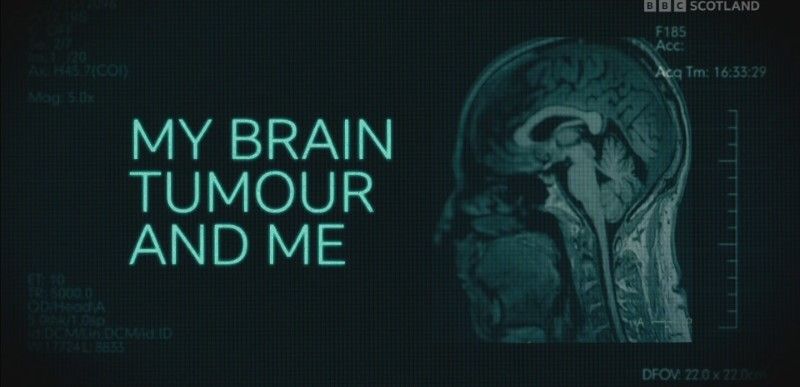

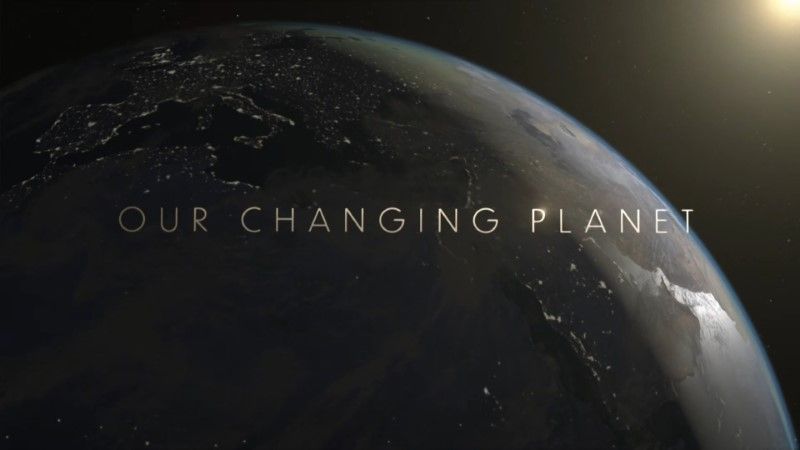
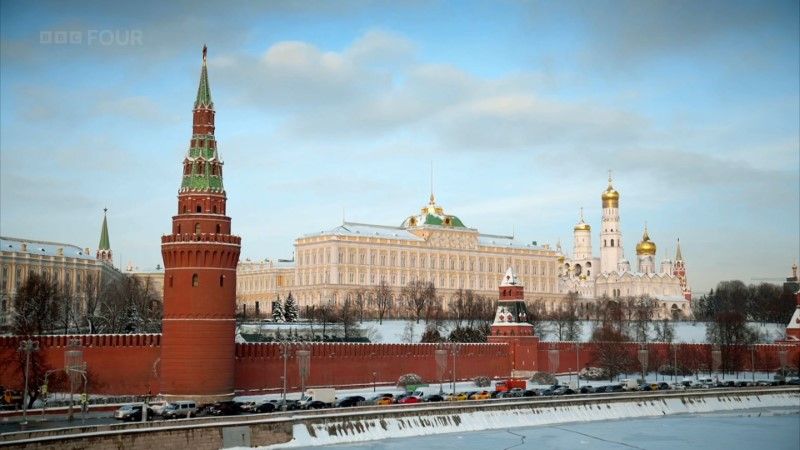
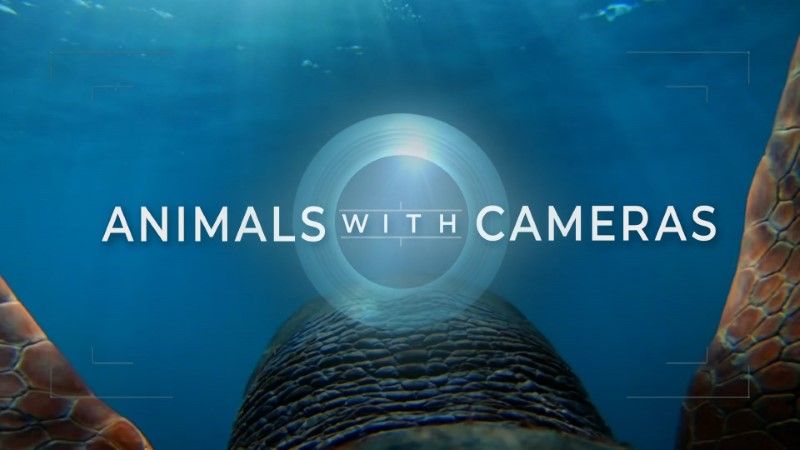
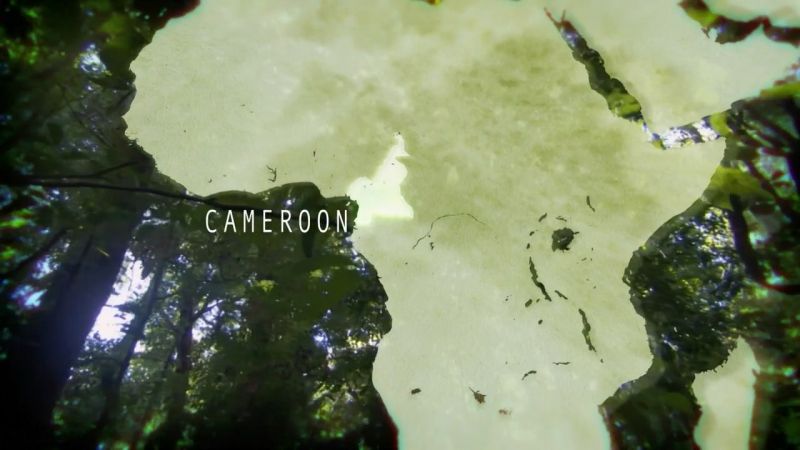
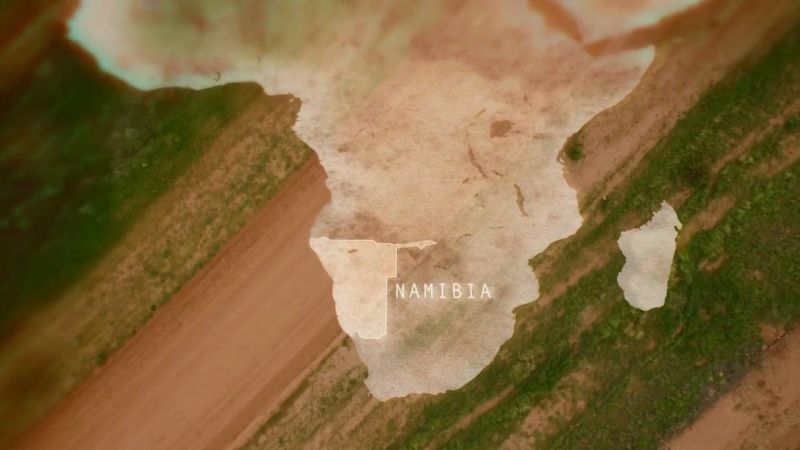

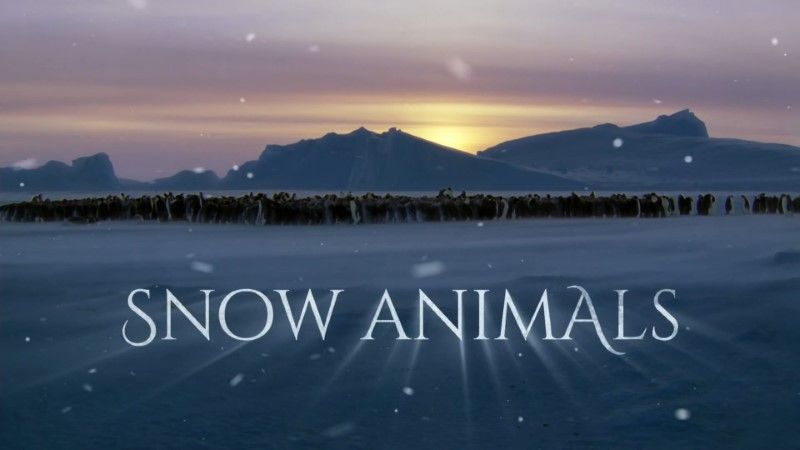
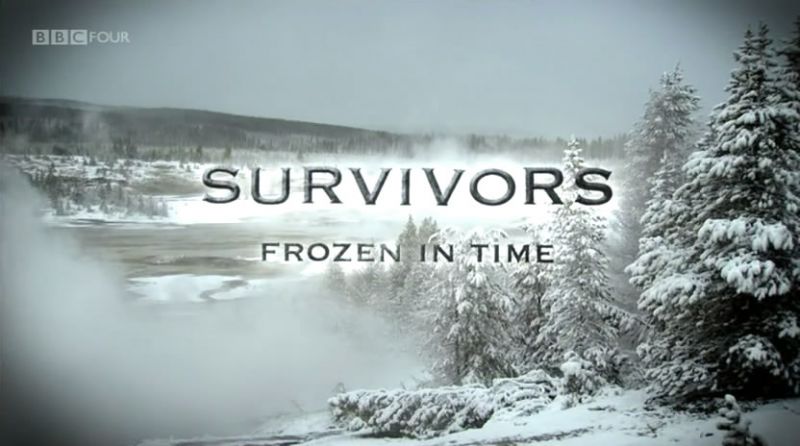


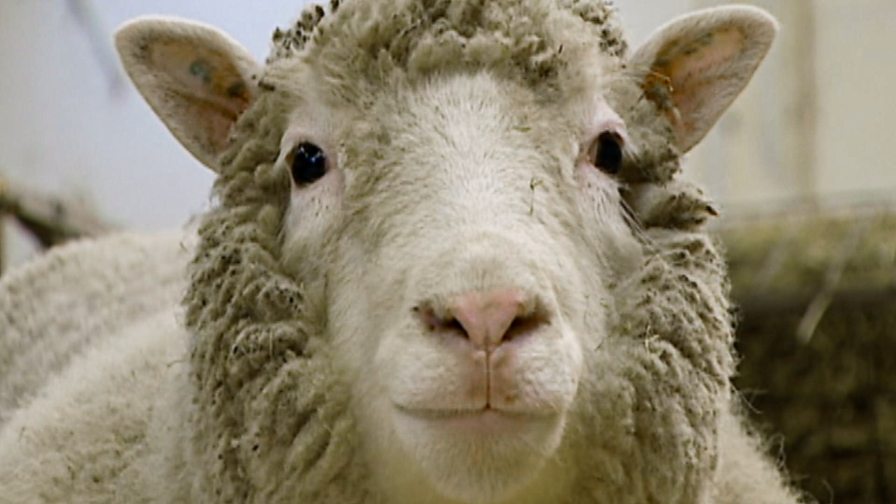
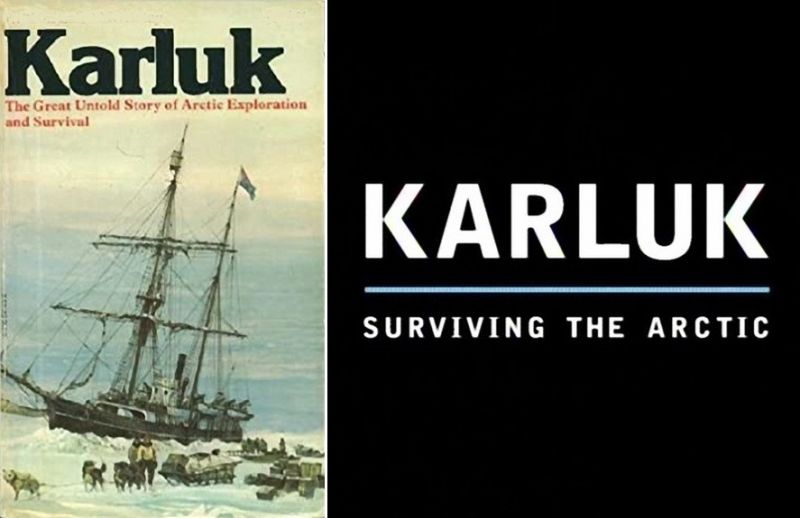
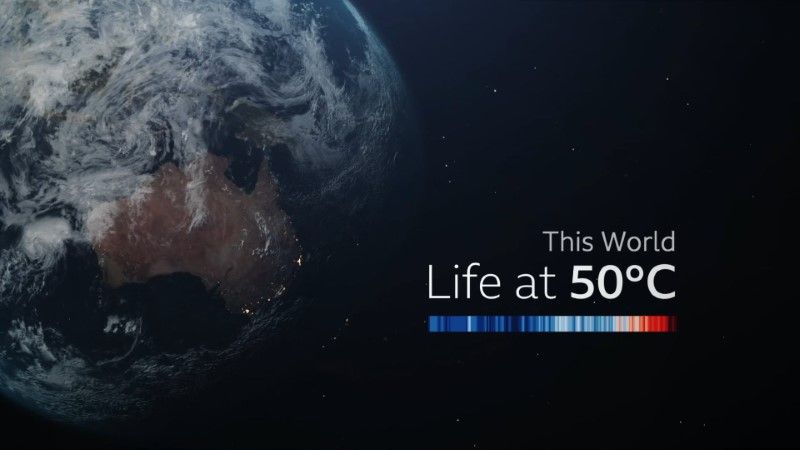
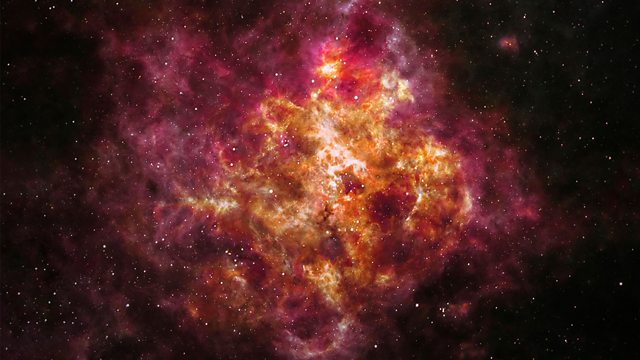
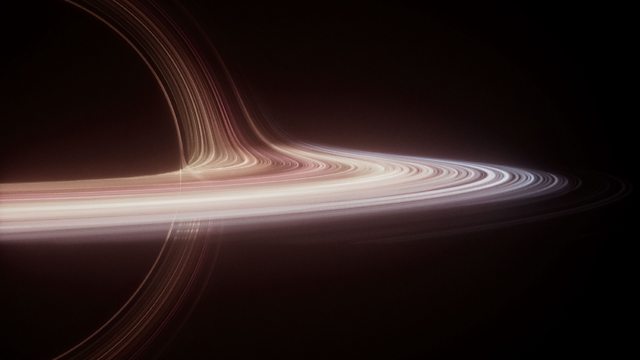
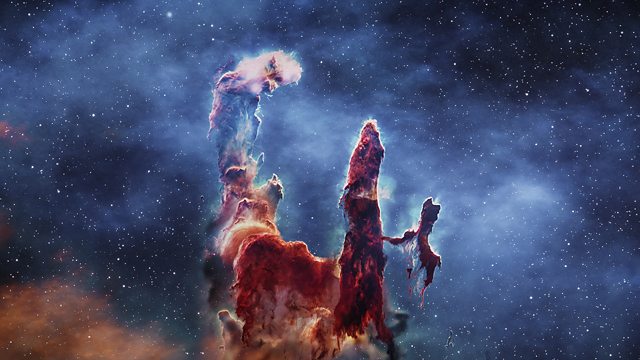
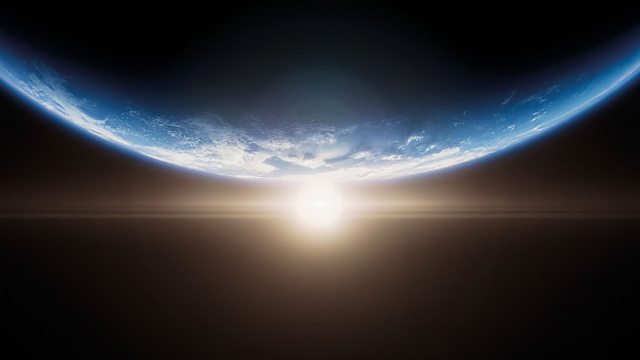
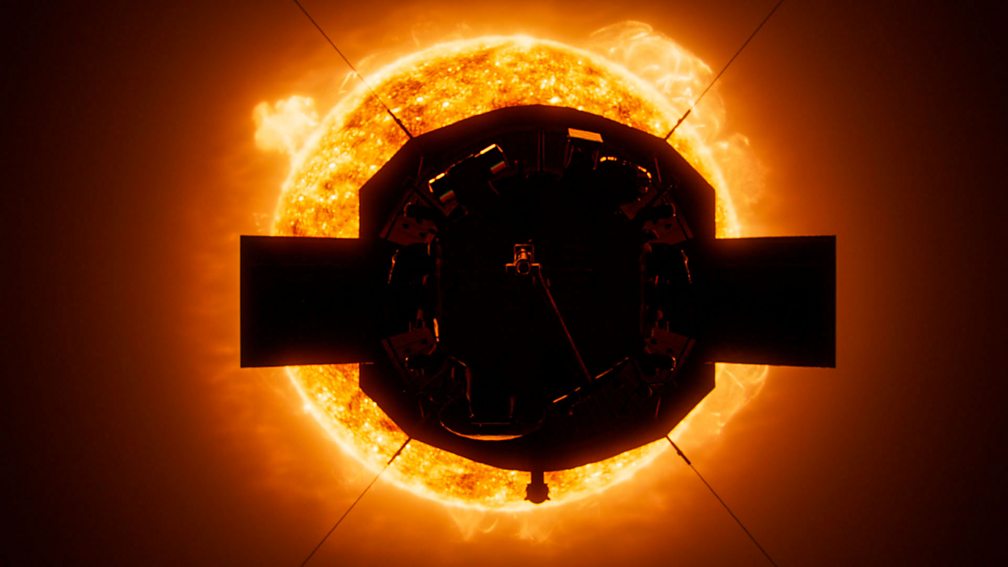
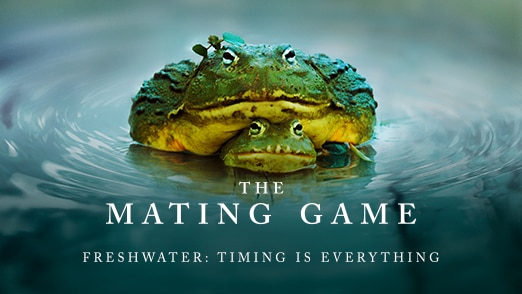
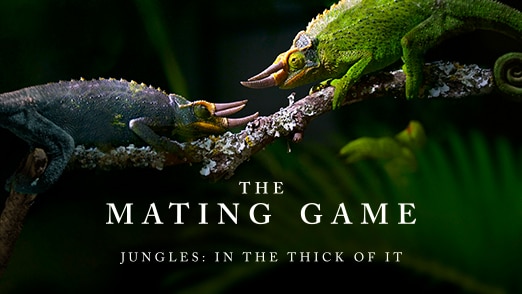
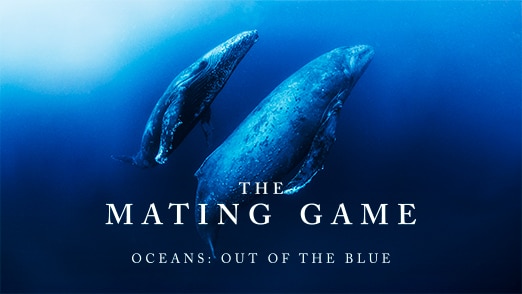
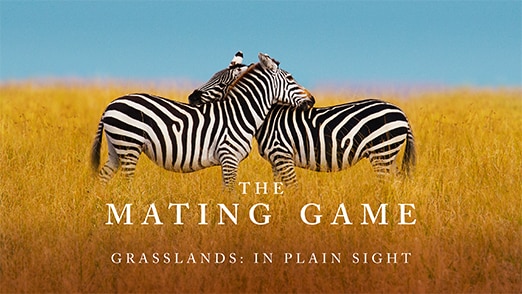
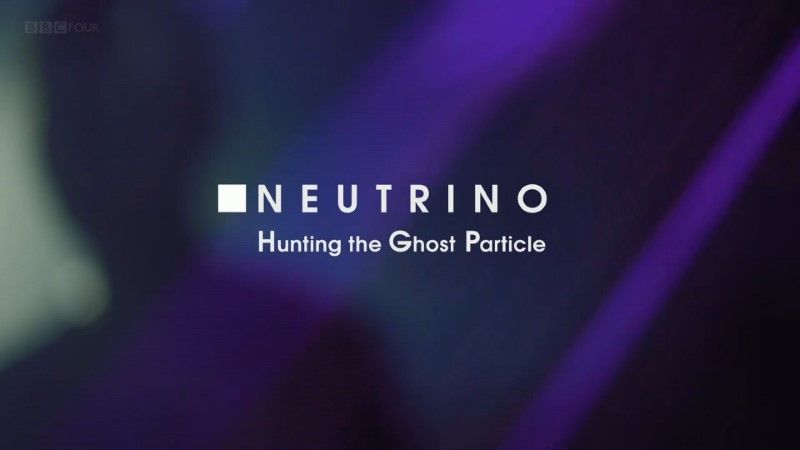
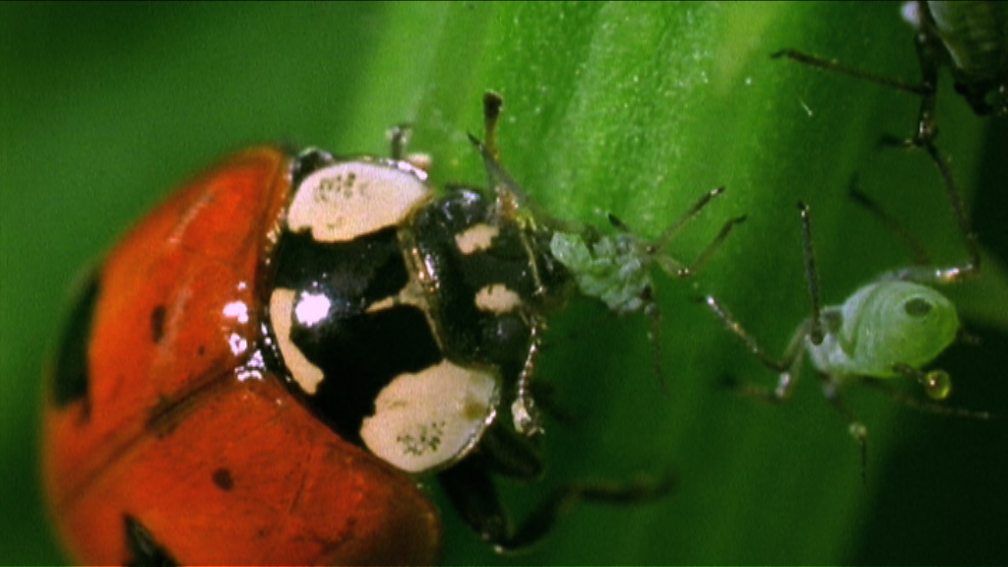
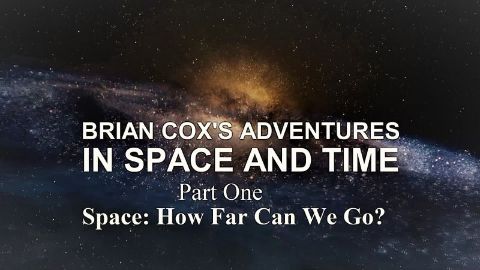

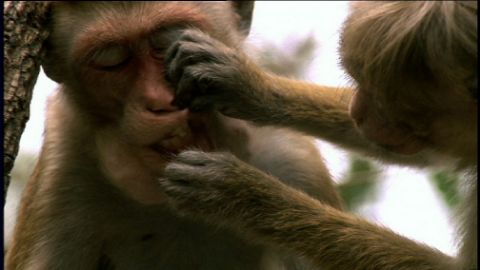
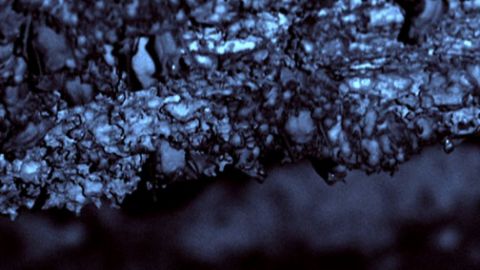
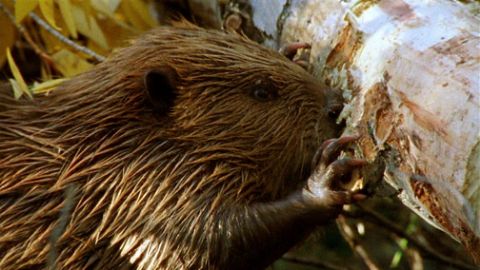

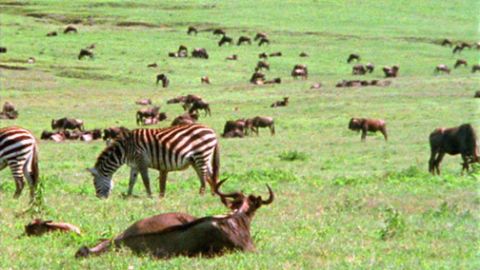
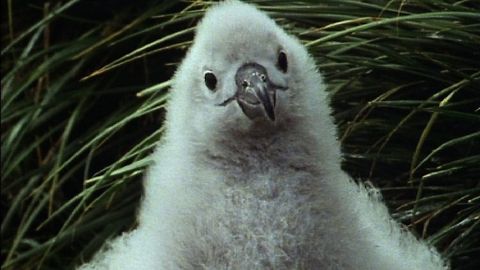
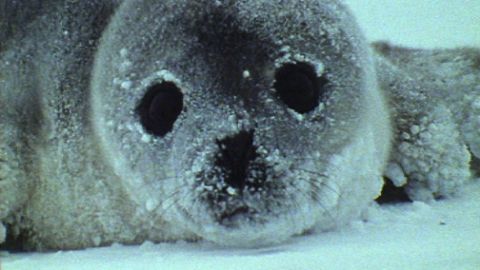

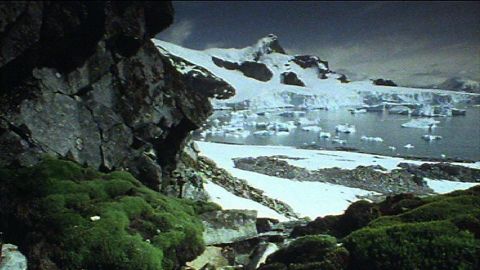
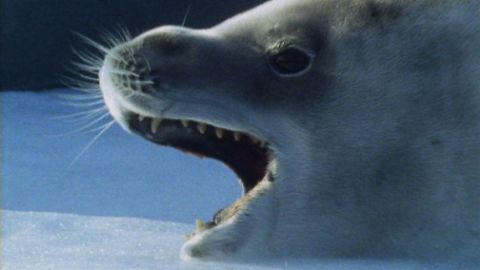
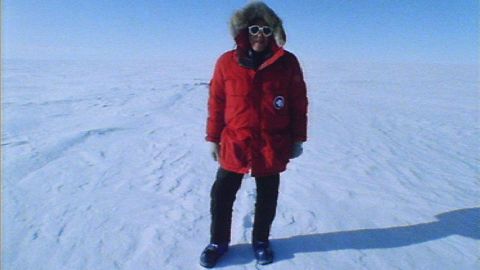
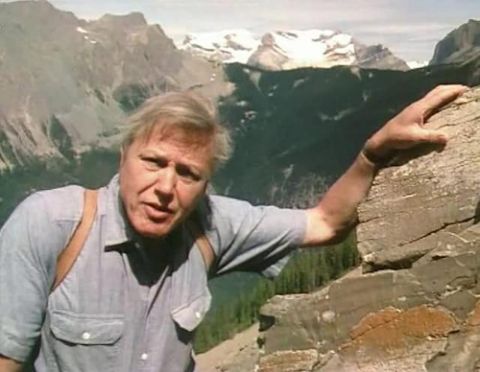
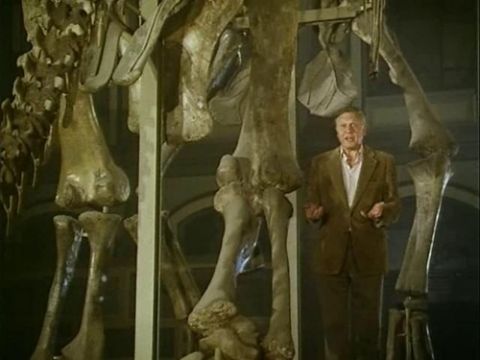
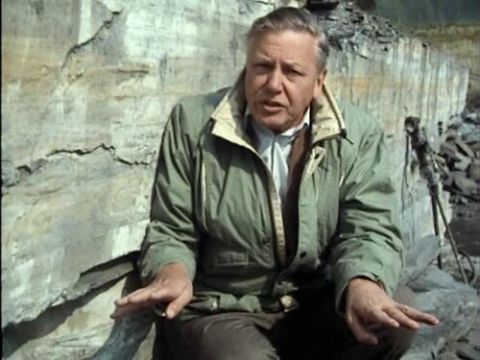
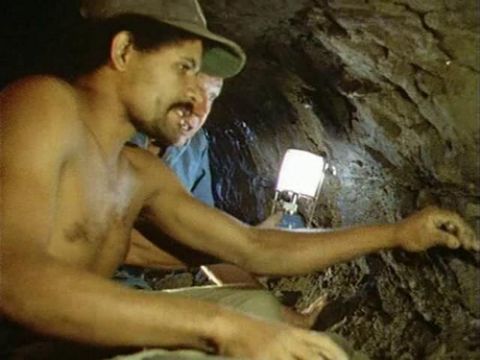

![Deep Trouble [Extra]](https://ihavenotv.com/img/12215.jpg)
![Making Waves [Making of]](https://ihavenotv.com/img/12214.jpg)



